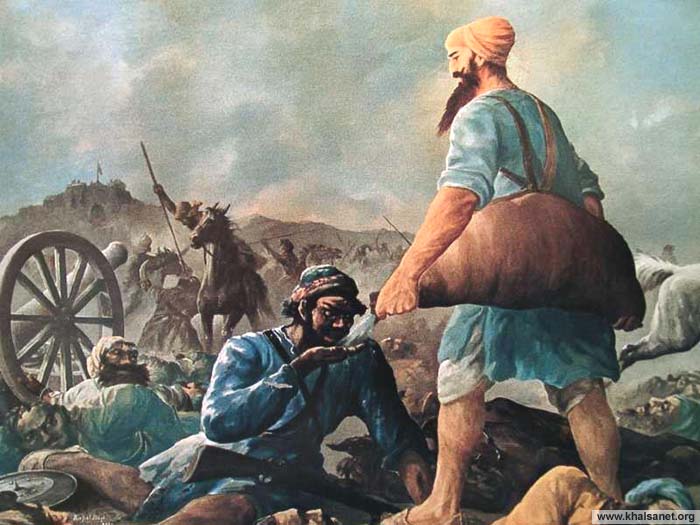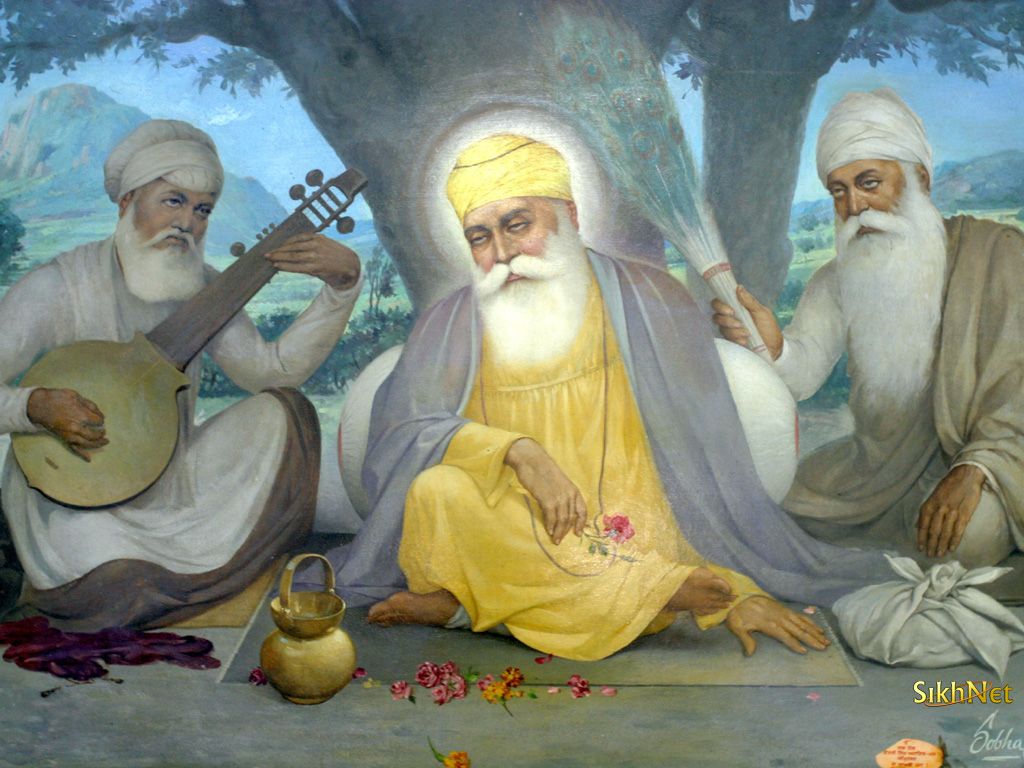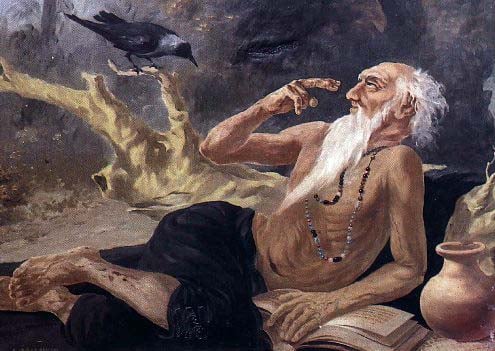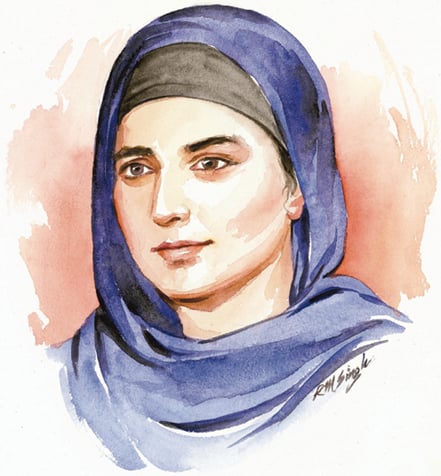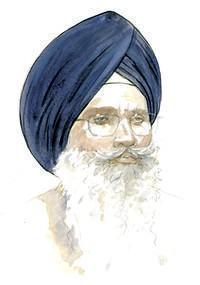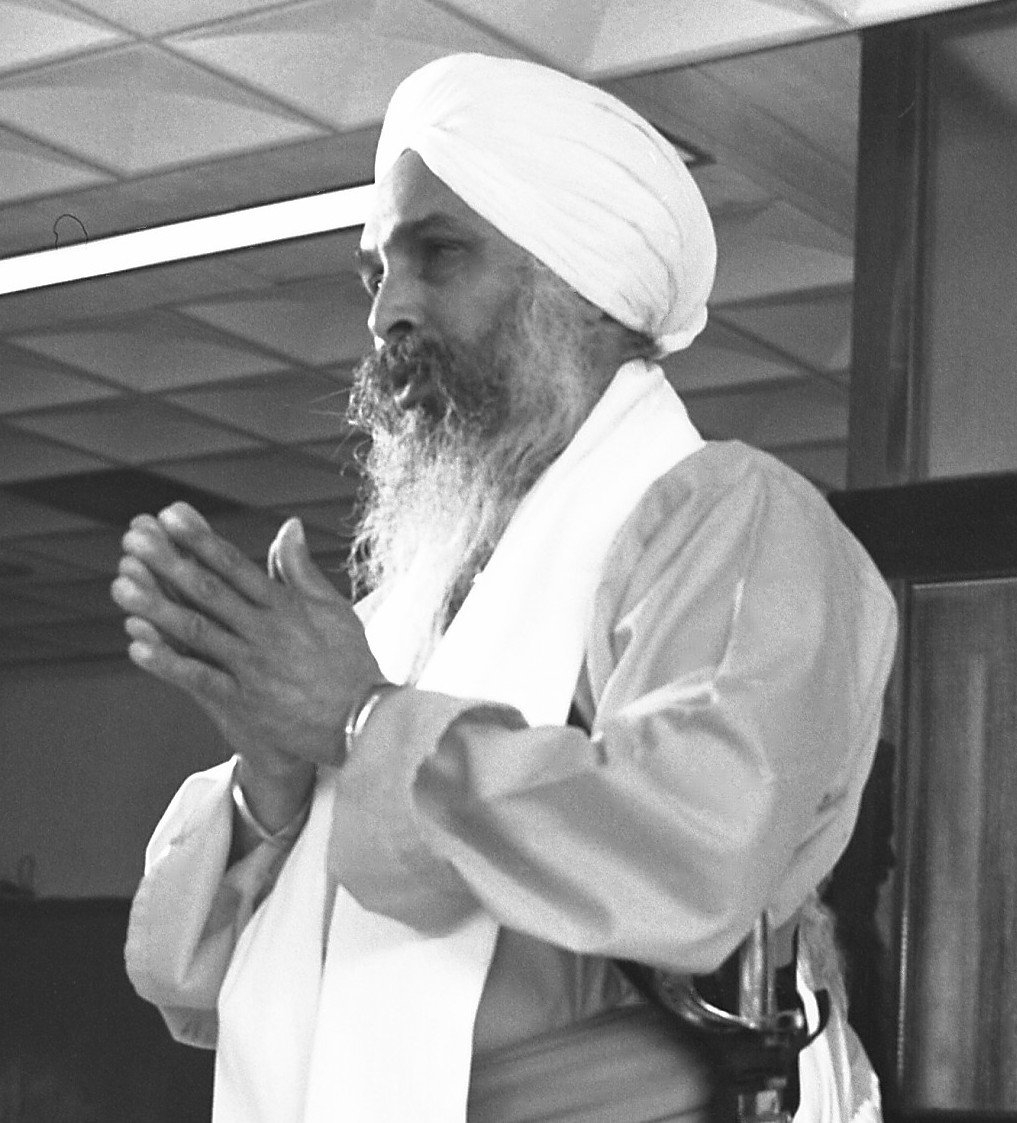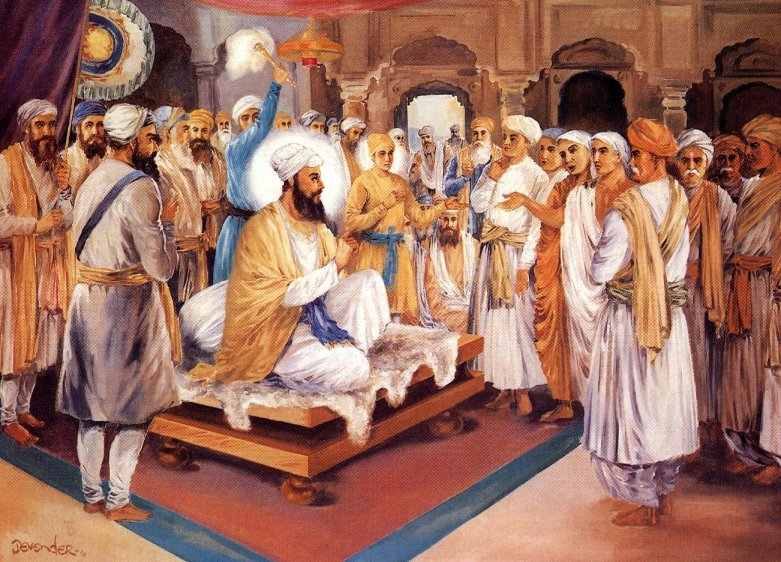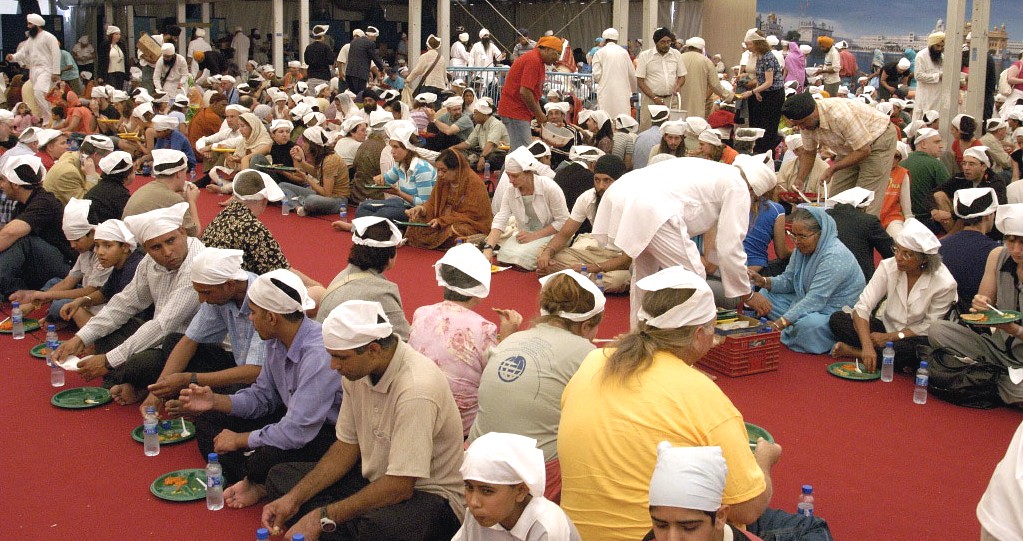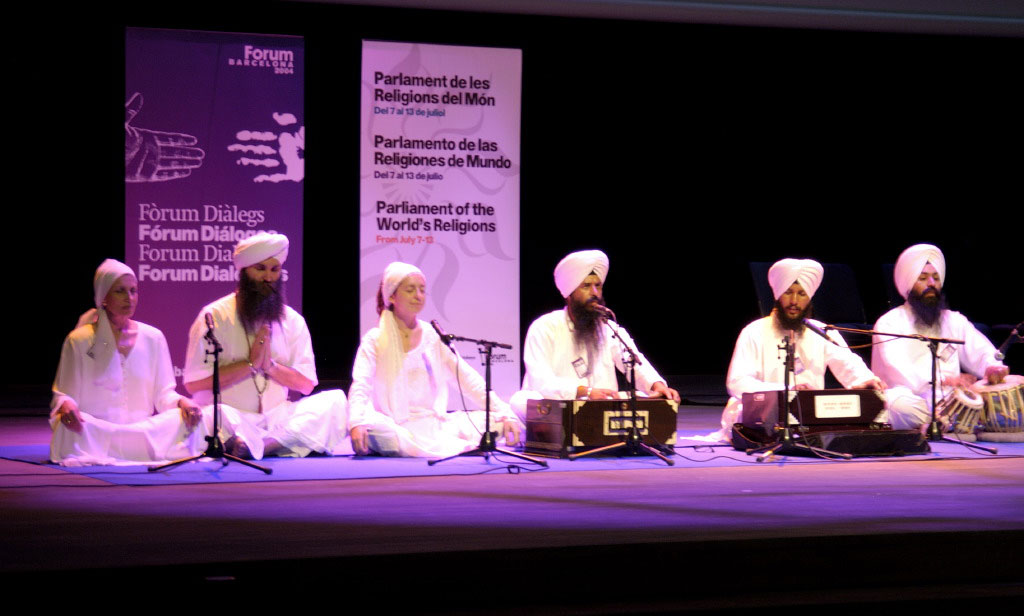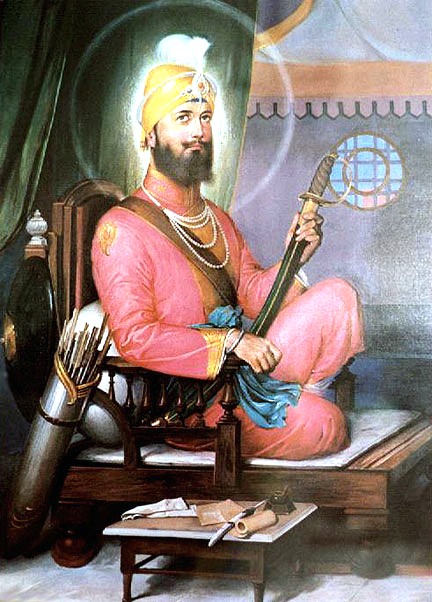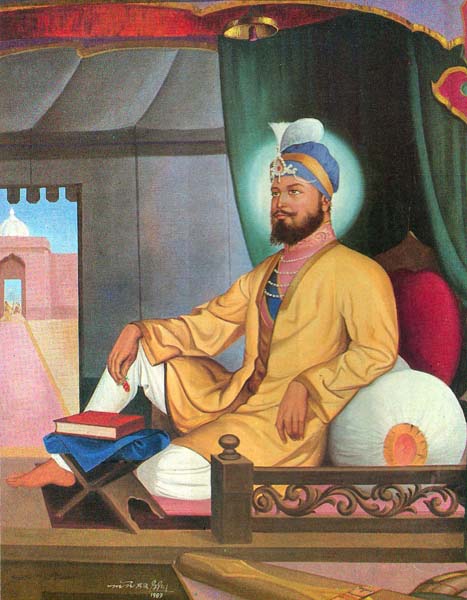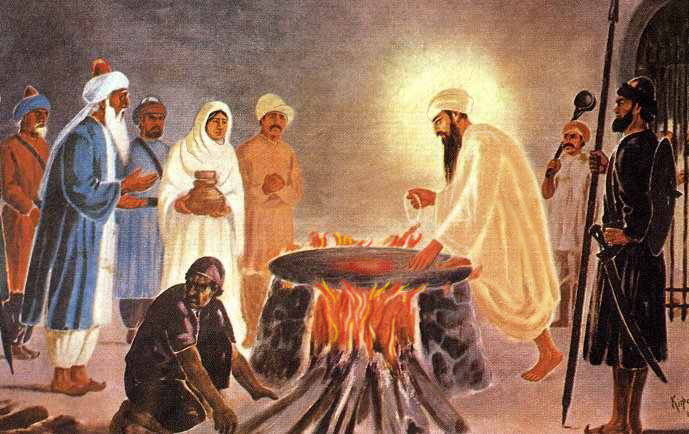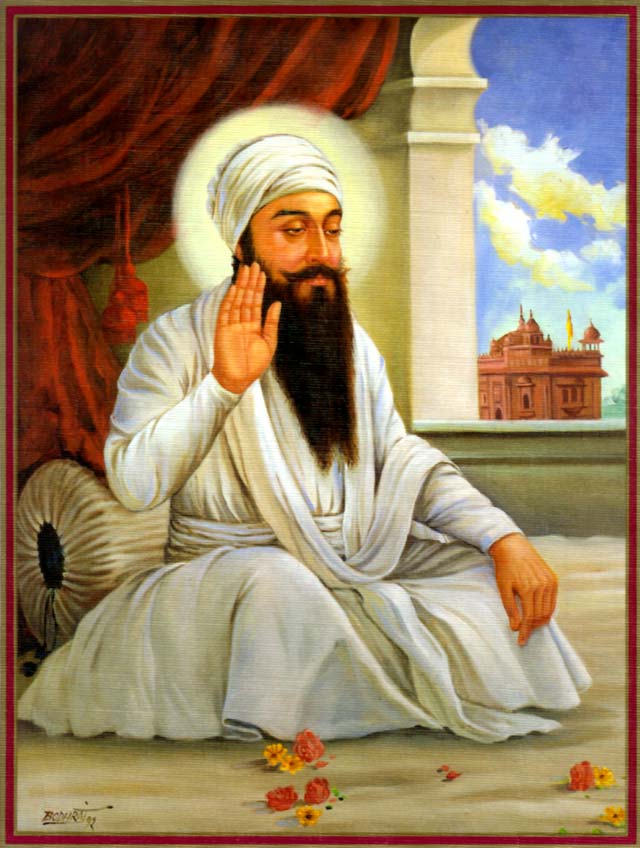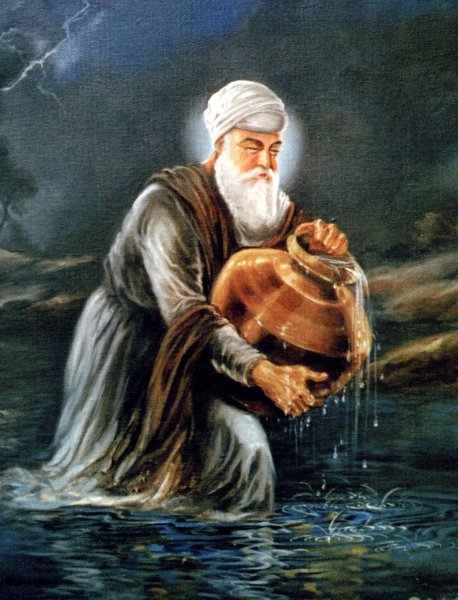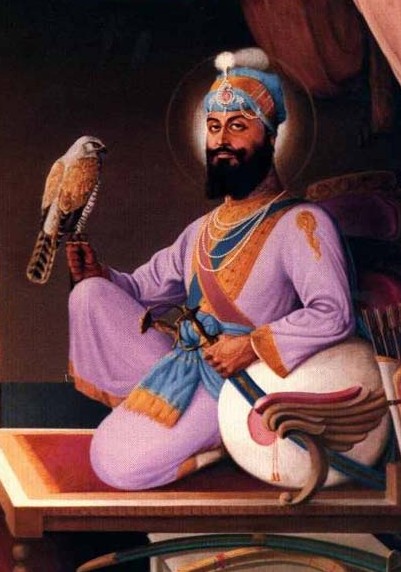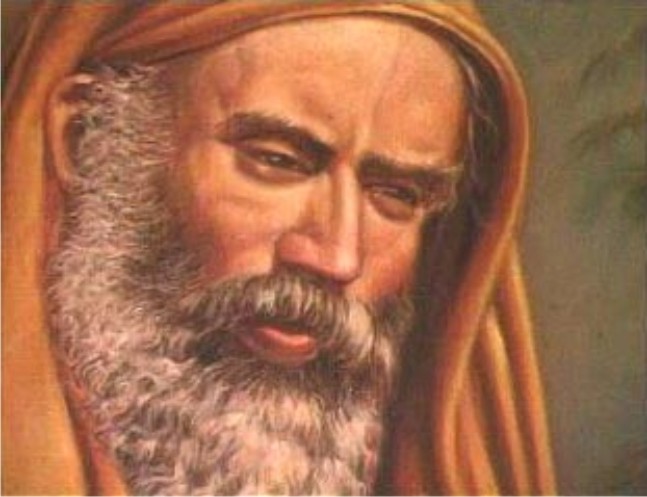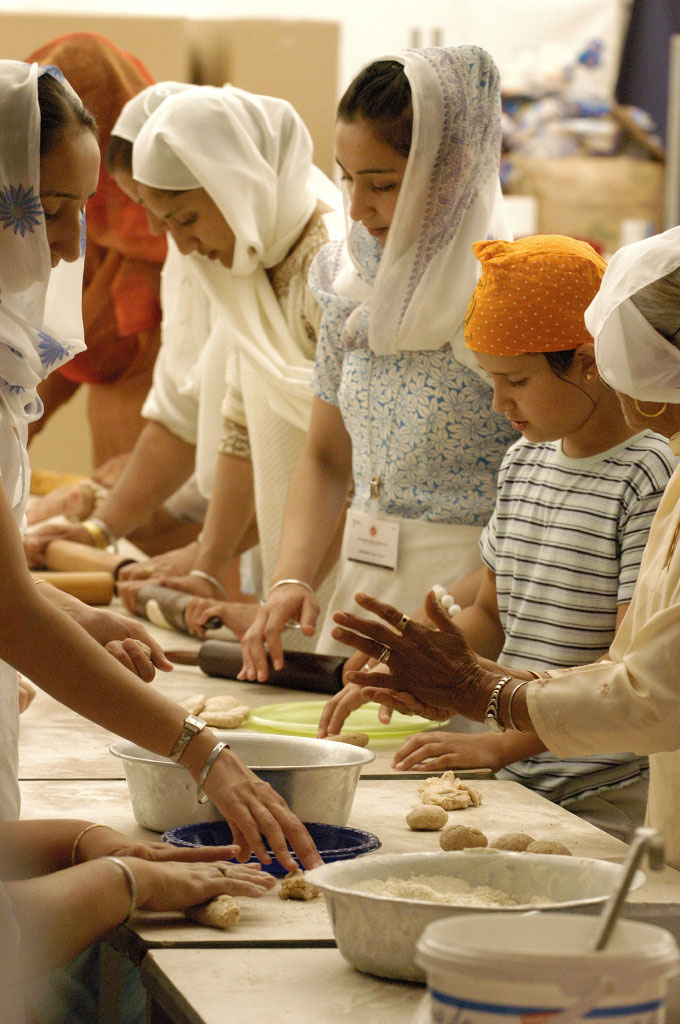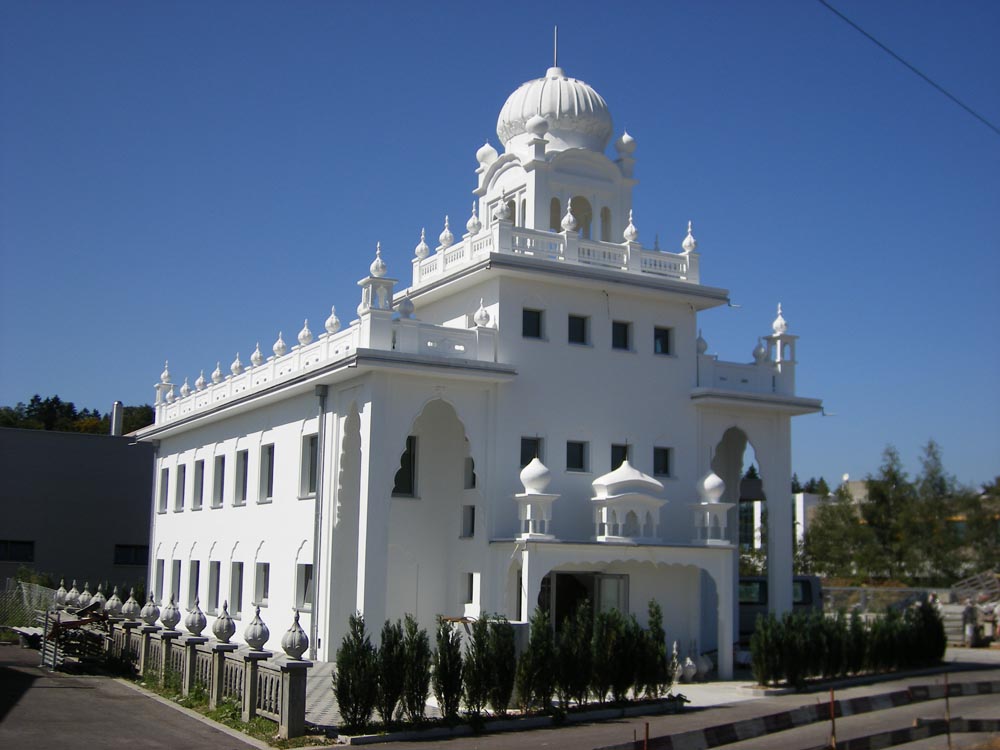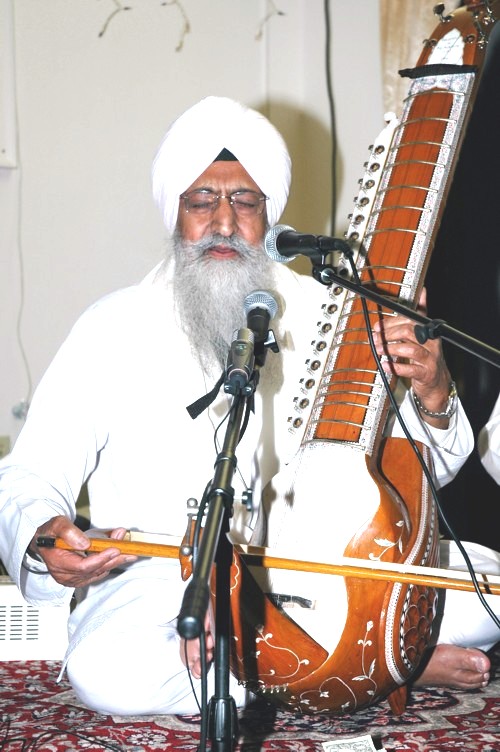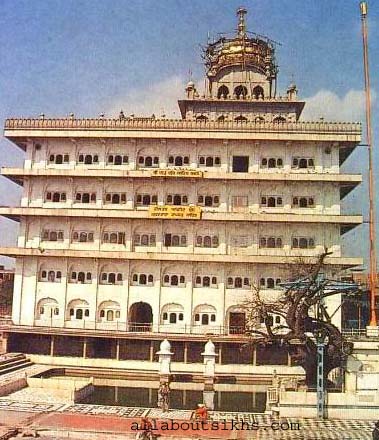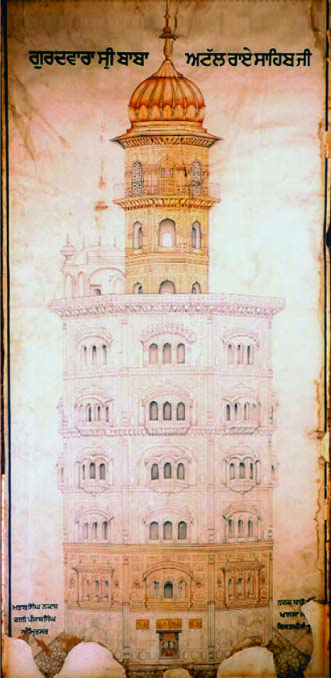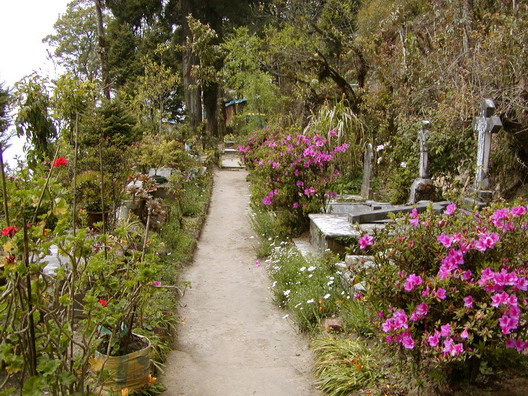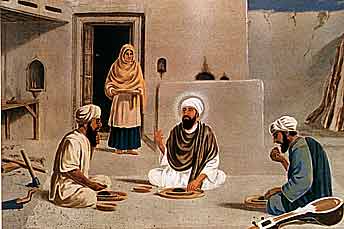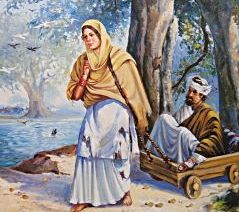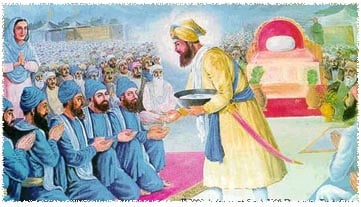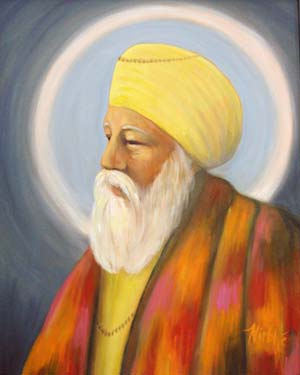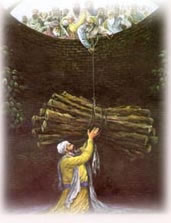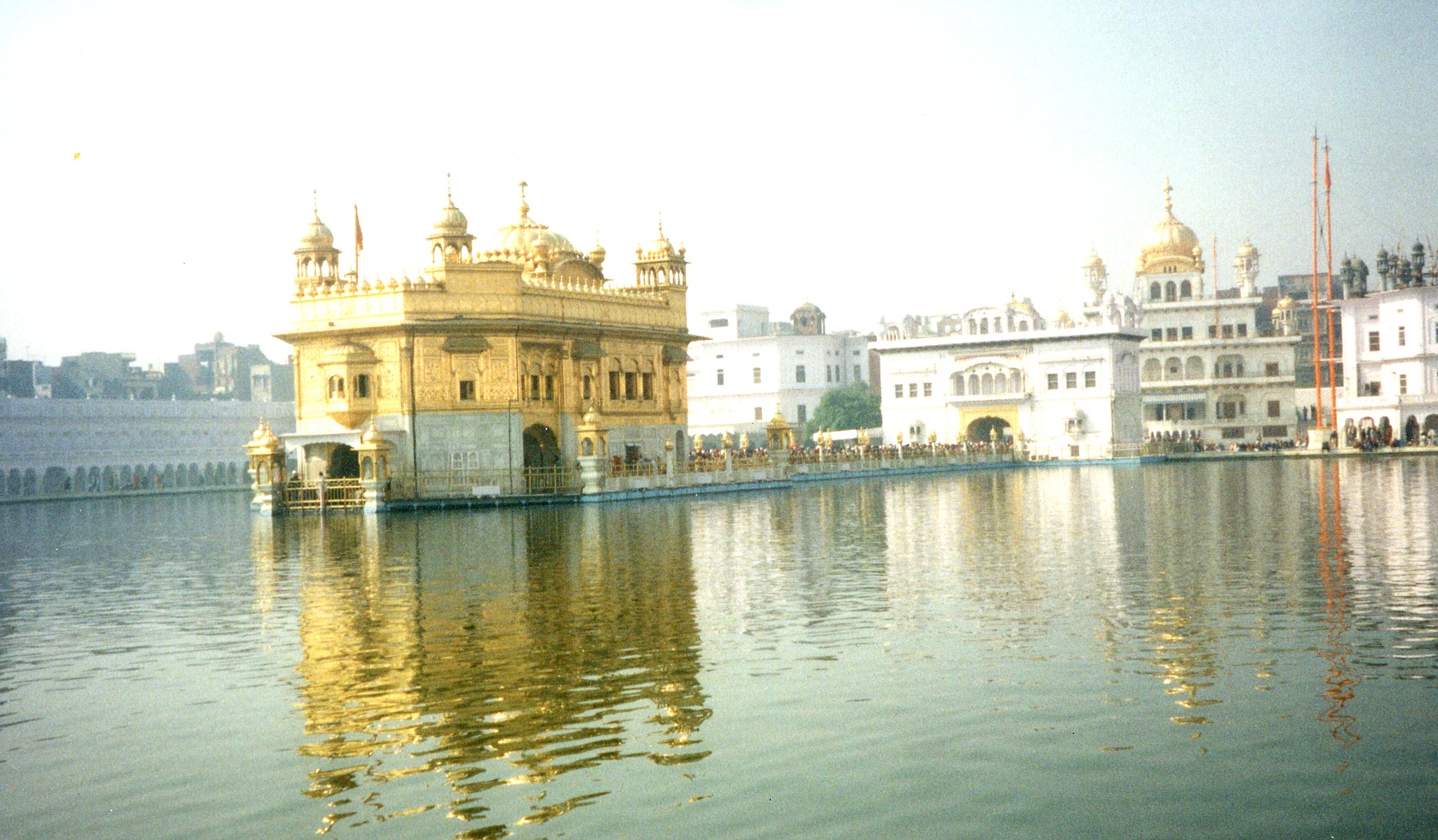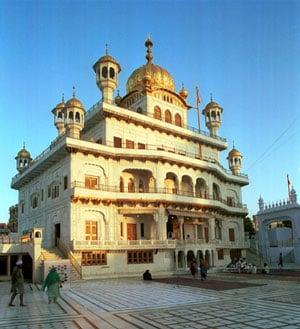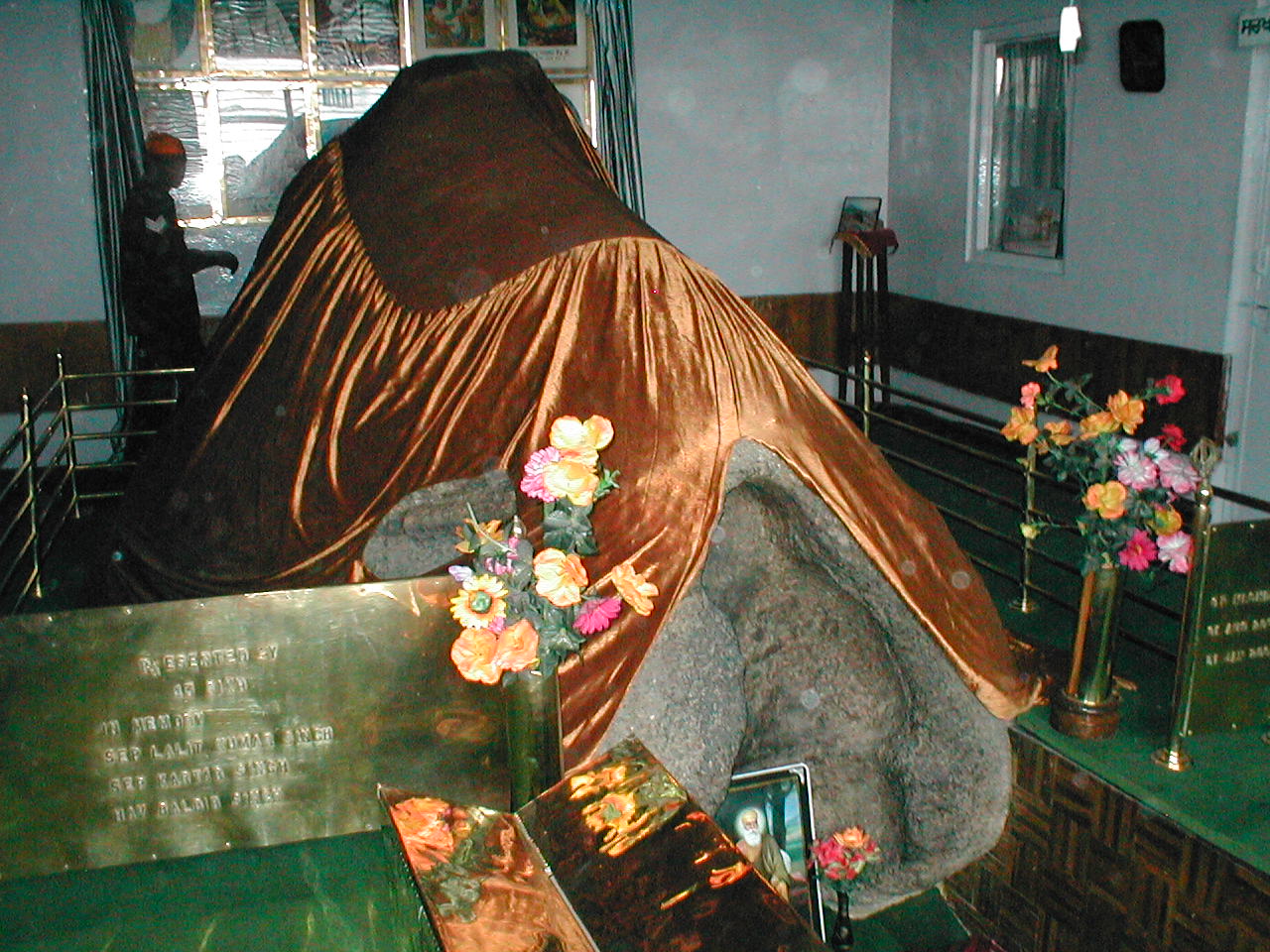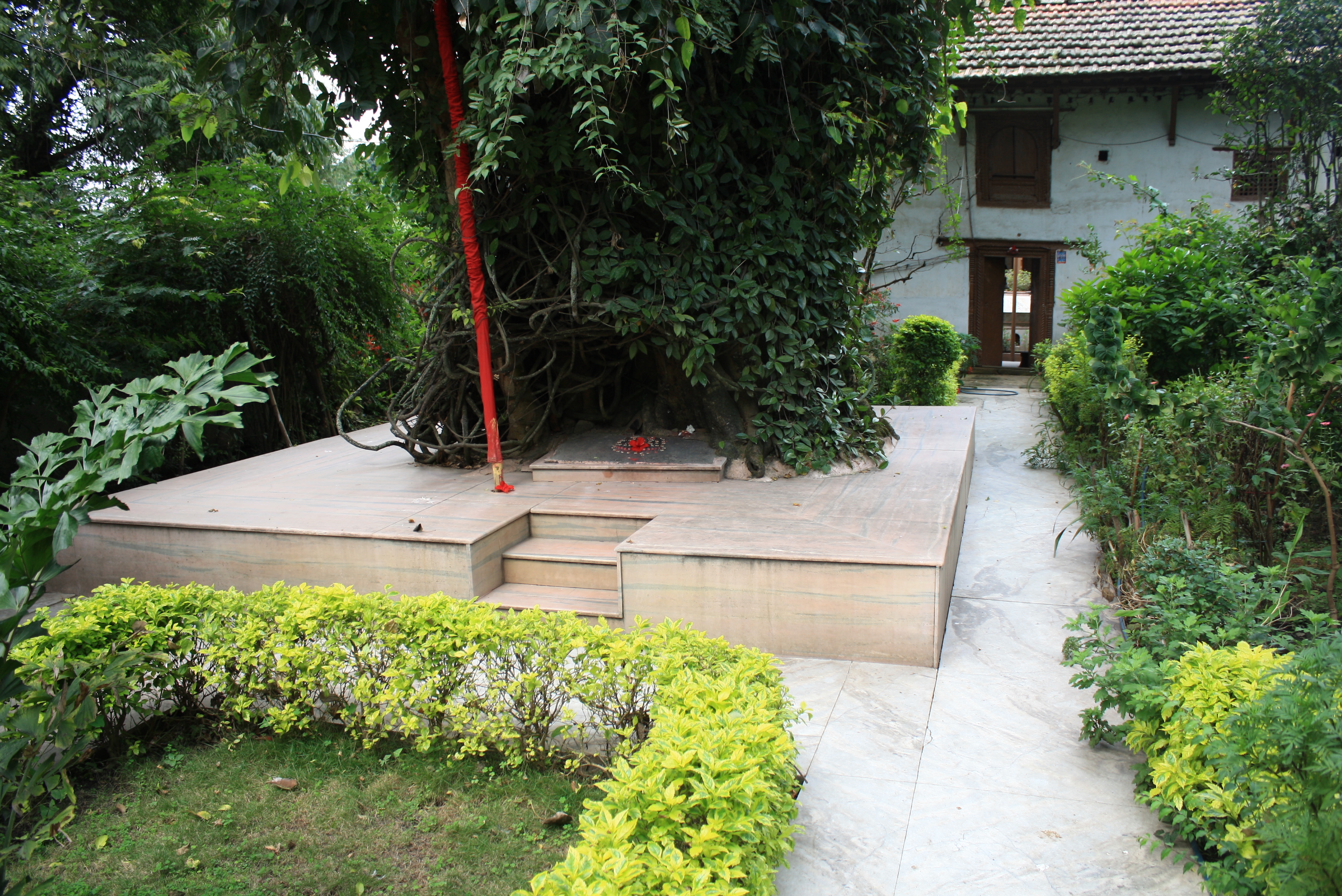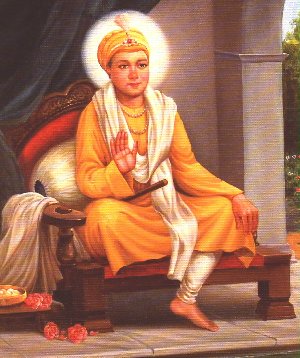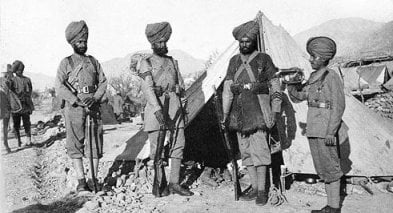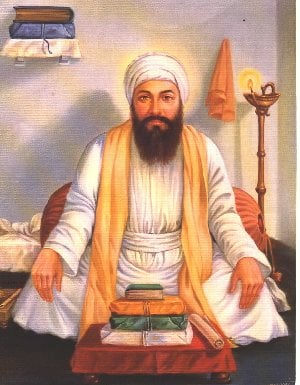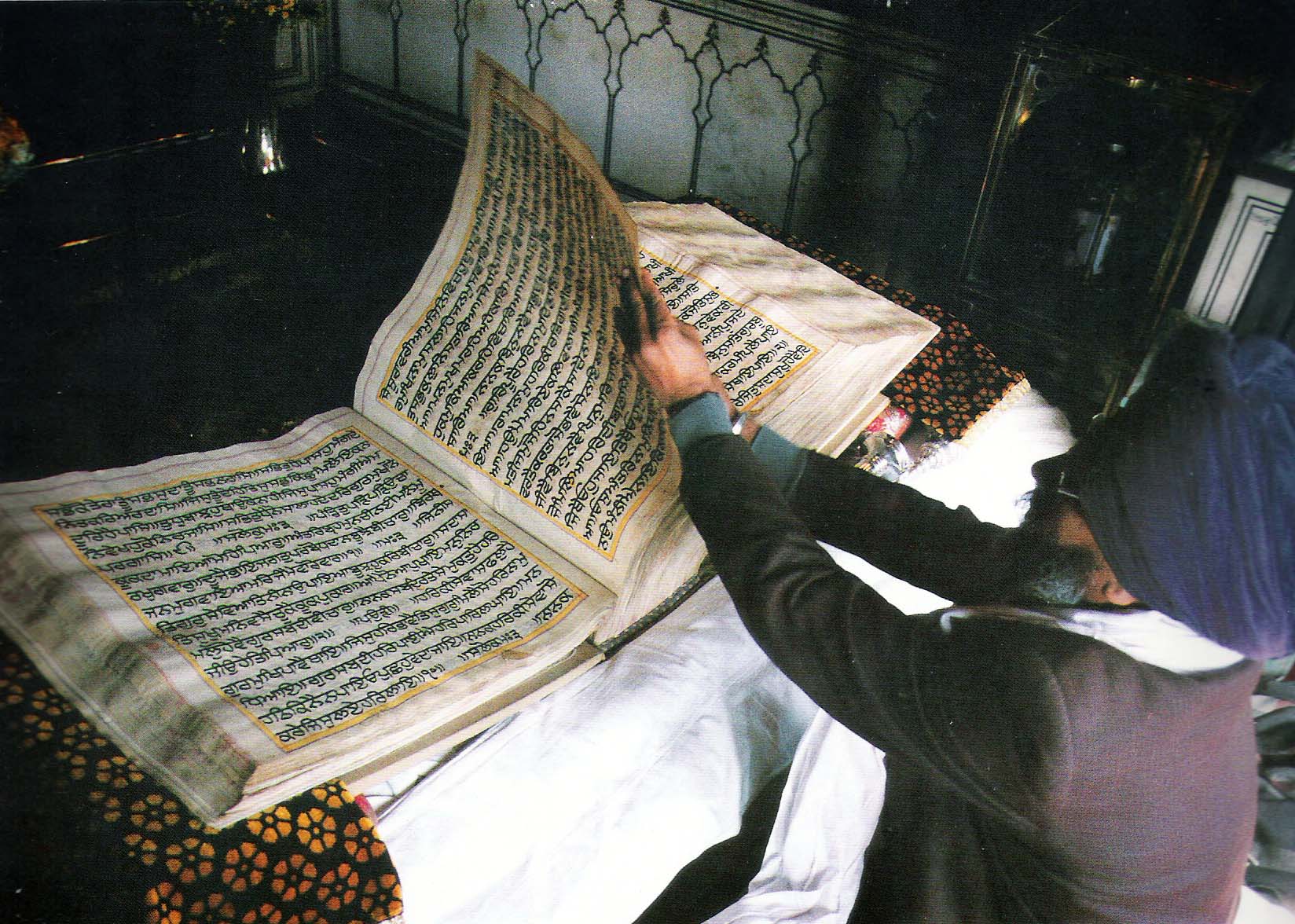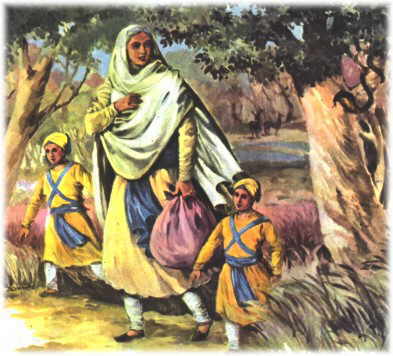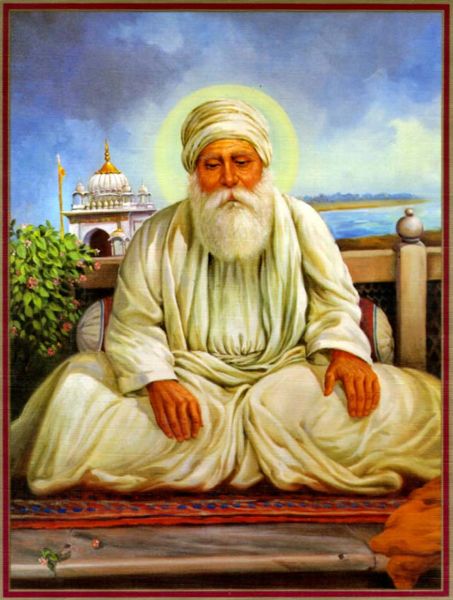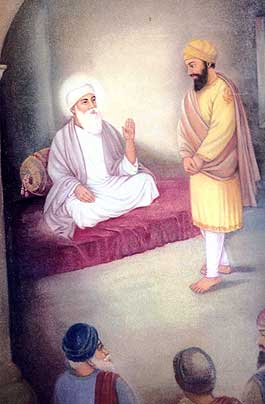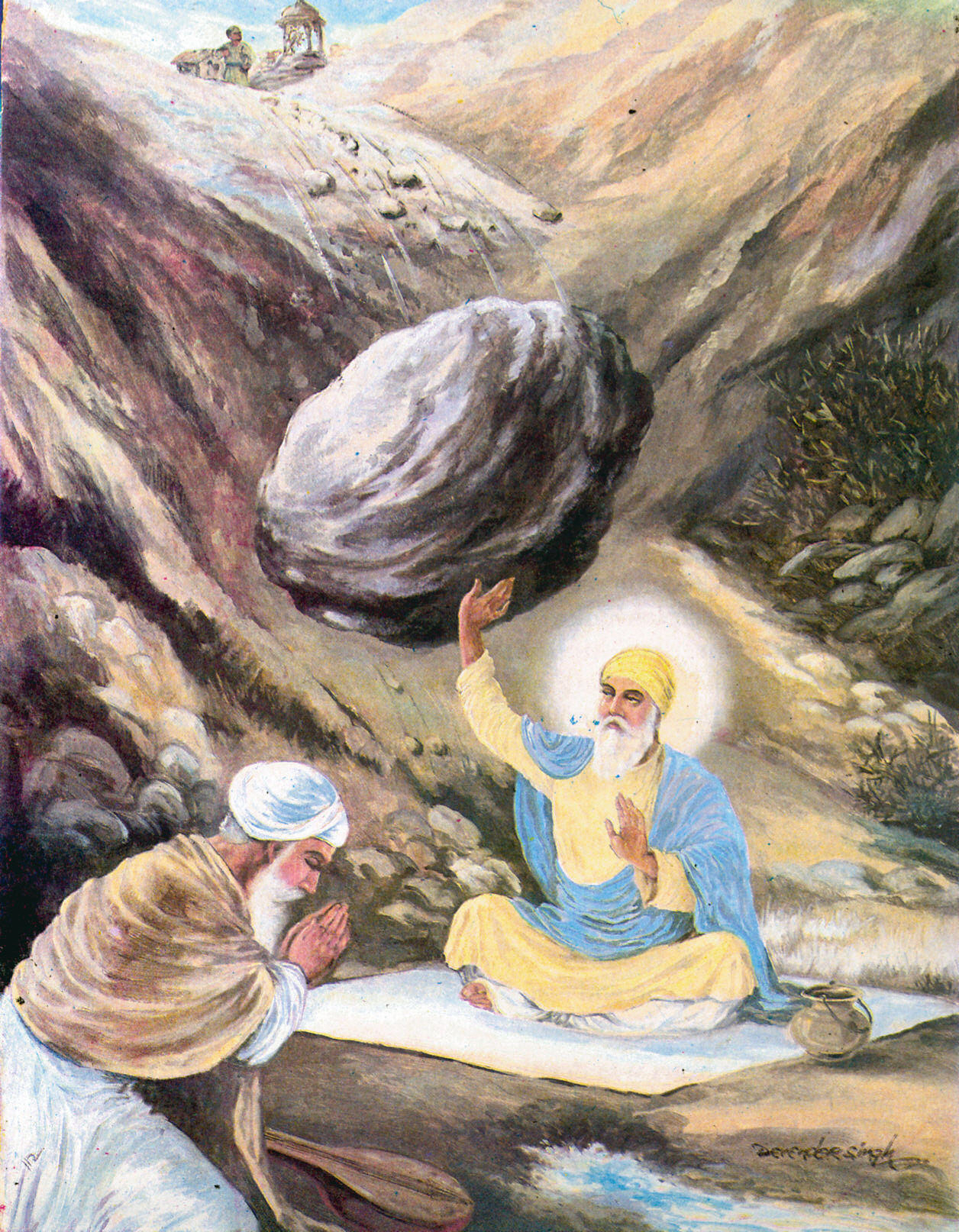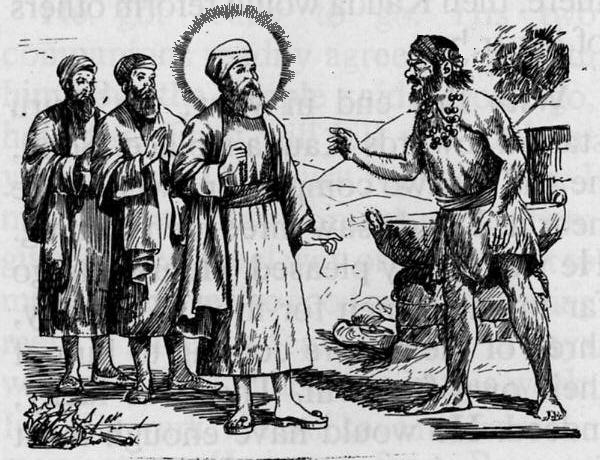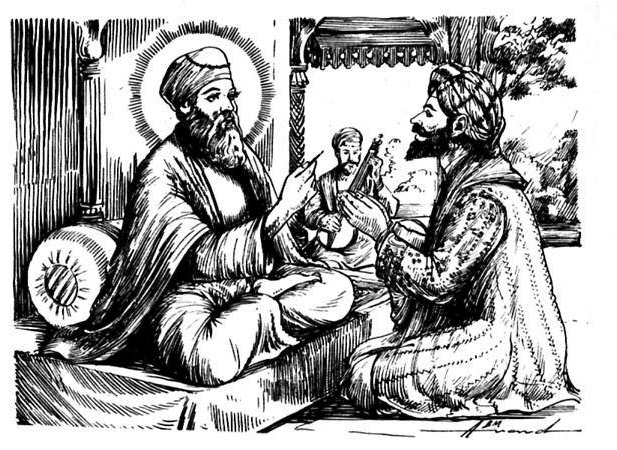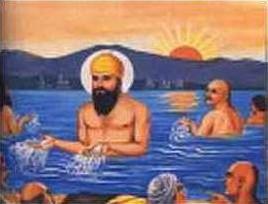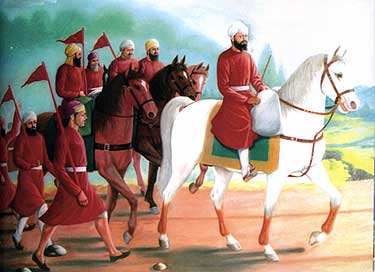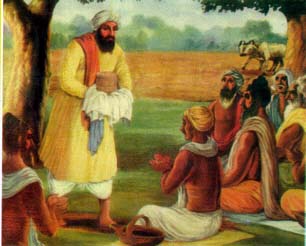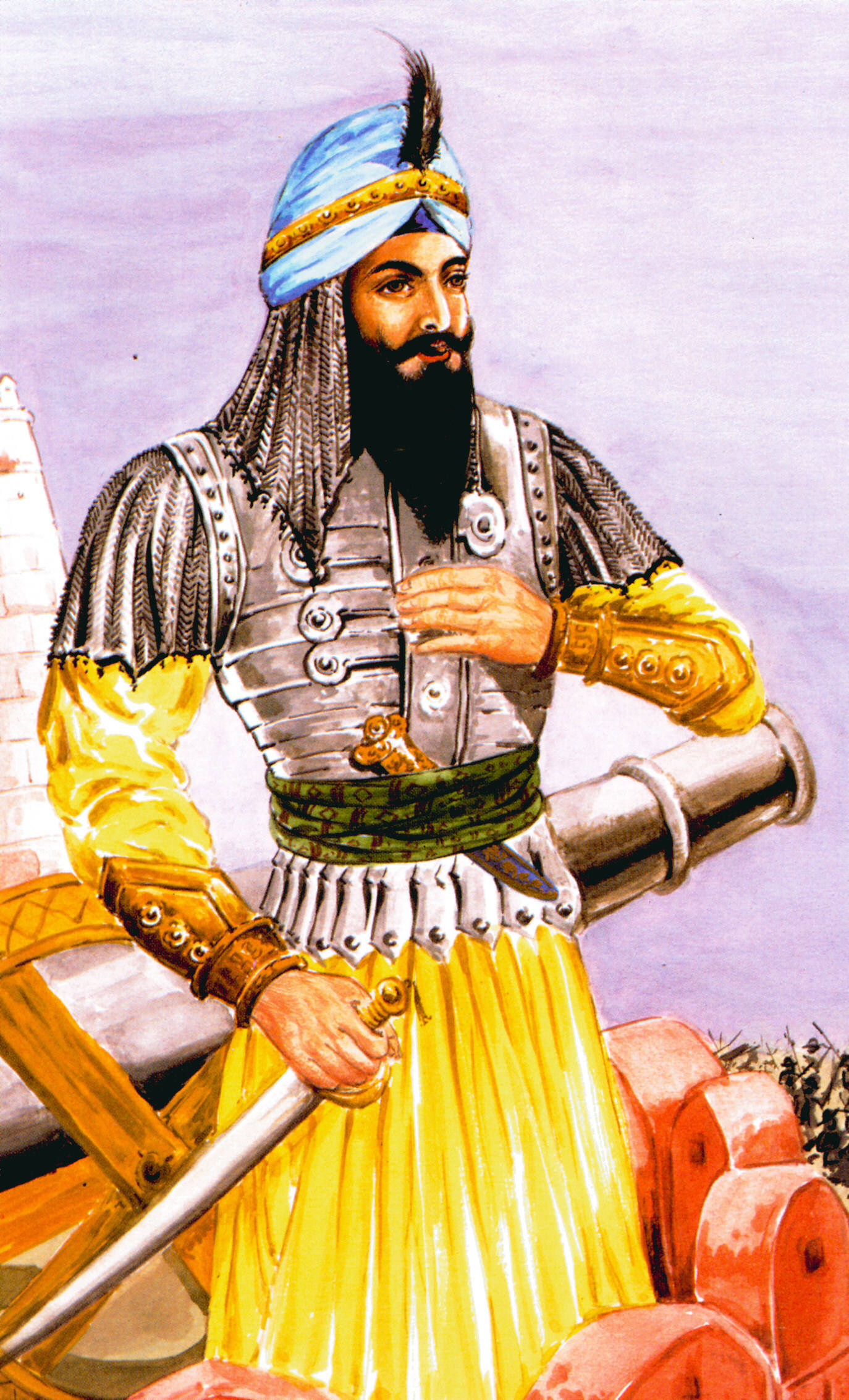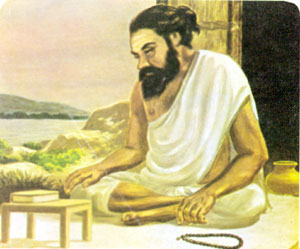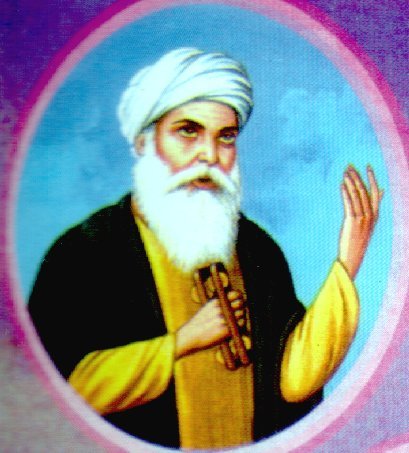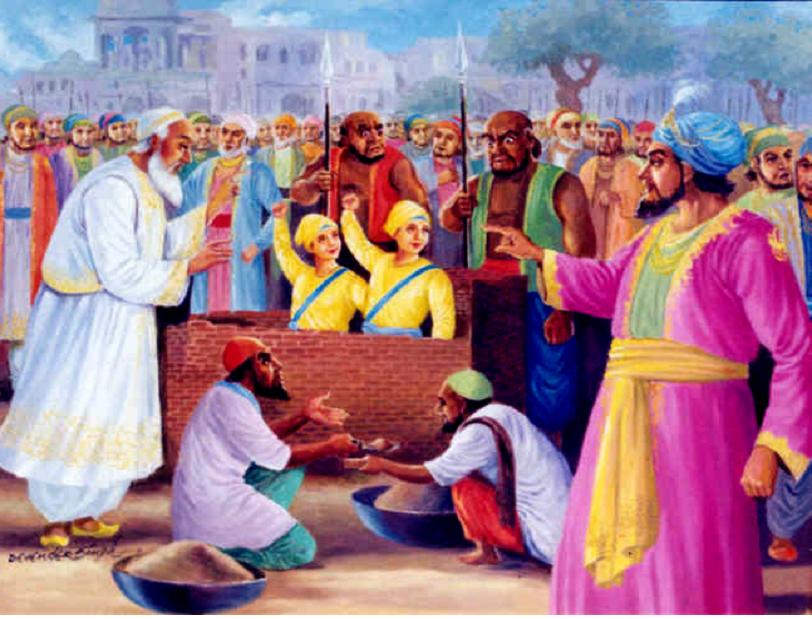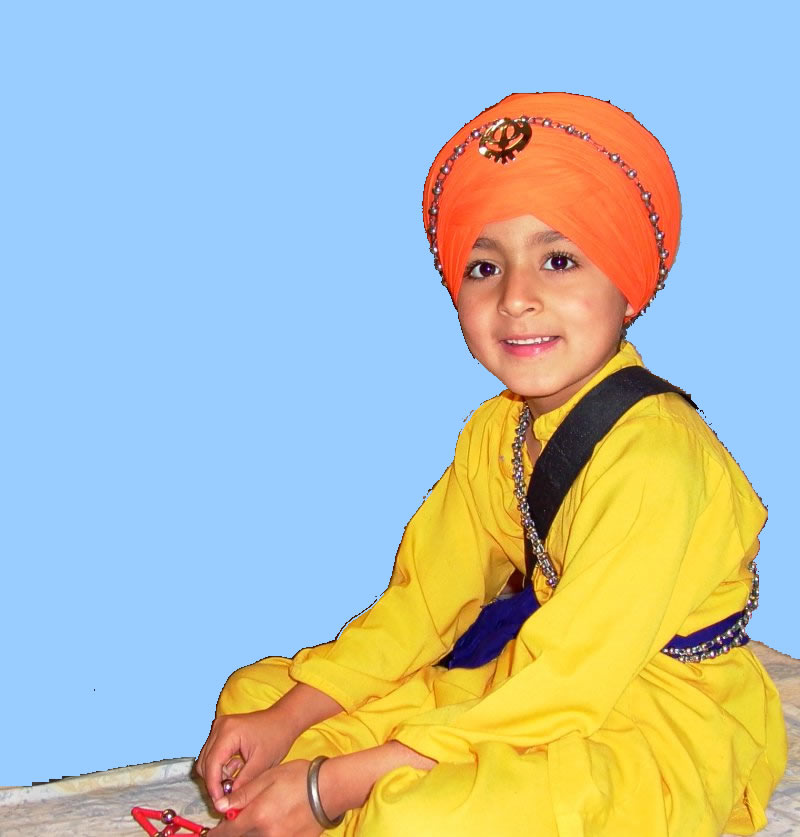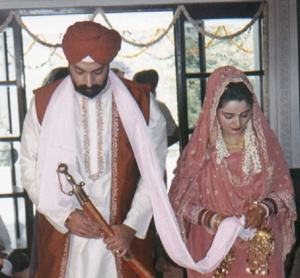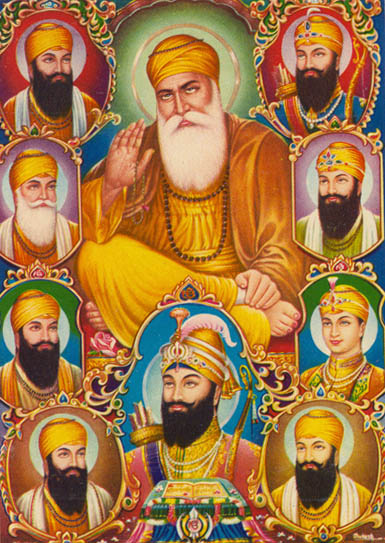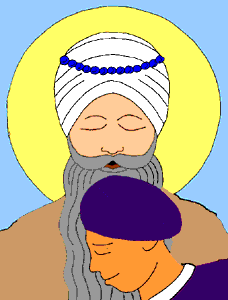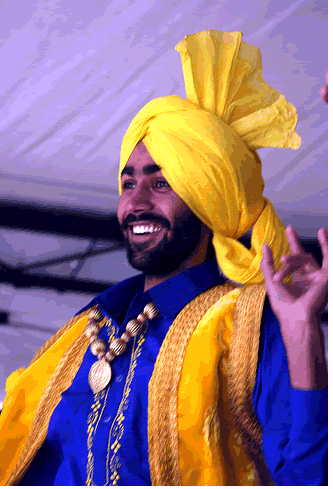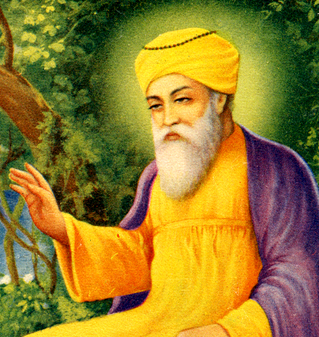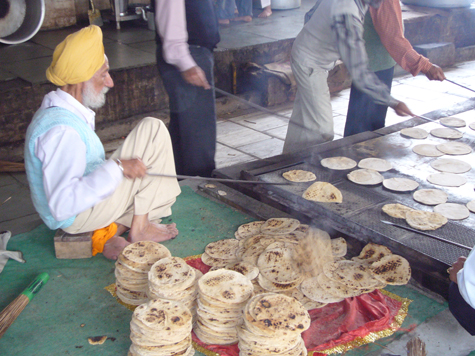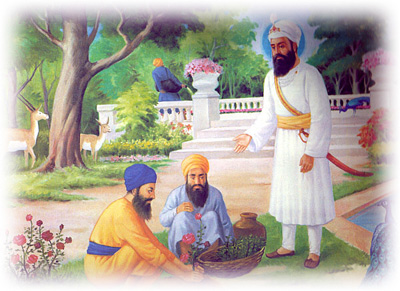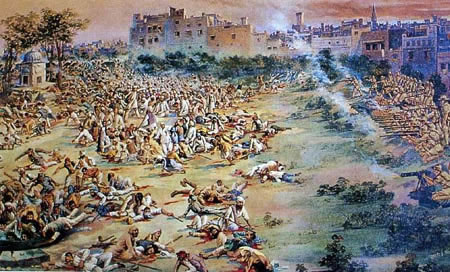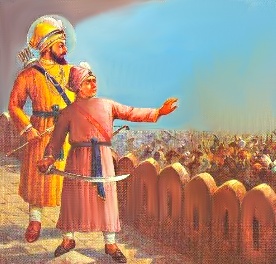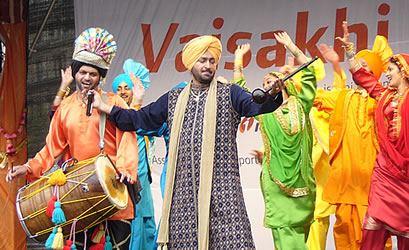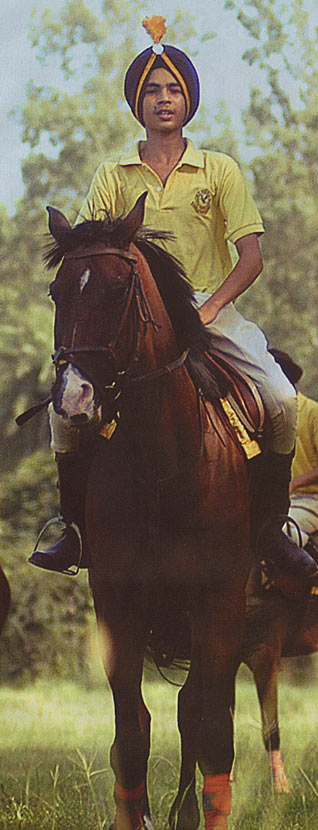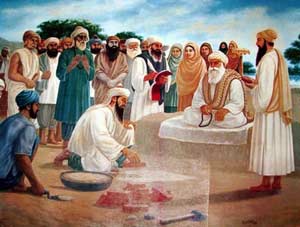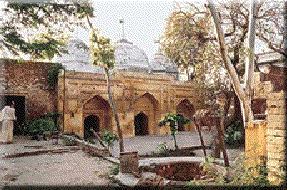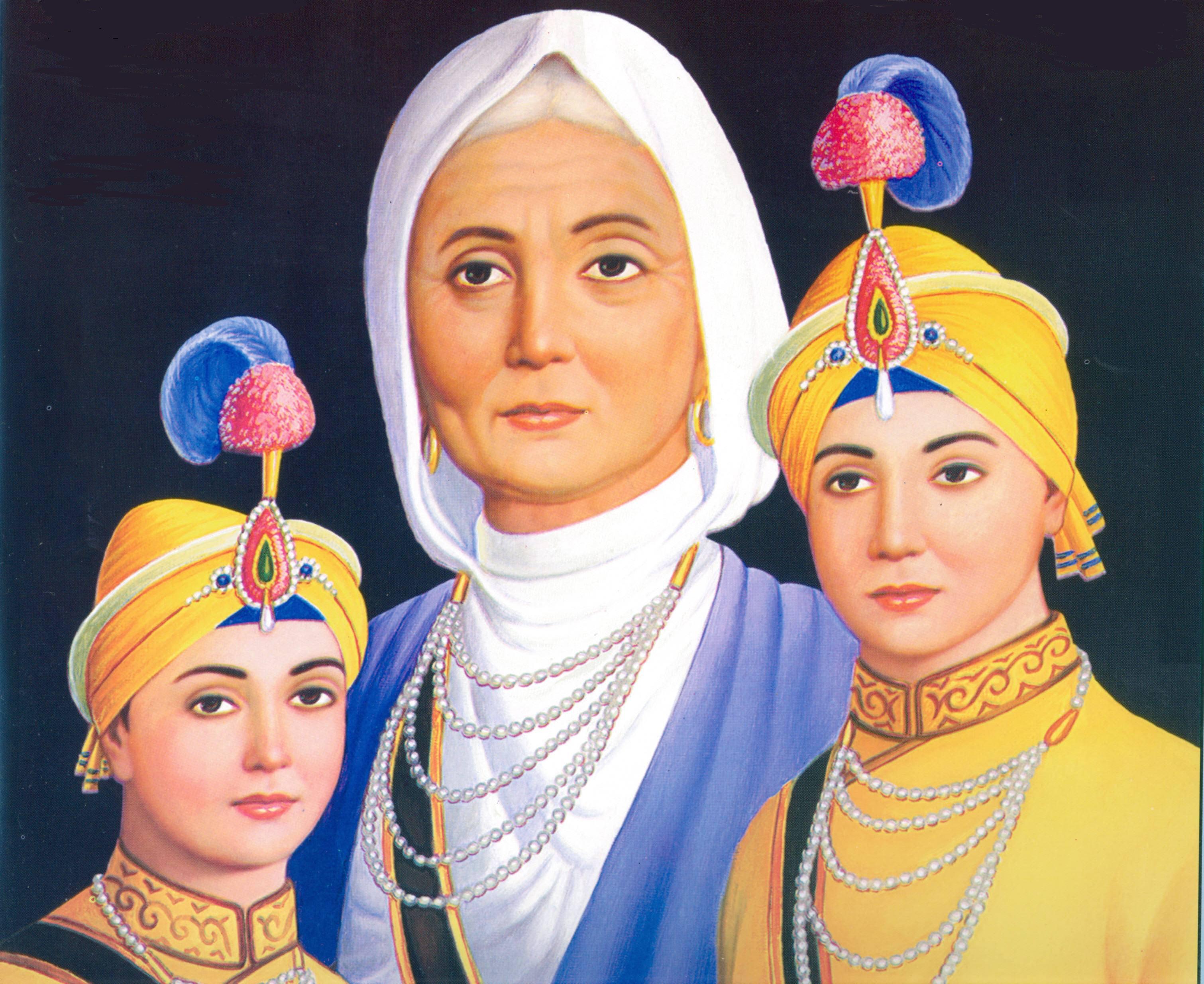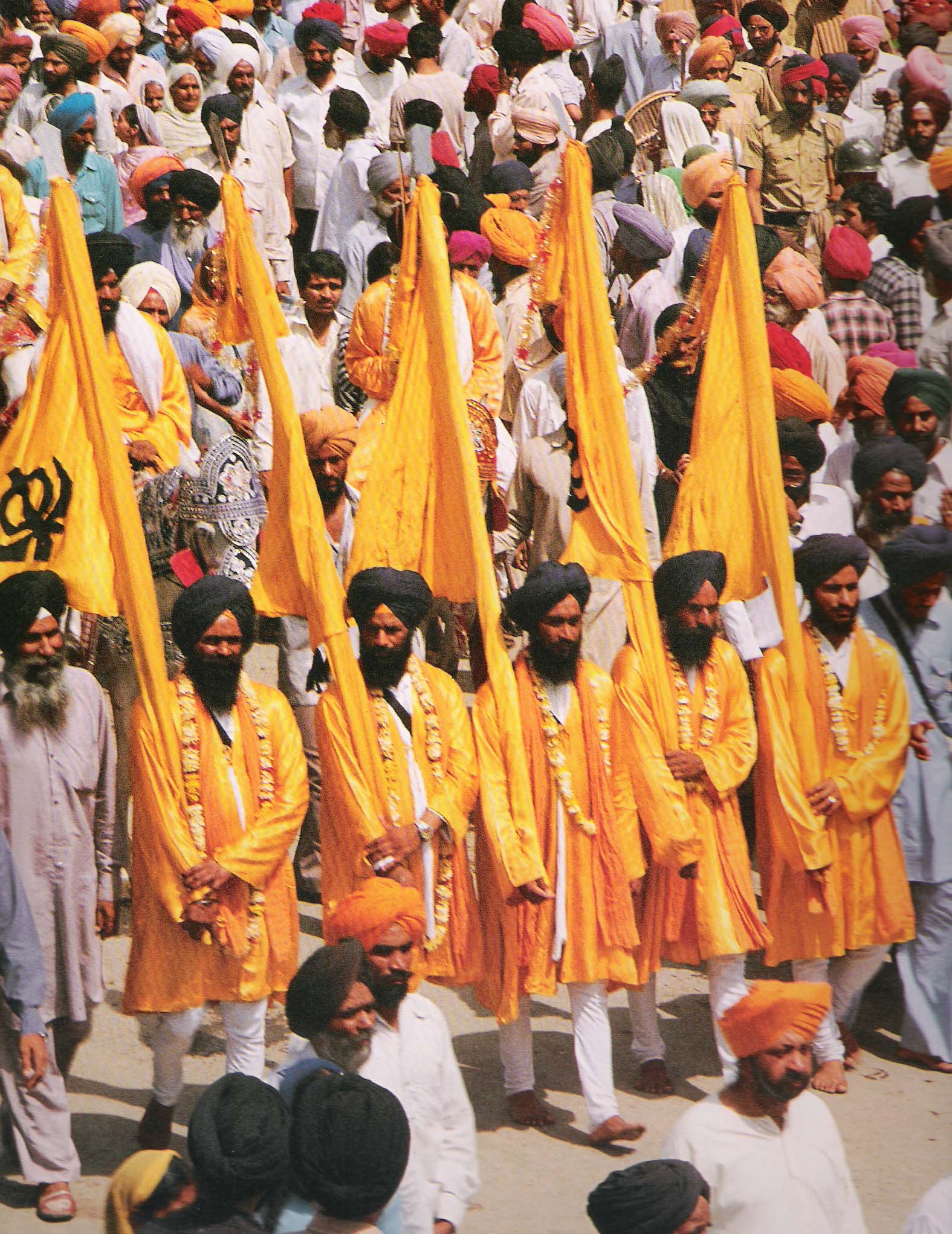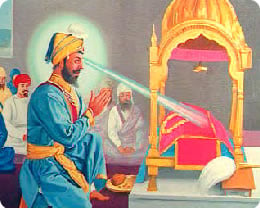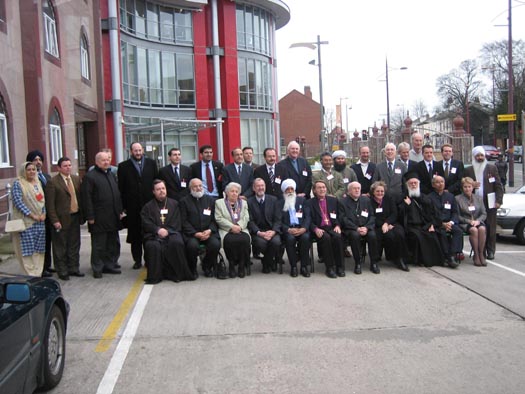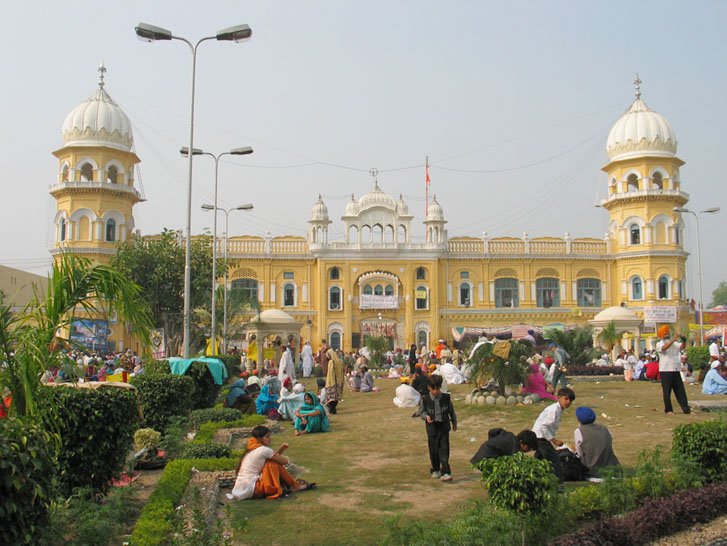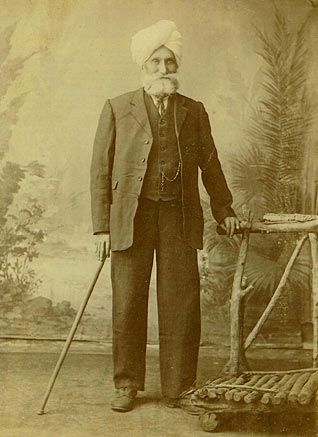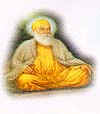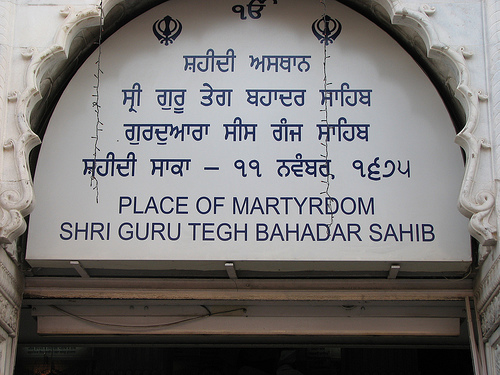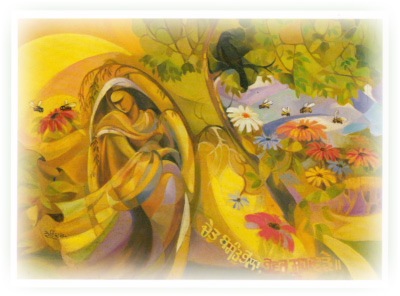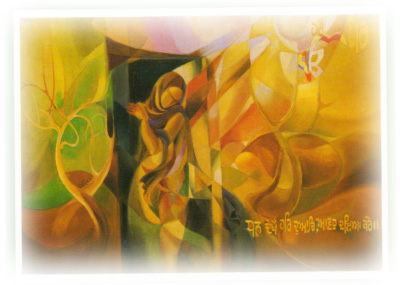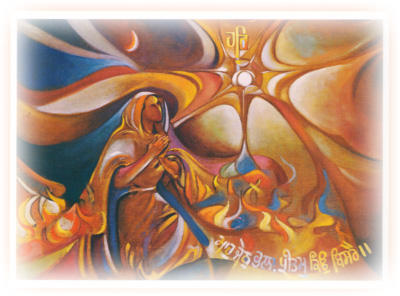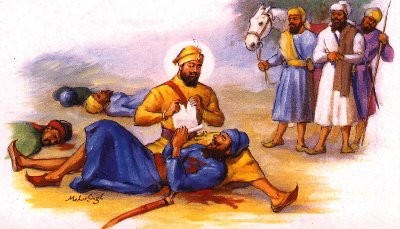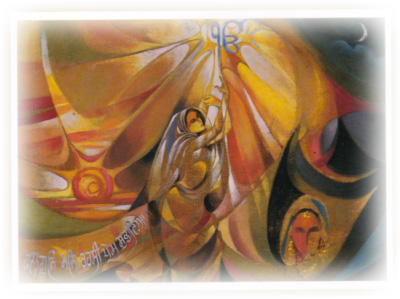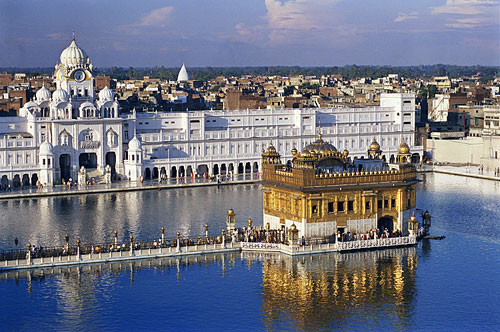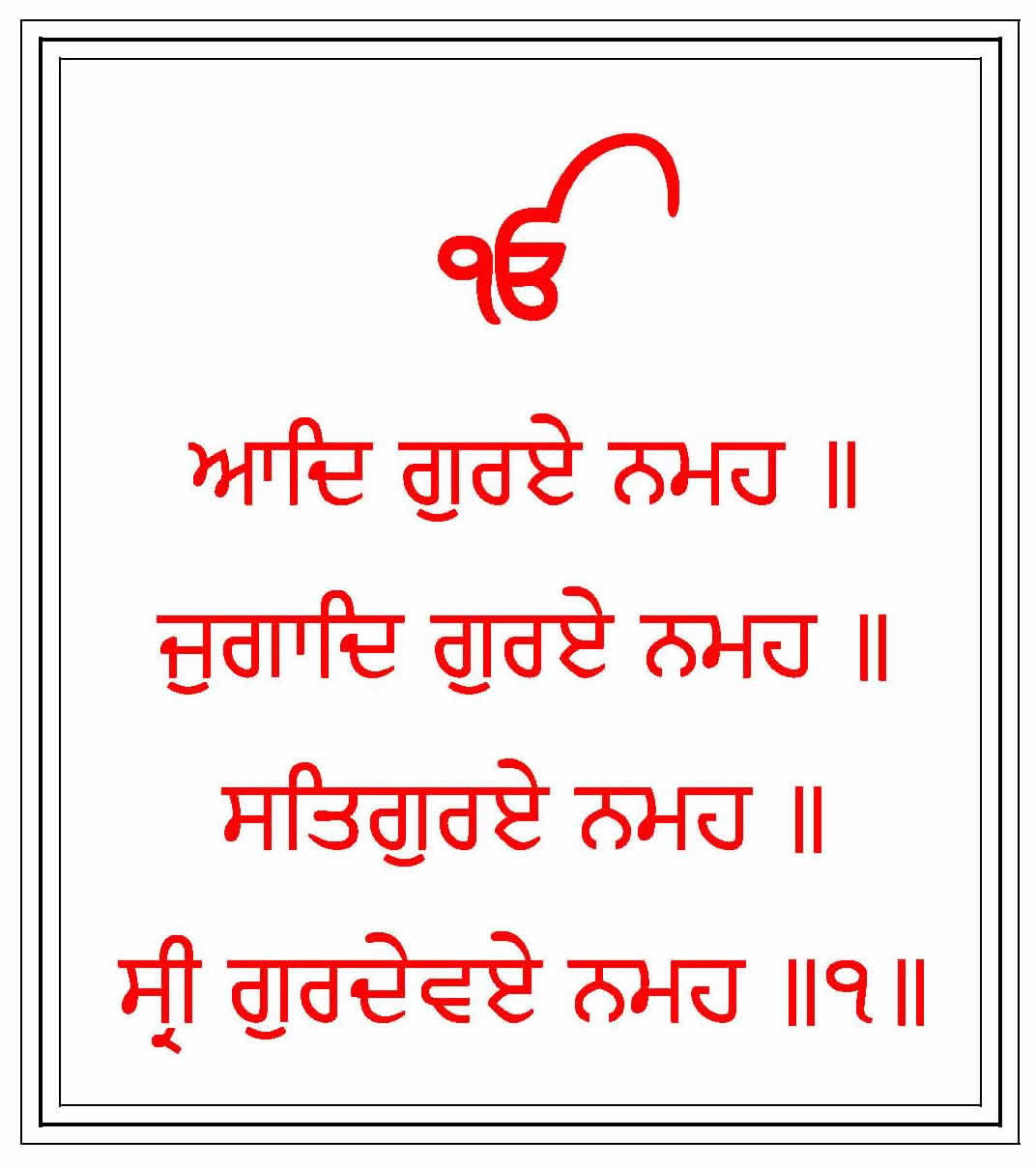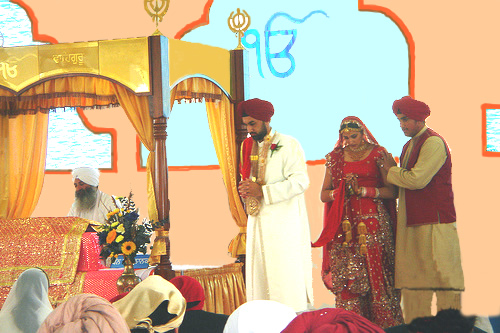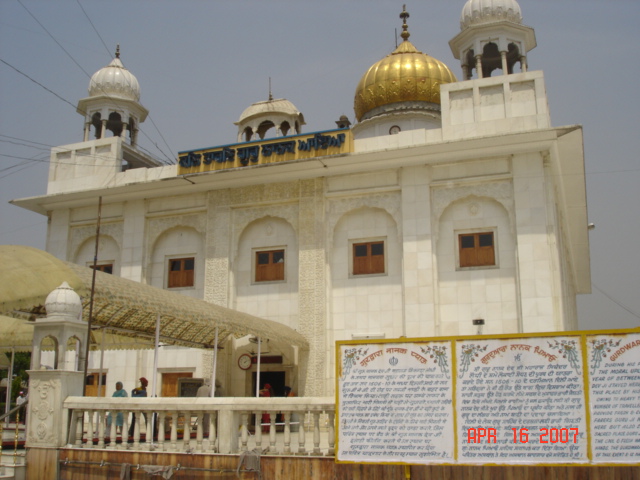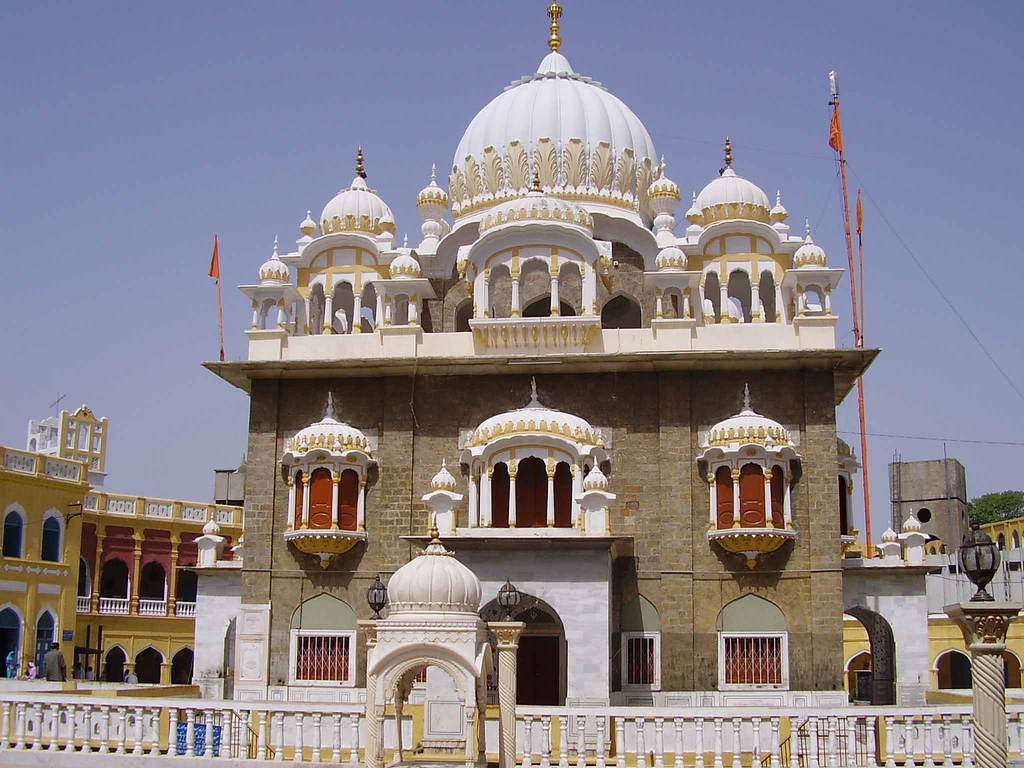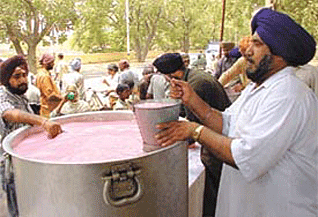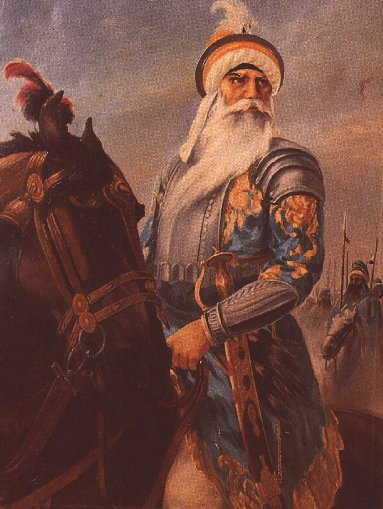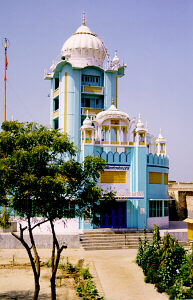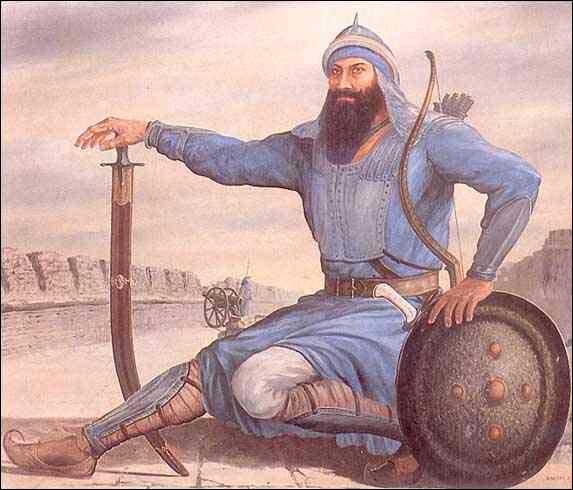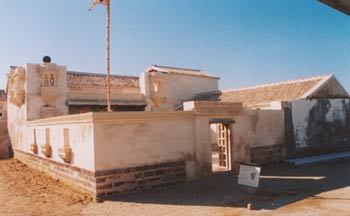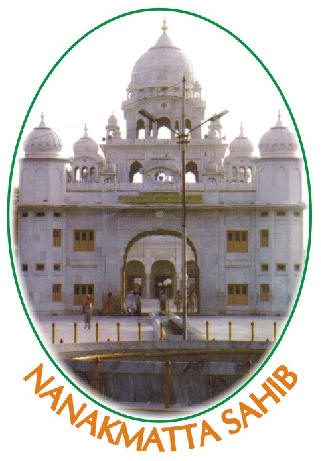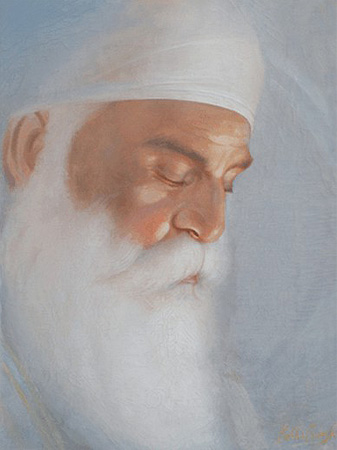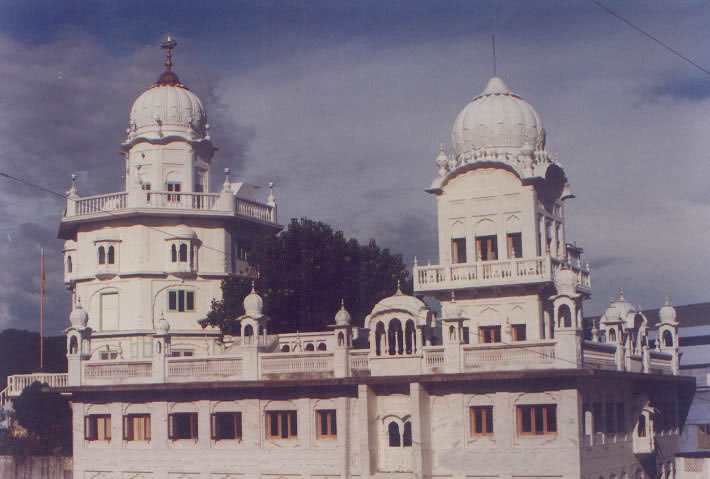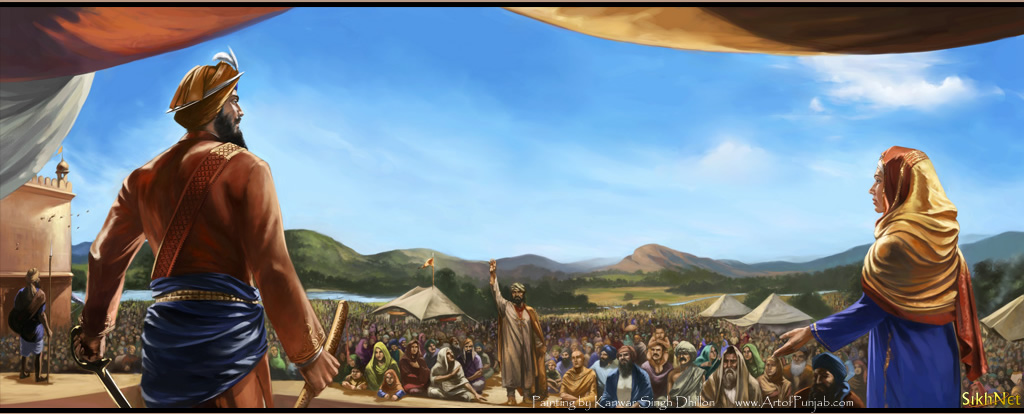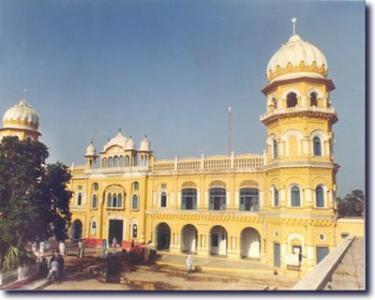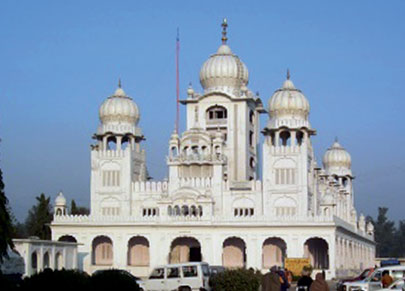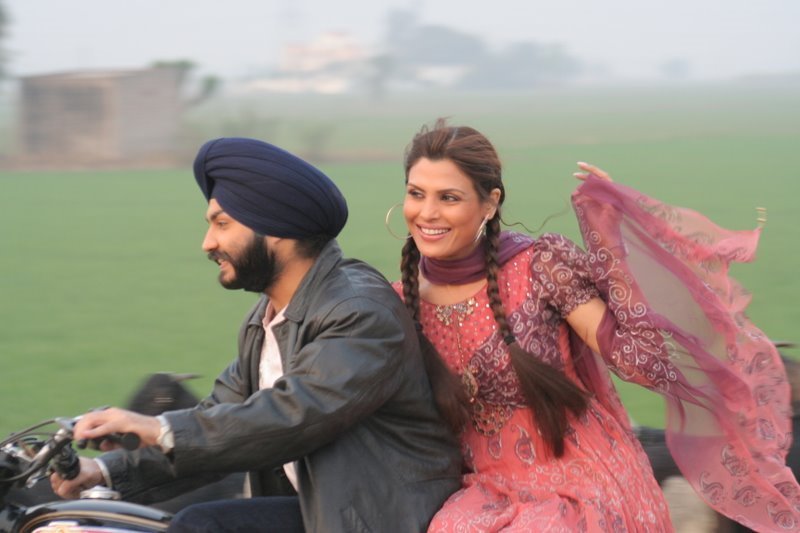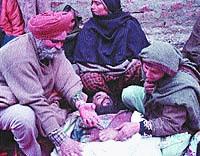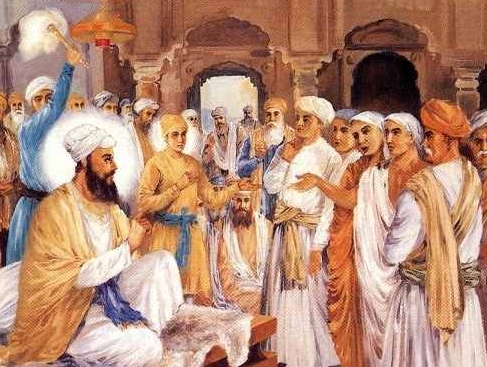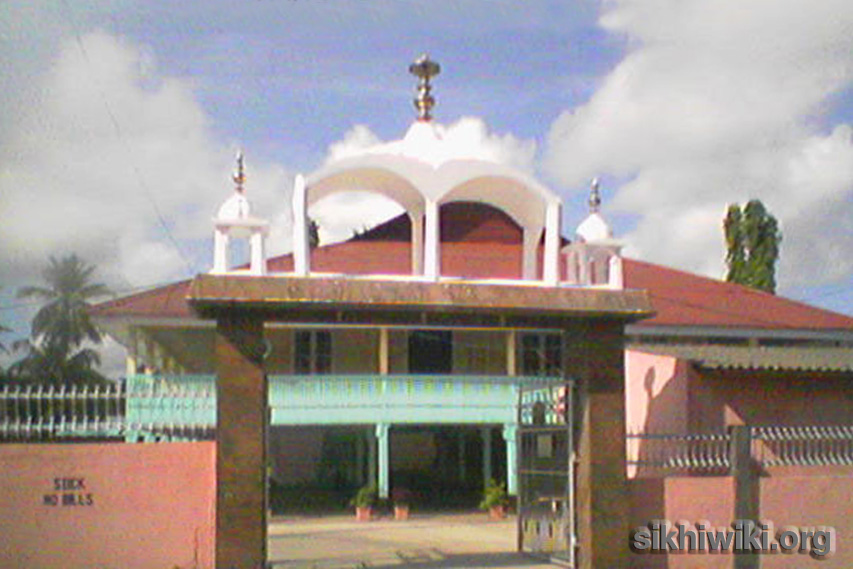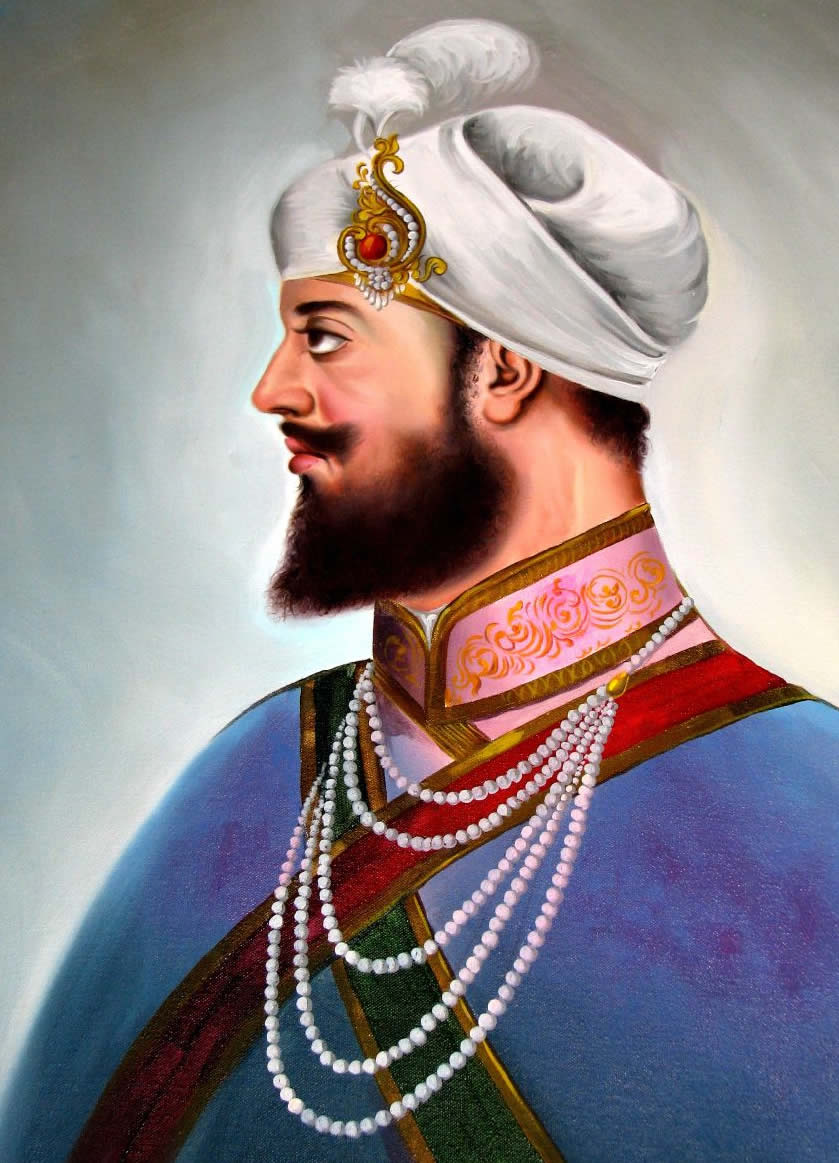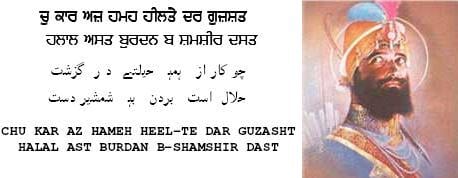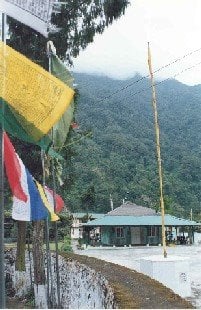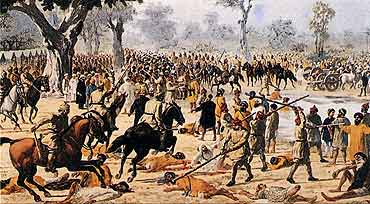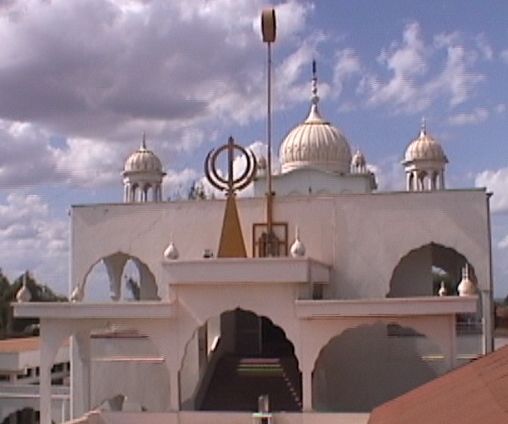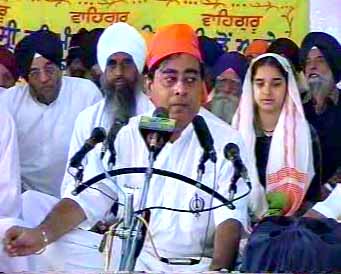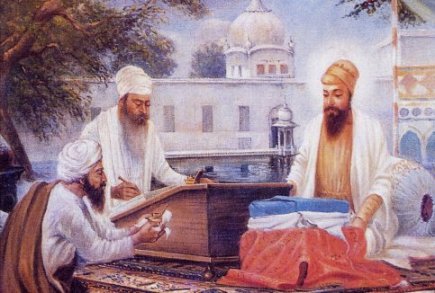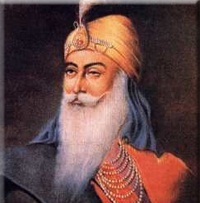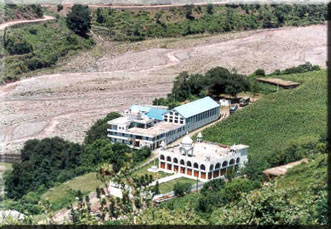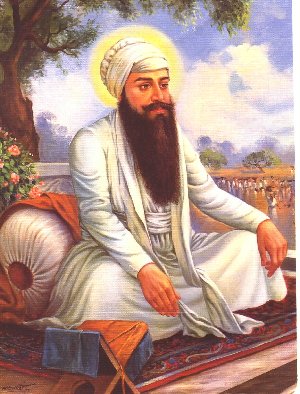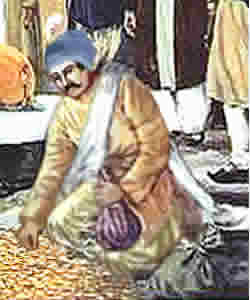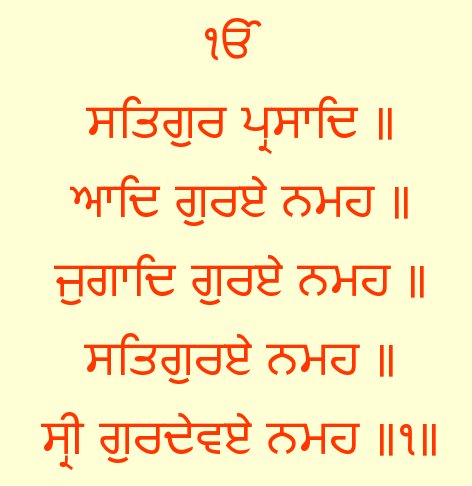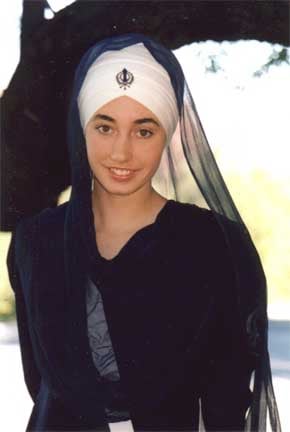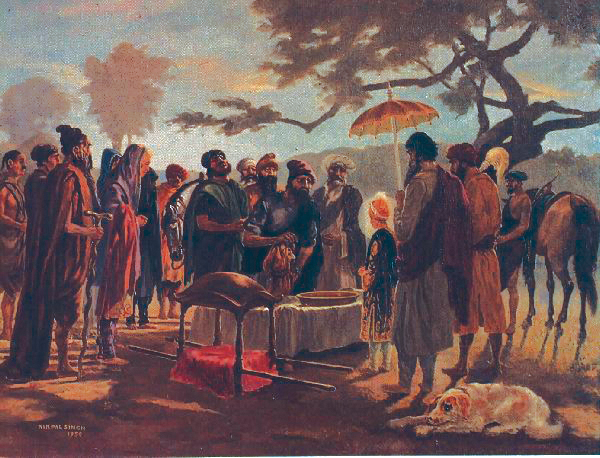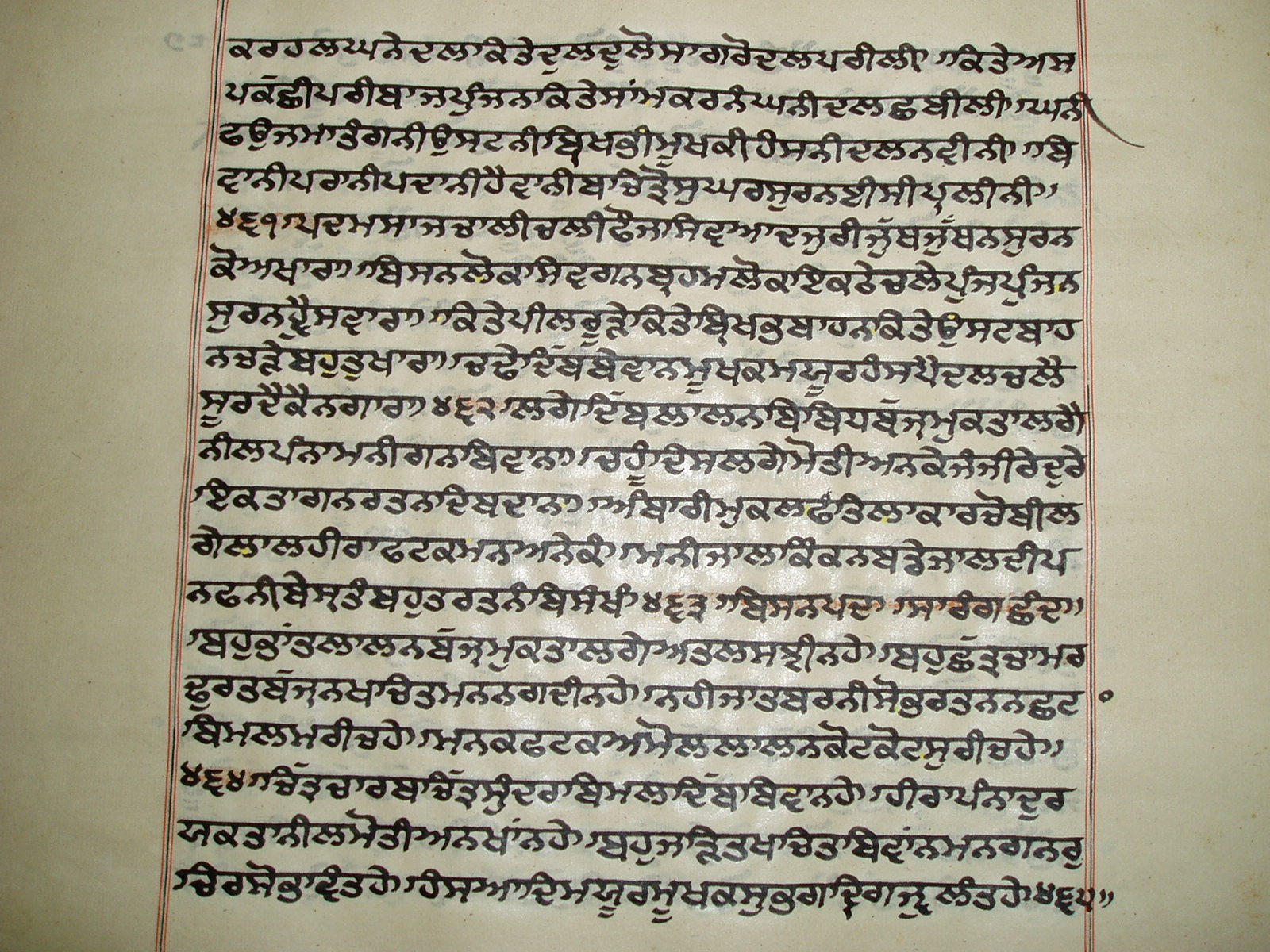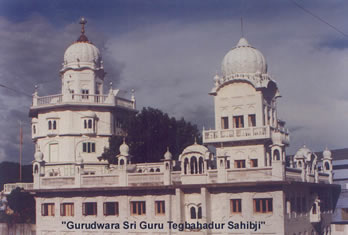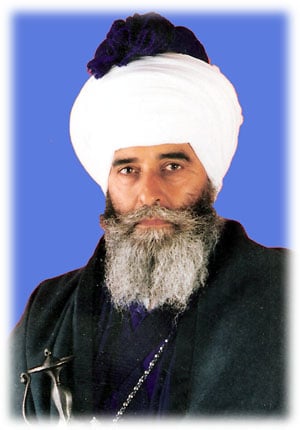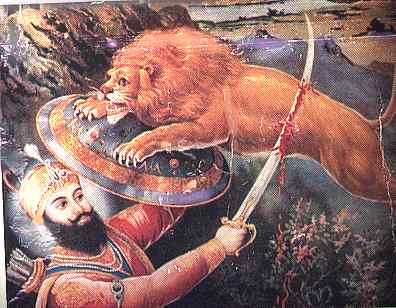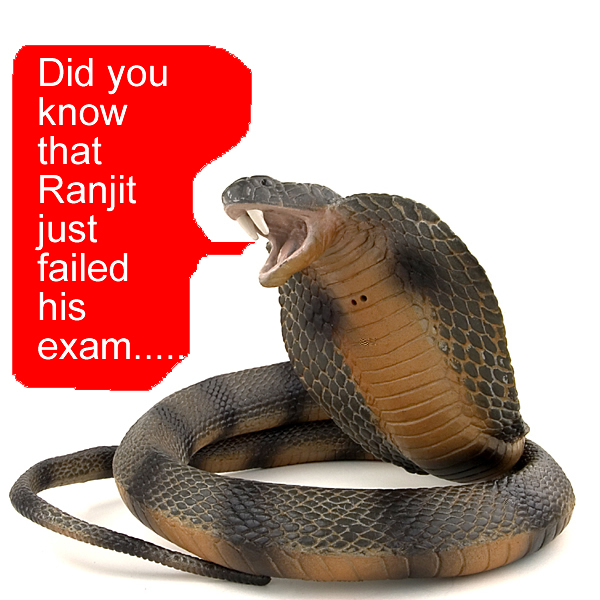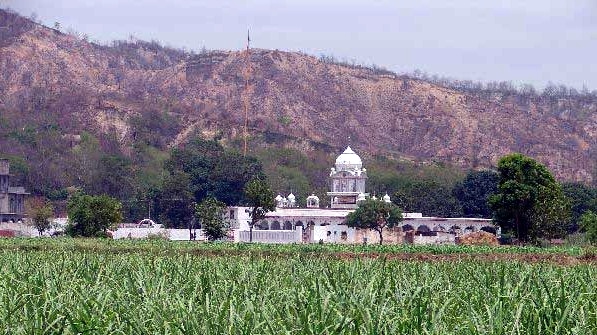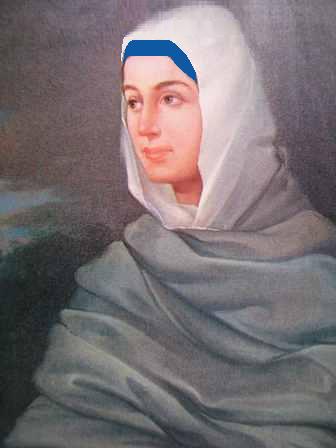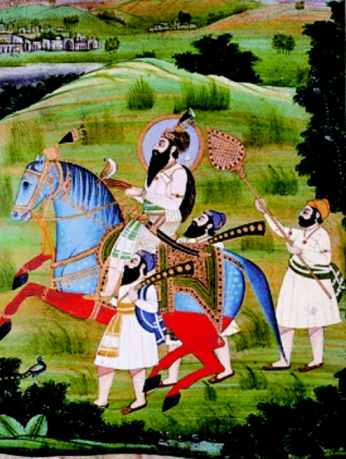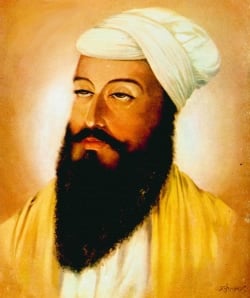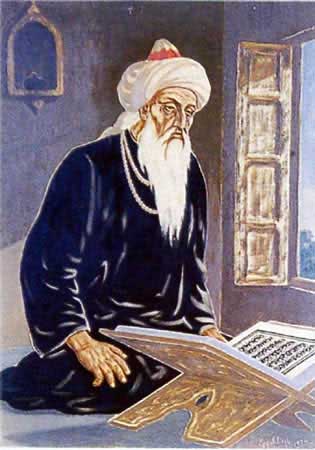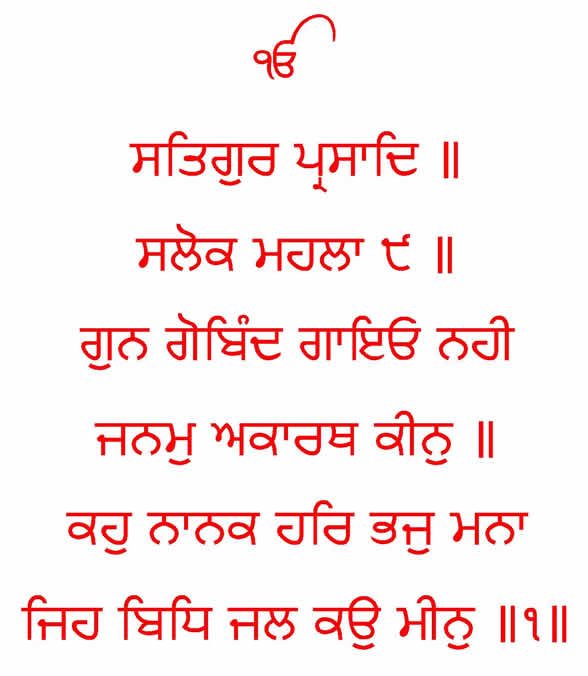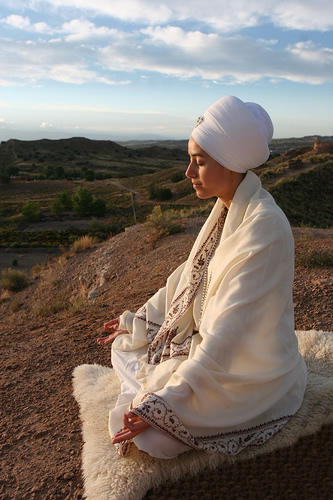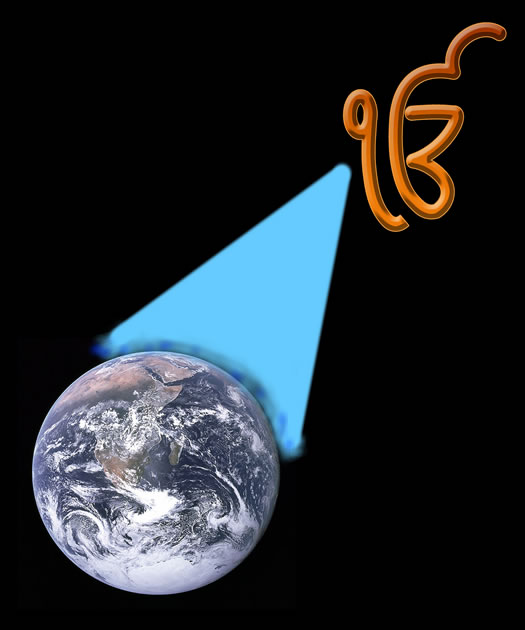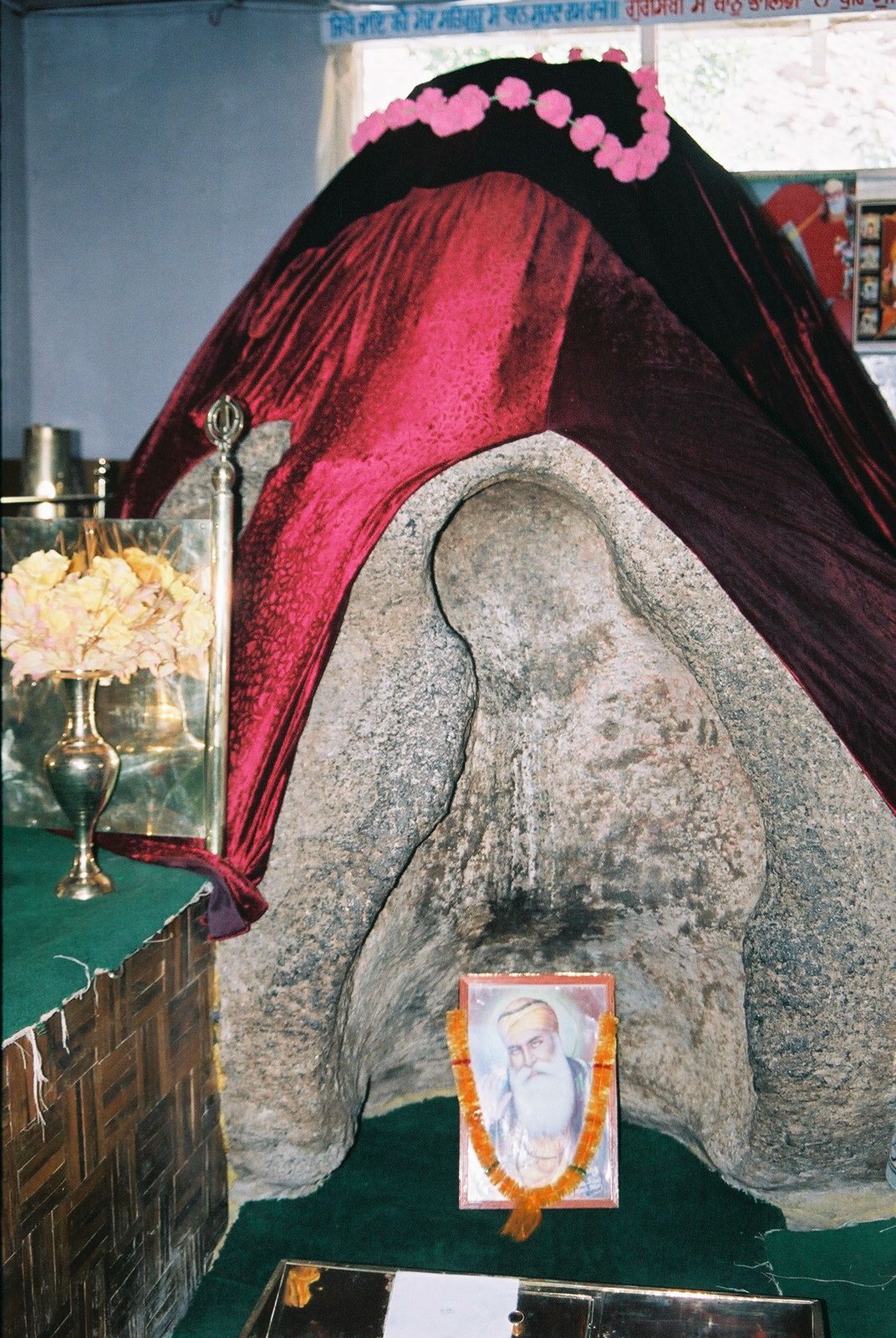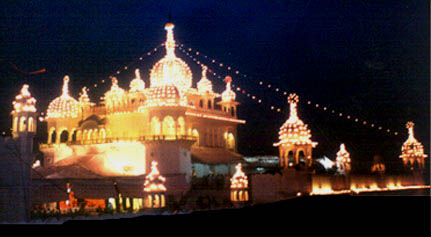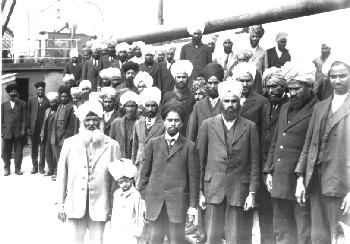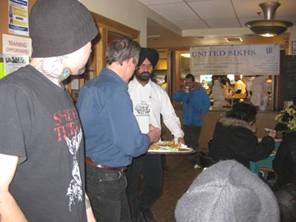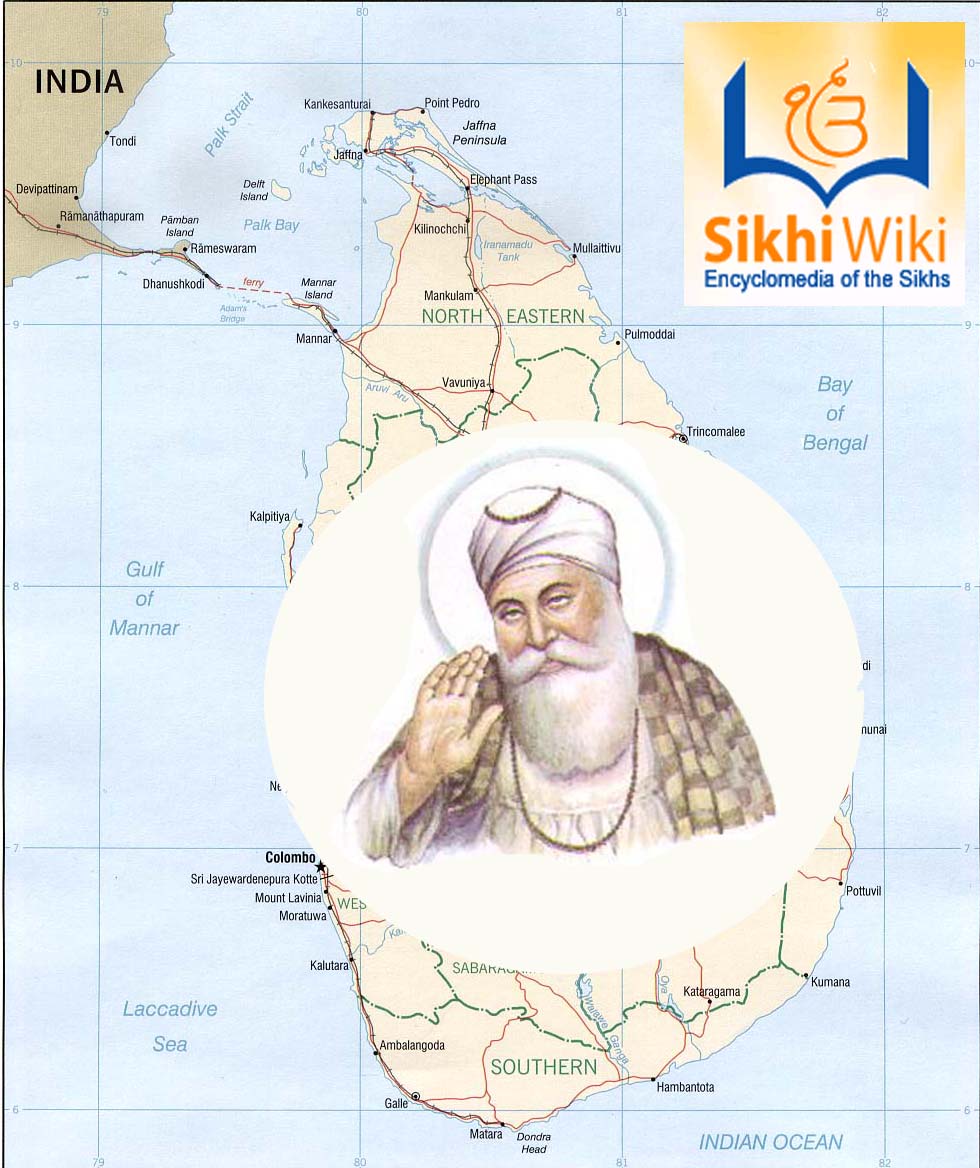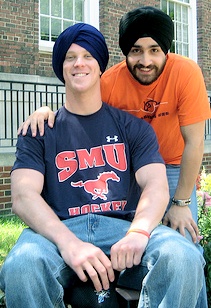All Featured Items
Contents:
Top 1 2 3 4 5 6 7 8 9 10 11 12 13 14 15 16 17 18 19 20 21 22 23 24 25 26 27 28 29 30 31 32 33
34 35 36 37 38 39 40 41 42 43 44 45 46 47 48 49 50 51 52 53 54 55 56 57 58 59 60 61 62 63 64 65 66
67 68 69 70 71 72 73 74 75 76 77 78 79 80 81 82 83 84 85 86 87 88 89 90 91 92 93 94 95 96 97 98 99
- Select all the Featured Articles: AOW 1 to 99: ALL AOW
- Select all the Featured Pictures POW 1 to 60: ALL POW
- Below is a combined list of all the Featured Articles & Pictures:
1The SikhiWIKI encyclopedia was a brand new experiment started in February 2005. The idea was to organise a web based encyclopedia of the Sikh Way of Life written collaboratively by many of its readers. Lots of people have contributed to this experiment and many are constantly improving SikhiWIKI, by continuously making changes, all of which are recorded on the page history and the 'Recent Changes' page. Nonsense and vandalism are usually removed quickly. Feel free to dive in take a look at the Tutorial, play in the sandbox, get comfortable and start contributing to our SikhiWIKI!. Remember this is Sewa for the Panth! Read more here Our motto is: "Anything is possible! We are vast and unlimited." Your tax-deductible gift to SikhiWiki is what will make the SikhiWiki service fast, reliable, and give it the resources needed for continued growth. We are building SikiWiki to last. It is a long-term project - a gathering place for us and our children as well as a legacy to future generations. .....More Contents: Top 1. 10. 20. 30. 40. 50. 60. 70. 80. 90. 2Bhai Kanhaiya (1648 - 1718), was a Sikh of Guru Tegh Bahadur and was the founder of the Sevapanthi or Addanshahi sect of the Sikhs. Bhai Sahib was born in a Dhamman Khatri family of Sodhara near Waxirabad in Sialkot district (now in Pakistan). His father was a wealthy trader, but he himself being of a religious bent of mind left home when still very young and roamed about with sadhus and ascetics in search of spiritual peace. Bhai Sahib’s contribution to Sikhi:
His quest ended as he met Guru Tegh Bahadur (1621 - 1675) and accepted initiation at Guru Ji hands. .....More Contents: Top 1. 10. 20. 30. 40. 50. 60. 70. 80. 90. 3Gurmat Sangeet or Shabad Kirtan has been an integral part of Sikh worship from the very beginning. Hymn-singing was in fact the earliest form of devotion for the Sikhs. Even during the time of Guru Nanak, the disciples assembled together to sing shabads, i.e. hymns composed by the Guru which render praise to the Lord. Thus, Kirtan has been appropriated into the regular Gurdwara service for a long time. Although Kirtan can be very touching and soul-stirring, Sikh kirtan abstains from all outward expression or frenzy in the form of clapping and dancing. Praise is offered to the Supreme Being who is without form, nirankar and not to a deity in any embodiment or incarnation. The texts of shabad kirtan are from the Holy Book of Sikhs known as the Guru Granth Sahib, or Adi Granth, compiled by Guru Arjan in 1604 or from from the Dasam Granth and also sometimes from the compositions by Bhai Gurdas or Bhai Nand Lal. Probably no other religion shows a closer relationship between music and its scriptures than does Sikhism. The Holy Book is organized according to ragas, 31 in number, to which the poetic hymns belong. .....More Contents: Top 1. 10. 20. 30. 40. 50. 60. 70. 80. 90. 4When Farid ji was just a few years old, his mother taught him his prayers. The boy asked what was gained by his prayers. His mother replied 'sugar'. Accordingly, she used to hide some sugar under his prayer-carpet, and when he had finished his prayers, she would draw the mat forth, and give the sugar to Farid as a reward for his devotion. On one occasion, when his mother was absent, he prayed a great deal, and, it is said, a great supply of sugar - a miraculous gift from God - was found under his carpet. Some he ate himself and the rest he gave to his playfellows. He related the circumstance to his mother on her return. It was then his mother gave him the surname Shakar Ganj, meaning a "treasury of sugar". There are 134 hymns of Sheikh Farid incorporated in the Guru Granth Sahib. Many Sikh scholars ascribe them to Farid Shakarganj (1173 – 1265) of Pak Pattan, a disciple of the Sufi Qutbuddin Bakhtiyar Kaki. The tenth in succession to his post was Shaikh Brahm (Ibrahim), also known as Farid Sani or Farid the 2nd, and it is this Farid who Guru Nanak Dev ji met on two occasions. .....More Contents: Top 1. 10. 20. 30. 40. 50. 60. 70. 80. 90. 5In Sikhism, the holy scriptures have clearly stated that the Sikh woman must always be regarded as an equal with man and has all the rights and privileges enjoyed by a man. She is considered to have the same soul as man and has same right to grow spiritually. In this faith since about 1499, the Sikh woman is allowed to lead religious congregations, to take part in:
Sikh women have played a glorious part in Sikh history and have proven themselves as equal in service, devotion, sacrifice and bravery. Examples of their moral dignity, Sewa (service) and self sacrifice are and will remain an ever-lasting source of inspiration for all the peoples of the world. Women are the backbone of the history of the Sikhs; their culture, their values and their traditions - yet there is little written about the huge contribution by the Sikh women to the great history of this religion. .....More Contents: Top 1. 10. 20. 30. 40. 50. 60. 70. 80. 90. 6The turban is closely associated with Sikhism. Sikhism or Sikhi is the only religion in the world in which the wearing of a turban is mandatory for all adult males. Vast majority of people who wear turbans in Western countries are Sikhs. The Sikh turban is also called the pagdi or dastaar, which is a more respectful word in Punjabi for the turban. All these words refer to the garment worn by both men and to a lesser extent by women to cover their heads. Some women prefer to wear a chunni instead of a turban. The dastaar is a headdress consisting of a long scarf-like single piece of fine cloth wound round the head or sometimes over an inner "hat" or patka. Traditionally in India, the turban was only worn by men of high status in society; men of low status or of lower castes were not allowed or could not afford to wear a turban. Sikh's are famous for their distinctive turbans. The turban represents respectability, and is a sign of nobility. .....More Contents: Top 1. 10. 20. 30. 40. 50. 60. 70. 80. 90. 7We should not increase our burden of karmas by eating higher life forms. There is karmic value in every kind of thing we use in this world. The air we consume, the water we use, we have to pay for. The light of the sun or moon is also not free...and this green grass is also to be paid for - nothing is free. Everything has a Karmic value. Depending on the "Jun" (life-form), there is a price to be paid. Lower life forms have a lower price to pay. Fruits and plants have a lower spiritual price than animal life forms. So why take the higher burden? We now refer to this sensitivity with new and fancy words like "our green foot print", "environmentally friendly", "eco-friendly", etc. However, all these words narrow down to a way of life that does the least damage to the world. If you are to construct a house, you don't make it using gold or silver or jewels. If you can, you make the house of stone - Stone is very strong and cheap. So, why don't you make your own house with stone and brick instead of gold? This body is like a house. .....More Contents: Top 1. 10. 20. 30. 40. 50. 60. 70. 80. 90. 8Ardas is a unique prayer; It's an appeal to Waheguru; a way to address and petition the Almighty; to gain spiritual energy; to connect with God. It is a very well-known Sikh prayer that was not written in its entirety by the Gurus. The Ardas is an ever changing plea, the contents of which depend on local concerns and personal issues. The word Ardĝs ( ਅਰਦਾਸ ) is derived from Persian word 'Arazdashat', meaning a request, a supplication, a prayer, a petition or an address to a superior authority. The power that this single prayer possesses is astonishing. Starting with "Pritham bhagautee simar kai, Gur Nanak laee dhiaa-e" and ending with "Naanak naam charhdee kalaa, tayray bhaanay Sarbat da bhala". The ardas encompasses so many Sikh and Humanistic values. It is more than just a prayer; it is a new concept of therapy for the elevation of the human spirit, mind and body. The Ardas is usually done standing up with folded hands. The beginning of the Ardas is strictly set by the tenth Sikh Guru, Guru Gobind Singh. When it comes to the conclusion of this prayer, the devotee uses the word Waheguru .....More Contents: Top 1. 10. 20. 30. 40. 50. 60. 70. 80. 90. 9In October/November every year, the Sikhs celebrate the birthday of Guru Nanak Dev, the founder of their religion; a youngish faith system called Sikhism. Although many in the world have not learnt about Guru Nanak, his contribution to our understanding of life and its deep meaning is immense. Why not learn more about the Guru's contributions to Sikhi and how this has benefited humanity? Guru Nanak was born on April 15, 1469 but this year (2015), the Sikhs will celebrate this auspicious and momentous day on November 25. Next year (2016) this day will be celebrated on November 14. Guru Nanak Dev came into this world at a time of extreme doom and gloom when the moral standards of the ruling class had vanished; the rulers had no respect for humanity; and law of the jungle prevailed everywhere. Men’s ideas and aspirations were at an all time low. Materialistic wealth, plain greed and illusion of Maya fascinated the world and led everyone astray. Good acts and righteous behaviour no longer commended themselves to humans. .....More Contents: Top 1. 10. 20. 30. 40. 50. 60. 70. 80. 90. 10On November 24, the Sikhs remember the Martyrdom of Guru Tegh Bahadur, their ninth Guru. An extremely important event in Sikh history that had a profound impact on the future direction of Sikhism, the religion of the Sikhs. Guru Tegh Bahadur undertook the supreme sacrifice for the protection of the most fundamental of human rights - the right of a person to freely practice his or her religion without interference or hindrance. In the modern day we tend to take this freedom for granted – but in 1675, millions of people were denied this basic right. However, what is even more astonishing is the fact that the Guru was not protecting the right of the Sikhs to practise their religion but instead the rights of non-Sikh peace-loving people from Kashmir. These people from Kashmir were very respected Hindus who were being converted to Islam under the threat of death by the "Mughal" Emperor Aurangzeb. In 1669, the Mughal ruler Aurangzeb departed from the policy of tolerance practised by his predecessors and unleashed instead a policy of religious persecution against non-Muslims. .....More Contents: Top 1. 10. 20. 30. 40. 50. 60. 70. 80. 90. 11Langar or free kitchen was started by the first Sikh Guru, Guru Nanak Dev Ji. It is designed to uphold the principle of equality between all people of the world regardless of religion, caste, colour, creed, age, gender or social status. In addition to the ideals of equality, the tradition of Langar expresses the ethics of sharing, community, inclusiveness and oneness of all humankind. "..the Light of God is in all hearts." (sggs 282). For the first time in history, Guruji designed an institution in which all people would sit on the floor together, as equals, to eat the same simple food. It is here that all people high or low, rich or poor, male or female, all sit in the same pangat (literally "row" or "line") to share and enjoy the food together. The institution of Guru ka Langar has served the community in many ways. It has ensured the participation of women and children in a task of service for mankind. Women play an important role in the preparation of meals, and the children help in serving food to the pangat. Langar also teaches the etiquette of sitting and eating in a community situation, which has played a great part in upholding the virtue of sameness of all human beings; providing a welcome, secure and protected sanctuary. .....More Contents: Top 1. 10. 20. 30. 40. 50. 60. 70. 80. 90. 12Sikhism is one religion, which is founded on the principles of global Interfaith communities and mutual Inter-community respect and harmony. The founders of Sikhism have, since 1469, defined and preached the principles of interfaith respect, dialogue and harmony. A Sikh by definition must respect and accept all other world religions. Guru Nanak, the founding Guru of the Sikh faith said, "Your [God's] Divine Light is contained in all; everyone belongs to You." (SGGS page 414) So in this religion the holiness of all humans is recognised and respected, irrelevant of the person's religion. Further, the Sikh must protect, guard and allow the free-practise of the customs and rituals of other religions. The SGGS says on page 142: One who recognizes that all spiritual paths lead to the One shall be emancipated. The following are remarks made by distinguished personalities about the Sri Guru Granth Sahib and its interfaith message: Arnold Toynbee: The Adi Granth is remarkable for several reasons. Of all known religious scriptures this book is the most highly venerated. Pearl S. Buck: They (the Sikh Scriptures) speak to persons of any religion or of none. They speak for the human heart and the searching mind. Dr. S. Radhaknshnan: The barriers of seas and mountains will give way before the call of eternal truth which is set forth with freshness of feelings and fervour of devotion in the Adi Granth. .....More Contents: Top 1. 10. 20. 30. 40. 50. 60. 70. 80. 90. 13On January 5 this year the world celebrates the birth in Patna, India of the tenth and last of the Ten Gurus in human form of Sikhism. Gobind Rai was born on January 5, 1666 and became Guru on November 11, 1675 at the age of nine, following in the footsteps of his father Guru Teg Bahadur. The Guru moulded the Sikh religion into its present form with the formation of the Khalsa in 1699. The tenth Guru (teacher) of the Sikh faith, was born Gobind Rai. It may not be out of the way to say here that throughout the annals of human history, there was no other individual who could be of more inspiring personality than Guru Gobind Singh. Guru ji infused the spirit of both sainthood and solider in the minds and hearts of his followers to fight oppression and support righteousness (Dharma) in order to restore justice, peace and to uplift the down-trodden people in this world. In the short 42 year of life and a Guruship of only 33 years, the Guru contributed immensely to Sikhism and to the world and his gift to all the peoples of the world still remains unmatched to this day. .....More Contents: Top 1. 10. 20. 30. 40. 50. 60. 70. 80. 90. 14On January 31, the Sikh community worldwide celebrate the birthday of the seventh Sikh Guru, Guru Har Rai (Gurmukhi: ਗੁਰੂ ਹਰਿ ਰਾਇ) (31 January 1630 - 20 October 1661). Guru ji was the son of Baba Gurdita and Mata Nihal Kaur. Baba Gurdita was son of the sixth Guru, Guru Hargobind. Although, Guru Har Rai was a man of peace, he never disbanded the armed Sikh warriors (Saint Soldiers), who earlier were maintained by his grandfather, Guru Hargobind. He always boosted the military spirit of the Sikhs, but he never himself indulged in any direct political and armed controversy with the contemporary Mughal Empire. Once on the request of Dara Shikoh (the eldest son of emperor Shah Jahan), Guru Sahib helped him to escape safely from the bloody hands of Aurangzeb's armed forces during the war of succession. Guru Sahib also established an Aurvedic herbal medicine hospital and a medical research centre at Kiratpur Sahib. There also he maintained a zoo. Once Dara Shikoh, the eldest son of Shah Jahan fell seriously ill by some unknown disease. The best physicians available in the country and abroad were consulted, but there was no improvement. .....More Contents: Top 1. 10. 20. 30. 40. 50. 60. 70. 80. 90. 15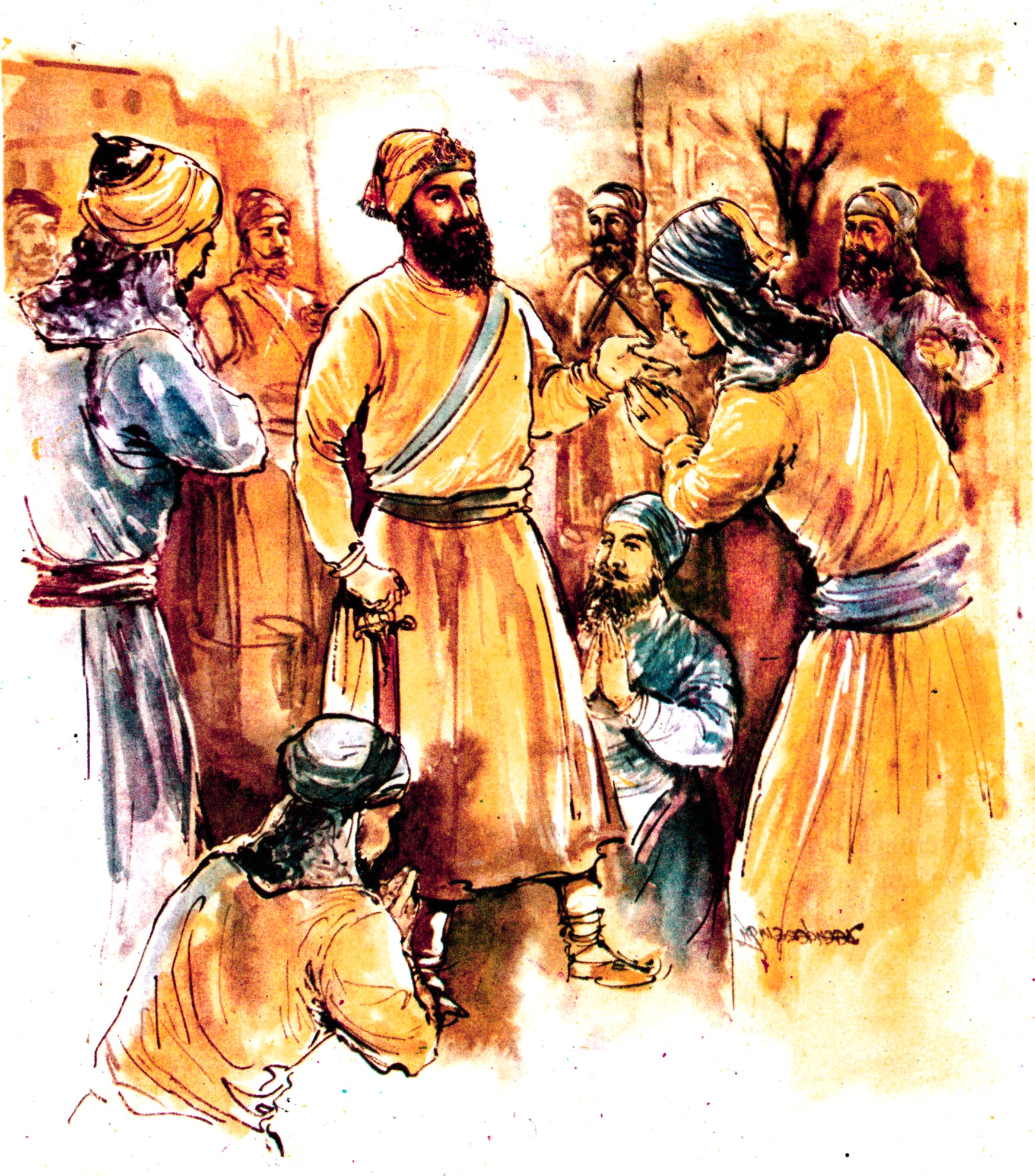 Sahibzada Ajit Singh (11 February 1687 - 7 December 1705), the eldest of four sons of Guru Gobind Singh, was born to Mata Jito ji (also known as Mata Sundari ji) at Paonta sahib on 11 February 1687. The following year, Guru Gobind Singh returned with the family to Anandpur sahib where Ajit Singh was brought up in the approved Sikh style. He was taught the religious texts, philosophy and history, and had training in the martial arts such as riding, swordsmanship, gatka and archery. He grew up to be a handsome young man, strong, intelligent and a natural leader of people. Soon after the creation of the Khalsa on 30 March 1699, he had his first test of skill. A group of Sikhs (sangat) coming from Pothohar, northwest Punjab, was attacked and looted on the way by the Ranghars of Nuh, a short distance from Anandpur across the River Sutlej. Guru Gobind Singh sent Sahibzada Ajit Singh, barely 12 years of age then, to that village to intervene, defend the sangat and deal with the intruders. Ajit Singh at the head of 100 Sikhs reached there on 23 May 1699, punished the Ranghars and recovered the looted property. .....More Contents: Top 1. 10. 20. 30. 40. 50. 60. 70. 80. 90. 16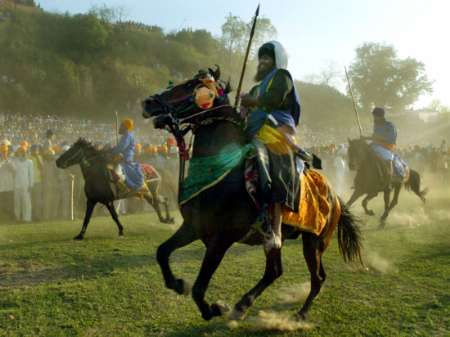 (Photo:Reuters/Kamal Kishore) Hola Mohalla or simply "Hola" is a Sikh festival that takes place on the first "full moon" day in the month of March which approximately corresponds to the Punjabi month of Chet which begins on March 14. Chet is the first month in the Nanakshahi calendar and this month coincides with March-April in the Western calendar. Every year this festival takes place in the month of March when we have a "full moon" in India. This Sikh festival follows the Hindu festival of Holi; The word "Mohalla" is derived from the Arabic root "hal" (alighting, descending) and is a Punjabi word that implies an organized procession in the form of an army column. But unlike Holi, when people playfully sprinkle color, dry or mixed in water, on each other, the Guru made Hola Mohalla an occasion for the Sikhs to demonstrate their martial skills in simulated battles. Together the words "Hola Mohalla" stands for "mock fight". During this festival, procession are organised in the form of army type columns accompanied by war-drums and standard-bearers and proceeding to a given spot or moving within the state from one gurdwara to another. .....More Contents: Top 1. 10. 20. 30. 40. 50. 60. 70. 80. 90. 17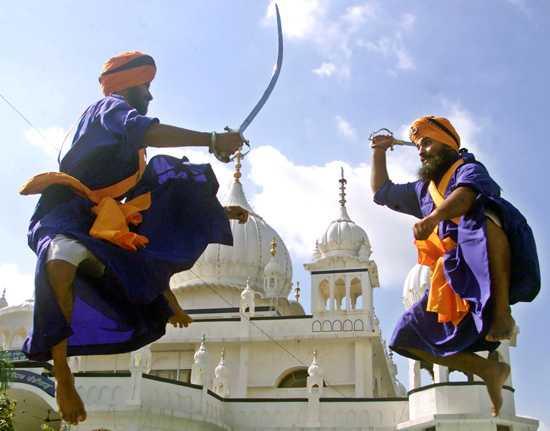 Gatka is an ancient martial art which has been thoroughly battle-tested and has existed in northern India for many thousands of years. Although it uses the sword or (kirpan) as its primary weapon, many other weapons are available to the Gatka master. Today, this art exists exclusively amongst the Sikhs who have passed down the flamboyant techniques through generations, since their sixth Guru, Guru Hargobind wore the two swords of Miri (temporal, worldly) and Piri (spiritual, transcendental). The Sikhs have been responsible for the revival of this early art ensuring it's survival despite mass persecution of the native population in India by foreign invaders like the Mughals and others for many hundreds of years. Gatka is a complete martial system which uses spiritual, mental and physical skills in equal portions to help one become fully competent in defending themselves and others. It is a system that can only be used as a last resort: "When all other means have failed, it is proper to take the sword in one’s hand" (Guru Gobind Singh) .....More Contents: Top 1. 10. 20. 30. 40. 50. 60. 70. 80. 90. 18On 16 June of every year since 1606, the Sikhs have commemorated the martyrdom of their first martyr, the fifth Guru, Guru Arjan Dev. Sikh history until then had been peaceful and non-violent. All the Sikh Gurus had taught the message of compassion, love, dedication, hard work, worship of one God and the commitment to peace and harmony for all the peoples of the world. During the Guruship of Guru Arjan many thousands of the native people had began to follow the teachings of Sikhism and both the Hindus and Muslims were crowding to Govindwal, the centre of Sikhs during the late 1500's. After the death of Mughal Emperor Akbar in 1605, his son Jahangir became the leader of India. Unlike his father, Jahagir was a fundamentalist Muslim, obsessed with turning the country into an Islamic state. Both Hindu and Muslim fundamentalists concerned at the rapid increase in the popularity of Guru Arjan, moved the new head of state Emperor Jahangir against the Guru. Jahangir himself was also jealous about Guru's propagation of Sikhism. He promptly obliged the enemies of the Guru. Many baseless allegations were levelled against Guru Sahib, one of those was helping the rebellious Khusrau, who was Jahangir's son and the preferred choice of Akbar to be the next ruler of India rather than his son Jahangir, who was given to drinking wine and taking opium. .....More Contents: Top 1. 10. 20. 30. 40. 50. 60. 70. 80. 90. 19On the 2 May every year, the Sikhs celebrate the birthday of their spiritual master, Guru Arjan Dev, the fifth Guru of the Sikhs. Guru ji was the embodiment of Godly devotion, Selfless Service and Universal Love. He was the treasure of celestial knowledge and spiritual excellence. He substantially contributed towards the welfare of society and the formation of the Sikh faith. He stood steadfastly for the principles he believed in, even sacrificed his own life, and attained a unique and unparalleled martyrdom in the history of mankind. Guru Ji was born on May 2, 1563, in the house of Guru Ram Das, the fourth Guru of the Sikhs. He was the youngest of the three sons of the fourth Sikh Guru. Guru Ram Das envisioned heavenly qualities in his youngest son Arjan. From childhood Guru Ram Das found him imbued with Naam, the remembrance, love and affinity with God and always immersed in tranquil bliss. The Guruship was destined to be bestowed upon Guru Arjan. It is said that one day, baby Arjan crawled up on the Divine throne of his maternal grandfather, Guru Amar Das the third Guru, and sat there comfortably. The Guru smiled and prophesied, “Maternal Grandson will ship the Naam across.” Although he ascended the throne of Guru Nanak at a young age of 18, he was far more advanced in wisdom and spiritual understanding than his tender age. The letters he wrote to his father from Lahore, not then even a teen-aged boy, stand testimony to this fact (see Shabad Hazaray}. .....More Contents: Top 1. 10. 20. 30. 40. 50. 60. 70. 80. 90. 20Guru Amar DasEvery year on 23 May, the Sikh celebrate the birthday of their third Guru, Sri Guru Amar Das. It is recorded that before becoming a Sikh, Bhai Amardas as he was known at the time, was a very religious Vaishanavite Hindu who spent most of his life performing all of the ritual pilgrimages and fasts of a devout Hindu. One day, Bhai Amardas heard some hymns of Guru Nanak being sung by Bibi Amro Ji, the daughter of Guru Angad, the second Sikh Guru. Bibi Amro was married to Bhai Sahib's brother, Bhai Manak Chand's son who was called Bhai Jasso. Bibi Amro lived together with Bhai Sahib's brother. It so happened that Bhai Sahib was at his brother house when he heard the wonderful recitation of Gurbani by his niece-in-law. Bhai Sahib was so impressed and moved by these Shabads that he immediately decided to go to see Guru Angad at Khadur Sahib. It is recorded that this event took place when Bhai Sahib was 61 years old. Bhai Sahib also had a younger brother called Bhai Ishar Das who had a son called Bhai Gurdas, who was a superb poet and scholar of comparative religion who would later go on become the scribe of the first edition of the Guru Granth Sahib. In 1635, upon meeting Guru Angad, Bhai Sahib was so touched by the Guru's message that he became a devout Sikh. Read more ..... Contents: Top 1. 10. 20. 30. 40. 50. 60. 70. 80. 90. 21On 5 July every year, the Sikhs celebrate the birthday of their sixth Master, Guru Har Gobind (5 July 1595 - 19 March 1644). Guru sahib was born at village Guru Ki Wadali in district Amritsar on 5 July 1595 and was the only son of Mata Ganga and Guru Arjan, whom he succeeded on 11 June 1606 at the age of only 11 years old. The young Hargobind received his early education and training from the revered Sikhs leaders of the time Baba Buddha, the first granthi and Bhai Gurdas, the scribe of the Sikh holy script, Guru Granth Sahib. Guru Hargobind was married in about 1610 to Mata Nanaki also known as Mata Marwahi or Mata Mahadevi. They were endowed with a large family consisting of one daughter Bibi Viro and five sons: Baba Gurditta, Suraj Mal ji, Ani Rai ji, Atal Rai ji and Tegh Bahadar ji. Guru Hargobind was responsible for wearing two kirpans - one for Miri (temporal protection) and one for Piri (spiritual reasons) and began the rapid and irreversible militarization of the Sikh people. It was due to the tragic martyrdom of his father, Guru Arjan that the sixth Guru changed the Panth into an effective, brave and determined army of religious supporters. .....More Contents: Top 1. 10. 20. 30. 40. 50. 60. 70. 80. 90. 22On the 4 June every year, the worldwide Sikh community celebrate the birthday of late Bhagat Puran Singh (1904 - 1992). Bhai Sahib was born at Rajewal, in district Ludhiana, Punjab, India on June 4, 1904. His mother was Mehtab Kaur and his father's name was Chaudhari Chibu Mal. Bhai Sahib was born into a Hindu family and his original name was Ramji Das. He started his education at Khanna, Punjab and then later joined Lahore's Khalsa High School. As a young man, he used to perform "sewa" at Gurdwara Dera Sahib and Gurdwara Shahid Ganj in Lahore. Here, he would help with cleaning, cooking and serving food; he also tended to the aged, infirm and sick who came to the Gurdwaras to pay their respect to Guru Granth Sahib. In an interview with Bhai Patwant Singh, Bhagat Puran Singh discloses how he became a Sikh. In his early life he used to travel a lot from village to village and would stay overnight at a Hindu Temple. One day when he was staying at one such temple, the Brahmins told him to clean the temple and then when he had done that, they sat in front of him and started eating food without offering him anything. The next time, he had to stay at a Gurdwara and the priest there not only gave him food but also a cot and a glass of milk afterwards .....More Contents: Top 1. 10. 20. 30. 40. 50. 60. 70. 80. 90. 23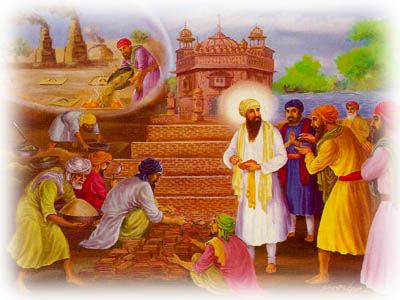 Gurdwara under construction during the time of the Gurus with the donations from the Sangat Dasvandh or Dasaundh, literally means a "tenth part" and refers to the practice among Sikhs of contributing in the name of the Guru one-tenth of their earnings towards the common resources of the community. This is their religious obligation — a religious requirement or duty; a form of seva or humble service which is highly valued in the Sikh system. The concept of dasvandh was implicit in Guru Nanak’s own Gurbani in the line: "ਘਾਲਿ ਖਾਇ ਕਿਛੁ ਹਥਹੁ ਦੇਇ ॥ ਨਾਨਕ ਰਾਹੁ ਪਛਾਣਹਿ ਸੇਇ ॥੧॥ One who works for what he eats, and gives some of what he has - O Nanak, he knows the Path (1)" (SGGS p 1245) The idea of sharing and giving is symbolised by the institutions of langar (community kitchen) for the sangat (holy assembly) that the Guru has established. In the time of Guru Amar Das, Nanak III, a formal structure for channelizing Sikh religious giving was evolved. The Guru set up 22 manjis or districts in different parts of the country, each placed under the charge of a pious Sikh who, besides preaching Guru Nanak's word, looked after the sangats within his/her jurisdiction and transmitted the disciple’s offerings to the Guru. .....More Contents: Top 1. 10. 20. 30. 40. 50. 60. 70. 80. 90. 24 Khanda – a symbol of disciplined conduct Rehat Maryada is the Sikh Code of Conduct by which all Sikhs need to regulate their lives and to control their needs and actions. This Code of Conduct is the guideline by which a Sikh should live his or her life. The main theme through this regulation is the reliance on a "disciplined life" – a Sikh is bound by the Guru to lead a simple life where the mind has a control over the various desires and urges that are trying to overpower the person's mind. The Guru tells us that for a "pure" Sikh, "True are his actions; true are his ways." (SGGS p283) and "Those who speak are liberated, and those who listen are liberated; those who keep the Rehat (discipled code), are not reincarnated again." (SGGS p1230). In 1950 the SGPC formulated a formal Code of Conduct to provide guidelines for all Sikh individuals and communities around the world. Its implementation has resulted in a high level of uniformity in the religious and social practices of Sikhism. This Rehat Maryada provides some direct and effective guideline for a committed Sikh…....Continued Contents: Top 1. 10. 20. 30. 40. 50. 60. 70. 80. 90. 25A Sikh is required by the Sikh Gurus to live a disciplined and ordered life by doing pure and righteous deeds and actions. The following are activities that a Sikh should engage in: Read Gurbani - The initiated Sikh is asked by the Panj Piare during the Amrit Sanchar ceremony to recite the 5 banis every morning as a commitment to the Sikh Gurus and Waheguru. Wear the 5Ks or panj kakaar/kakke: These are the five items of faith that a baptised Sikh wears at all times as per the command of the tenth Sikh master, Guru Gobind Singh. The Five Ks are not merely symbols but articles of faith which collectively form the external visible symbols to clearly and outwardly advertise, display and identify the love of the Sikh for the Guru. To kill the 5 Evils or five thieves referred to in Sikh Scripture; these are the five major weaknesses of the human personality at variance with its spiritual essence. They are: Kam (Lust), Krodh (Rage), Lobh (Greed), Moh (Attachment) and Ahankar (ego). Practice the 5 Virtues - For Sikhs, the final goal of life is to reunite or merge with God (Mukti). The Sikh Gurus taught that to achieve this goal it was important to work hard at developing positive human qualities which lead the soul closer to God. Simran and Sewa and also Three Pillars: Naam Japna, Kirat Karni and Vand Chakna .....More Contents: Top 1. 10. 20. 30. 40. 50. 60. 70. 80. 90. 26Seva or Karseva also shortened to ‘Sewa’ is a word used to refer to "selfless service", performed without any thought of reward or personal benefit. The person performing this service is called a Sevadar. All Sikhs are encouraged by their Guru (Sri Guru Granth Sahib) to perform Seva or Selfless Service. This is not only good for the community but is also good for the moral uplifting of the person performing the service. You will find Sikhs engaged in free service in Gurdwaras washing dishes, performing kirtan or cleaning the floors, etc. Sikhs are also encouraged to help the community by performing unpaid work in hospitals, old peoples' homes, community centres, etc. Volunteers engaged in Seva or Sevadars find that this activity forms an essential part of their life, providing spiritual fulfilment and practical benefits. Sikhism is founded on principles of "Sarbat da bhalla" - "working towards the common good". For Sikhs, this means reaching out to serve and to uplift all of humanity as an expression or devotion to the Creator. Many other Sikh institutes like Guru-ka-Langar, Kirtan, Paath, etc depend on the performance of Seva by many in the congregation. So the principles of Seva underpins many of the Sikh values and institutions - Such is the importance given to Seva in Sikhism. .....More Contents: Top 1. 10. 20. 30. 40. 50. 60. 70. 80. 90. 27Gurdwara Sahib Switzerland was not built in a few weeks, a few months or even a few years. It took a full decade to build this beautiful Gurdwara in Langenthal, Swiss Canton of Berne in northern Switzerland. The Sikhs of Switzerland have toiled from 1996 until 2006 for the building to be built. The Sangat started this esteemed project in 1996 when they applied for permission to start construction of Gurdwara sahib. The process of seeking permission took nearly two years. The foundation stone of Gurdwara sahib was laid on 11th January 2001. The ceremony was headed by Panj Pyara (five beloved). The prominent among the gathering were Singh Sahib Prof. Darshan Singh Ji and Giani Pritam Singh Ji from Damdami Taksal. In fact, the actual construction work did not begin at the site until 25th October 2002. The prominent Sikh personality Bhai Harjinder Singh Ji (Srinagar wale) especially flew into Switzerland to grace this occasion. It was on this occasion that the daily construction work was commenced. Read more ...... Contents: Top 1. 10. 20. 30. 40. 50. 60. 70. 80. 90. 28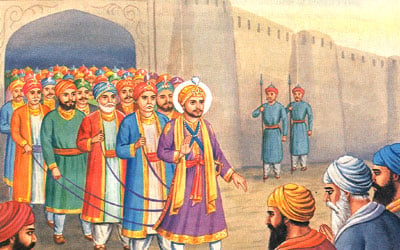 Guru Hargobind leaves Gwalior Jail with 52 Rajas This year (2014) on October 23,(next year its November, 11) the worldwide Sikh community celebrates the return of the sixth Nanak from detention at Gwalior Fort on the same day in about October/November 1619. This historic event coincides with the Hindu festival of Diwali. This has resulted in similarity of celebration amongst Sikhs and Hindus. When Murtaja Khan, Nawab of Lahore, noticed that Guru Ji had constructed Sri Akal Takhat Sahib, 'The Throne of the Almighty', at Amritsar, and was also strengthening his army, he informed the Mughal Emperor Jahangir about this. He also incorrectly emphasised that the Sikh Guru was making preparations to take revenge for his father's torture and martyrdom. When Jahangir came to know about this he at once sent Wazir Khan and Guncha Beg to Amritsar in order to arrest Guru Hargobind Sahib Ji. But Wazir Khan who was a well-wisher of the Sikh Guru’s requested the Guru to accompany them to Delhi as Emperor Jahangir wanted to meet him. .....More Contents: Top 1. 10. 20. 30. 40. 50. 60. 70. 80. 90. 29On the first weekend in April every year, Sikhs worldwide remembered the fallen Indian soldiers of World War 1 & 2. It was during the weekend of 2-4 April 1999, when hundreds of Sikhs from Belgium, the Netherlands, France and Britain first gathered in the Belgian town of Ypres (Ieper) to combine a celebration of Vaisakhi, the 300th anniversary of the birth of the Khalsa with a commemoration of the Indian soldiers who fell in the First World War in the former front zone around Ypres, the so-called Ypres Salient in Belgium. This article elaborates on how this event originated, and on how it bound together two very different groups of people whose paths first crossed during the Great War. Beyond doubt, this was one of the most remarkable commemorations of the First World War (1914-1918) that has ever taken place on these former battlefields. It was a unique event in other ways as well. It was unusual in that Ypres has no Sikh community: why then celebrate Vaisakhi in this small town, while most Belgian Sikhs live at the other end of the country or in Brussels, where they have Gurdwaras of their own? Continued... Contents: Top 1. 10. 20. 30. 40. 50. 60. 70. 80. 90. 30Bhai Avtar Singh (1925-2006) It is with great sorrow that the Sikh community acknowledges the loss of their most dedicated Gurbani Kirtania who passed away peacefully at about 10.50 PM (IST) on Friday, November 24th, 2006. Bhai Sahib was aged 81 years and was at his residence in India with his whole family present when this sad event took place. Bhai Sahib has always been an ardent exponent of Gurmat Sangeet and has practised the traditional style of Kirtan in keeping with the historic melodies of Guru's Ragas. He had travelled widely and his Sewa for the Panth will be dearly missed. Lately, he had stopped his journeys abroad as he was suffering with Leukaemia. Many Gurdwaras around the world held services in his honor and prayers were said for the support of his departed soul and for the support of his family. May Waheguru shower His blessings on this faithful supporter of the Dharma and may the Almighty give strength to his family so they may be able to endure His Hukam. ... Continued. Contents: Top 1. 10. 20. 30. 40. 50. 60. 70. 80. 90. 31Many sacred Sikh shrines can be found in the Sikh holy city of Amritsar. Of particular importance are the five sacred pools in this city. These are called sarovars and it is the practice of some Sikhs to have a dip in all five of these holy pools. The ritual, apart from being good exercise, acquaints one with the importance of these five sites. These five holy Sarovars are: Amritsar (1586) (now used more to refer to the city rather than the sarovar), Santokhsar (1587-88), Ramsar (1602-03), Kaulsar (1627), Bibeksar (1628). Among these famous five historical shrines is the famous Gurdwara, Ramsar. This is located south to south-east of the most important landmark for the Sikhs, Harimandir Sahib. Alongside the Ramsar Gurdwara is situated the smallest of the five sarovars called Ramsar. This is the location where in 1603, Guru Arjun Dev, the fifth Sikh Guru spent over a year in semi-seclusion along with his scribe, Bhai Gurdas to compile the holy Adi Granth, the sacred Sikh scripture for the first time. .....More Contents: Top 1. 10. 20. 30. 40. 50. 60. 70. 80. 90. 32Gurdwara Baba Atal Sahib is situated to the south of the Harimandir Sahib or Golden Temple, about 185 metres from Sarai (living accomodation) Guru Ram Das. The nine-storey octagonal tower, standing 40 metres high, is the tallest building in Amritsar. Originally a samadhi, or cenotaph, enshrining the remains of Baba Atal Rai, a son of Guru Hargobind, the sixth Guru of the Sikhs. However, it was transformed, with the passage of time, into a gurdwara, because, in India, "the process of deification is aided by the tendency to develop the tomb raised over a man of eminence into a temple".' According to popular tradition, Atal Rai, at the age of nine, restored his close friend Mohan, son of a widow, to life after his sudden demise. Guru Hargobind considered his son's act as being against the Sikh tradition and rebuked him for performing a feat involving a miracle and warned him that one's spiritual power should be displayed "in purity of doctrine and holiness of living". It is said that Atal Rai told his father that he would lay down his own life for breaking the law of nature by reviving his friend from the dead. .....More Contents: Top 1. 10. 20. 30. 40. 50. 60. 70. 80. 90. 33 Every year on December 21, the Sikh community honors the two elder sons of Guru Gobind Singh who on this day in 1705 showed the world how to fight in battle; no matter how young you may be - the duty to Dharam and country comes first; before personal needs, pleasure and comforts. It was around this time of the year that about 40 Sikhs in a mud fort were surrounded by over a 100,000 enemy soldiers. Then Baba Ajit Singh went before Guru Sahib and said, "Pita ji (dear father), permit me to go and fight on the battleground and grace me with the opportunity to make my life fruitful and worthy in service of the panth." Guru Gobind Singh hugged his beloved son and gave him a Shastr (weapon). Every father wants to see their child get married, but this was the time to fight the enemy and defend the path of righteousness. Death was waiting and today Baba Ajit Singh would be marrying death. The sun was about to rise. Guru saw that Nawab Wazir Khan wanted to take the fort of Chamkaur in one attempt. The Nawab surrounded the fort with his armies. Baba Ajit Singh boldly and valiantly came out of fort, accompanied with 5 other Singhs, .....More Contents: Top 1. 10. 20. 30. 40. 50. 60. 70. 80. 90. 34Village of Children Something about the village graveyard set it apart. During my travels I had seen literally hundreds of graveyards. Usually graveyards are somber and somewhat resigned under the weight of death. But this one was different: besides been well-kept - which in itself was not unusual - it was designed more like a garden of life than a cradle of death. What set it truly apart was the cheerfulness of its structure. Its' shady trees and sunny flowers seductively invited me in. Graveyards were my favourite resting places. It seemed that as soon as one exited a womb, Maya (worldy attractions) became a human's sole companion until the gates of a graveyard. Perhaps it was the absence of Maya in such places that kept my hopes of enlightenment alive. I had left home when I had turned twenty. Although I didn't know it then, I had set out to find a place free of illusions. I had travelled to majestic temples, sober ashrams, holy rivers, renowned sadhus and any other religious place I had been told about, yet my mind was as restless as it was when I had first started. The holy places and the holy people at these places were among the most devout followers of Maya. .....More Contents: Top 1. 10. 20. 30. 40. 50. 60. 70. 80. 90. 35After teaching people in Lahore to live honestly Guru Nanak ji returned to Talwandi to see his parents. Then after a short stay, he proceeded with Mardana, his long time companion on a extensive journey to visit the sacred places of pilgrimage of the Hindus. On the way they reached Bhai Lalo’s workshop at Saidpur, presently known as Eminabad in Pakistan. Bhai Lalo earned his living by honest work or Kirat Karni. He was nearly seventeen years older than Guru Nanak. When Lalo saw two holy men coming towards him, he put aside his work and spread a bed for them and went to get some food (or langar) for them. As the kitchen was supposed to be the most pure and clean place in a house, Bhai Lalo asked Guru Nanak to come there and have his meal. Guru ji said “Bhai Lalo, every place is clean and pure for us. Please bring the meal here.” So the meal was brought out and Mardana then divided it into three parts and they all ate it together. “This meal tastes like nectar. What has been put in it?” asked Bhai Mardana. Guru Nanak replied “That was the taste of truthfulness and honesty that you tasted. This taste is above the taste of worldly delicacies.” .....More Contents: Top 1. 10. 20. 30. 40. 50. 60. 70. 80. 90. 36In the era of Guru Ram Das ji, one cannot leave out Rajni, youngest daughter of Rai Duni Chand, revenue collector (kardar) of Patti. Rajni was a Sikh, a disciple of the Guru. One day she was sitting with her sisters admiring some new clothing they all had received from their father. The girls were ecstatic and exclaiming how good their father was to them. Rajni observed that all gifts are ultimately from God. Their father was merely an instrument of His greatness. Unfortunately for her, her father overheard her comment and became very angry. It was not the first time that she incurred his wrath because of her extreme piety. The infuriated father, believing her to be an ungrateful wretch, married her to a leper with a taunt that he would see how her God would help her lead a normal life. The leper was severely disfigured and a foul smell came from his body. The poor girl had accepted her fate unchangingly and worked hard to maintain herself and her crippled husband. She kept repeating the name of God (Naam Simran), and was certain that God was testing her with this turn of events. She was forced to beg for a living. Still she bathed, fed and cared lovingly for her leper husband, never losing faith. .....More Contents: Top 1. 10. 20. 30. 40. 50. 60. 70. 80. 90. 37On Baisakhi Day, 14 April 1699, hundreds of thousands of people gathered around Guru Gobind Singh's divine temporal seat at Anandpur Sahib in northern India. The Guru addressed the Sangat congregation with a most stirring oration on his divine mission of restoring their faith and preserving the Sikh dharma (religion). After his inspirational discourse, he flashed his unsheathed Kirpan sword and announced that every great deed was preceded by an equally great sacrifice: He demanded the sacrifice of one head for Dharam (path of righteousness). After some trepidation, one person stood up and offered himself. The Guru took him inside a separate tent. A little later he reappeared with his sword dripping with fresh blood, and asked for another head. One by one four more earnest devotees offered their heads. Every time the Guru took the person inside the tent, he came out with more and more fresh blood dripping from the sword in his hand. This was the beginning of the ceremony called the Amrit Sanchar. Since 1699, many millions of Sikhs have walked along this same path set by their tenth master. Every year, this important day is now celebrated by Sikhs all over the world on April 14. Whenever a Sikh feels that he or she is ready to commit to the strict discipline of dharma and feels the deep love and affection for the Guru, he or she will undergo this baptism ceremony of the Khanda (or double-edged sword). With this ceremony comes the devotion to the principles laid down in 1699 by the Guru - Bani, Bana, Kakkar, Rehat and Gurmat. .....More Contents: Top 1. 10. 20. 30. 40. 50. 60. 70. 80. 90. 38Sikhism is the youngest of the world religions; it is barely five hundred years old. Its founder, Guru Nanak, was born in 1469. Guru Nanak spread a simple message of "Ek Ong Kar": we are all one, created by the "One Creator of all Creation". This was at a time when India was being torn apart by casteism, sectarianism, religious factions, and fanaticism. He aligned with no religion, and respected all religions. He expressed the reality that there is only one God and many paths, and the Name of God is Truth, "Sat Nam". Guru Nanak's followers were called Sikhs -seekers of truth. He taught them to bow only before God, and to link themselves to the Guru, the Light of Truth, who lives always in direct consciousness of God, experiencing no separation. Through words and example, the Guru demonstrates to followers how to experience God within themselves, bringing them from darkness into light. The first Sikh Guru was a humble bearer of this Light of Truth. He opposed superstition, injustice, and hypocrisy and inspired seekers by singing divine songs which touched the hearts of the most callous listeners. These songs were recorded, and formed the beginnings of the Sikhs' sacred writings, later to become the "Siri Guru Granth Sahib". ....Continued Contents: Top 1. 10. 20. 30. 40. 50. 60. 70. 80. 90. 39Sikhism, the youngest of the world's religions, is barely five hundred years old. Its founder, Guru Nanak, was born in 1469. Guru Nanak spread a simple message of "Ek Ong Kar" : we are all one, created by the One Creator of all Creation. This was at a time when India was being torn apart by casteism, sectarianism, religious factions, and fanaticism. He aligned with no religion, and respected all religions. He expressed the reality that there is only one God and many paths, and the Name of God is Truth, "Sat Nam". Guru Nanak's followers were called Sikhs - seekers of truth. He taught them to bow only before God, and to link themselves to the Guru, the Light of Truth. Among other things, Guru Nanak taught 3 simple ways of life; they are: Nam Japna - To meditate on God's Name and recite His praises; Dharam di Kirat Karni - To work and earn by the "sweat of the brow" or effort of the mind; and Vand Ke Chakna - To generously share the fruits of one's labor with others .....More Contents: Top 1. 10. 20. 30. 40. 50. 60. 70. 80. 90. 40Bhai Manjh In the time of Guru Arjan Dev ji, there was a powerful and rich Jatt by the name of Teeratha. Teeratha was a follower of the Muslim sect of Sakhee Sarvar. He was the local leader of this sect and had hundreds of followers who all respected him. Teeratha would regularly lead the members of this sect on a pilgrimage to the main Sakhee Sarvar shrine now in Pakistan Once when passing through Amritsar, Teeratha decided to visit Guru Arjan. He had heard that there was a great Guru who had a large following and this Guru was spiritually enlightened. He was curious to know who this Guru was and what he would say. He decided to stop off and see the Darbar of Guru Arjan. When he saw the Darbar, he saw that people of many different backgrounds, and castes were all sitting together and living in harmony. He also heard the kirtan in the darbar and the kirtan left a permanent mark on him. He heard of the great gift of naam and the thirst to have this gift rose within him. He was the leader of hundreds of "Sakhee Sarvar" followers but he could no longer follow that path. He realised that Sikhi was the path he must follow. .....More Contents: Top 1. 10. 20. 30. 40. 50. 60. 70. 80. 90. 41Harmandar Sahib, in Punjabi literally means "Temple of God". This is the most important Gurdwara of historical, spiritual, and emotional significance to the Sikhs and is situated in Amritsar, Punjab in north west India. Guru Amar Das, the third Sikh Guru first conceived of this sacred place; although construction did not begin until Guru Ram Das became the Guru. Maharaja Ranjit Singh had the structure plated with gold in the early 19th century for the first time. During 2003, the gold plating was replaced with new gold.
Contents: Top 1. 10. 20. 30. 40. 50. 60. 70. 80. 90. 42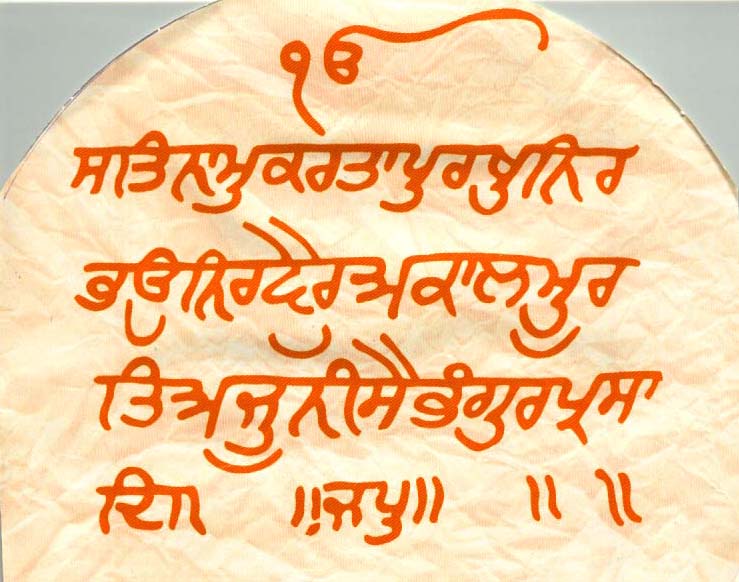 Mool Mantar is the most important composition contained within the Sri Guru Granth Sahib; it is the basis of Sikhism. It’s importance is emphasised by the fact that it is the first composition to appear in the holy Granth and that it appears before the commencement of most of the Raag section within this sacred volume. Original Gurmukhi Text:
The succeeding bani called the Japji Sahib and the rest of the sacred Granth totalling 1430 pages, are efforts to explain that which is contained within the Mool Mantar. .....More Contents: Top 1. 10. 20. 30. 40. 50. 60. 70. 80. 90. 43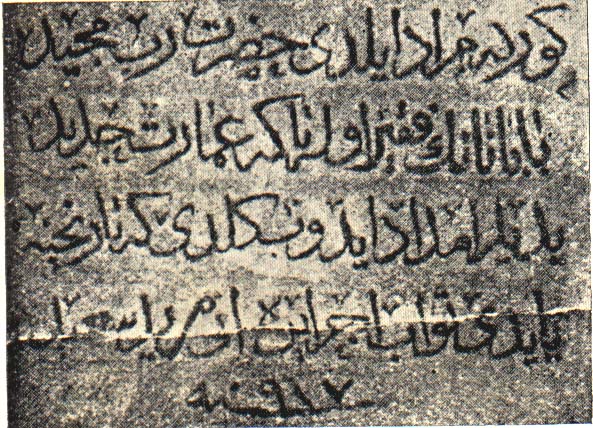 Inscription on a stone slab found in Baghdad: "Behold! How a wish has been fulfilled by Holy and High Providence. That the building of Baba Nanak has been newly built with the help of seven autat (great valis). That the happy murad of God (Baba Nanak) has started a fountain of grace issuing new water in the land. 917 Hijri (1511 AD)" Guru Nanak in Baghdad Swami Ananda Acharya visited the shrine of Guru Nanak in Baghdad and wrote the following: Upon this simple slab of granite did thou sit, discoursing of fraternal love and holy light, O Guru Nanak, Prince among India’s holy sons. What song from the source of Seven Waters thou didst sing to charm the soul of Iran! What place from Himalaya’s lonely caves and forests thou didst carry to the vinegroves and rose-gardens of Baghdad? What light from Badrinath’s snowy peak thou didst bear to illumine the heart of Bahlol, thy saintly Persian disciple? Eighty-four nights Bahlol hearkened to thy words of Life and the Path and Spring Eternal, while the moon waxed and waned in the pomegranate grove beside the grassy desert of the dead. And after thou hast left him to return to thy beloved Bharat’s land, the fakir, it is said, would speak to none nor listen to the voice of man or angel; ....Continued Contents: Top 1. 10. 20. 30. 40. 50. 60. 70. 80. 90. 44Akal Takhat (Punjabi: ਅਕਾਲ ਤਖ਼ਤ) means the Throne of the Immortal and is historically the highest political institution of the Sikhs. "Akal" means "The Timeless One" - another term for God. "Takhat" means "throne" in Persian. This is one of a total of five takhat of the Sikhs. The Akal Takhat is an impressive building that sits directly in front of the causeway leading to the Golden Temple in Amritsar. This institution was founded by Guru Hargobind on July 2, 1606 and was established as the place from which the spiritual and temporal (Miri Piri) concerns of the Sikh community could be acted upon. It stood as a symbol of political bulwark against the Mughal Emperors in the 17th and 18th century. Various attacks on the Akal Takhat and Harmandar Sahib have taken place in the past by Ahmed Shah Abdali and Massa Rangar in the 18 century. On June 4, 1984, the Indian Army damaged the outer façade of the Akal Takhat while attempting to flush out Sikh militants in a controversial military operation known as Operation Bluestar. .....More Contents: Top 1. 10. 20. 30. 40. 50. 60. 70. 80. 90. 45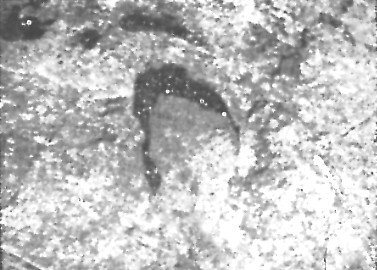 Footprint in stone, believed to be that of Guru Nanak. Chungtang, North Sikkim In his lifetime Guru Nanak, the founder of the Sikh religion travelled to distant places and one such place was Tibet. The Guru is well respected by Tibetan Buddhists who consider him a saint; the Dalai Lama, spiritual leader of Buddhists in Tibet, has confirmed it in his discussions with some Sikh leaders that Tibetans revere Guru Nanak as a Buddhist saint under the name of Guru Gompka Maharaj. According to the local legends of North Sikkim, some people approached the respected Guru with an appeal for help. The lake had remained frozen during most of the year and rendered it incapable as a source of water. Guru Nanak Dev ji is said to have touched the lake with his foot, and it has never frozen since. Guru Nanak's footprints, a robe and a water-carrying utensil are preserved in a nearby place called Lachen Gompha. Here the locals refer to the Guru as Rimpoche Nanak Guru who on his way to Tibet had rested there. .....More Contents: Top 1. 10. 20. 30. 40. 50. 60. 70. 80. 90. 46Guru Nanak in Tibet In his lifetime Guru Nanak travelled to distant places and one such place was Tibet. Guru Nanak is well respected by Tibetan Buddhists who consider him a saint; The Dalai Lama, spiritual leader of Buddhists in Tibet, has confirmed it in his discussions with some Sikh leaders that Tibetans revere Guru Nanak as a Buddhist saint under the name of Guru Gompka Maharaj. According to the local legends of North Sikkim, some people approached Guru Ji with an appeal for help. The lake had remained frozen during most of the year and rendered it incapable as a source of water. Guru Nanak Dev Ji is said to have touched the lake with his foot, and it has never frozen since. Guru Nanak's footprints, a robe and a water-carrying utensil are preserved in a nearby place called Lachen Gompha. Here the locals refer to Guru Ji as Rimpoche Nanak Guru who on his way to Tibet had rested there. Some grazers projected another problem to Guru Nanak Ji. Due to the effect of altitude, their virility was affected. They requested the Guru to do something about it. Guru Nanak blessed the lake, saying, "Whosoever takes the water of this lake will gain virility and strength and will be blessed with children." The people of the area have firm faith in Guru's words and consider the water of the lake as nectar. A Gurdwara was constructed in eighties to commemorate Guru Nanak's visit to the place ....Continued Contents: Top 1. 10. 20. 30. 40. 50. 60. 70. 80. 90. 47Under a large papal tree, the priest pointed out a stone slab on which were carved two feet, laid with roses. “The Guru’s,” he said. “It is at this spot that Guru Nanak sat in meditation. In that little shrine behind you, are buried the ashes of a Nepali king.” We sat together on mossy steps leading up to the shrine, a strong scent of jasmine in the air and two bulbuls (passerine songbirds) pecking about the carved feet. And there he told me the story of the temple of the golden book and the shrine against which we sat. It seems a Malla king of the early sixteenth century – the priest did not know his name – suffered a disturbed mind. His brothers, alarmed by his behaviour, banished him to India. Roaming forlornly through the holy city of Benaras he came upon the saint Guru Nanak and begged him to cure his affliction. After many visits and much beseeching, the guru advised the king to return to his kingdom where his health would be restored. Miraculously, the saint preceded the king to Kathmandu for there he was, meditating under a papal tree on a hill beside the river. .....More Contents: Top 1. 10. 20. 30. 40. 50. 60. 70. 80. 90. 48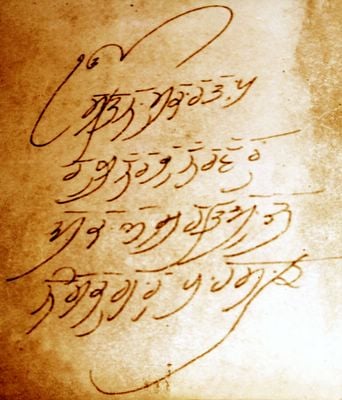 Japji sahib is the name given to the first bani (holy composition) to appear at the very beginning of the Sri Guru Granth Sahib from Page 1 to Page 8 of the sacred Granth (book) of the Sikhs. The composition consists of the Mool Mantar (root mantar), a set of 38 Pauris (hymns) and a final Salok. Japji sahib is regarded as the most important bani or 'set of verses' by the Sikhs and is recited every morning by all practising faithful of this religion. The word ‘Jap’ means to ‘recite’ or ‘to ‘chant’. ‘ji’ is a word that is used to show respect as is the word ‘sahib’. This Gurbani (words of the Guru) is said to be the condensation of the whole of the Sri Guru Granth Sahib and whoever recites this Bani with love, dedication and humility will have the complete blessing of Guru Nanak Dev. .....More Contents: Top 1. 10. 20. 30. 40. 50. 60. 70. 80. 90. 49Every year on 23rd July, the Sikhs celebrate the birthday of their eighth Guru, Guru Har Krishan - also fondly called "Bal Guru" ("Child Guru") as Guru ji attained Guruship at a young age of just over 5 years old. Each year during late July, huge celebrations are held at Gurdwara Bangla Sahib in Delhi, India to commemorate this auspicious day. It was at this location in Delhi where Guru ji stayed at Raja Jai Singh's bungalow during the reign of Mughal Emperor Aurangzeb. Guru Har Krishan was born on July 7, 1656 at Kiratpur Sahib, Punjab, India and was the second son of Guru Har Rai and Mata Krishan Kaur Ji. When the Guru came to Delhi, he stayed at the bungalow of Raja Jai Singh. There was a severe smallpox epidemic and many thousands of people were dying. By Guru's blessing, the pool at Bangla Sahib, which is built at the site of Raja Jai Singh's bungalow provided cure for thousands of suffering people. Gurdwara Bangla Sahib is thus blessed by the healing powers of this eighth Sikh Guru. The tenth Sikh Guru, Guru Gobind Singh wrote in his famous "Vaar Sri Bhagauti Ji Ki" – "Remember Sri Harkrishan, whose vision dispels all pains". This shrine is not only visited by thousands of Sikhs but also people of other faiths. .....More Contents: Top 1. 10. 20. 30. 40. 50. 60. 70. 80. 90. 50On September 12, the Sikhs worldwide will remember with honor the supreme sacrifice of their brave comrades who for the security and safeguard of their country willingly laid down their lives. The bravery of these soldiers was inspired by the heart piercing message of their tenth Guru, Guru Gobind Singh. .....More Contents: Top 1. 10. 20. 30. 40. 50. 60. 70. 80. 90. 51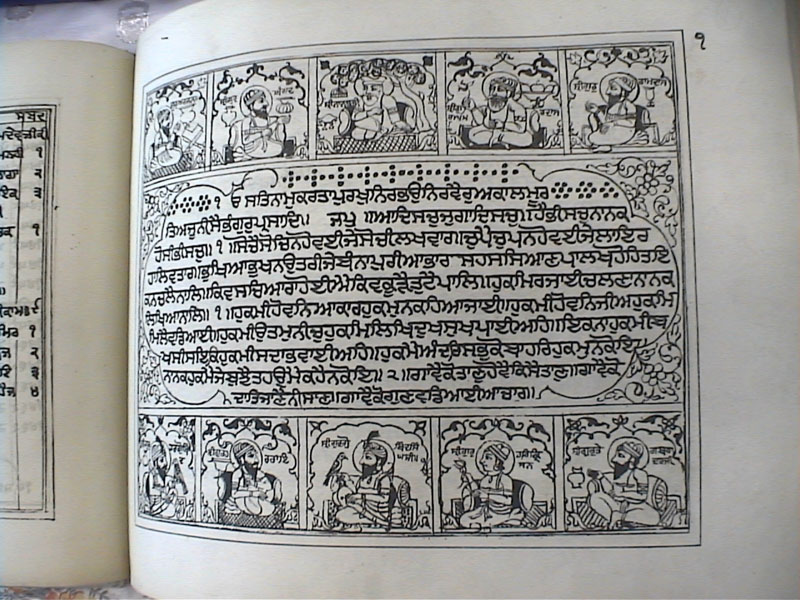 An old Guru Granth Sahib Bir restored by The Sikh Education Council (UK) thesikhway.com On September 1, 2004, the Sikhs celebrated the 400th year of the first installation of their holy scriptures called the Sri Guru Granth Sahib. The Guru Granth Sahib was compiled and first installed at Harimandir Sahib (Golden Temple) in Amritsar in 1604. The holy book contains hymns written by the Sikh Gurus, saints and scholars of different religions and was completed on the 30 August 1604, it contains an important message for the whole of humanity. The Guruship was passed to the holy Granth in 1708, some 104 year after its first installation in 1604. The holy Granth provides unique and unequalled guidance and advice for the whole of the human race. It is the torch that will lead humanity out of Kaljug, (the dark era) to life in peace, tranquillity and spiritual enlightenment for all the nations of the World. "Guru Granth Sahib transcends creed and caste, cant and convention. It does not belong to the Sikhs alone. It consecrates the sayings of 11 Hindu bhakats and as many bard poets and seven Muslims, along with the teachings of six Sikh gurus. No other religion has included in its holy book the sayings of others, however revered." Quotation from Deccan Herald .....More Contents: Top 1. 10. 20. 30. 40. 50. 60. 70. 80. 90. 52 Baba Deep Singh - a brilliant scholar and brave soldier. Baba Deep Singh Shahid (26 January 1682 -13 November 1757): Every year on January 26, the global Sikh community celebrate the birthday of this courageous soldier of God. He is one of the most honoured martyrs in Sikh history and the founder of the Shahid Misl as well as of the Damdami Taksal. He was a tall, strong, and uncommonly brave Sikh who was a bold and fearless saint-soldier, ever ready to risk his life for the Panth.
53Guru Angad Dev (1504 - 1552) was the second of the ten Gurus of Sikhism. Guru ji's original name was Bhai Lehna; Bhai sahib following in the footsteps of Guru Nanak, who was the first Sikh Guru and founder of the Sikh religion became the second Sikh spiritual master on September 18 1539. Guru Angad Dev was born on April 18, 1504 and this auspicious day is doubly celebrated by the Sikhs every year together with the birthday of their ninth master, Guru Tegh Bahadur on this same day. The institution of langar was given prominence and further maintained and developed during the Guruship of the second master. The Guru's wife, Mata Khivi personally worked in the kitchen to prepare the food and guide others in managing this important function of the Sikh panth (path). She also served food to the members of the community and visitors; her devotion to this institution finds mention in Guru Granth Sahib, the holy book of the Sikhs. Guru Angad also invented the present form of the Gurmukhi script. It became the medium of writing the Punjabi language in which the hymns of the Gurus are expressed. This step had a far-reaching purpose and impact. Firstly, it gave the common people a language that was simple to learn and write. .....More 54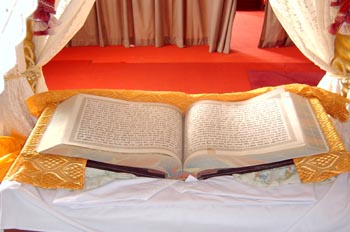 A peaceful, happy and contented life has become elusive for the modern man or woman! Feelings of self worth, faith in the Omnipotent; unborn Creator; Saviour; kind, just Benefactor can be achieved by internalising the Guru’s word and hoping for His Grace. Through His Hukam (command), His love and glory, the purpose of life becomes crystal clear and as a by-product, we start getting satisfaction in life; begin developing insights and start using tools of practical wisdom. The Guru’s grace produces in human beings intensive elation, high level of well-being and higher and altered states of consciousness, awakened intelligence and re-appreciating of life through amazement. Internalizing the Guru’s work makes a person return to humanity and humility. The Guru allows us to be free, to be ourselves, and to have worldly satisfaction, peace of mind and perpetual joy or (Anand). The Guru expects us to challenge the status quo, take risks, follow the righteous path by replacing the following five evil vices of the mind: kam, krodh, lobh, moh and ahankar .....More 55In 2015, this week, from October 20, the worldwide Sikh community will celebrate 307 years of Guruship of their holy scriptures called the Sri Guru Granth Sahib. In October 1708, the tenth and last human Sikh Guru, Guru Gobind Singh before setting off for his heavenly abode, installed the Granth Sahib as the final and perpetual Sikh Guru. He said "Sabh Sikhan ko hukam hai, Guru maneo Granth" - "Every Sikh is ordered to accept the Granth as the Guru" and so from that day on, this Granth has served as the "living Guru" of the Sikhs. The Sri Guru Granth Sahib was initially called the Adi Granth and was compiled and first installed at Harimandir Sahib in Amritsar in 1604. The holy book contains hymns written by saints and scholars of different religions and was completed on the 30 August 1604. The SGGS contains an important message for the whole of humanity. The Guru Granth Sahib provides unique and unequalled guidance and advice for the whole of the human race. It is the torch that will lead humanity out of Kaljug, (the dark era) to a life in peace, tranquillity and spiritual enlightenment for all the nations of the World. .....More Contents: Top 1. 10. 20. 30. 40. 50. 60. 70. 80. 90. 56On 28 November every year, the Sikhs celebrate the birthday of the third son of Guru Gobind Singh, Sahibzada Zorawar Singh (28 November 1696 - 26 December 1705). He was born to Mata Jito ji (also known as Mata Sundari ji) at Anandpur on this sacred day in 1696 and was barely nine years old at the time of the evacuation of Anandpur on the night of 5-6 December 1705. Since the death of his mother, Mata Jito, on 5 December 1700, his grandmother Mata Gujari who had been especially attached to young Zorawar Singh and his infant brother, Fateh Singh took charge of both of them as the column moved out of Anandpur. While crossing on horseback the rivulet Sirsa, then in flood, the three were separated from Guru Gobind Singh and the main party of Sikhs. .....More 57Guru Amar Das (Gurmukhi: ਗੁਰੂ ਅਮਰ ਦਾਸ) (5 May 1479 - 1 September 1574) was the third of the ten Gurus of Sikhism; he became Guru on 16 April 1552. Interestingly, he was aged of 73 when he was enthroned as Sikh Guru following in the footsteps of Sri Guru Angad Dev Sahib Ji, who left for his heavenly abode on 29 March 1552 aged 48. Becoming a Sikh Guru at the age of 73 made Guru Amar Das ji the oldest person to attain Guruship. Guru Ji was the eldest son of Sri Tej Bhan ji a farmer and trader and Mata Lachmi Ji, his devoted mother. He was a shopkeeper and lived in a village called Basarke which is near Amritsar. The third Sikh Guru was married to Mata Mansa Devi and they had four children - Two sons named Bhai Mohan and Bhai Mohri and two daughters named Bibi Dani Ji and younger daughter named Bibi Bhani Ji. Bibi Bhani later married Bhai Jetha who became the fourth Sikh Guru, Guru Ram Das. See article Platforms of Jetha. .....More 58Darshan is a Punjabi word which means "viewing" or "meeting". I woke up earlier than usual on darshan day. The time must have been a little after midnight. Something seemed different that day. With difficulty I lifted my head and peeped out of the small window of my hut. Although I could not see anything due to the pitch darkness of the night, I sensed some activity in the trees. I closed my eyes and listened carefully. To my surprise I sensed the trees were in the same jovial mood as they were when spring was approaching. Winter had just started; it would be months before even the slightest hint of spring. I lay down my head back on the pillow and realised that I too was in a jovial mood - my heart too hinted some hope and excitement. That was quite a change from the past few years of my miserable and painful existence. .....More 59
Bhai Lehna decided to stay with Guru Nanak at Kartarpur. However, Bhai Lehna’s companions left without him and continued their journey for Jawalamukhi to worship the goddess Durga. After staying for a few days at Kartarpur, Bhai sahib said to himself, ‘Let me go to my village and tell my family and friends about my plans to stay with Guru Nanak. Then I shall come back and stay with the Guru for a longer period and no one will worry about my whereabouts.’' Bhai sahib then went back to his village called Khadur Sahib in district Amritsar. He stayed at his village for a few days only but soon, he was ready to return to Kartarpur as he wanted to be with the Guru. He had enjoyed being in the company of the Guru and the Sangat; he wanted to learn from the Guru and to serve him and the community; this was the custom in those days. He wanted to become a disciple of Guru Nanak and learn true wisdom about life from him. Before starting his journey back, he said to himself, ‘I must take something with me for the Guru. He runs a free kitchen. Scores of people take their meals from there. They do not have to pay anything for the meals. I should take something for the Langar or "free kitchen for all". But what should I take? Yes, let it be as heavy a load of salt as I can carry on my head.’ ....Continued. Contents: Top 1. 10. 20. 30. 40. 50. 60. 70. 80. 90. 60After travelling through Arabia and many other countries, in 1521 A.D during the summer season, Guru Nanak reached a place called Hasan Abdal. This place is about fifty kilometres from Rawalpindi in Pakistan to the west side of the mountains. This is hilly area and some places here have natural fountains which flow from the ground. Guru ji with Bhai Mardana and a small party halted at this place at the foot of a hill. Under a shady cool tree, Guru Nanak and Bhai Mardana started reciting Kirtan as was their normal practise. Slowly, the local devotees began to gather around the Guru. Soon, a large crowd of people began regularly to gather around the Guru. He talked to them about God and the true path of the holy. He told them about the greatness of God and His creations. More and more people began to gather around him every day. On the top of the nearby hill, there lived a Muslim pir (priest). His name was Bawa Wali Qandhari. Wali Qandhari had established a celebrated dera (holy place) at this hill at Hasan Abdal, near a natural fountain. .....More Contents: Top 1. 10. 20. 30. 40. 50. 60. 70. 80. 90. 61On one of his mission to enlighten people, Guru Nanak Dev ji travelled many miles in the wilderness of Assam. When he rested close to the out-skirts of a small town, he heard something very distressing and painful. The local people who had gathered to listen to the Kirtan in the evening told Guru ji that there lived a tribe in the jungle of man-eaters. The tribe used to capture anyone who ventured into the forest. The people lived in constant fear from this tribe of cannibals. Many children and adults who had gone into the forest to collect fire-wood had never returned and were feared dead. The local expressed to Guru ji their concern that the cannibals had eaten their friends and relations who had not returned from the forest. On hearing this the Guru became very sad and was lost in thought. He decided to act at once. Guru ji decided that he must meet these man-eaters and must make them give up this cruel way of life. He decided that he must end the misery of the town's people and free them from this constant fear of becoming victims of these merciless cannibals. .....More Contents: Top 1. 10. 20. 30. 40. 50. 60. 70. 80. 90. 62Guru Nanak and Bhai Mardana continued to travel to many different parts of the world. One day, they arrived at a beautiful location near Lahore, which is a historic city in present-day Pakistan. The Guru decided to setup their camp outside the city. He sat on a green, grassy spot near the river Ravi. Sitting at this tranquil spot, the Guru fixed his thoughts on God and meditated for a little while. Bhai Mardana began singing the Guru’s sacred songs or hymns called Shabads. At times, the Guru himself would join in and begin to sing Kirtan as well. Soon, people who heard these simple but very heart rendering melodies began to gather around the Guru and Bhai Mardana. Folks everywhere loved to hear these sacred songs. They also liked to hear the Guru’s talks about life and the importance of meditation or Simran. One day, during such a melodious recitals, a rich man of Lahore came to the Guru. He asked the Guru to go with him to his house. The Guru said, "I am all right here. I am not really fond of grand houses. Moreover, my visit to your house might cause you inconvenience and unnecessary trouble." .....More 63Guru Nanak Dev while on his eastward journey reached Haridwar. It is on the banks of the river Ganges and is one of the major centers for Hindu pilgrimage. The people, gathered there in large numbers, were bathing in the holy river. Guru Nanak Dev observed many people throwing water towards the sun in the east. The Guru had already heard about this meaningless ritual. He, therefore, thought it the right place and the proper time to give correct guidance that those kinds of mindless hollow rituals have no value. These people who throwing handfuls of water from river Ganges, towards the sun in the east, believed that by this ritual they could offer water to their dead elders in the next world. This next world was in the East from where the Sun rose. Guru Nanak Dev entered the river for purposes of bathing as other common pilgrims were doing. Instead of throwing water to the east, he, however, started throwing water in the opposite direction towards the west where Guru ji farm was. Taking him as a naive visitor, the nearby bathers told him that he was not performing the rituals correctly. They advised him to throw water to the east. Guru ji continued throwing water towards the west pretending that he was very much absorbed in the 'holy' act and had not heard anything. Soon, many people gathered there to tell him that the proper method of performing the ritual was to throw water in the other direction. .....More 64Sri Lehna was a pious man who lived in the village of Khadur near the town of Tarn Taran, in present-day district of Amritsar. He was a good and honest man, whose skills and hard work as a shopkeeper had made him a very wealthy man. A Hindu he was a worshipper of the goddess Durga as were many other people of his village. Every year he led a large group of his villagers on a pilgrimage to a famous temple of Durga in the foothills of the Himalayas called Jawalamukhi. He wore traditional bands of bells on his ankles and wrists dancing along the way singing bajans (songs) about the stories of the fabled tales of the battles of the goddess with mystical demons. Arriving at the temple he and many other bands of pilgrims would dance before the goddess with their bells tinkling when they danced about. He had done this his whole life until one day as an old man he chanced to meet with another man in his village who was a Sikh, a follower of Guru Nanak. This man's name was Bhai Jodha. He was not a worshipper of Durga, as no Sikh worships any of the Hindu gods or goddesses. All Sikhs are worshippers of one God, commonly called "Waheguru". Bhai Jodha did not visit Durga’s temple. .....More 65Bhagat Dhanna ji was a Sikh Bhagat who was born in about 1415, at village of Dhuan Kalan near Deoli city, in the Tonk district, Rajasthan, present day North West India. He was a simple Indian farmer. He worked hard on his farm all day tending his crops. He used to go past the house of this clever Pundit (priest) everyday on the way to his work on the farm. Dhanna ji used to listen to the Pundit singing religions verses and carry out various ritualistic acts, which were beyond the understanding of this simple Jatt (farmer). He found these acts intriguing but never asked the religious man about any of the things that he had observed in the many years that he had gone past the Pundit’s house. One day, Bhai Dhanna ji was passing the pundit's house and noticed that the religious man was feeding his Thakur - a stone idol. Bhai Dhanna ji was quite puzzled by what he was observing. On this occasion as he had some free time, he went and asked the Pundit, "Pundit Ji, What are you doing?" The Pundit was very hungry and wanted to get this feeding over as soon as possible and really wasn't in a mood for Bhai Dhanna ji's simple inquiries. He replied, "Oh, nothing, I am just feeding my Thakur. Now if you will excuse me..." Bhai Dhanna ji found that incredibly funny, "What is the use of feeding a stone?" .....More Contents: Top 1. 10. 20. 30. 40. 50. 60. 70. 80. 90. 66Akbar was a famous king of India. He was a kind and good king and respected the Sikh Gurus for their sensible practises and their fair and just teachings. In the year 1569, Akbar came to the Punjab and wanted to see the Guru. So he sent a message to Guru Amar Das ji that he was coming to visit him. The Sikhs were very happy at the news. Some Sikhs thought that special arrangements should be made to welcome the king. But the Guru said, "Akbar is as much a human being as others are. The Guru's place is open to all. The king and his subjects, the Hindus and the Muslims, the rich and the poor are all equal here. So Akbar will be welcomed like all other visitors to the Guru's place and special arrangements need not be made."
The king, along with the Rajah of Haripur, arrived in Goindwal where the Guru lived. The Guru and a few Sikhs received them warmly. They were shown round the place. Akbar was interested to know how the Guru's Langar was run. Simple food was served to all in the Guru's Langar. It remained open day and night. .....More 67During the times of Sher-e-Panjab, Maharaja Ranjit Singh, the Sikh Raaj (kingdom) stretched from the River Sutlej to Kabul (in Afghanistan). His key general was Sardar Hari Singh Nalwa, who was a Rehatvan (strictly observant) Sikh of the Guru. Once, when Hari Singh Nalwa had set up camp with his army in Jamrud, in Afghanistan, a local Muslim woman called 'Bano' happened to watch the Sikhs set up camp. She found Hari Singh Nalwa very handsome and attractive, and had decided that he would be a good match and a fine man by which to have a son. One day, Bano came to see Hari Singh Nalwa. He was sitting in his tent, when his guards told him that, there was a local woman who wished to see him. Not knowing who this lady was or what she wanted, Hari Singh gave permission for her to come in and see him. Bano said, "I have heard of the Sikhs. You are remarkable people. I have been watching you from a distance. I am not married and I have no children, but I desire to have a son who is like you." Hari Singh, not understanding the motivation or intention of Bano, said, "May Waheguru bless you that you may have a son with the qualities of a Sikh." Bano irritably said, "I want to have a son with you Sardar Ji." .....More 68Bhagat Beni also spelt as ‘’Baini’’ and ‘’Baynee’’ is one of the fifteen Sikh Bhagats and a Sufi saint who is believed to have been born in India. His Bani consisting of 3 shabads is included in the Guru Granth Sahib. The place and year of his birth are unknown but Guru Nanak Dev refers to Bhagat Beni as "a Master of Yoga and meditation, and the spiritual wisdom of the Guru; He knows none other than God" (see last quote below - Guru Granth pg 1390) In spite of all this uncertainty, he can be called a contemporary of Guru Nanak. It seems that Beni lived in this part of the world probably in northern India, somewhere between mid-15th century to the mid-16th century. He was a well educated scholar, with a very humble temperament. From his bani, it is clear that he was ever ready to serve the true preceptor which provided him real comfort in the manner depicted in the holy Granth: "O my Beloved, I have no one except You. Without You, nothing else pleases me. Loving You, I am at peace." SGGS-61 Bhagat Beni makes a severe denunciation of the Hindu rituals and austerities of "Hath Yoga" so that common man learns of the real motive of true religion i.e. the remembrance of the True Lord and the cultivation of the Divine Name. .....More 69Once a king in India went to Guru Nanak Dev Ji and asked: "O Guru! As you told us, God Himself supports His true worshipper, but God has so many apostles, why does He support Himself? Why does He not send His apostles to help the worshipper?" As he said this, his own son who was playing on the bank of a river nearby slipped into the river. The king did not wait for a second and jumped in the river as well to save his child. After saving his child he returned to the Guru. The Guru asked: "My dear friend, you were sitting here with me a minute ago and why did you jump in the river?" The king explained that his son had slipped into the river and he went to save him. Then the Guru asked: "Dear friend, you have so many servants, why did you jump in the river yourself? Why did not you send your servants to save him?" .....More Contents: Top 1. 10. 20. 30. 40. 50. 60. 70. 80. 90. 70As the end of the year approaches, on December 26 every year, the global world Sikh community commemorate the martyrdom of three of their most beloved figures of the Guru household. On this darkest of days, their youngest hero and bravest comrade of Sikhism, Sahibzada Fateh Singh (1699-1705) who was the youngest of Guru Gobind Singh's four sons, Sahibzada Zorawar Singh (1696-1705), his elder brother and Mata Gujari ji, his grandmother sacrificed their lives for their faith and the right to remain Sikhs. Baba Fateh Singh with his elder brother, set a precedence in Sikh history (and perhaps also in world history) by becoming the youngest known martyrs to sacrifice their lives for their principles and the right to practice their religion and their faith without coercion or the threat of terror. Even at such a tender age of just 6 years, Baba Fateh Singh showed courage, determination and free-will not to be intimidated by the cruel, barbaric and unjust authorities of the time. He showed composure, fearlessness and the renowned trait of unparalleled heroism becoming of the Sikh leadership and was prepared to sacrifice his life but not his faith. .....More Contents: Top 1. 10. 20. 30. 40. 50. 60. 70. 80. 90. 71Guru Nanak was born into a Hindu family. His father was called Mehta Kalu and his mother's name was Mata Tripta. He worked for a Muslim as he grew up so he learned about the Muslim religion too. Eventually he became a religious teacher, teaching about a new faith using ideas from both Hinduism and Islam. This new religion, called Sikhism, was based on one God, on the equality of all human beings and always doing good deeds. Nanak travelled far and wide to teach about the new religion, he wrote hymns about his beliefs. He became known as a "Guru". His most famous hymn is the Japji, which Sikhs say at dawn each day. .....More Contents: Top 1. 10. 20. 30. 40. 50. 60. 70. 80. 90. 72The word Sikh means "student" or "disciple" in the Punjabi language. Sikhs are students and followers of Guru Nanak (born 1469), the founder of the Sikh tradition. Guru Nanak was succeeded by nine Gurus or holy teachers. Since 1708, the Sikh Guru has been their religious scripture, the Guru Granth Sahib. Sikhism is the youngest of the world's major religions, being founded in the 15th Century. (Guru Nanak, their first 'spiritual teacher' or Guru was born in 1469) There are over 23 million Sikhs worldwide, making Sikhism the fifth largest organized religion in the world. There are about 800,000 Sikhs in the United Kingdom and about 1,200,000 Sikhs in North America. Almost 18 million Sikhs live in the Punjab district in what is now India and Pakistan. Sikhism teaches that there is one God, all people are equal and good actions are important for a Sikh. Sikhs also believe in honesty, truthfulness, charity, and the constant remembrance of God. They consider that empty religious ceremonies have no real meaning in life. Consequently they avoid pilgrimages, fasting and statue worship. .....More Contents: Top 1. 10. 20. 30. 40. 50. 60. 70. 80. 90. 73The following is a brief summary of the conduct expected from a Sikh of the Guru. Full instructions for the Sikh are given in the Sri Guru Granth Sahib which is more than a holy book for the Sikhs - It is their "Living Guru". By reading the Guru Granth Sahib, the Sikh can learn about the Sikh beliefs and the type of conduct expected from a Sikh. An online text with English translation of the Sri Guru Granth Sahib can be found here. Instructions
Contents: Top 1. 10. 20. 30. 40. 50. 60. 70. 80. 90. 74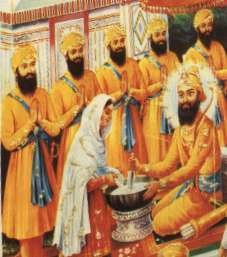 Every year in April, the whole of Punjab in northern India had been celebrating the New year on Vaisakhi day with great fanfare and wild fairs and festivities. This was the main Sikh festivals and traditionally it was the end of the wheat harvest. But in 1699, this festival became extra special because it was chosen by Guru Gobind Singh as the day to start the Khalsa fellowship. On April 13th in most Sikh Gurdwaras a special ceremony takes place as a reminder of this special first Amrit Ceremony. This first Amrit Ceremony took place in India on April 13, 1699 when Guru Gobind Singh asked a gathering of Sikhs who was prepared to die for God or Waheguru. At first there was a hesitation then one man stepped forward...The Guru and he went together into the tent. Then, Guru Gobind Singh reappeared on his own with blood dripping from his sword. He asked again, and again, again and again. Four brave Sikhs answered the Guru's call for a head. The Guru took the fifth man into the tent and then there was a delay. .....More Contents: Top 1. 10. 20. 30. 40. 50. 60. 70. 80. 90. 75Every important Sikh ceremony is performed in the presence of the holy Guru Granth Sahib. The ceremonies which are most important to a Sikh are: Baptism or Amrit Ceremony Marriage or Anand Karaj The Death Ceremony Antim Sanskar Naming Ceremony – Naam Karan:- Sikhs name their children only after they are born, as it is customary to bring the child into the presence of the Holy Granth as soon as it is convenient and when the mother is well enough to go to the Gurdwara. The Holy Granth is opened at random and a verse (Shabad) from the pages opened is read. The first letter of the first word of the 'Shabad' (hymn) on the page is chosen as the initial letter of the child's name. Now this could be any letter of the alphabet. For example if the first letter is 'S' then any name such as Surinder, Surjit, Sukhdev, Satnam, Sarabjit, Satwant, Sukhwinder, etc could be chosen by the parents to their liking. See Sikh Names to see over a thousand Sikh names. .....More Contents: Top 1. 10. 20. 30. 40. 50. 60. 70. 80. 90. 76Guru Granth Sahib ji:- is more than just the Sikh Holy book; it is respected by the Sikhs as a "perpetual Guru" or "Ever-present guide". If it is not in use it is wrapped in decorative silks and richly embroidered cloths and placed on a platform. Before his death in 1708, Guru Gobind Singh, the 10th Guru ordained that from then on the sacred "Granth" (holy Book) should be recognised as the manifest body of the Gurus - and hence the name Guru Granth Sahib Ji. It was first compiled by Guru Arjan in 1604 and was then known as the "Adi Granth" or "first Book". During the day the book is opened and placed on a small dais called the Manji Sahib with a canopy above and rests on several cushions. If it is not being read it may be covered with a cloth called a Rumalla. Whilst it is being read a fan called a Chaur Sahib may be waved over it to show sign of respect and honor for the holy message. Sikhs usually place an offering in cash or kind or both as they approach the holy Granth, and bow down low on their knees to show their respect for its message. During a religious service, a 'Granthi' (one who reads the Granth) or a sewadar (volunteer) remains in constant attendance and holds a Chaur (a symbolic whisk of sovereignty) which he occasionally moves over the Granth. ... Continued. Contents: Top 1. 10. 20. 30. 40. 50. 60. 70. 80. 90. 77Sikhism was founded in the early fifteenth century by their founder and spiritual teacher called Guru Nanak. He was firmly of the belief that all people were born equal and should have equal opportunities. Guru means "spiritual leader" and he guided his people in the way of God's will or Hukam believing there was only one universal God and that we were all accountable to Him. There are over 25 million Sikhs worldwide and the religion is open to anyone. Guru Nanak was born in the village of Talwandi, now called Nankana Sahib, near Lahore in present-day Pakistan. His parents were of Hindu background and he was from a family who were traders. Even as a boy, Nanak was fascinated by religion, and his desire to explore the mysteries of life eventually led him to leave home and he travelled all over the world in the manner of Indian saints. It was during this period that Nanak met many religious people and preached his message of one God to all the people of Central Asia. He made five distinct major journeys, which are called Udasis spanning many thousands of miles covering most of Central Asia and the Middle-East. .....More Contents: Top 1. 10. 20. 30. 40. 50. 60. 70. 80. 90. 78A cousin of Guru Ram Das came to Amritsar from Lahore especially to ask the Guru to attend his son's wedding. The Guru said, "I will not be able to go because I can't leave my duties as Guru. Perhaps I can send one of my sons instead." Guru Ram Das had three sons: Prithi Chand, called Prithia, Mahadev, and Arjan Mal. Prithia was in charge of collecting donations, of which he secretly took a portion for himself. When the Guru asked him to attend the wedding, Prithia said, "I have to take care of the collections. And I hate going to weddings." Actually, he was afraid if he were away from the Guru for too long, he might not be appointed the Guru's successor. Having no luck with Prithia, the Guru then turned to Mahadev. Mahadev lived his life in meditation and said, "I have no desire to involve myself in worldly affairs." Finally, the Guru asked Arjan if he would go. Arjan said, "I only desire to do what you wish." The Guru was very pleased. He asked Arjan to spend some time in Lahore to share the Guru's teachings with the city's inhabitants and Sikhs. Any donations he received were to be given to the free kitchen to feed the poor. The last words he said to Arjan were, "You should stay in Lahore until I send for you by letter." .....More Contents: Top 1. 10. 20. 30. 40. 50. 60. 70. 80. 90. 79Dances of PunjabPunjab is a very rich state in terms of the types and number of folk dances that can be found here. It has many different varieties of folk dances, among which the most famous and popular are Bhangra and Giddha. These days, not to miss out of a good thing, many non-Punjabis are also getting into the spirit and fun of Punjab's folk dance, as you occasionally see a European, African or Chinese face in various Bhangra competitions. These non-Punjabis have simply made Punjabi dance a part of their own local culture. The exuberance and vitality of the people of Punjab are vigorously displayed in their folk dances. The moves are full of expression, gestures, vocal remarks, subtleties of motion and uninhibited freedom – it is a dance from the heart! With the drum beat or to the tune of some other instrument of folk music, the energetic feet of the people of Punjab are spontaneously set to give in to inhibition and give instant birth to a folk dance - an expression of the triumphant soul; an outburst of emotions; a sudden release of energy. The dances of Punjab are the clear depiction of the energy and enthusiasm of the lively youth of Punjab. Punjab's folk dances are replete with foreign influences. It is only in Punjab where there is no common dance for men and women. ...Continued Contents: Top 1. 10. 20. 30. 40. 50. 60. 70. 80. 90. 80Guru Nanak Udasis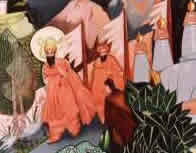 Painting by Ravi Bhangu Guru Nanak saw the world suffering because of hatred, fanaticism, falsehood and hypocrisy. The people of the world were lost and doomed due to their wickedness and sin. So he decided that he had to travel, educate and press home the message of Almighty Lord so that these poor people would understand the true and pure message of the Lord. So he set out in 1499 on his mission for the regeneration of humanity on this earth. He carried the torch of truth, heavenly love, peace and joy for mankind. For 1 year he spread his message of peace, compassion, righteousness and truth to the people in and around his home town. Then in 1500, he embarked on his Divine Mission and went thousands of miles towards the east, west, north and south and visited various centers of Hindus, Muslims, Buddhists, Jainis, Sufis, Yogis and Sidhas. He met people of different religions, tribes, cultures and races. He travelled on foot with his Muslim companion named Bhai Mardana, a minstrel. His travels are called Udasis. On his first Udasi (travel), Guru Nanak covered the eastern part of India and returned home after spending about 6 years spread the message of Waheguru. .....More Contents: Top 1. 10. 20. 30. 40. 50. 60. 70. 80. 90. 81In December 2004, while I was studying in London, I visited the Gurdwara Sahib in Southall and Giani jee was doing Katha (discourse on Gurbani). Giani jee's words stuck in my mind. He explained how Gurbani says, "Waheguru resides WITHIN ALL and that Waheguru FORGIVES and CLEANS the sins or filth of a sinner." He went on to explain how at the end of Ardas we all say together, "naanak naam chardee kalaa, tere bhaane sarbat da bhalaa". Yes, we say, ‘SARBAT DA BHALAA’. We ask for the blessing of ‘ALL’. Guru Gobind Singh Sahib did NOT say, "I ask for the good of all EXCEPT for AURANGZEB who cowardly murdered my two young sons." No. When we do Ardas we do not say, "Sarbat Da Bhalaa, but NOT that person who swore at me last week… I don’t want his bhalaa (good)." A beautiful analogy was given to illustrate that there is good within all. We say Waheguru is within all, but from personal experience seeing Waheguru in everybody is difficult at times. .....MoreContents: Top 1. 10. 20. 30. 40. 50. 60. 70. 80. 90. 82Free-for-all is a term generally used to describe chaos. And chaos is a word one could use to describe much of Delhi. But at the Gurdwara Bangla Sahib kitchen, a Sikh temple which serves meals to around 10,000 people every single day, there's not a trace of chaos. And the food is free for all. This week, Alex and I are at the Doors of Perception conference in India, where the theme is "Food and Juice." It's an exploration of food systems worldwide, and the energy required to make them go. On the first full day of the conference, the fifty-odd attendees split into small groups to go exploring the city of Delhi through its food culture. A number of groups focused on the prolific street vendor network, several looked at Delhi's water, and my group of nine went to Gurdwara Bangla Sahib to see how they achieve the daunting task of feeding thousands of people in single a day. .....MoreContents: Top 1. 10. 20. 30. 40. 50. 60. 70. 80. 90. 83Structure of Guru Granth SahibThe Guru Granth Sahib begins with the word "Ek Onkar" – The All Pervading Being. From this Word to the tenth Word “Gur-parshad” is called the Mool Mantra. After this is the rest of the composition called the Japji composed by Guru Nanak Dev. This comprises 38 Pauris or stanzas, a Prologue and an Epilogue. This is one of the morning prayer of the Sikhs. The next composition has two parts - (1) "So Dar" and (2) "So Purkh". The Bani, "So Dar" contains 5 Shabads and "So Purkh" contains 4 Shabads. This form most of the evening prayer of the Sikhs and is called the Rehras. After this is the Bani called Sohila (full name, Kirtan Sohila), which contains 5 Shabads and is the bed-time prayer. Within it's 1430 pages, most of the Shabads (hymns) of the Sri Guru Granth Sahib are arranged in thirty-one Ragas, the traditional Indian musical measures and scales. ....Continued. Contents: Top 1. 10. 20. 30. 40. 50. 60. 70. 80. 90. 84Sikhism and the Environment"The Lord infused His Light into the dust, and created the world, the universe. The sky, the earth, the trees, and the water - all are the Creation of the Lord. ||1||" SGGS page 723 The Sikh scripture, Guru Granth Sahib, declares that the purpose of human beings is to achieve a blissful state and to be in harmony with the earth and all of God's creation. It seems, however, that humans have drifted away from that ideal. For the earth is today saturated with problems. It is agonizing over the fate of its inhabitants and their future! It is in peril as never before. Its lakes and rivers are being choked, killing its marine life. Its forests are being denuded. A smoky haze envelops the cities of the world. Human beings are exploiting their fellow human beings. The Sikh Gurus showed the world the way to live in harmony with the environment and all their communities were developed in adherence to this principle. Guru Har Rai, the seventh Sikh Guru developed Kiratpur Sahib as a town of parks and gardens. " ....Continued. Contents: Top 1. 10. 20. 30. 40. 50. 60. 70. 80. 90. 85Jallianwala Bagh Massacre, involved the killing of hundreds of unarmed, defenceless Indians by a senior British military officer. The incident took place on 13 April 1919 in the heart of Amritsar, the holiest city of the Sikhs, on a day sacred to them called Vaisakhi - the birth anniversary of the Khalsa. Jallianvala Bagh, a garden belonging to the Jalla, derives its name from the owners of this piece of land in olden times. At the time of this incident, this land belonged to the family of Sardar Himmat Singh Jallevalia (d.1829), a noble in the court of Maharaja Ranjit Singh (1780-1839), who originally came from the village of Jalla, now in Fatehgarh Sahib district of the Punjab. The family were collectively known as Jallhevale or simply Jallhe or Jalle, although their principal seat later became Alavarpur in Jallandhar district. The site, once a garden or garden house, was in 1919 an uneven and unoccupied space, an irregular quadrangle, indifferently walled, approximately 225 x 180 metres which was used more as a dumping ground rather than a garden. In the Punjab, during World War I (1914-18), there was considerable unrest particularly among the Sikhs, first on account of the demolition of a boundary wall of Gurdwara Rakab Ganj at New Delhi and later because of the activities and trials of the Ghadrites almost all of whom were Sikhs. .....More Contents: Top 1. 10. 20. 30. 40. 50. 60. 70. 80. 90. 86Sahibzada Jujhar Singh (27 September 1691 - 7 December 1705), the second son of Guru Gobind Singh, was born to Mata Jito ji (also known as Mata Sundari ji) at Anandpur on 27 September 1691 (as per Nanakshahi calendar). Like his elder brother, Ajit Singh, he started training in the fighting skills (Gatka) as soon as he started learning the religious texts aged about 4 to 5 years. In 1699, when he was eight years old, he received holy Amrit at the rites of Khalsa initiation, called Amrit Sanskar. By the time it became necessary to leave Anandpur under the pressure of a besieging host in December 1705, Jujhar Singh, nearing the completion of his fifteenth year, was an experienced young warrior, strong and fearless. He was one of the band that successfully waded through the flooded Sarsa rivulet on horseback .....More + Contents: Top 1. 10. 20. 30. 40. 50. 60. 70. 80. 90. 87For many 1000's of years, April has been the time when farmers have put their sickles to harvest and collected the precious life saving crops. In the countryside, during this time, the fragrance of the harvest is ubiquitous with scenes of many large piles of grains in one corner of the field; the stacks of wheat stalks ready as fodder for the cattle in another and the general urgency and excitement of the hustle and bustle of transporting and selling of the farm commodity by the farmers. Without a good harvest, communities would perish and so there was always great joy when a good harvest resulted at Vaisakhi time. Spring season has always been an important and decisive time for the people of the northern hemisphere from times immemorial. During historical times, much had depended on the outcome of the harvest. However, since 1699, the Sikhs have had a further reason to celebrated at this time of the year. Now Vaisakhi is celebrated with even more energy, pomp and fanfare. It has become a holy day to mark the birth of the Khalsa fraternity. And so 300 years on, this traditions continues with much gaiety, vigour and enthusiasm. Sikhs worldwide will justifiable spend much time remembering this most important day in their religious calendar – the day the Khalsa was created. .....More Contents: Top 1. 10. 20. 30. 40. 50. 60. 70. 80. 90. 88The Knight RidersThey come galloping on horse-back with lances in their hands, pick up a wooden peg and pass off in a whiff, leaving you marvelling at the sort of stuff these young guns are made of. The scene is no take from a cavalry strike - they are the riders, regal and fearless, of sadda Punjab, where equestrian sport has just arrived in a big way, moving away from the confines of police and military equestrian academies. Be it the swanky Chandigarh Horse Riding Society next to the picturesque Sukhna Lake or the Punjab Public School Riding Academy in the princely town of Nabha, young boys and girls are taking to this royal sport passionately, like never before. Not to be left behind are equestrian academies of Kirpal Sagar Academy in Punjab's hinterland (Nawanshahr) and the Shivalik Riding and Pony Club at Chandimandir, headquarters of the western command. Each of the academies are providing riding opportunities to explore the centuries old bond between man and horse which kept improving considerably as the role of the horse kept changing. ...Continued Contents: Top 1. 10. 20. 30. 40. 50. 60. 70. 80. 90. 89Hazrat Mian Mir was a famous Muslim Sufi saint who lived in Lahore. He was born at Sevastan (Sindh) in 1531 AD. Due to the high esteem and great respect for the Sufi saint, the fifth Sikh Guru, Guru Arjun Dev asked Mian Mir to lay down the foundation stone of Harmandir Sahib, the main Sikh shrine in the world. The ceremony duly took place on 3rd January 1588 AD, when Sai ji laid down the foundation stone at Amritsar over 420 years ago. Thus began the history of the most famous Sikh shrine and the occasion crystallised the very important message of true interfaith respect and close dialogue among the different peoples of faith in the world. Guru Arjan Dev was responsible for the construction of many tanks and buildings in Punjab. In 1588, he planned to build an impressive temple in the centre of the holy tank called Amritsar or the pool of nectar. As the temple was to be thrown open to people of all castes, creeds and climes, he invited Mian Mir who was a close friend of the Guru to lay the foundation stone of this shrine. .....More Contents: Top 1. 10. 20. 30. 40. 50. 60. 70. 80. 90. 90In December 1634, Guru Hargobind Sahib fought a fierce battle against Mughal forces near the river Beas. Although heavily outnumbered, the Guru was victorious. Guru Sahib decided to stay at this location for a while, and soon a settlement grew up at the site. The settlement expanded into a town which became known as Sri Hargobindpur. As the ongoing conflict with the Mughals was intensifying the town's defences were fortified. In fact, these fortifications were so solid that the original city walls and many buildings within are still visible today throughout Sri Hargobindpur in Gurdaspur district, Punjab. Residents of all faiths flocked to the Guru and perceived themselves as heirs to the sixth Guru’s desire to found a secure and secular home on the banks of the Beas. The Sikhs built themselves a Gurdwara but the few local Muslims did not have the capacity to build themselves a place of worship. So they came to the Guru and asked him for help. The All-Knowing Guru was equally comfortable with Muslim faqirs and Hindu sadhus and saw all people with one benevolent gaze. The Guru ordered his Sikhs to start construction of a mosque or "Masjid". The Masjid was duly completed and turned over to the Muslims. .....More Contents: Top 1. 10. 20. 30. 40. 50. 60. 70. 80. 90. 91Mata Gujri (1624 -1705) (whose formal name was 'Mata Gujar Kaur') was the wife of the ninth Sikh Guru, Guru Tegh Bahadur; the mother of the tenth and last human Sikh Guru, Guru Gobind Singh and the grandmother of the four Sahibzade. She was born in 1624 and was the daughter of Bhai Lal Chand Subulikka and Bishan Kaur, a pious couple of Kartarpur, in present-day Kapurthala district of the Punjab. Her role in the development of the Sikh faith has been crucial. She was the wife of a supreme martyr; mother of a brave saint-soldier; and the grand-mother of four amazing children who all attained martyrdom at the ages of 6, 9, 14 and 18 years. She had been close to the two younger sahibzade and took up their guardianship in the flight from Anandpur under a promise of safe passage to Punjab. Imprisoned in the Thanda Burj of Sirhind with her youngest grandsons Zorawar and Fateh Singh, she attained martyrdom, at the age of 81 years, when she was told of their execution. .....More Contents: Top 1. 10. 20. 30. 40. 50. 60. 70. 80. 90. 92Panj Piare (literally means the "five beloved ones") and is the name given to the five Sikhs, Bhai Daya Singh, Bhai Dharam Singh, Bhai Himmat Singh, Bhai Mukham Singh and Bhai Sahib Singh, who were so designated by Guru Gobind Singh at the historic divan at Anandpur Sahib on 30 March 1699 (now celebrated on April 14). They formed the nucleus of the Khalsa as the first batch to receive at the Guru's hands khanda di Pahul, i.e. rites of the two-edged sword. Today, the term is used to refer to the five who perform this same rites of baptism for the Khalsa panth. In Sikh theology, as in the Indian classical tradition generally, panj or panch, the numeral five, has a special significance. Guru Nanak in Japji refers to five khands, i.e. stages or steps in spiritual development, and calls a spiritually awakened person a panch. The ancient Indian socio-political institution "panchayat" meant a council of five elders. Something like an inner council of five existed even in the time of the earlier Gurus: five Sikhs accompanied Guru Arjan on his last journey to Lahore; the five were each given 100 armed Sikhs to command by his successor, Guru Hargobind; Guru Tegh Bahadur, set out on his journey to Delhi to court execution attended by five Sikhs. .....More Contents: Top 1. 10. 20. 30. 40. 50. 60. 70. 80. 90. 93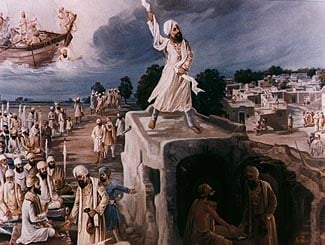 Bhai Makan Shah shouts, "Guru ladho-ray, Guru ladho-ray" Lobanas are a community of Sikhs who played an important role during the times of the Sikh Gurus. Several key incidents in the times of the ninth and tenth Gurus are attributed to this Sikh community. Baba Makhan Shah was a devout Sikh and was responsible for finding the ninth Sikh Guru, Guru Tegh Bahadur and Lakhi Shah Vanjara was responsible for cremating the body of ninth Guru in his own house. Lobanas also fought many wars with Guru Gobind Singh and Baba Banda Singh Bahadur. Lobanas are a tribe who live all over India. Labanas have their own language called "Lubanki" which is a dialect. However, this language is only spoken by Labanas outside the Punjab, state of [[India[[. The Labanas of Punjab and Haryana are mostly Sikhs and speak mainly Punjabi or Hindi. The term Lobana appears to have been derived from LUN ("salt") and the BANA ("trade"). The Lobanas were the great salt-carrying and salt-trading community. They were occasionally called "Banjaras". In Punjab, they were known by several different names. In Ambala district, for example, on account of their versatility in adopting different vocations, the Lobanas were called "Bahrupias" .....More Contents: Top 1. 10. 20. 30. 40. 50. 60. 70. 80. 90. 94The tercentenary celebration of the Guruship of Sri Guru Granth Sahib is to be undertaken in a massive event next year in October 2008 at Takhat Sachkhand Shri Hazur Abchalnagar Sahib in Nanded, Maharashtra, India. The main Sikh Gurdwara situated in Nanded and the surrounding areas are undergoing a huge rebuilding exercise to facilitate the large inflow of pilgrims for this rare, hugely important and once-in-a-lifetime occasion for the Sikhs and also for the whole of the world. This event is of great relevance to the worldwide Sikh Community and will involve the remembrance of the 300th years of consecration of Guru Granth Sahib as the final and perpetual Guru of Sikhs as ordained by Guru Gobind Singh in 1708. The event will also commemorate the 300th anniversary of the accession of Guru Gobind Singh to his heavenly abode. The Guru Granth Sahib is regarded as the guiding light for the Sikh and many non-Sikhs also have tremendous respect for the teachings contained within the pages of this holy scripture. On this momentous occasion, both non-Sikhs and Sikhs alike will join hands in millions to honor the high principles of peace, equality, unity, forgiveness and the many other high and noble messages promoted by the Guru. The main celebrations at Nanded will be over 8 days and will be conducted in the month of October 2008. It is estimated that this event will attract 2,500,000 to 3,000,000 visitors from all over the world during the last three months of 2008. Many new facilities are being built and the State Government has great plans for this event.
Contents: Top 1. 10. 20. 30. 40. 50. 60. 70. 80. 90. 95Damdami TaksaalThe Damdami Taksaal is the travelling Sikh university, which was founded by Guru Gobind Singh, the tenth Sikh Guru in about 1705 to impart knowledge of Gurmat onto all the people of the world. It has had an unbroken lineage of Jathedars (leaders) who have led the Taksal throughout Sikh history from the time of the tenth Patshah (king). The first and foremost function of the Taksal is to educate Sikhs, to teach them the correct pronunciations of Gurbani, to do Katha and Kirtan. This is done by getting students to undergo rigorous studies, Simran (meditation) and seva (selfless service), thus a wholesome Sikh lifestyle is developed and maintained. The Taksal has always been a key strategic player in the activities of the Sikh Nation, with Baba Deep Singh & Baba Gurbaksh Singh (respectively 1st & 2nd Jathedars) both being martyred defending the sanctity of Sri Harimander Sahib, Amritsar, they were both beheaded yet still fought on until the Mughals had to run in fear. The sixth Jatheder, Giani Bhai Sant Singh was the Head Granthi of Sri Harimander Sahib and a close aid of Maharaja Ranjit Singh. The famous Sikh Historian Bhai Santokh Singh (author of Suraj Parkash) was also a student of the Giani Bhai Sant Singh Jee. .....More Contents: Top 1. 10. 20. 30. 40. 50. 60. 70. 80. 90. 96Interfaith DialogueAn important Interfaith Conference was held recently at a Sikh Gurdwara in Birmingham, UK. The conference which was hosted by Bhai Sahib Mohinder Singh, Chairman of Guru Nanak Nishkam Sewak Jatha was held over three days from 12 to 14 February 2007. At this prestigious meeting, discussions about delicate issues pertaining to the current volatile world environment took place. The assembly looked at the situation facing Muslims in Britain through four focused presentations; “Muslims in Britain, what’s the problem”, “terror and fear”, “religion and education” and “religion and the public sphere” – issues of major importance to Europeans and others all over the world. Before the formalities began, nearly 30 prominent religious leaders from Europe toured the Gurdwara, first visiting the Darbar Hall where prayers were said for the success of the delegation's noble mission which was about to commence. Following this, the delegation, as per the custom in the house of Guru Nanak partook Langar, many for the first time. The council members were impressed with the warmth and hospitality of the Gurdwara Sevadars. "Global religious tensions should be tackled at a local level", an MP said in Birmingham today. John Battle, the Prime Minister’s faith envoy, said that "the religious challenges facing the world were now evident in neighbourhoods across the UK." …Continued Contents: Top 1. 10. 20. 30. 40. 50. 60. 70. 80. 90. 97Nankana Sahib is named after Guru Nanak (1469-1539), the founder of the Sikh faith. Guru Nanak was born here on Baisakh sudi 3, 1526 Bk/ 15 April 1469. Nankana town is part of Nankana Sahib District in the Punjab province of Pakistan. This district is adjacent to Sheikhupura district and until 2005 was part of this district. The old name of this town was Talvandi Rai Bhoe Ki or "Talvandi of Rai Bhoe", a Muslim Rajput of the Bhatti clan and a retainer of the Delhi rulers of the early fifteenth century. His descendant, Rai Bular, the chief of Talvandi, was a contemporary of Guru Nanak. The town has nine gurdwaras including the Gurdwara Janam Asthan which marks the birth place of Guru Nanak Dev. The first 15 or 16 years of Guru Nanak's life were spent at Talvandi. Later, he shifted to Sultanpur Lodhi, in present day Kapurthala district of the Punjab, where his sister Bibi Nanaki lived. From there he set out on his long preaching odysseys, visiting his parents at Talvandi only now and then, his last visit to his native place being in 1510. Several shrines in the town, raised long after his death, mark the places where he was born, where he played with other children, where he studied and where he tended his father's cattle. .....More Contents: Top 1. 10. 20. 30. 40. 50. 60. 70. 80. 90. 98Most of us think that Sikh or South Asian migration to Australia is a recent phenomenon, spanning just the past few decades. But not many of us know that our Sikh forefathers first came to Australia more than 150 years ago - at a time when the dust was yet to settle from the fall of Ranjit Singh's empire. Displaying their true enterprising spirit, they crossed the seven seas to come to the land Down Under, in search of a better lifestyle and wages, and quickly endeared themselves to the local population here. Country towns all over Australia are dotted with memories of these brave Punjabi migrants, who seem to have been welcomed by the locals despite the official "White Australia" policy. Sadly, they are also forgotten in the annals of history. Initially, the migrants from India were indentured labourers, who worked on sheep stations and farms around Australia. Some adventurers followed during the gold rush of the 1850's. .....More Contents: Top 1. 10. 20. 30. 40. 50. 60. 70. 80. 90. 99
Contents: Top 1. 10. 20. 30. 40. 50. 60. 70. 80. 90. 100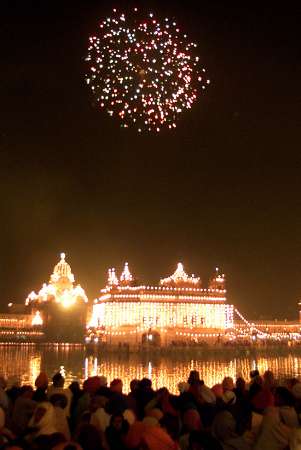 See All About Sikhs Contents: Top 1. 10. 20. 30. 40. 50. 60. 70. 80. 90. 101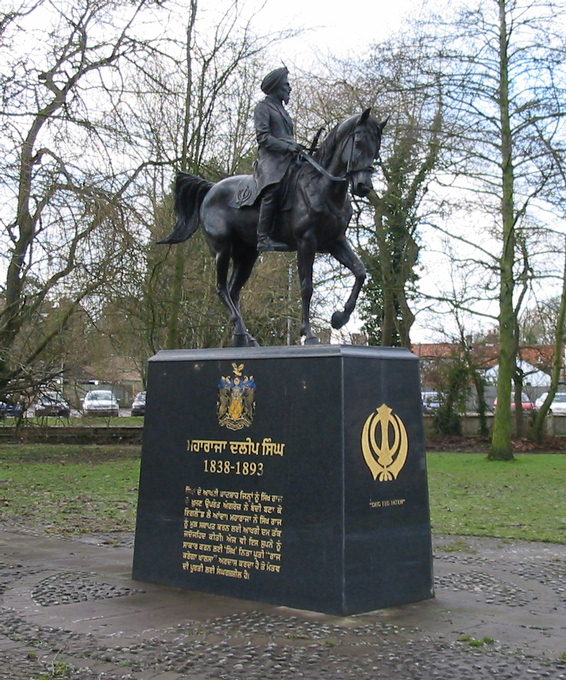 See Anglo-Sikh by Trojan_Llama at Flickr. for more. Contents: Top 1. 10. 20. 30. 40. 50. 60. 70. 80. 90. 102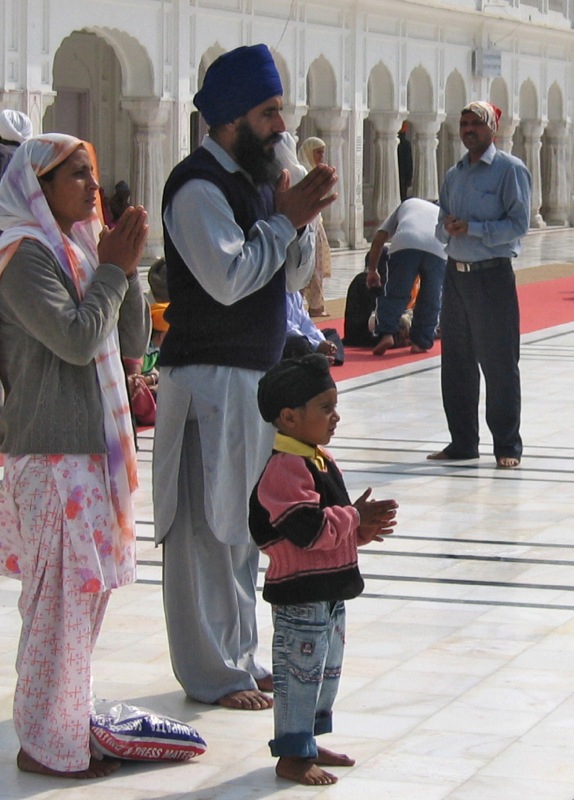 See Flickr's Jus Snap at Harimandar Sahib for more. Contents: Top 1. 10. 20. 30. 40. 50. 60. 70. 80. 90. 103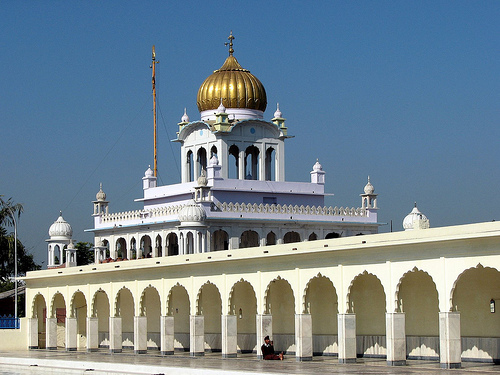 Jas Kaur on Flickr Contents: Top 1. 10. 20. 30. 40. 50. 60. 70. 80. 90. 104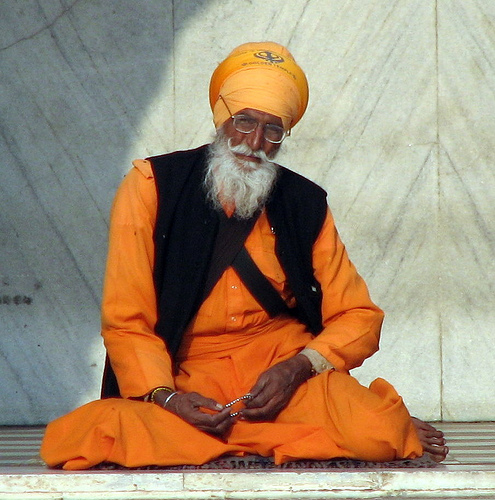 Jas Kaur on Flickr Contents: Top 1. 10. 20. 30. 40. 50. 60. 70. 80. 90. 105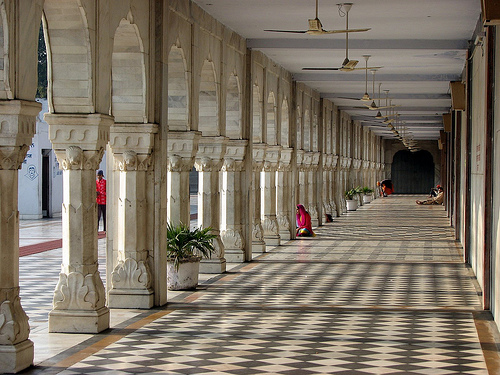 Jas Kaur on Flickr Contents: Top 1. 10. 20. 30. 40. 50. 60. 70. 80. 90. 106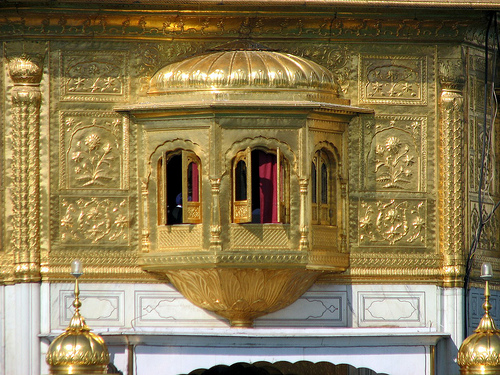 Jas Kaur on Flickr Contents: Top 1. 10. 20. 30. 40. 50. 60. 70. 80. 90. 107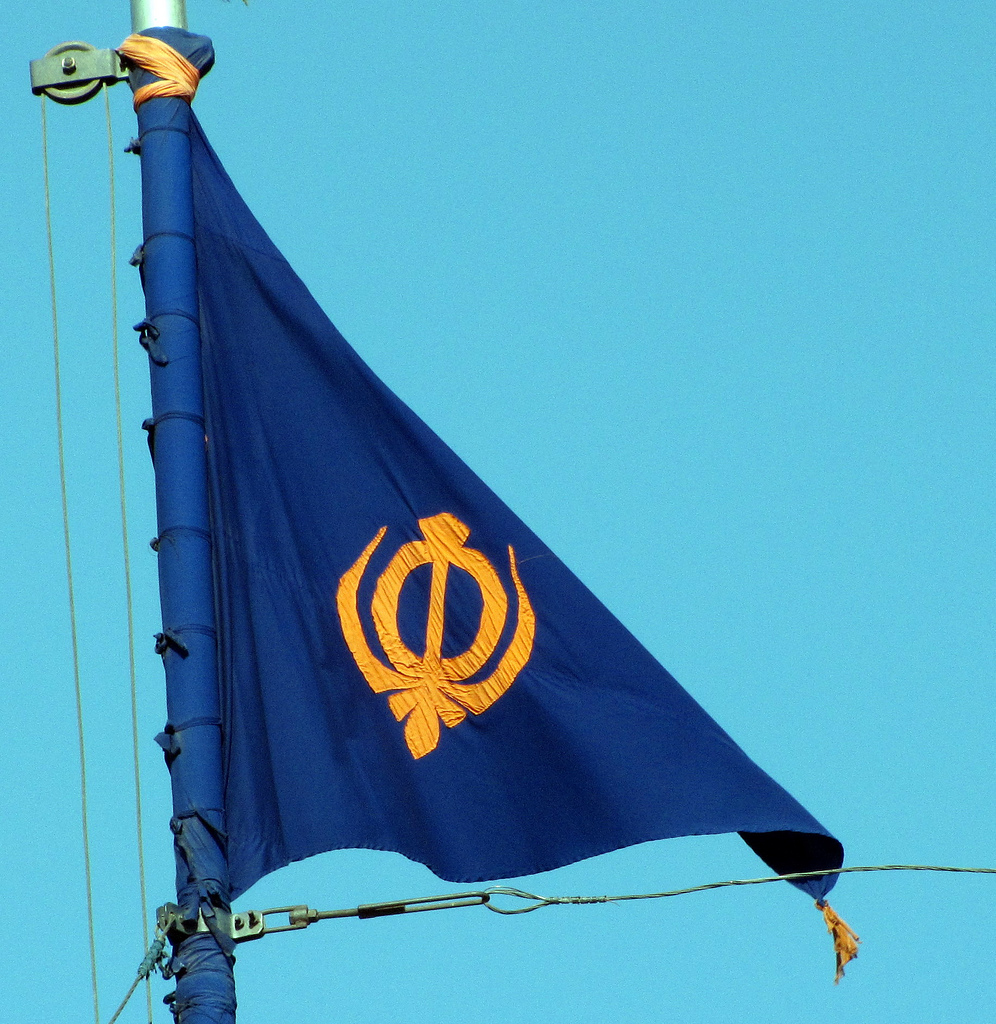 Jas Kaur on Flickr Contents: Top 1. 10. 20. 30. 40. 50. 60. 70. 80. 90. 108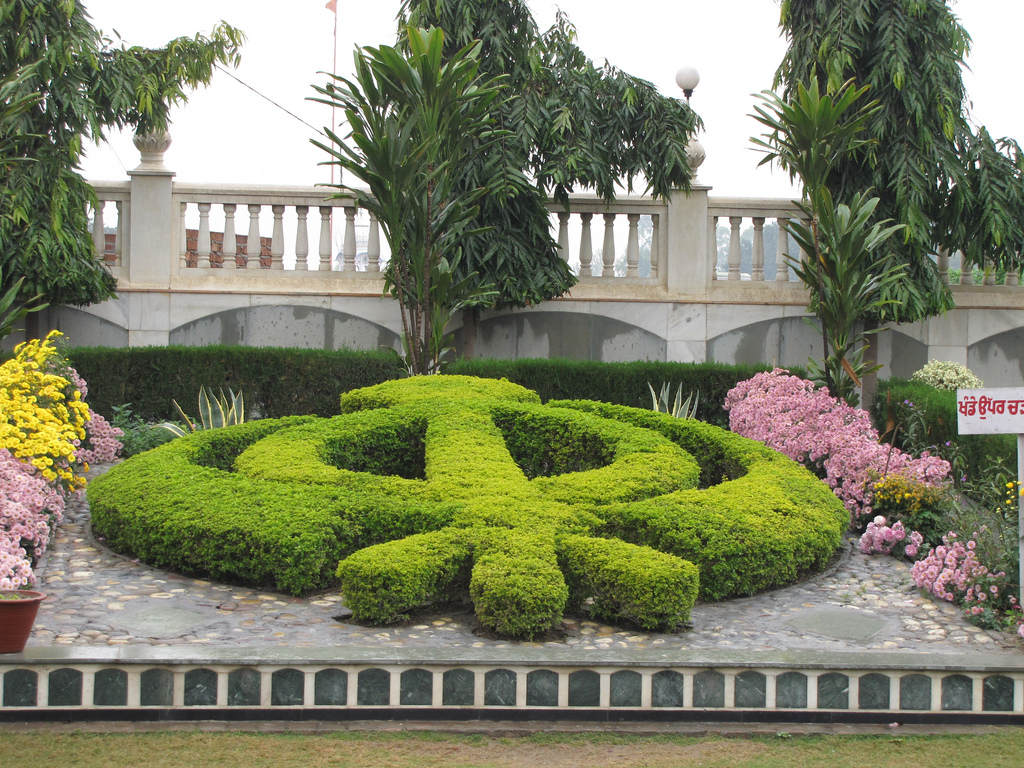 Jas Kaur on Flickr Contents: Top 1. 10. 20. 30. 40. 50. 60. 70. 80. 90. 109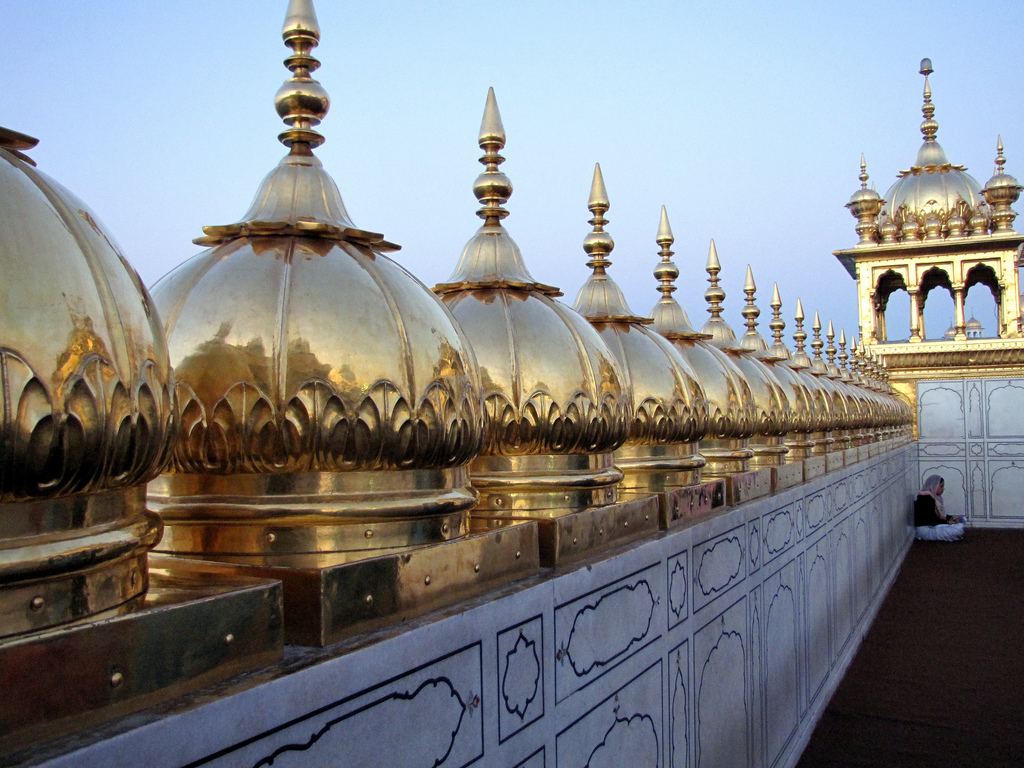 Jas Kaur on Flickr Contents: Top 1. 10. 20. 30. 40. 50. 60. 70. 80. 90. 110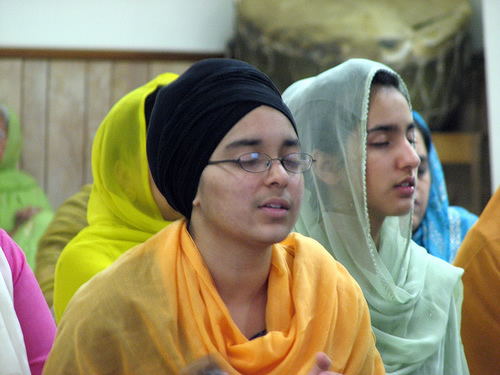 Jas Kaur on Flickr Contents: Top 1. 10. 20. 30. 40. 50. 60. 70. 80. 90. 111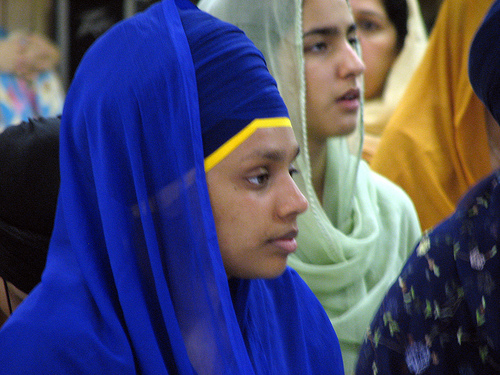 Jas Kaur on Flickr Contents: Top 1. 10. 20. 30. 40. 50. 60. 70. 80. 90. 112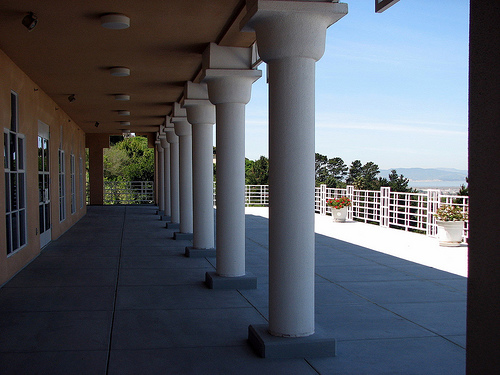 Jas Kaur on Flickr Contents: Top 1. 10. 20. 30. 40. 50. 60. 70. 80. 90. 113 Jas Kaur on Flickr Contents: Top 1. 10. 20. 30. 40. 50. 60. 70. 80. 90. 114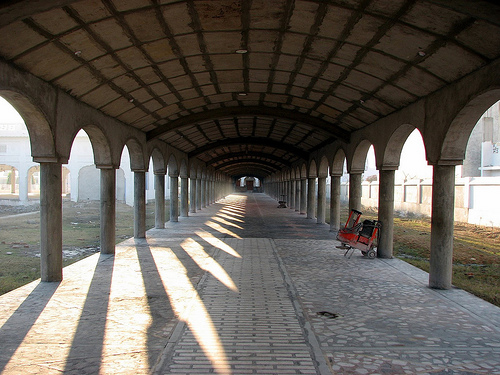 Jas Kaur on Flickr Contents: Top 1. 10. 20. 30. 40. 50. 60. 70. 80. 90. 115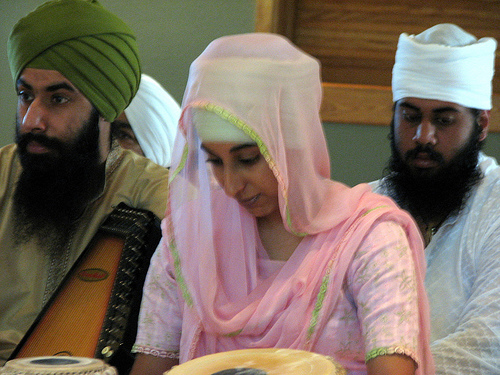 Jas Kaur on Flickr Contents: Top 1. 10. 20. 30. 40. 50. 60. 70. 80. 90. 116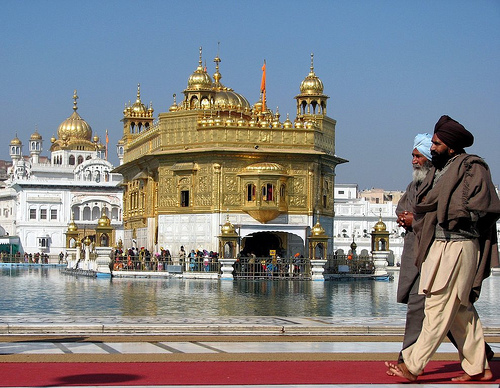 Jas Kaur on Flickr Contents: Top 1. 10. 20. 30. 40. 50. 60. 70. 80. 90. 117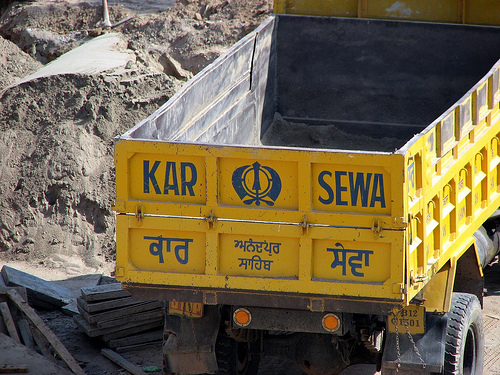 Jas Kaur on Flickr Contents: Top 1. 10. 20. 30. 40. 50. 60. 70. 80. 90. 118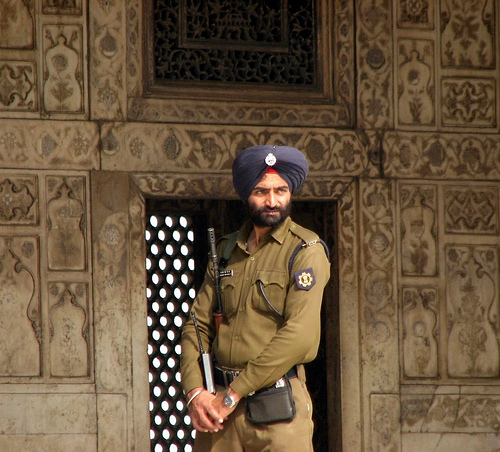 Jas Kaur on Flickr Contents: Top 1. 10. 20. 30. 40. 50. 60. 70. 80. 90. 119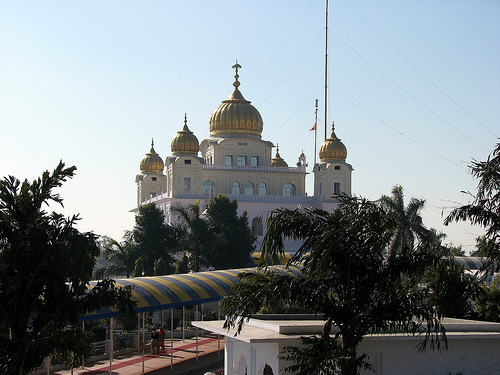 Jas Kaur on Flickr Contents: Top 1. 10. 20. 30. 40. 50. 60. 70. 80. 90. 120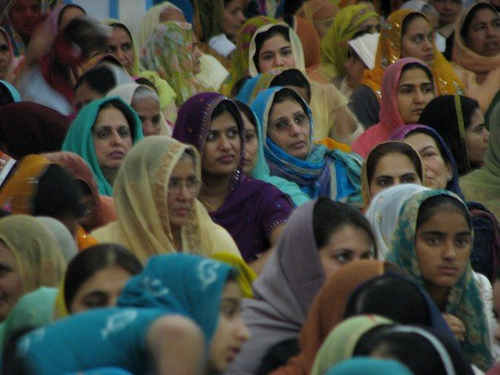 Jas Kaur on Flickr Contents: Top 1. 10. 20. 30. 40. 50. 60. 70. 80. 90. 121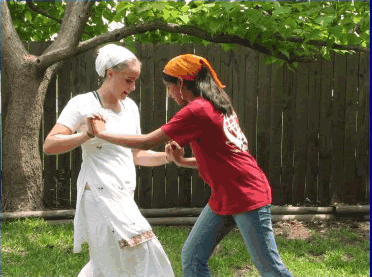 Jas Kaur on Flickr Contents: Top 1. 10. 20. 30. 40. 50. 60. 70. 80. 90. 122Contents: Top 1. 10. 20. 30. 40. 50. 60. 70. 80. 90. 123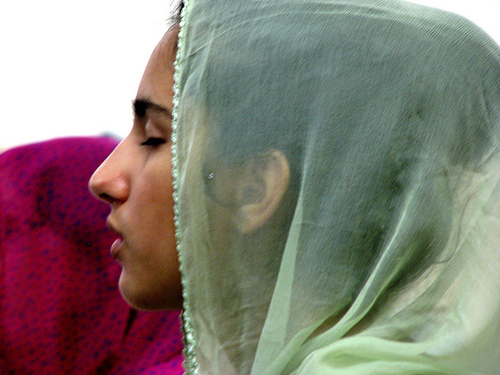 Jas Kaur on Flickr Contents: Top 1. 10. 20. 30. 40. 50. 60. 70. 80. 90. 124 Jas Kaur on Flickr Contents: Top 1. 10. 20. 30. 40. 50. 60. 70. 80. 90. 125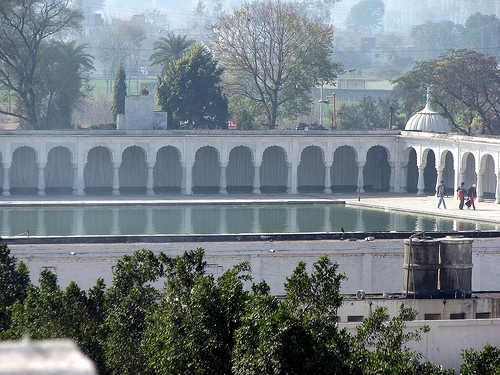 Jas Kaur on Flickr Contents: Top 1. 10. 20. 30. 40. 50. 60. 70. 80. 90. 126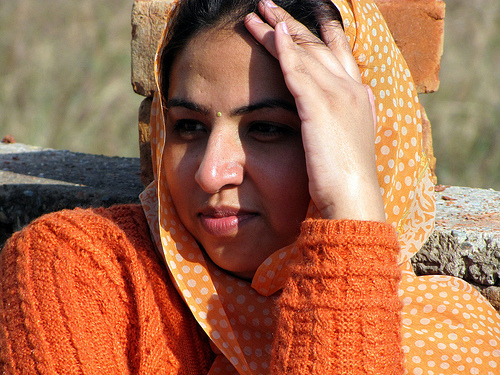 Jas Kaur on Flickr Contents: Top 1. 10. 20. 30. 40. 50. 60. 70. 80. 90. 127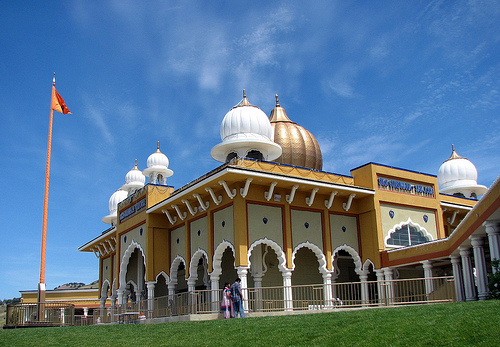 Jas Kaur on Flickr Contents: Top 1. 10. 20. 30. 40. 50. 60. 70. 80. 90. 128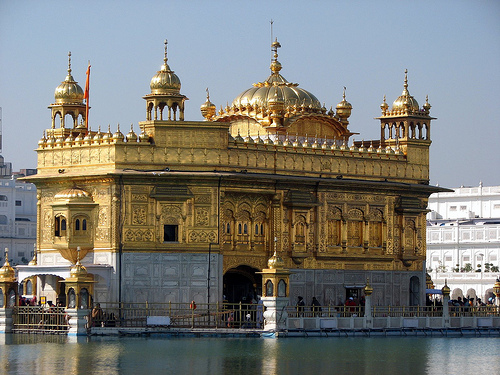 Jas Kaur on Flickr Contents: Top 1. 10. 20. 30. 40. 50. 60. 70. 80. 90. 129Contents: Top 1. 10. 20. 30. 40. 50. 60. 70. 80. 90. 130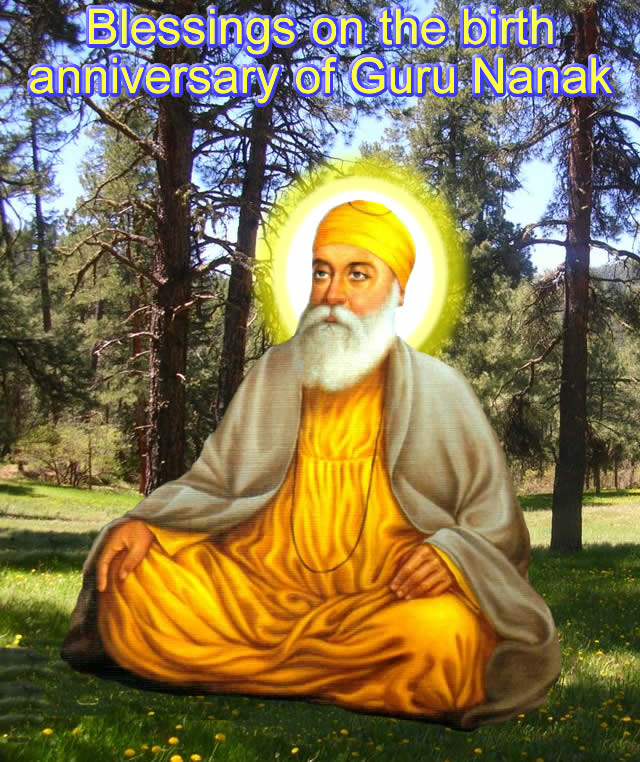 background photo:Prabhu Singh Contents: Top 1. 10. 20. 30. 40. 50. 60. 70. 80. 90. 201Chet - Happy New YearChet is a first month in the Nanakshahi calendar, which governs the activities within Sikhism. The month starts on March 14 which also marks the beginning of the Nanakshahi New Year. The month of Chet ends on April 13. This month coincides with March - April of the Western/Georgian/Julian Calendar and is 31 days long. Also on March 14 every year, the Sikhs celebrate the Gur gadi (Guruship) of their seventh master, Guru Har Rai. On April 14 starts the second month of the Sikh calendar called Vaisakh. During Chet the season in Punjab, the land of the Sikh Gurus is spring and the climate is moderate with good sunshine during the day. The winter cold has truly been completely uplifted. Many tourists from western countries visit north India during Chet to join in the festivities of the New year and Holla Mahalla. The Guru tells us that in the month of Chet (March/April): ".... by meditating on the Lord of the Universe, a deep and profound joy arises. Meeting with the humble Saints, the Lord is found, as we chant His Name with our tongues. Those who have found God-blessed is their coming into this world. Those who live without Him, for even an instant-their lives are rendered useless. The Lord is totally pervading the water, the land, and all space. He is contained in the forests as well. Those who do not remember God-how much pain must they suffer! Those who dwell upon their God have great good fortune. My mind yearns for the Blessed Vision of the Lord's Darshan. O Nanak, my mind is so thirsty! I touch the feet of one who unites me with God in the month of Chayt.||2||" (SGGS page 133) .....More Contents: Top 100. 110. 120. 130. 140. 150. 160. 170. 180. 190. 202VaisakhVaisakh is a second month in the Nanakshahi calendar. This month coincides with April/May of the Western/Georgian/Julian Calendar and is when the crop is harvested in Punjab. This month begins on April 14 and end on May 15. On May 15 begins the third month of the Sikh calendar called Jeth. Vaisakhi is the most important festival in the Sikh calendar and it takes place on the first of the lunar month of Vaisakh, which falls this year on April 14. On this day the Khalsa was created and much celebration takes place worldwide in the form of Samagams, Nagar Kirtan, Gatka Exhibition, Akand Paaths, etc. The Guru tells us that in the month of Vaisakh (April/May): ".... how can the bride be patient? She is separated from her Beloved. She has forgotten the Lord, her Life-companion, her Master; she has become attached to Maya, the deceitful one. Neither son, nor spouse, nor wealth shall go along with you-only the Eternal Lord. Entangled and enmeshed in the love of false occupations, the whole world is perishing. Without the Naam, the Name of the One Lord, they lose their lives in the hereafter. Forgetting the Merciful Lord, they are ruined. Without God, there is no other at all. Pure is the reputation of those who are attached to the Feet of the Beloved Lord. Nanak makes this prayer to God: ""Please, come and unite me with Yourself."" The month of Vaisaakh is beautiful and pleasant, when the Saint causes me to meet the Lord. ||3||" (SGGS page 133/4) .....More Contents: Top 100. 110. 120. 130. 140. 150. 160. 170. 180. 190. 203Jeth/Jayth is a third month in the Sikh Calendar, the Nanakshahi calendar. This month coincides with May/June of the Western/Georgian/Julian Calendar and is the month after the harvest festival in Punjab. This year the first day of this month falls on the 15 May. The month is 31 days long; it starts on May 15 and ends on June 14. Next month on June 15, begins the fourth month in the Sikh Calendar called Harh. During this month, in Punjab, the land of the Sikh Gurus, the season is the beginning of summer and the climate is beginning to get hot. Most tourist wills want to begin to leave this area towards the end of the month as it starts becoming quite hot. The Guru tells us that in the month of Jeth (May/June): ".... the bride longs to meet with the Lord. All bow in humility before Him. One who has grasped the hem of the robe of the Lord, the True Friend - no one can keep him in bondage. God's Name is the Jewel, the Pearl. It cannot be stolen or taken away. In the Lord are all pleasures which please the mind. As the Lord wishes, so He acts, and so His creatures act. They alone are called blessed, whom God has made His Own. If people could meet the Lord by their own efforts, why would they be crying out in the pain of separation? Meeting Him in the Saadh Sangat, the Company of the Holy, O Nanak, celestial bliss is enjoyed. In the month of Jayt'h, the playful Husband Lord meets her, upon whose forehead such good destiny is recorded. ||4||" (SGGS page 134) .....More Contents: Top 100. 110. 120. 130. 140. 150. 160. 170. 180. 190. 204 (photo:Prabhu Singh) Harh (the Guru calls this month "Aasaarh" (Gurmukhi: ਆਸਾੜੁ)) is the fourth month in the Nanakshahi calendar. This month coincides with June/July of the Western/Georgian/Julian Calendar and is 31 days in length. The month begin on June 15 and ends on July 15. On July 16, begins the fifth month in the Sikh Calendar called Sawan. During this month of Harh, in Punjab, the land of the Sikh Gurus the season is summer and the climate is hot to very hot. Most westerners will have left the area as the temperatures are in the high 30 degrees centigrade. The Guru tells us that the month of Harh (June/July): ".... seems burning hot, to those who are not close to their Husband Lord. They have forsaken God the Primal Being, the Life of the World, and they have come to rely upon mere mortals. In the love of duality, the soul-bride is ruined; around her neck she wears the noose of Death. As you plant, so shall you harvest; your destiny is recorded on your forehead. The life-night passes away, and in the end, one comes to regret and repent, and then depart with no hope at all. Those who meet with the Holy Saints are liberated in the Court of the Lord. Show Your Mercy to me, O God; I am thirsty for the Blessed Vision of Your Darshan. Without You, God, there is no other at all. This is Nanak's humble prayer. The month of Aasaarh is pleasant, when the Feet of the Lord abide in the mind. ||5||" (SGGS page 134) .....More Contents: Top 100. 110. 120. 130. 140. 150. 160. 170. 180. 190. 205 (photo:Prabhu Singh) Sawan (pronounced "Saa-vn") is a fifth month in the Nanakshahi calendar, which govern the activities within Sikhism. This month coincides with July/August of the Western/Georgian/Julian Calendar and is 31 days long. The month starts on July 16 and ends on August 15. On August 16 starts the sixth month in the Sikh calendar called Bhadon. The season in Punjab, the land of the Sikh Gurus is mid-summer and the climate is very hot. Temperatures can go as high as 40 degrees centigrade. Most tourists and local move into higher and more northern states to lower temperatures. The Guru tells us that in the month of Sawan (July/August): "... the soul-bride is happy, if she falls in love with the Lotus Feet of the Lord. Her mind and body are imbued with the Love of the True One; His Name is her only Support. The pleasures of corruption are false. All that is seen shall turn to ashes. The drops of the Lord's Nectar are so beautiful! Meeting the Holy Saint, we drink these in. The forests and the meadows are rejuvenated and refreshed with the Love of God, the All-powerful, Infinite Primal Being. My mind yearns to meet the Lord. If only He would show His Mercy, and unite me with Himself! Those brides who have obtained God-I am forever a sacrifice to them. O Nanak, when the Dear Lord shows kindness, He adorns His bride with the Word of His Shabad. Saawan is delightful for those happy soul-brides whose hearts are adorned with the Necklace of the Lord's Name. ॥6॥" (SGGS page 134) .....More Contents: Top 100. 110. 120. 130. 140. 150. 160. 170. 180. 190. 206Bhadon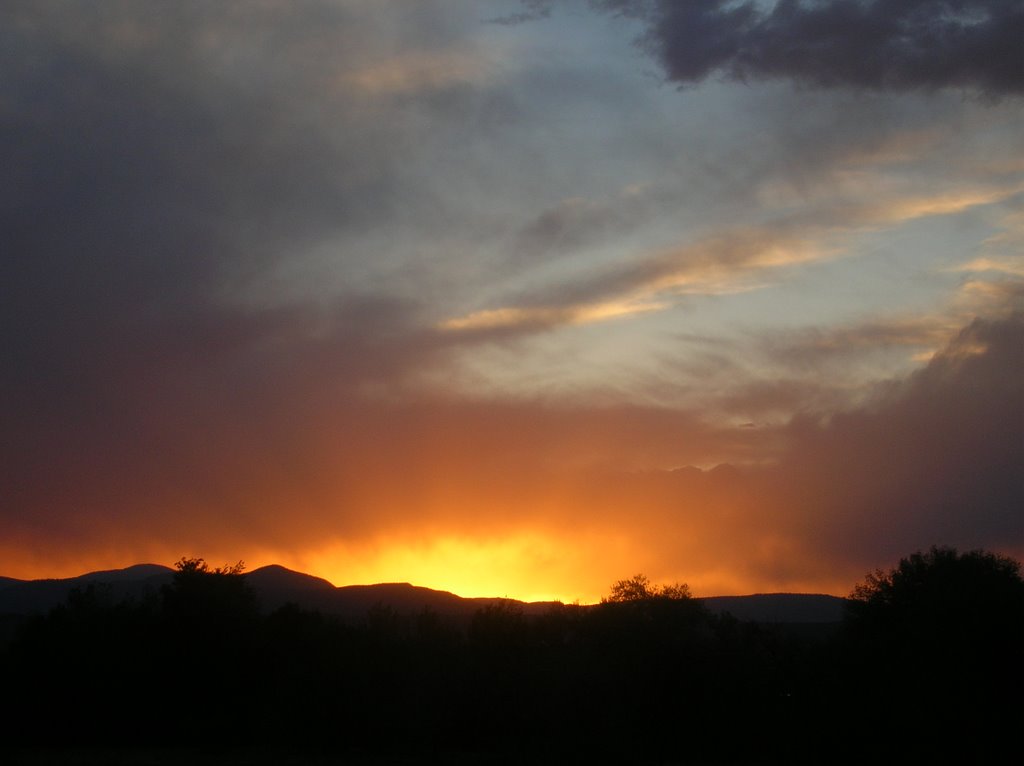 (photo:Prabhu Singh) Bhadon is a sixth month in the Nanakshahi calendar. The first day falls on August 16. This month coincides with August/September of the Western/ Georgian/ Julian Calendar and is 31 days long. Sawan and Bhadon form the rainy season. Rain has come after the very hot month of Harh which is considered the hottest month of the year. So Bhadon is considered a very pleasant month with rain and bearable heat in the Punjab, India. The Guru tells us that the the month of Sawan (July/August) and Bhadon (August/September): "The rainy season is beautiful; the months of Saawan and Bhaadon bring bliss. The clouds are low, and heavy with rain; the waters and the lands are filled with honey. God is all-pervading everywhere; the nine treasures of the Lord's Name fill the homes of all hearts...." (p 928) and also "...The lakes and fields are overflowing with water; the rainy season has come - the time to celebrate! In the dark of night it rains; how can the young bride find peace? The frogs and peacocks send out their noisy calls. Pri-o! Pri-o! Beloved! Beloved! cries the rainbird, while the snakes slither around, biting. The mosquitoes bite and sting, and the ponds are filled to overflowing; without the Lord, how can she find peace? O Nanak, I will go and ask my Guru; wherever God is, there I will go. ||10|| " (p1108) .....More Contents: Top 100. 110. 120. 130. 140. 150. 160. 170. 180. 190. 207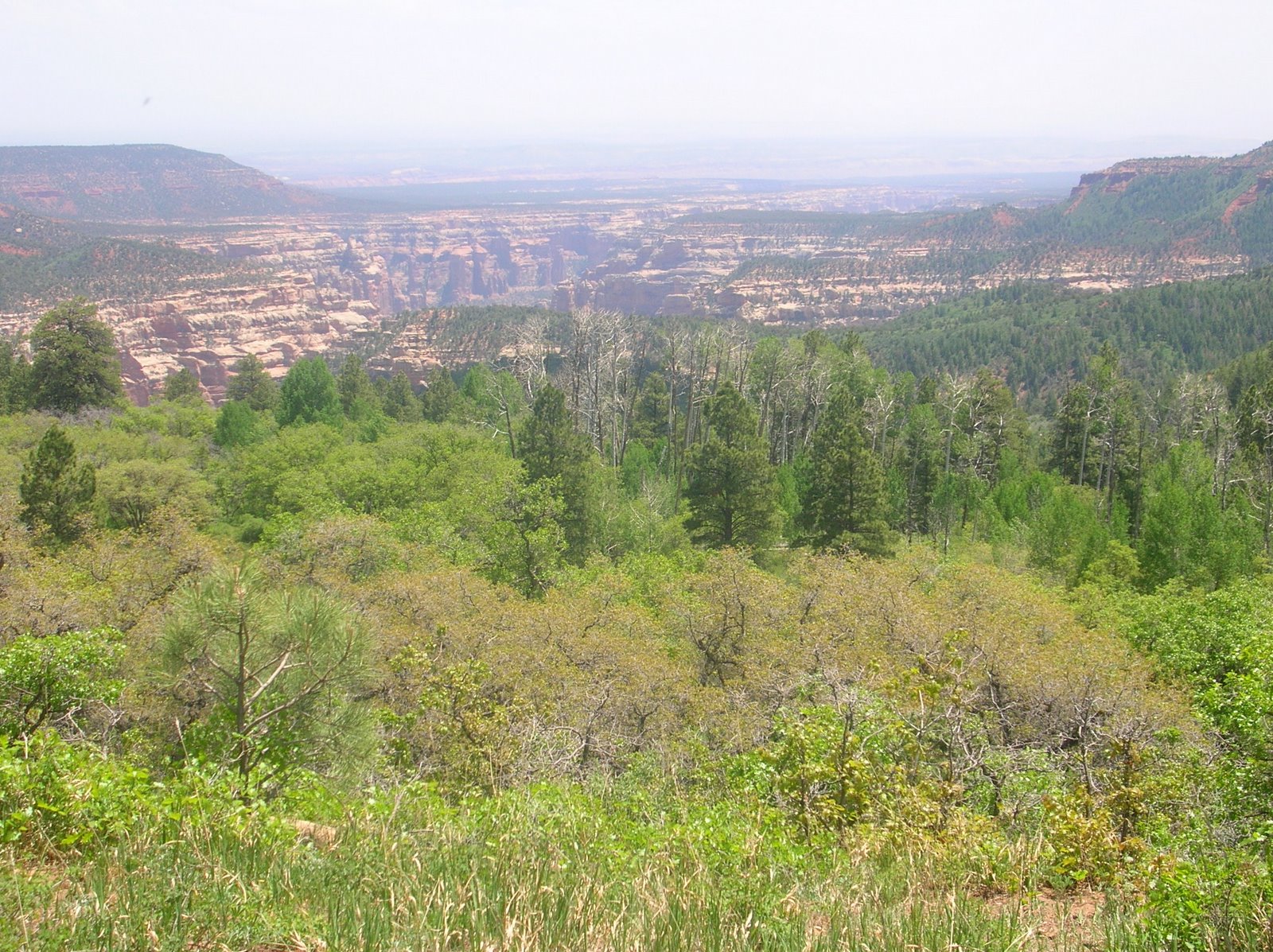 "Without God, how can I find peace?"(p135) Assu is the seventh month in the Nanakshahi calendar, which governs the Sikh tradition. The first day of the month falls on September 15. The month of Assu coincides with September/October of the Western/Georgian/Julian Calendar and is 30 days long. While the preceding months of Sawan (July/August) and Bhadon (August/September) are hot and rainy in Punjab, in the month of Assu both the temperature and rain subside and the season is very pleasant. The Guru tells us that in the month of Assu (September/October): "... my love for the Lord overwhelms me. How can I go and meet the Lord? Contents: Top 100. 110. 120. 130. 140. 150. 160. 170. 180. 190. 208 (photo:Prabhu Singh) Katak is the eighth month in the Nanakshahi calendar; a calendar system which governs the Sikh tradition and is based from the birth of the founder of Sikhism, Guru Nanak in 1469. For the month of Katik (October/November), the Guru tells us: "...In the month of Katak, do good deeds. Do not try to blame anyone else. Contents: Top 100. 110. 120. 130. 140. 150. 160. 170. 180. 190. 209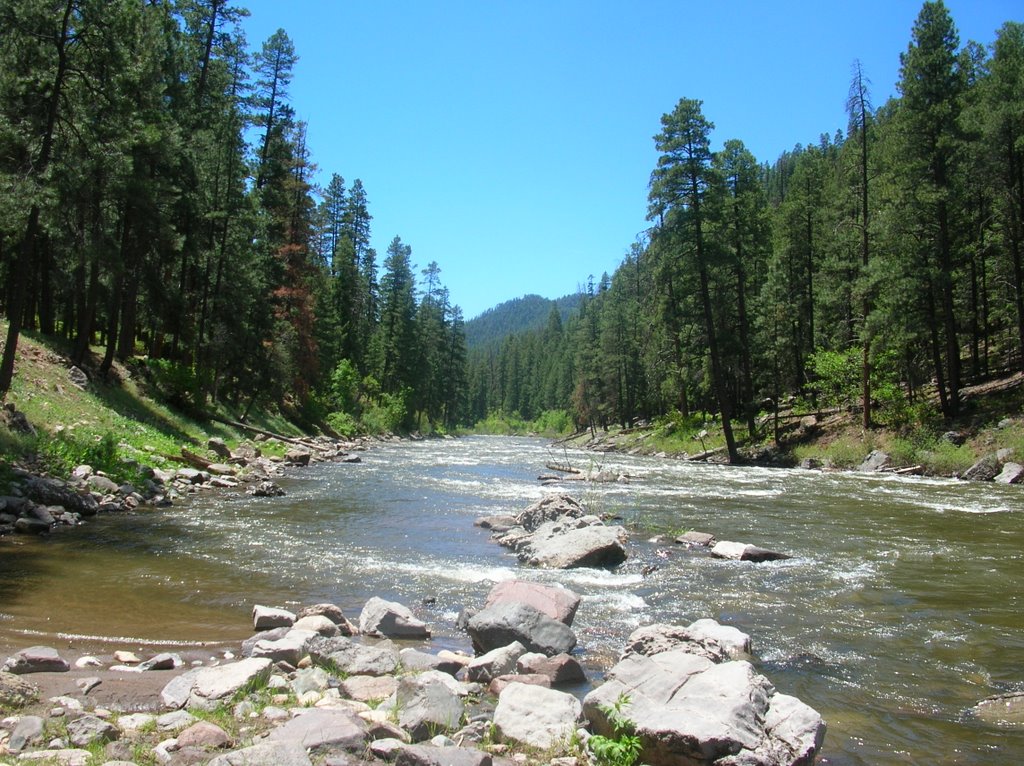 (photo:Prabhu Singh)
This month coincides with November - December of the Western/Georgian/Julian Calendar and is 30 days long. The Guru tells us that in the month of Maghar (November/December): "... those who sit with their Beloved Husband Lord are beautiful. How can their glory be measured? Contents: Top 100. 110. 120. 130. 140. 150. 160. 170. 180. 190. 210Poh (photo:Prabhu Singh) Poh ( ਪੋਹ ) is the tenth month in the Nanakshahi calendar. This is a calendar system which govern activities within Sikhi. This month coincides with December - January of the Western /Georgian /Julian Calendar and this month is 30 days long. The month starts on December 14 and the season during this month is cold in Punjab (India and Pakistan} where Sikhi took birth. Many tourists from western countries visit north India during Poh as this coincides with the Christmas holidays when people in the west get holidays from schools and time off from their work. The Guru tells us that in the month of Poh (December/January): "...the cold does not touch those, whom the Husband Lord hugs close in His Embrace. Their minds are transfixed by His Lotus Feet. They are attached to the Blessed Vision of the Lord's Darshan. Seek the Protection of the Lord of the Universe; His service is truly profitable. Corruption shall not touch you, when you join the Holy Saints and sing the Lord's Praises. From where it originated, there the soul is blended again. It is absorbed in the Love of the True Lord. When the Supreme Lord God grasps someone's hand, he shall never again suffer separation from Him. I am a sacrifice, 100,000 times, to the Lord, my Friend, the Unapproachable and Unfathomable" (SGGS page 135) .....More Contents: Top 100. 110. 120. 130. 140. 150. 160. 170. 180. 190. 211MaghMagh is the eleventh month in the Nanakshahi calendar and governs the activities of the Sikhs during the Winter period and dictates events within Sikhism. This month coincides with January/February of the Western/Georgian/Julian Calendar and is 30 days long. The month of Marg starts on the 13 of January and ends on the 11 of February. The Guru tells us that in the month of Magh (January/February): "...let your cleansing bath be the dust of the Saadh Sangat, the Company of the Holy. Meditate and listen to the Name of the Lord, and give it to everyone. In this way, the filth of lifetimes of karma shall be removed, and egotistical pride shall vanish from your mind. Sexual desire and anger shall not seduce you, and the dog of greed shall depart. Those who walk on the Path of Truth shall be praised throughout the world. Be kind to all beings-this is more meritorious than bathing at the sixty-eight sacred shrines of pilgrimage and the giving of charity. That person, upon whom the Lord bestows His Mercy, is a wise person. Nanak is a sacrifice to those who have merged with God. In Maagh, they alone are known as true, unto whom the Perfect Guru is Merciful. ((12))" (SGGS page 135) .....More Contents: Top 100. 110. 120. 130. 140. 150. 160. 170. 180. 190. 212The new month of Phagun starts on the February 12 each year. This is the twelfth and final month in the Nanakshahi calendar, which governs activity within Sikhism. In Punjab where Guru Nanak resided, this month marks the end of winter and the beginning of spring. This month coincides with February - March of the Western/Georgian/Julian Calendar and is 30 days long except in leap years when its 31 days long. This is what the Guru Granth Sahib says about this month:
Contents: Top 100. 110. 120. 130. 140. 150. 160. 170. 180. 190. |
1 See sikhspectrum.com Contents: Top 1. 10. 20. 30. 40. 50. 60. 70. 80. 90. 2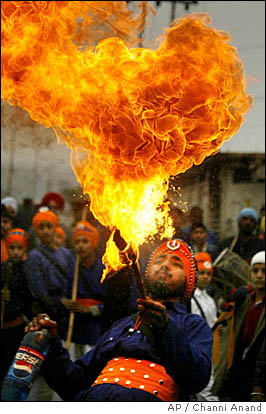
Contents: Top 1. 10. 20. 30. 40. 50. 60. 70. 80. 90. 3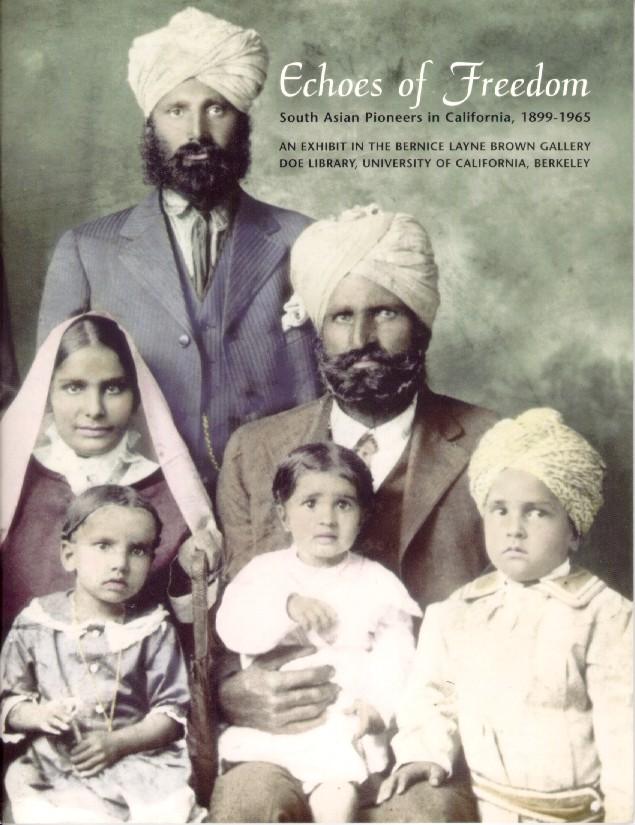 See sacrag.com Contents: Top 1. 10. 20. 30. 40. 50. 60. 70. 80. 90. 4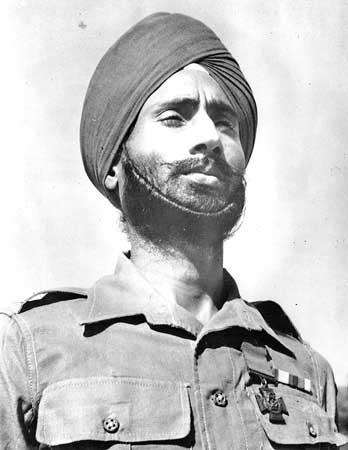 See www.asht.info Contents: Top 1. 10. 20. 30. 40. 50. 60. 70. 80. 90. 5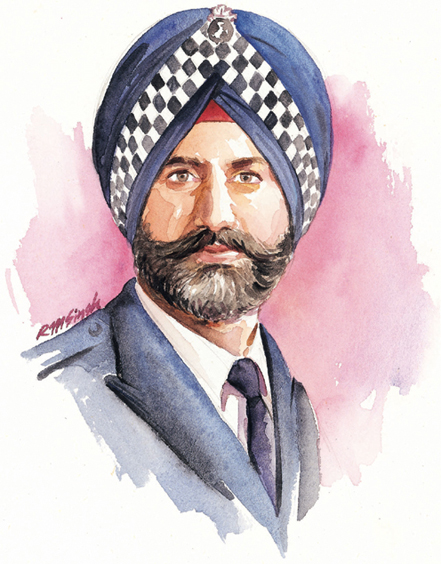 See www.redbridgelcc.org.uk Contents: Top 1. 10. 20. 30. 40. 50. 60. 70. 80. 90. 6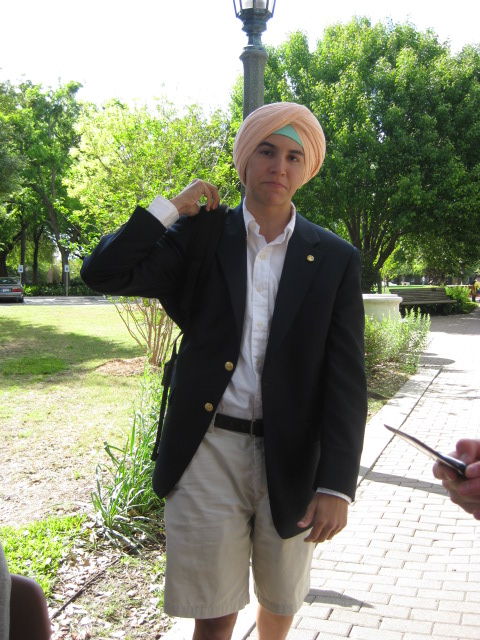 Photo by Flickr's Jaipreet Singh. Contents: Top 1. 10. 20. 30. 40. 50. 60. 70. 80. 90. 7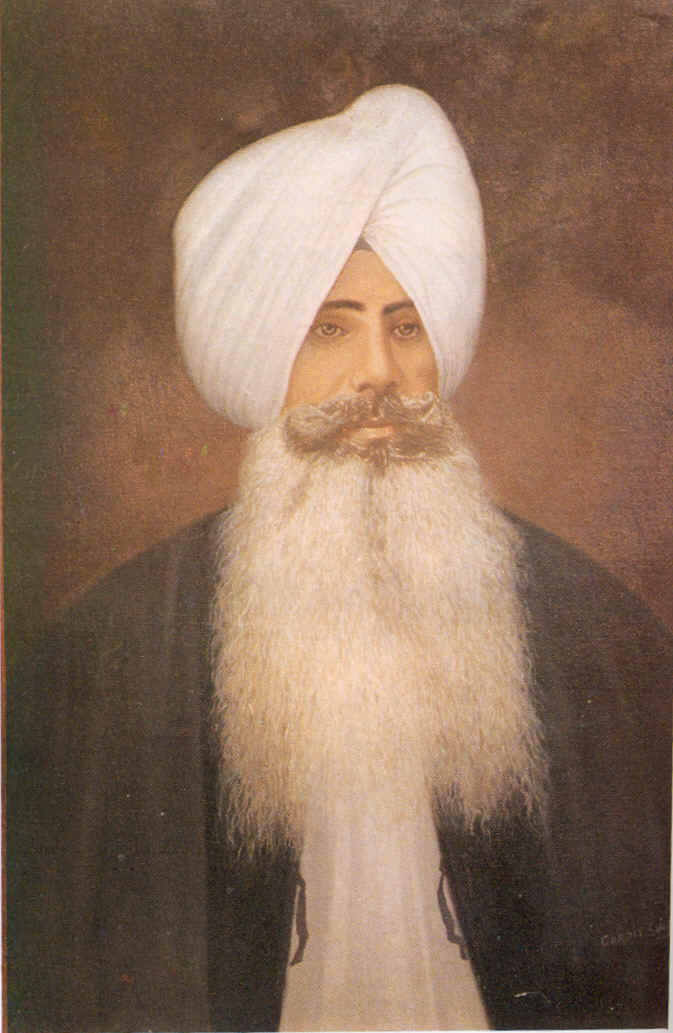 See www.sikhnn.com Contents: Top 1. 10. 20. 30. 40. 50. 60. 70. 80. 90. 8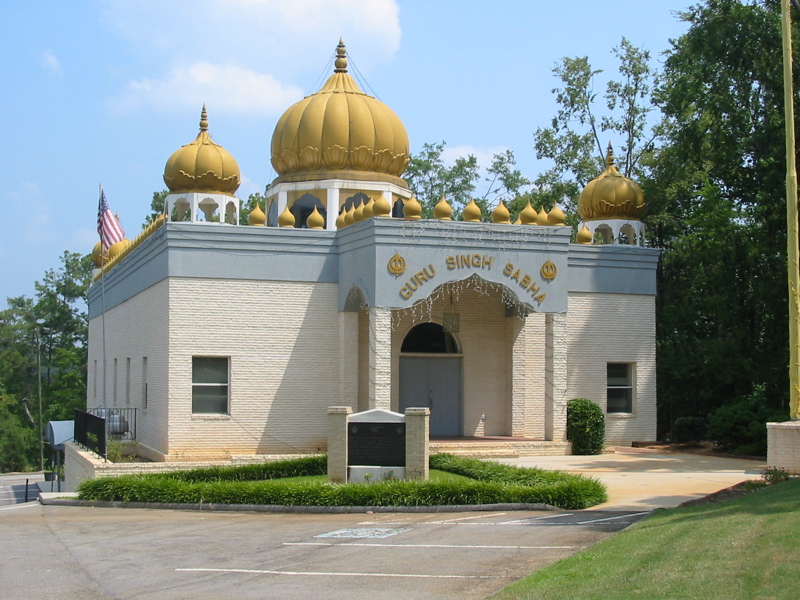 See www.pluralism.org Contents: Top 1. 10. 20. 30. 40. 50. 60. 70. 80. 90. 9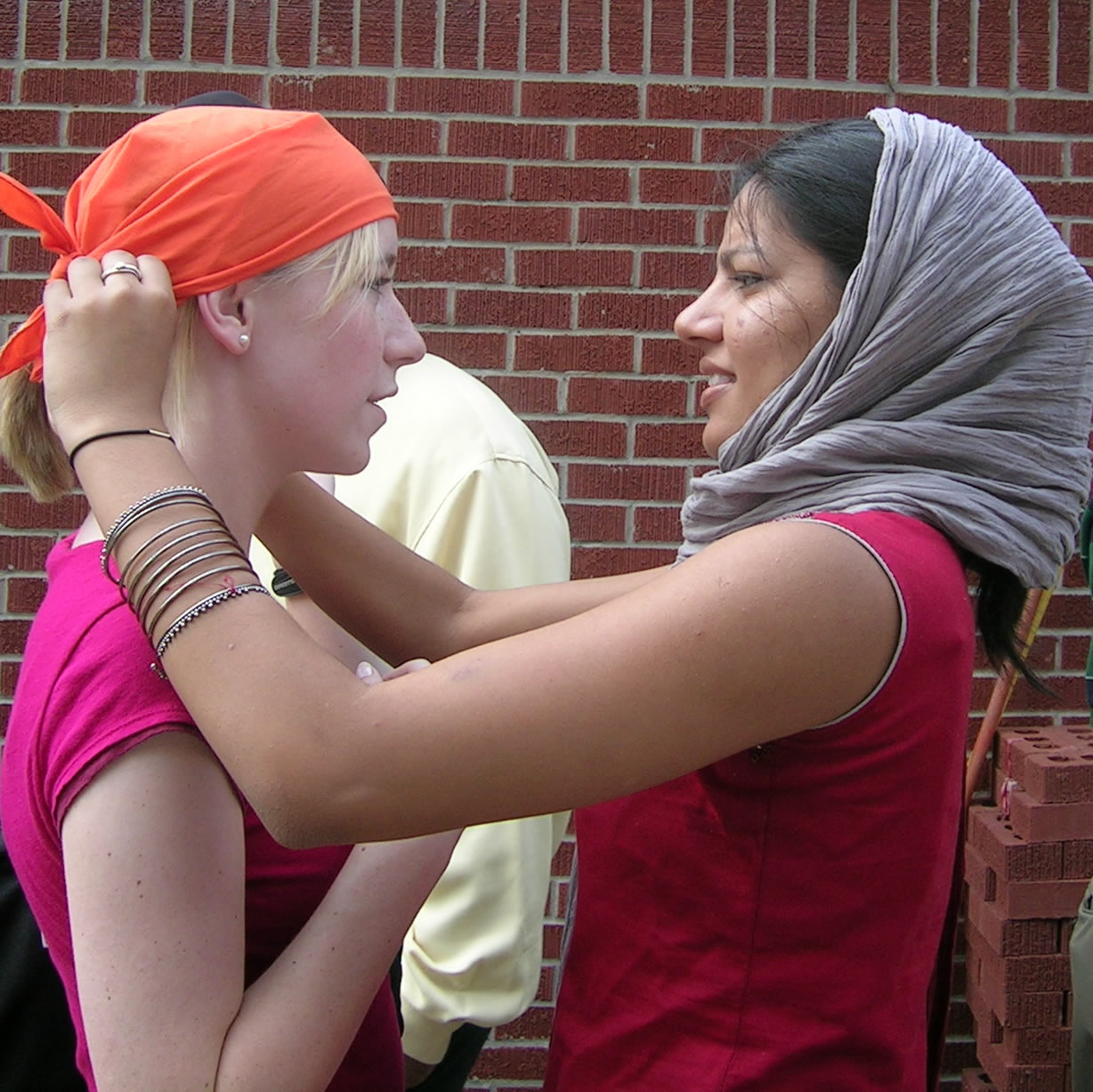 See www.millsaps.edu Contents: Top 1. 10. 20. 30. 40. 50. 60. 70. 80. 90. 10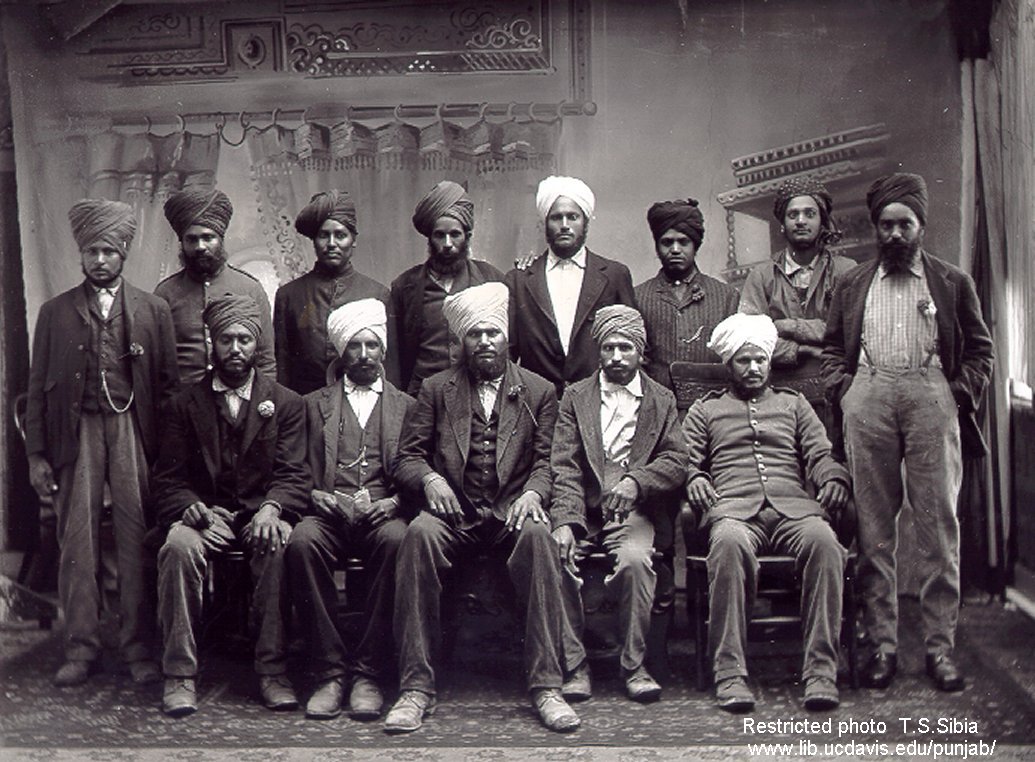 See sikhpioneers.org Contents: Top 1. 10. 20. 30. 40. 50. 60. 70. 80. 90. 11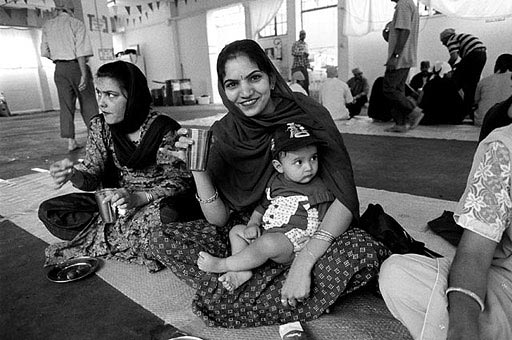 See www.dinofracchia.it/ Contents: Top 1. 10. 20. 30. 40. 50. 60. 70. 80. 90. 12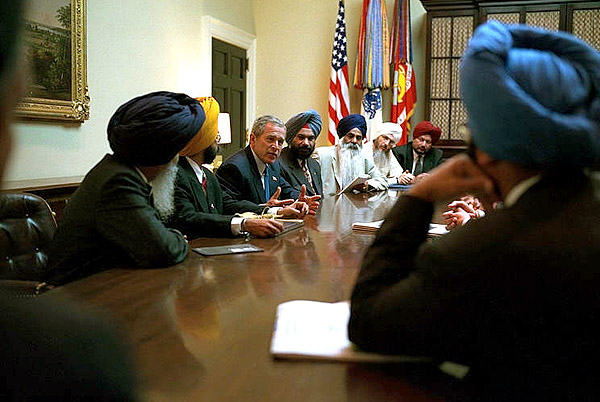 See www.whitehouse.gov Contents: Top 1. 10. 20. 30. 40. 50. 60. 70. 80. 90. 13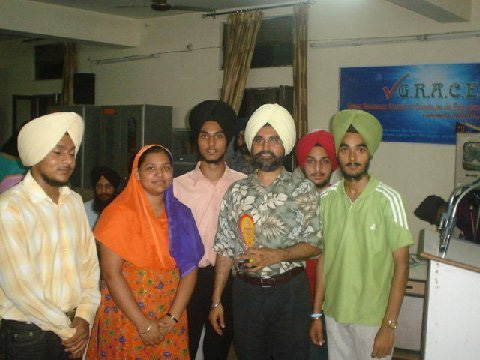 See www.sikhcouncilusa.org Contents: Top 1. 10. 20. 30. 40. 50. 60. 70. 80. 90. 14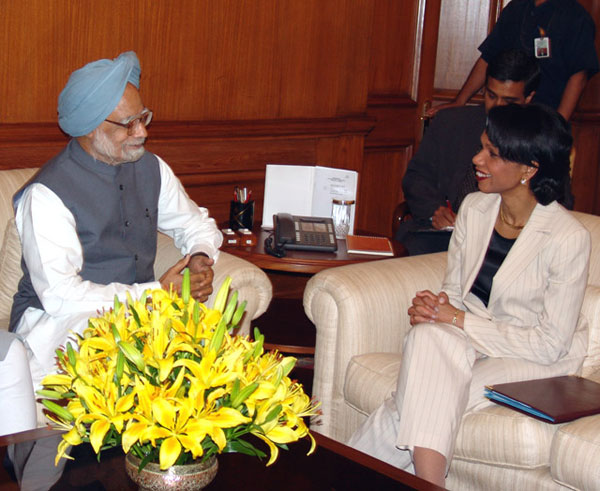 See www.state.gov Contents: Top 1. 10. 20. 30. 40. 50. 60. 70. 80. 90. 15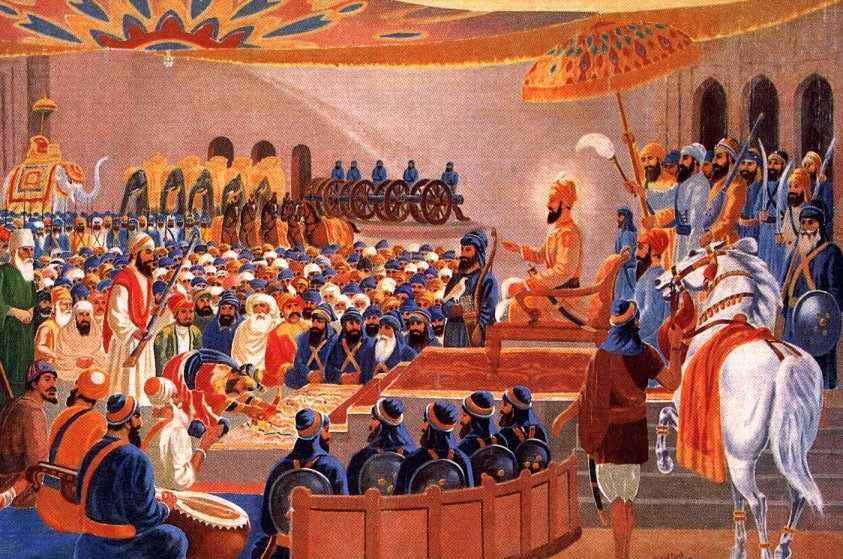 See Picture Gallery at www.amritsar.com Contents: Top 1. 10. 20. 30. 40. 50. 60. 70. 80. 90. 16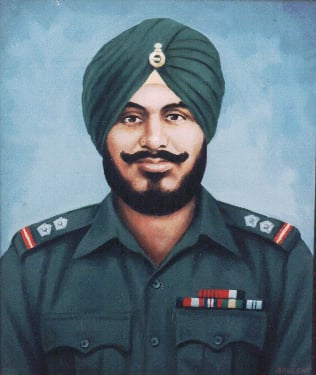 See en.wikipedia.org Contents: Top 1. 10. 20. 30. 40. 50. 60. 70. 80. 90. 17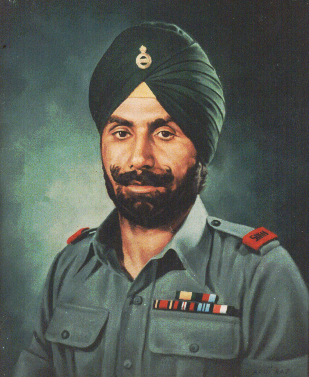 See en.wikipedia.org Contents: Top 1. 10. 20. 30. 40. 50. 60. 70. 80. 90. 18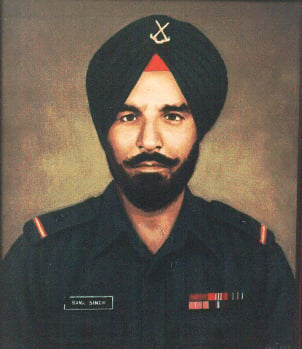 See www.indianarmy.nic.in Contents: Top 1. 10. 20. 30. 40. 50. 60. 70. 80. 90. 19 See en.wikipedia.org Contents: Top 1. 10. 20. 30. 40. 50. 60. 70. 80. 90. 20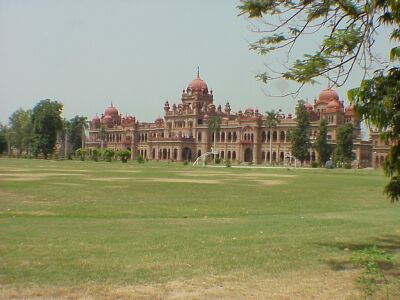 See www.khalsacollegeamritsar.org Contents: Top 1. 10. 20. 30. 40. 50. 60. 70. 80. 90. 21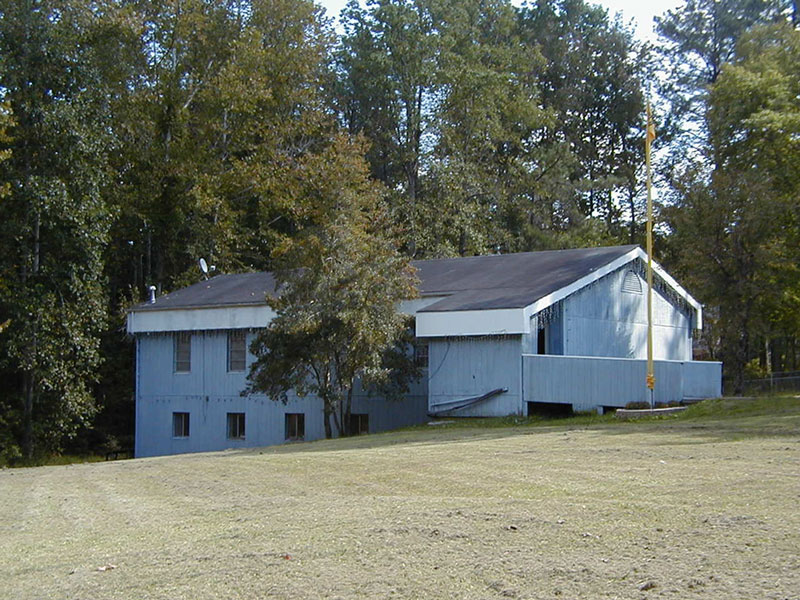 See acsagurdwara.org Contents: Top 1. 10. 20. 30. 40. 50. 60. 70. 80. 90. 22Contents: Top 1. 10. 20. 30. 40. 50. 60. 70. 80. 90. 23 See Zenquest flickz in India Contents: Top 1. 10. 20. 30. 40. 50. 60. 70. 80. 90. 24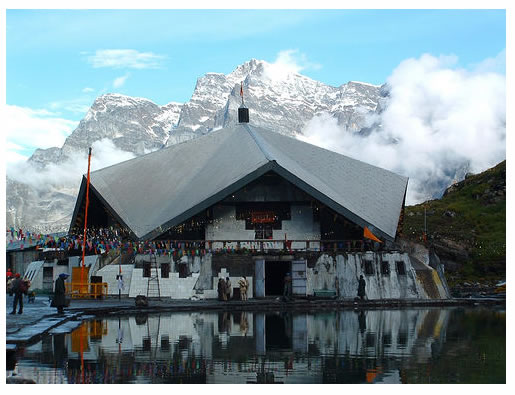 See Lakhdip Flickz - see photos with tag 'Hemkunt' Sahib Contents: Top 1. 10. 20. 30. 40. 50. 60. 70. 80. 90. 25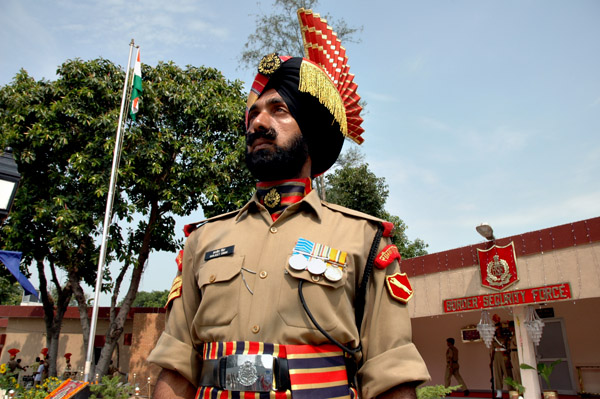 See Raminder pal Singh Flickz in India Contents: Top 1. 10. 20. 30. 40. 50. 60. 70. 80. 90. 26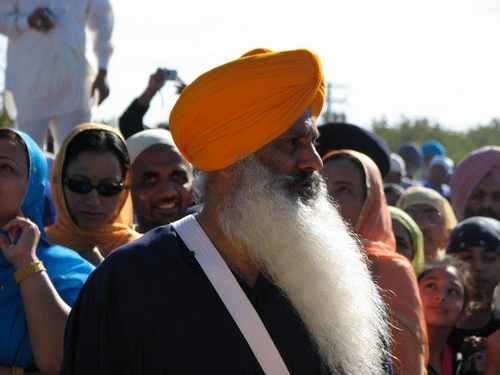 Jas Kaur on Flickr Contents: Top 1. 10. 20. 30. 40. 50. 60. 70. 80. 90. 27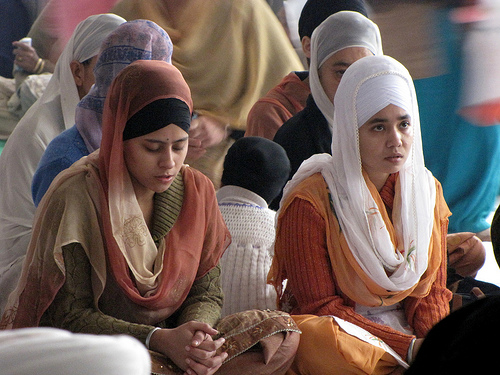 Jas Kaur on Flickr Contents: Top 1. 10. 20. 30. 40. 50. 60. 70. 80. 90. 28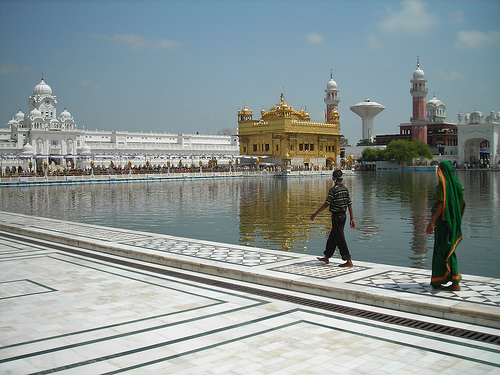 See Flickr's Oblomqvist in India for more. Contents: Top 1. 10. 20. 30. 40. 50. 60. 70. 80. 90. 29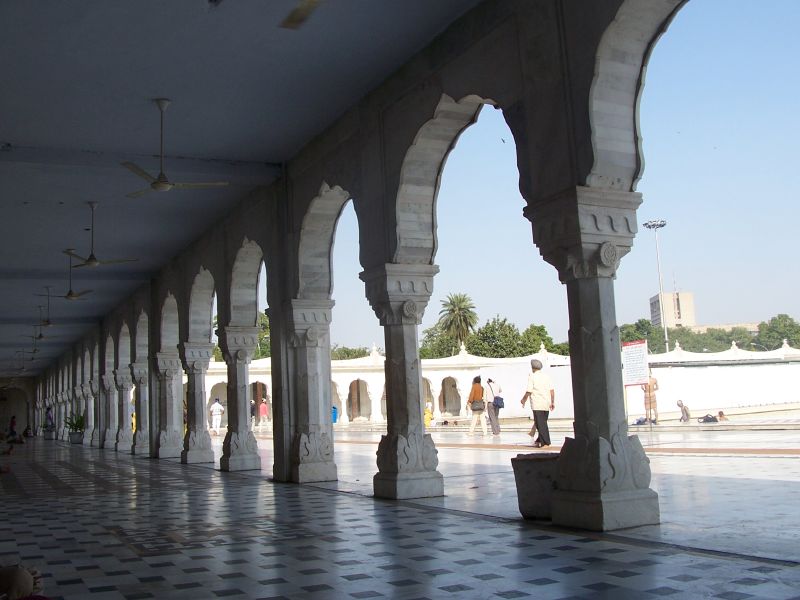 See Flickr's Saurabh in India for more. Contents: Top 1. 10. 20. 30. 40. 50. 60. 70. 80. 90. 30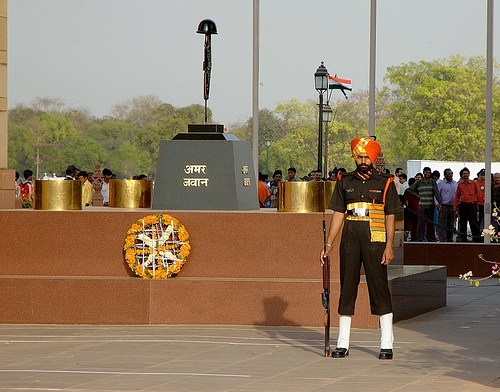 See Flickr's LovemaX in India for more. Contents: Top 1. 10. 20. 30. 40. 50. 60. 70. 80. 90. 31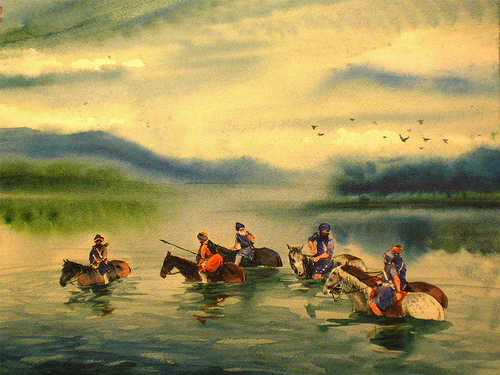 See Flickr's Jathedar's watercolours and more. Contents: Top 1. 10. 20. 30. 40. 50. 60. 70. 80. 90. 32Contents: Top 1. 10. 20. 30. 40. 50. 60. 70. 80. 90. 33Contents: Top 1. 10. 20. 30. 40. 50. 60. 70. 80. 90. 34Contents: Top 1. 10. 20. 30. 40. 50. 60. 70. 80. 90. 35Contents: Top 1. 10. 20. 30. 40. 50. 60. 70. 80. 90. 36Contents: Top 1. 10. 20. 30. 40. 50. 60. 70. 80. 90. 37Contents: Top 1. 10. 20. 30. 40. 50. 60. 70. 80. 90. 38Contents: Top 1. 10. 20. 30. 40. 50. 60. 70. 80. 90. 39Contents: Top 1. 10. 20. 30. 40. 50. 60. 70. 80. 90. 40Contents: Top 1. 10. 20. 30. 40. 50. 60. 70. 80. 90. 41Contents: Top 1. 10. 20. 30. 40. 50. 60. 70. 80. 90. 42Contents: Top 1. 10. 20. 30. 40. 50. 60. 70. 80. 90. 43Contents: Top 1. 10. 20. 30. 40. 50. 60. 70. 80. 90. 44Contents: Top 1. 10. 20. 30. 40. 50. 60. 70. 80. 90. 45Contents: Top 1. 10. 20. 30. 40. 50. 60. 70. 80. 90. 46Contents: Top 1. 10. 20. 30. 40. 50. 60. 70. 80. 90. 47Contents: Top 1. 10. 20. 30. 40. 50. 60. 70. 80. 90. 48Contents: Top 1. 10. 20. 30. 40. 50. 60. 70. 80. 90. 49Contents: Top 1. 10. 20. 30. 40. 50. 60. 70. 80. 90. 50Contents: Top 1. 10. 20. 30. 40. 50. 60. 70. 80. 90. 100 Image courtesy of Buzzle The Sikh faith condemns empty rituals and superstitions. The practice of blind rituals, worshipping of idols or inanimate objects, participating in religious fasts, pilgrimage to holy places, offering of food to sadhus (religious leaders), or believing in any such religious or other rites, superstitions or fads is rejected by Sikhism. These pointless practises will not bring one closer to God or make one a better human being. In all societies round the world, through fear and uncertainty, members undertake in ritualistic and worthless behaviour at times of worry, uncertainty or trouble. These poor people, wrongly believe that undertaking these empty customs and penances will bring them special assistance from Waheguru or some other higher power. Superstition is an irrational belief arising from ignorance or doubt. Many people all around the world are gripped by various superstitions and they live their lives in fear and uncertainty. Most of these fears are irrational and superfluous but they still cannot unbind themselves from these sometimes evil and false notions. Some common and well-known examples of superstitions are:
Contents: Top 100. 110. 120. 130. 140. 150. 160. 170. 180. 190. 101Sukhmani or Sukhmani Sahib is the title given to the Gurbani in raga Gauri Sukhmani in the Guru Granth Sahib which in turn appears in the major musical measure Raga Gauri to which it belongs. It is a lengthy masterpiece, written by Guru Arjan Dev, the fifth Sikh Guru. The sacred prayer spans 35 pages from page 262 to page 296 of the Guru Granth Sahib. Surprisingly, many ardent Sikhs include the recitation of this Bani in their daily regimen of Nitnem. The physical site where, around AD 1602-03, the Guru composed this Gurbani was once enclosed by a dense wood. The location is still marked on the bank of the Ramsar pool in the city of Amritsar, near the famous Golden Temple or Harimandir Sahib. It is said that Baba Sri Chand, elder son of Guru Nanak and founder of the Udasi order, came to Amritsar to meet Guru Arjan, then engaged in composing this Bani. The Guru who had by that time completed sixteen astpadis, or cantos, requested him to continue the composition. Baba Sri Chand, out of humility, only recited the salok of Guru Nanak following the Mool Mantra in the Japji .....More Contents: Top 100. 110. 120. 130. 140. 150. 160. 170. 180. 190. 102The laava (singular laav) are the four Shabads (sacred hymns) of the Anand Karaj (Sikh wedding ceremony). They form the central part of the marriage ceremony. The "four rounds" ("char phaara") as they are sometimes called, form the main part of this auspicious occasion. The four Shabads that are central and form the key element of the Sikh marriage ceremony are from the Guru Granth Sahib, the Sikh holy scriptures and appear on pages 773 to 774 of the total of 1430 page of the holy Granth. Guru Ram Das, the fourth Sikh Guru tells us on page 788 of the Sri Guru Granth Sahib about the meaning of marriage to a Sikh couple – Effectively, the Guru defines a Sikh marriage in these 2 lines: "They are not said to be husband and wife who merely sit together. Rather they alone are called husband and wife, who have one soul in two bodies." Thus the partnership of marriage is given a special meaning - a new dimension. For a union of marriage to be successful, the two personalities have to merge into one – a spiritual bonding through understanding and love. The Guru through the four laava gives the Sikh couple further spiritual guidance for their life together; a journey together towards liberation and union with God. The Guru tell the Sikhs of the four golden rules of married life. These rules start very clearly to define the path to be threaded together in this sacred union. The Shabads inform us how the couple as a team has to .....More Contents: Top 100. 110. 120. 130. 140. 150. 160. 170. 180. 190. 103Gurdwara Nanak Piao is a historic Gurdwara located in north Delhi in India. This Gurdwara sahib is dedicated to the first Sikh Guru, Sri Guru Nanak Dev. This Gurdwara was built at the site where Guru Nanak Dev camped, in the garden when he visited Delhi in 1505 during the reign of Sultan Sikander Shah Lodhi. It is situated on Rana Pratap Road (also known as Grand Trunk Road or GT Road). It is said that people flocked to the revered prophet and offered him and Bhai Mardana precious gifts and offerings. Guru Nanak used to distribute all these offerings to the poor and needy. Besides this, he used to offer food and water to the hungry and thirsty, hence the name of the shrine. The word "Piao" mean to "offer liquid to drink" and refers to the offering of water to all the thirsty who visited this shrine. Even today, the well used by the Guru is preserved and one can still see the well from which Guru Nanak served water at the shrine. Consequently, over time Gurdwara Nanak Piao attained a status of a holy and revered historical shrine. .....More Contents: Top 100. 110. 120. 130. 140. 150. 160. 170. 180. 190. 104Gurdwara Panja Sahib is situated at Hasan Abdal, 48 km from Rawalpindi in Pakistan. This is one of the most holy places of Sikhism because it marks the spot where the founder of the faith, Guru Nanak Dev visited and instilled an important lesson for his adherents. Still visible is the sacred rock with the hand print of Guru Nanak. Many thousands of faithful Sikhs from all over the globe visit this shrine every year. However, twice a year, during special celebrations, an enormous number of Sikh pilgrims attend this Gurdwara from every corner of the world. Special visas are allocated by the Pakistan government to cater for the increased demand. Guru Nanak along with Bhai Mardana reached Hasan Abdal on Baisakh Samwat 1578 B.K. corresponding to 1521 A.D. in the summer season. Under a shady cool tree, Guru Nanak and Bhai Mardana started reciting Kirtan and their devotees gathered around. This annoyed Wali Qandhari but he was helpless. ....Continued. Contents: Top 100. 110. 120. 130. 140. 150. 160. 170. 180. 190. 105On June 16 every year, Sikhs worldwide celebrate - yeah, Celebrate! - the great sacrifice of Guru Arjan, their fifth Guru. In 1601, after completing the construction of the beautiful Harimandir Sahib and then the successful compilation of the voluminous sacred Sikh Scripture called the Adi Granth in 1604, the Guru embarked on teaching the Sikhs his ultimate lesson. In 1606, the Guru, by example, showed the Sikhs the way and the manner in which to die in the name and in the Hukam (will) of God. Guru ji was the first Sikh martyr ever and by this event, the Guru set a precedence and an example for the people of the world. He demonstrated how one should lay down one's life without fear, with dignity, honour and how not to be intimidated by thugs and terrorists. ....More Contents: Top 100. 110. 120. 130. 140. 150. 160. 170. 180. 190. 106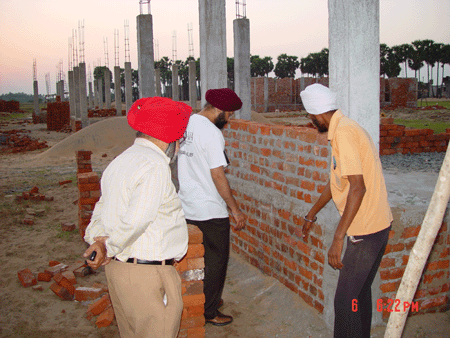 Seva is the essence of Sikhism. If there is one solitary word to sum up the Sikh religion, I would unhesitatingly pick seva as the operative word. Seva is the voluntary service to fellow beings without any expectation of reciprocation. It is deeply ingrained in the collective psyche of the Sikhs. Seva is what shines in Sikhism above all. I can say it without any exaggeration or the fear of contradiction that the extent of seva that is found among the Sikhs is rarely found in any other religion. The accent is upon the word, `Voluntary'. That makes the Sikhs unique. It has often been seen in India that whenever there is any natural calamity on a large scale, the Sikh organizations are the first to reach there to provide succour to the affected people. After the devastating earth-quake in Katchh in the Gujarat State of India in 2001, the Sikhs had put up some of the biggest camps to provide free food to the quake-affected people. .....More Contents: Top 100. 110. 120. 130. 140. 150. 160. 170. 180. 190. 107Nawab Kapur Singh (1697-1753) is considered one of the most revered, pivotal and legendary figures in Sikh history post 1716. Under his leadership decisions and courage, the then tiny Sikh community went through some of the darkest periods of its history. The founding father of the Sikh Confederacy and Sikh Empire, he was also the founder of the Dal Khalsa. Alongside Banda Bahadur who dominated the seen before him, he laid the foundations of the Sikh Empire and the eventual over-through of the vicious Mughal Empire. Today, he is regarded by Sikhs to be of equal importance to Banda Singh Bahadur. The period, starting from the massacre (in 1716) in Delhi of Banda, his son, seven hundred of his devoted army members and thousands of Sikhs taken captive or beheaded along the march to Delhi, was followed by severe action against the Sikhs by the rulers, including massacres of young men, women and children. .....More Contents: Top 100. 110. 120. 130. 140. 150. 160. 170. 180. 190. 108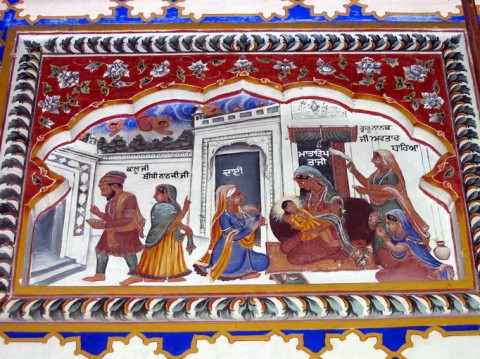 Fresco showing Mata Tripta with baby Nanak. Bibi Nanaki, Dayee and others look on Mata Tripta was Guru Nanak's mother. The history of Sikh women has to start with her. She was the person who brought Guru Nanak, the founder of the Sikh religion into the world. In the annals of world history, the greatness of Mata Tripta, deserves to be celebrated for bringing to the world a soul who offered much spiritual and moral guidance and a solid and creditable foundation for a new world religion. Mata Tripta and her husband Mehta Kalu lived in Talwandi, Punjab, which is now part of Pakistan. Weary saints and 'fakirs' would take rest here, and Mata Tripta would welcomed and serve all these passers-by. Their dedication for service of others was finally rewarded when Nanak was born in 1469. Thus, Mata Tripta was blessed with the honour of giving birth to God's messenger, Guru Nanak, whose mission was to redeem mankind. No poet has ever been able to convey the ethereal beauty attained by Mata Tripta when she was expecting Nanak. Of the many prophets that have visited the earth, many of their mothers were unable to celebrate in the joy of rearing such wondrous offspring. For example; in Hinduism, Mata Devaki, the mother of Krishan, was unable to fulfil her maternal role as she languished in jail. She yearned for her child, and he too missed the love of his mother. .....More Contents: Top 100. 110. 120. 130. 140. 150. 160. 170. 180. 190. 109 Most people in the west who wear the turban are Sikhs. All Sikhs, but particularly male Singhs are required to don the Dastaar due to the pronouncement in 1699 by the tenth Sikh master, Guru Gobind Singh. "Dastaar", is the native Punjabi term used to refer to this headdress. Even 300 years on, it is in compliance to the Hukam (or order) of this supreme Sikh leader that all Sikhs today wear the dastaar. It is in honour and obedience to this one person! The Sikh prime minister of India, Dr Manmohan Singh, displays his sky blue trademark turban out of respect for the Sikh Guru; the famous record breaking, 95-year-old marathon runner, Fauja Singh proudly wears his dastaar in honour of the tenth Sikh teacher; Bhagat Puran Singh the humble humanist and philanthropist used to don a simple turban in respect of the Sikh master. Why do the Sikhs go to all this trouble so many years after the diktat? The dastaar comes in many different colours and styles and to the keen eye, each turban is different. Some are simple but regal; others may be bright and sporty; yet others may be stylish and extravagant – each one has it own special and unique statement. Every morning, most Sikh man and many Sikh women, spend some 5 to 20 minutes to comb their long hair and then carefully handicraft the link to their Gurus – a daily reminder of their heritage and its responsibilities. .....More Contents: Top 100. 110. 120. 130. 140. 150. 160. 170. 180. 190. 110Baba Gurditta (1613-1638), was the eldest son of the sixth Sikh Guru, Guru Hargobind. He was born on 15 November 1613 to Mata Damodari at Daroli Bhai, District Firozpur in Punjab, India. He was also an elder brother of Guru Tegh Bahadur, the ninth Sikh Guru and the father of Guru Har Rai and Dhir Mall. He was married to Mata Nihal Kaur. He had his training in religious lore and in the martial arts under the supervision of his father. A beautiful Gurdwara stands at this site called Gurdwara Daroli Bhai, Dist. Firozpur. This Gurdwara marks the birthplace of Baba Gurditta, who was a great saint. The family of Guru Hargobind's wife Mata Damodari still live here and are custodians of some rare personal belongings of the sixth Sikh Guru, Guru Hargobind as well as a handwritten copy of Sri Guru Granth Sahib bearing the personal seal of Guru Gobind Singh. Similarly there is also an another Gurudwara at Anandpur Sahib of Baba Gurdita on a small hill nearby. He was married on 17 April 1621 to Ananti alias Natti, daughter of Bhai Rama of Batala, an ancient town in Gurdaspur district. According to "Gurbilds Chhevm Pdtshdhi", relations from Darauli, Mandiali, Goindval and Khadur Sahib accompanied the marriage party. .....More Contents: Top 100. 110. 120. 130. 140. 150. 160. 170. 180. 190. 111Baba Banda Singh Bahadur (16 October, 1670 - 9 June, 1716) (Lachhman Dev alias Madho dass Bairagi), originally from the Jammu region, is revered as one of the greatest Sikh warriors as well as a most hallowed martyrs of the Khalsa Army. The Khalsa were engaged in a prolonged fight against the cruel Mughals, who were practising their tyranny and mass terrorism on the general public. His confrontation with the Mughal administration in Northern India, though brief, was strong and extremely vigorous, enough to shake the foundations of this evil empire. The agrarian uprising that he led in the Punjab was the underpinning on which the Dal Khalsa, the Sikh Misls and Maharaja Ranjit Singh built the edifice which finally culminated with Ranjit Singh capturing Lahore in 1799 and establishing the Sikh Kingdom in the Punjab and finally the defeat of the cruel Mughal empire. This resulted in the end of a dark period in the history of India. .....More Contents: Top 100. 110. 120. 130. 140. 150. 160. 170. 180. 190. 112Gurdwara Pehli Patshahi meaning the "Gurdwara of the first master" is situated at Lakhpat, Gujarat, India - A town in Gujarat, visited by Guru Nanak sahib during his second and fourth missionary journeys (Udasis) in 1506-1513 AD and 1519-1521 AD respectively. "Gurdwara Guru Nanak Sahib" has been built to preserve the memory of these visits of revered Guru during the early 1500s. Guru Nanak is believed to have visited this site while he was on his way to Mecca during the Fourth Udasi. A few of his rare personal possessions are retained here. In the course of Guru Nanak Dev ji's travels, he visited Gujarat and traveled onto Lakhpat. In those days, Lakhpat was part of Sind, which today is now part of Pakistan). Lakhpat is 170 kms from Gandhidham, Gujarat, India. In the sixteenth century Lakhpat was known as "Basta Bandar". Lakhpat was then a rich rice growing area and was also a popular port along the river, but an earthquake in 1819 led to the area became barren and crops withered away due to a lack of water as the as the age old irrigation system failed when the riverbed shifted as a result of the earthquake. .....More Contents: Top 100. 110. 120. 130. 140. 150. 160. 170. 180. 190. 113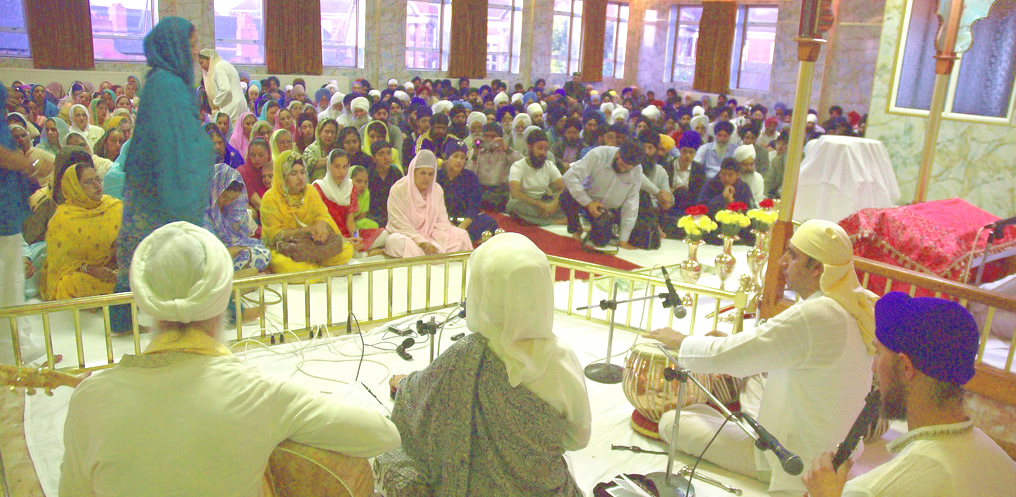 "Sangat" is congregation. "Sadh" is saint. "Sat" is true. All these three words refer to a gathering of, or a meeting with, God-oriented people. The group may come together to say prayers to God, sing kirtan, listen to kathas or discuss spirituality and religious matters. They may meet in a Gurdwara, the Sikh place of worship, or at home, or anywhere else. Most commonly, a sangat gather in the presence of the Guru Granth Sahib - the Sikh holy book. Wherever people gather to sing the praise of the Lord, or to talk about Him, they are referred to as "Sat Sangat" or "Sadh Sangat" – "holy gathering". While the word Sangat can refer to any gathering, but within the field of a religious faith, it refers to a true, wise or holy gathering. Man is known by the company (or sangat) that he keeps. Man is the result of his environment. Bhagat Kabir says: "ਜੋ ਜੈਸੀ ਸੰਗਤਿ ਮਿਲੈ ਸੋ ਤੈਸੋ ਫਲੁ ਖਾਇ ॥ Jo jaisī sangaṯ milai so ṯaiso fal kẖā▫e. According to the company one keeps, so are the fruits that one eats" (SGGS p 1369). So the company that one keeps is a great force and it plays a big role in shaping the person. Those who live in the company of thieves, robbers and evil persons, acquire evil ways of life and are bound to become thieves, robbers and the like, but those who keep the company of saintly people are shaped in the saintly mould and destined to follow the path of spirituality. .....More Contents: Top 100. 110. 120. 130. 140. 150. 160. 170. 180. 190. 114Gurdwara Nanak Mata is a historical Sikh shrine in a town also named Nanak Mata (often pronounced Matta) in district Udham Singh Nagar, Uttarakhand in northern India. Uttarakhand state borders Tibet to the north, Nepal to the east, and the states of Himachal Pradesh and Uttar Pradesh to the west and south respectively. The provisional capital of Uttarakhand is Dehradun which is also a rail-head and the largest city in the region. The town is associated with Guru Nanak Dev and Guru Hargobind. It is situated on the bank of Deoha stream, which has since been dammed into a reservoir named Nanak Sagar. The Gurdwara is located 15 kilometres west of Khatima Railway Station on the Pilibhit-Tanakpur metre-gauge section of North-Eastern Railway. The holy shrine is near the town of Sitarganj. Gurdwara Sri Nanak Mata Sahib is associated with the first Guru, Guru Nanak Dev ji who went there during his third Udasi in 1514 A.D. At that time, Gurdwara Sri Nanak Mata Sahib was the abode of the devotees of Guru Gorakhnath and it was called "Gorakhmata". .....More Contents: Top 100. 110. 120. 130. 140. 150. 160. 170. 180. 190. 115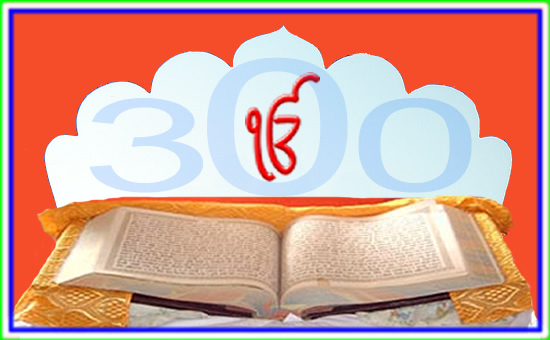 On 15 November 2007 at 4.30pm IST (Indian standard time) (11 am GMT and 6am EST-USA;) the Takhat Sachkhand Sri Hazoor Sahib Gurdwara will begin the countdown to the 300th year of guruship of Guru Granth Sahib in October 2008. To mark this occasion, the Gurdwara is asking all Sikhs to recite the Mool Mantar for 15 minutes at this time. The organisers have stated that: "MEDITATE, PARTICIPATE, CELEBRATE: Over 15 million Sikhs across the world will celebrate Simran Divas. An auspicious occasion that will flag off the year long celebrations marking 300 years of "GURTA GADDI' at Nanded in October,2008. Share your love and devotion by reciting the "Mool Mantar" wherever you may be. Let us meditate, participate, celebrate together 300 saal guru dey naal" The tercentenary celebration of the Guruship of Sri Guru Granth Sahib is to be undertaken on a massive scale towards the end of next year at Takhat Sachkhand Shri Hazur Abchalnagar Sahib in Nanded, Maharashtra, India. The historic town of Nanded is an important place in Sikhi because it is where Takht Sri Hazur Sahib, one of the five temporal thrones or seats of authority (Takhats) is located. This is where Guru Gobind Singh, the Tenth Teacher, is known to have meditated on the banks of river Godavari and where he spent his final days. .....More Contents: Top 100. 110. 120. 130. 140. 150. 160. 170. 180. 190. 116Every year in November, many millions of spiritually inclined people around the planet will celebrate the birth anniversary of the most widely respected of saints in the world, Baba Nanak. Baba ji was born in 1469 and brought a universal message of peace, love, unity, mutual respect, service and dedication to all of humankind. He turned people from violence to peace; he converted tyrants into compassionate beings; and he changed painful societies' into blissful communities. People of all faiths listened to his message and all gained from his wise and sacred words. Out of respect for his wisdom and fascination for his beautiful poetry, many thousands of followers heeded his words and changed their way of life. Today in these violent and turbulent times, many millions continue to gain from his spiritual insight and lead a tranquil and peaceful existence treading on the path that he established – his teaching enshrined in the Guru Granth Sahib are a beacon to many millions in the world. He never asked anyone to change their religion; all he said was "If you desire eternal bliss, O Nanak, always remember the Lord in meditation" (p714). He asked all to mend their ways, to remember God and do good deeds. .....More Contents: Top 100. 110. 120. 130. 140. 150. 160. 170. 180. 190. 117Gurdwara Sri Guru Tegh Bahadur Sahib - This famous Gurudwara is situated in the heart of the Dhubri Town on the bank of the mighty Brahmaputra river in far north-west India. Guru Nanak the first Sikh Guru visited this place in 1505 and met Srimanta Sankardeva (the founder of the Mahapuruxiya Dharma) as the Guru travelled from Dhaka to Assam. This historic shrine, Sri Gurdwara Guru Tegh Bahadur or Damdama Sahib at Dhubri in Assam was built in memory of the visit of Guru Nanak. Hence it has great importance for Sikh community. Guru Tegh Bahadur established this Gurdwara during his 17th century visit to the area. Sikh devotees from all over India and the world assemble in this Gurdwara every year in the month of December to mark the martyrdom of Guru Tegh Bahadur with due solemnity and ceremony. Sikh devotees call this festival Sahidee Guru Parav. It was during his stay in Dhubri, that the ninth Guru received the news that a son was born to him at Patna. .....More Contents: Top 100. 110. 120. 130. 140. 150. 160. 170. 180. 190. 118Several months before March 1699, Guru Gobind Singh invited his followers from all over India to a special congregation at Anandpur on Vaisakhi Day, 30 March 1699. As a result, on that particular day many hundreds of devotees and onlookers had gathered at Anandpur Sahib. Many had come as a sign of respect for the Guru and in accordance to his invitation while some had just come out of curiosity. On the appointed day, the Guru addressed the congregates with a most stirring oration on his divine mission of restoring their faith and preserving Dharam (righteousness). After his inspirational discourse, he flashed his unsheathed sword and said that every great deed was preceded by equally great sacrifice. He asked, with a naked sword in his hand, "Is there any one among you who is prepared to die for their faith?" When people heard his call, they were taken aback. Some of the wavering followers started to leave the congregation, while other began to look at one another in amazement. .....More Contents: Top 100. 110. 120. 130. 140. 150. 160. 170. 180. 190. 119 photo courtesy bbc On February 5, 2008, at a preliminary hearing, a UK judge Sir Michael Harrison in Court 18 at the Royal Court of Justice in London decided not to allow a Sikh girl, Sarika Watkins-Singh to wear her Kara to school. The Kara is one of the five articles of faith which is worn by all practising Sikhs. The decision was made before the case was heard at a full hearing several months later. Fortunately, when the case was heard at a full trial by Mr Justice Silber, over 3 days from 17 June, 2008, he sided with the Sikh girl. The deputy High Court judge decision at the first hearing was surprising as in 1983 the House of Lords, the supreme court in the UK decided that a school had violated the rights of a student, Gurinder Singh Mandla when he was not allowed to join the school because of his turban which he used to cover his kesh (uncut hair); one of the 5ks or Articles of faith. (see the full judgement Mandla v Dowell Lee). In what appears an unbelievable statement, the deputy judge ruled: "Whilst I accept there will be detriment to the claimant (Sarika) if she is not able to wear the Kara in the interim, it does not seem to me that is anything like as significant as the detriment to the school if she were allowed to wear it." This surprised a lot of Sikhs as it appears to encourage other organisations to freely discriminate and break the law as the "detriment to the claimant" may be less significant than to the opposite party. .....More Contents: Top 100. 110. 120. 130. 140. 150. 160. 170. 180. 190. 120In the last month from 6 November to 6 December 2007, over 72,000 visits were made to SikhiWiki. That is a record!! Click on the adjacent picture to see the exact details. Are you included in the figure of 72,008? Are all your friends connecting with Sikhi through this site. If not, why not! Tell your friends about this site and let them also learn about Sikhi. We believe that this is the most comprehensive site for learning about Sikhism and the Sikhs - It is free to access and new items are added every day. .....More Contents: Top 100. 110. 120. 130. 140. 150. 160. 170. 180. 190. 121On June 11 every year the Sikhs celebrate the Gurgadi day of their sixth Master, Guru Har Gobind (5 July 1595 - 19 March 1644). The Guru sahib was born at village Guru Ki Wadali in district Amritsar, Punjab, India on 5 July 1595 and was the only son of Mata Ganga and Guru Arjan, whom he succeeded on 11 June 1606 at the age of only 11 years old. The young Hargobind received his early education and training from the revered Sikh leaders of the time Baba Buddha, the first Sikh "granthi" and Bhai Gurdas, the scribe of the Sikh holy script, Guru Granth Sahib. Guru Hargobind was married in about 1610 to Mata Nanaki also known as Mata Marwahi or Mata Mahadevi. They were endowed with a large family consisting of one daughter Bibi Viro and five sons: Baba Gurditta, Suraj Mal ji, Ani Rai ji, Atal Rai ji and Tegh Bahadar ji. Guru Hargobind was responsible for wearing two kirpans - one for Miri (temporal protection) and one for Piri (spiritual elevation) and began the rapid and irreversible militarization of the Sikh people. It was due to the tragic martyrdom of his father, Guru Arjan that the sixth Guru changed the Panth (the global Sikh community) into an effective, brave and determined army of religious supporters of righteousness (Dharam). The Guru also built the Akal Takhat in 1608 - which is now one of five takhats (seats of power) of the Sikhs and is the place from where worldwide direction is given to the Sikh community on global issues. Guru sahib also founded the city of Kiratpur in District Rupnagar, Punjab. .....More Contents: Top 100. 110. 120. 130. 140. 150. 160. 170. 180. 190. 122On February 21, the Sikh sangat worldwide will remember the sacrifices made during Saka Nankana Sahib. This event forms a very important part of Sikh history. In political significance, it comes next only to Jallianwala Bagh massacre of April 1919. The saka (demonstration or agitation) constitutes the core of the Gurdwara Reform Movement started by the Sikhs in early twentieth century. The interesting part of this saka is the unprecedented discipline, self-control and exemplary patience displayed by the peaceful Sikh protesters even in the face of extreme barbarism. Even the national leaders like Mahatama Gandhi had to acknowledge in no ambiguous terms the glory and the prestige which the peaceful and passive resistance of the Sikhs had brought to the India's struggle for freedom. In October 1920 A.D., a large meeting was held at Dharowal, District Sheikhupura for the reform of Gurdwara Nankana Sahib. At this meeting, the leaders of the event revealed to the large gathering of Sangat, that great misdeeds were being committed inside the Gurdwara by the Mahant who was managing the holy shrine. Gurdwara Nankana Sahib was highly revered as it was the birth place of Guru Nanak; a city named Nankana Sahib grew up around the Gurdwara which is now in Pakistan. At meeting, it was unanimously resolved that the Mahant be asked to mend his ways. .....More Contents: Top 100. 110. 120. 130. 140. 150. 160. 170. 180. 190. 12312 O'clock Joke: For all of you who thought of the '12 o Clock joke' as a slam against Sardars, just read the following story. I was standing at railway Station (New Delhi) when my attention went towards a Sikh youth standing near me wearing a black turban having a long beard and wearing a kirpan over his shirt looking similar to what some people might think of as a terrorist. After a while, one local train arrived, which was totally packed. The Sikh youth tried to board the train but failed to do so. Just then a voice was heard from the back coach, 'Sardarji Barah Baj gaye' (Sir, it's 12 o'clock!) The Sikh youth turned to look at the person who had said the words, who to me seemed a young mischievous type of person, but instead of showing any anger the young Sikh made a knowing smile towards him. The smile he made was so enigmatic that it seemed as if some type of truth lay behind it. Not able to resist my temptation to ask the young man a question, I walked towards him and asked why he had smiled at the person who had teased him. The Sikh youth replied, "He was not teasing me but was asking for my Help". .....More Contents: Top 100. 110. 120. 130. 140. 150. 160. 170. 180. 190. 124This Gurdwara is situated at Kiratpur in district Rupnagar, Punjab, India. It has been built on the banks of the river Sutlej and is situated across the railway tracks and is the place where many Sikhs take the ashes of their dead to be immersed in the river here. Guru Hargobind in 1644 as well as Guru Har Rai in 1661 were cremated here. The ashes of Guru Harkrishan were brought from Delhi and immersed here in 1664. The Gurdwara is located in a large plot of land measuring over 1km square and houses a large darbar sahib with a langar hall located near by. A small sarovar is located near the toilet and shower facilities. A footbridge is located to connect the devotees to the bank of the river. Ample car parking space is available on the Gurdwara grounds. The main entrance to the Gurdwara is from behind the main building. Gardens and living rooms are located to the right of the main building. .....More Contents: Top 100. 110. 120. 130. 140. 150. 160. 170. 180. 190. 125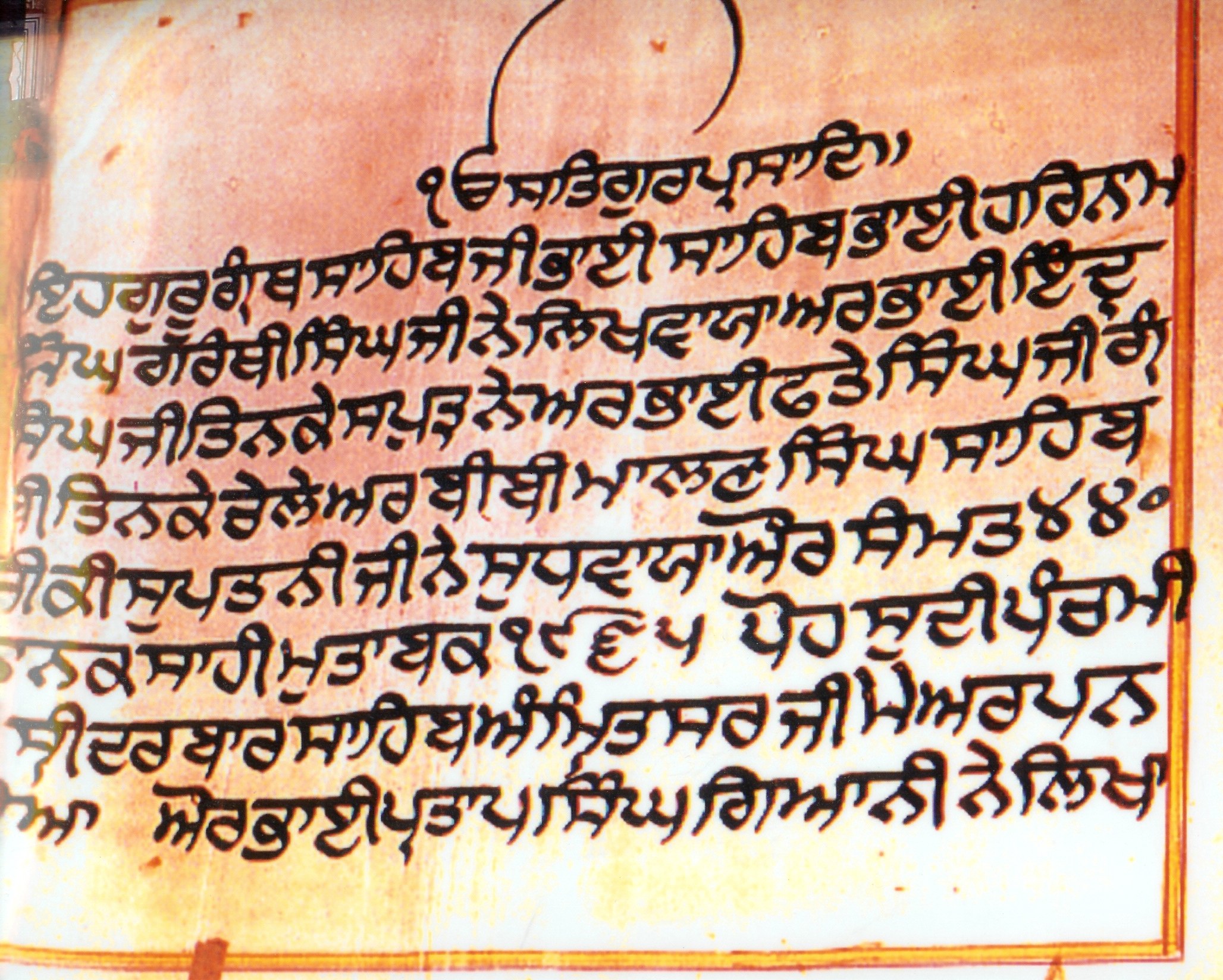 The Sikh scriptures are unique among the religious "Holy Books" of the world in that they don't just offer spiritual guidance for the Sikhs alone but impart guidance and assistance for all the peoples and religions of the world. The Siri Guru Granth is a supreme treasure for all mankind. It is the true and permanent spiritual guide of the Sikhs. Guru Granth Sahib transcends creed and caste, cant and convention. It does not belong to the Sikhs alone. It consecrates the sayings of 11 Hindu bhagats and as many bard poets and seven Muslim saints, along with the teachings of six Sikh gurus. No other religion has included in its holy book the sayings of others, however revered. The Guru Granth Sahib provides unique and unequalled guidance and advice to the whole of the human race. It is the torch that will lead humanity out of Kaljug, (the dark era) to a life in peace, tranquillity and spiritual enlightenment for all the nations of the world. This is what Bertrand Russell said "....that if some lucky men survive the onslaught of the third world war of atomic and hydrogen bombs, then the Sikh religion will be the only means of guiding them." Russell was asked that he was talking about the third world war, but isn't this religion capable of guiding mankind before the third world war? In reply, Russell said, "Yes, it has the capability, but the Sikhs have not brought out in the broad daylight, the splendid doctrines of this religion which has come into existence for the benefit of the entire mankind. This is their greatest sin and the Sikhs cannot be freed of it." .....More Contents: Top 100. 110. 120. 130. 140. 150. 160. 170. 180. 190. 126Sat Sri Akal - a Punjabi movie, is the name of a unique upcoming socio-religious family entertainment movie to be released on 7 November 2008 to commemorate 300th anniversary of Gurgaddi Divas of Guru Granth Sahib ji. The movie, production of Mata Tripta Ji Charitable Trust is a story revolving around the love, sentiments and faith towards Sri Guru Granth Sahib. The narrative of the movie affirms and reiterates that Almighty God always stands by the ones who are drenched in His love and have full trust in Him. Based on true happenings, the movie is a live account of a family having immense belief in Waheguru, a story splendidly told amongst heart rending gurbani/shabads sung by legends like Jagjit Singh, Alka Yagnik, Kavita Krishnamurty, Abhijit, Sadhna sargam and one sweet-romantic, another foot-tapping song by Sunidhi Chauhan ... Starcast: Kimi verma, Manpreet Singh, Vivek Shauq, Aron Bali, Dolly Minhaas, Neelu Kohli, Manmeet Singh. .....More Contents: Top 100. 110. 120. 130. 140. 150. 160. 170. 180. 190. 127The Chittisinghpura Massacre refers to the cold blooded murder of 35 Sikhs, which occurred on the evening of March 20, 2000 at small Jammu and Kashmir village called "Chittisinghpura". The massacre was carried out by about 20 unidentified terrorists though a member of the Islamic fundamentalist militant group Lashkar-e-Toiba ("LeT") has confessed to their involvement in the massacre. According to Amnesty International, the massacre was linked to other massacres in the region where the people have doubted the government's account of the story. 1 Several witnesses have said that about 20 men, clad in olive green combat fatigues, arrived in the village at 7-15 p.m. They told the people that they were Indian soldiers, and ordered the men out to be questioned. The captors spoke Urdu. The village men were lined up in two groups, a few hundred metres from each other. One of the captive men who had been lined up recognised someone among the gunmen. He asked, "Chattiya, tu idhar kya kar raha hai?" ("Chattia, What are you doing here?"). The person he spoke to immediately opened fire. At the same time all captors began firing. As they started firing, the gunmen shouted 'Jai Mata Di' and 'Jai Hind'. In theatrical fashion, one of them took swigs from a bottle of rum even as the killing went on. While leaving, one of the men called out to his associates: "Gopal, chalo hamare saath" ("Gopal, Come with us"). .....More Contents: Top 100. 110. 120. 130. 140. 150. 160. 170. 180. 190. 128The Sikh Gurus believed in giving the individual complete freedom to choose his or her spiritual path. They believed that there should be no compulsion or force used when an individual makes this choice. Most of the disciples of the Gurus became their followers after listening to the Gurus' sermons and then voluntarily following the guidance provided by the Gurus. The Sikh spiritual masters made no promises of heaven or paradise to entice these followers to follow the path of Dharma (righteousness). The disciples were not told that because they were Sikhs and followers of the Gurus, only they would be welcomed by God. The Guru made it clear that only by following the path of truth and by undertaking righteous actions can one become dear to the Lord thus:
Bhai Mardana was a life long companion of Guru Nanak, the founder of Sikhi. Bhai Mardana was a Muslim from birth and remained as such until his last day. .....More Contents: Top 100. 110. 120. 130. 140. 150. 160. 170. 180. 190. 129A Gurdwara dedicated to a Noble Man - Perhaps, this is the first and last Gurdwara, named after a person other than the Sikh Gurus. Gurdwara Dr. Diwan Singh is a Sikh shrine located in the heart of Port Blair in the Andaman Islands. This Gurdwara was established in 1937 by Dr. Diwan Singh Kalapani a well known independence martyr. This Gurdwara is built with wood on a foundation of iron pillars. This is one of the oldest Gurdwaras in Port Blair. The Gurdwara is in the Aberdeen Bazaar and caters to the Punjabi community of the Andaman and Nicobar Islands. The Gurdwara's foundation was laid by the local Panj Piare on 1st August 1937, at first it was refered to simply as the "New Gurdwara". The whole community of Port Blair, that's right -- not just the Sikhs!, but citizens - whether Christian, Hindu or Muslim, joined the five respected Sikhs and their Sikh brothers and sisters in the building of the Gurdwara. Practically everyone who lived in Port Blair devoted their time, energy and resources to complete this 'New Gurdwara'. Even the Military Police denoted a sum of Rs. 500/- towards the construction fund. .....More Contents: Top 100. 110. 120. 130. 140. 150. 160. 170. 180. 190. 130duplicate .....More Contents: Top 100. 110. 120. 130. 140. 150. 160. 170. 180. 190. 131Mata Ganga asked her husband Guru Arjan for the gift of a son, for he had granted the wishes of so many Sikhs, surely he would answer hers as well. Guru Arjan told Mata Ganga to go and seek Baba Budha’s blessing. Mata Ganga got her helpers to prepare a huge amount of lavish food and took a large procession on chariot to see Baba Budha. When Mata Ji asked Baba Ji’s for his blessing, Baba Ji replied that he was a simple grass cutter and didn’t have such noble ability. Mata Ji left the scene disappointed. On her return, she narrated the events to her husband. Guru Arjan explained that if she wanted blessings, she should have gone to see Baba ji on foot; in a small group; and she should have lovingly cooked a simple meal herself. She did exactly that the next day. Obviously, Baba ji was very pleased. He took hold of an onion in his left palm and said; “Your son will be the Master of Masters, he will be the King of his people and he will break the rule of the tyrants as I break this onion under my fist.” - smash!! At the age of 11, young Guru Har Gobind was nominated by his father, Guru Arjan as the next Guru. The Sikhs celebrate this auspicious day, every year, on July 5th. Before Guru Arjan depart from this earth, he sent a message to his son; “Let him sit fully armed on the throne and maintain an army to the best of his ability” .....More Contents: Top 100. 110. 120. 130. 140. 150. 160. 170. 180. 190. 132Zafarnama means "Declaration of Victory" and is the name given to the letter sent by the tenth Sikh Guru, Guru Gobind Singh in 1705 to the Emperor of India, Aurangzeb. The letter is written in exquisite Persian verse. In this letter, Guru Ji reminds Aurangzeb how he and his henchmen had broken their oaths taken on the holy Koran. Despite this deception, this treacherous leader could not harm the Guru. Guru Ji states in this letter that in spite of his several sufferings, he had won a moral victory over the crafty Mughal who had broken all his vows and had resorted to underhand behaviour. Despite sending a huge army to capture or kill the Guru, the Mughal forces did not succeed in their mission. The letter reads like a reprimand by a superior personality on a higher plane to a cruel and distorted inhuman being on a lower and pitiful plane. Guru Ji in the 111 verses of this notice rebuke Aurangzeb for his weaknesses as a human being and for excesses as a leader. Guru Ji confirms his confidence and his unflinching faith in the Almighty even after suffering extreme personal loss. .....More Contents: Top 100. 110. 120. 130. 140. 150. 160. 170. 180. 190. 133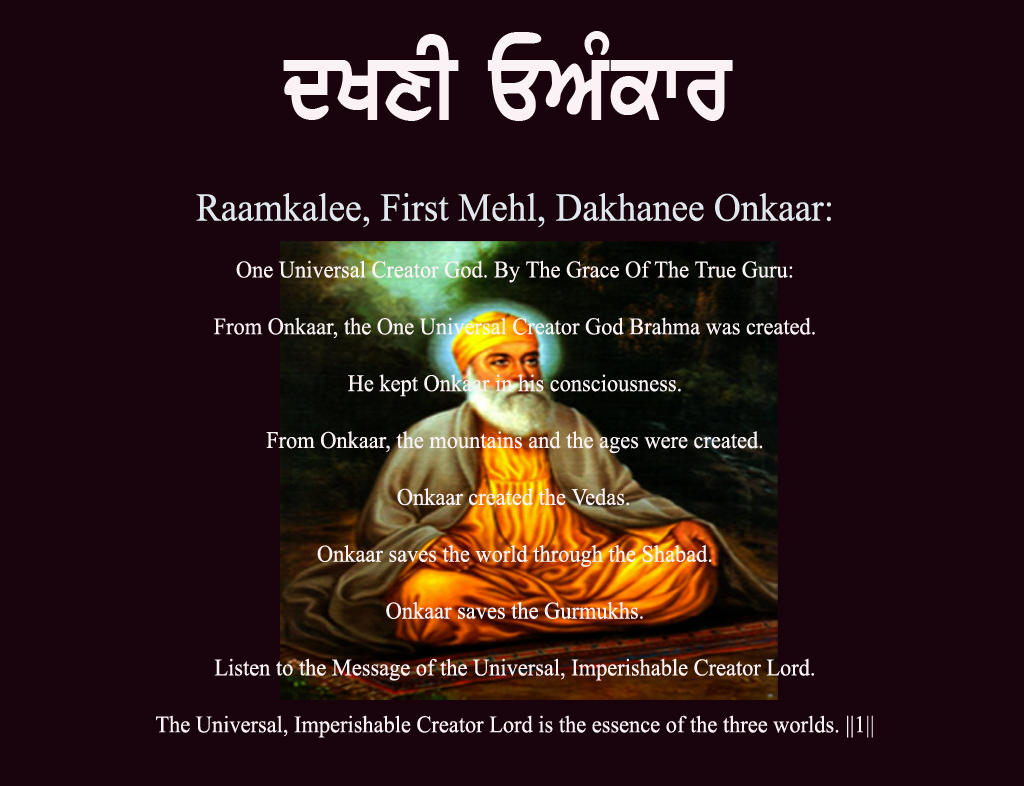 Dakhni Oankar or simply Oankar is a composition of 54 stanzas by the founder of Sikhism, Guru Nanak's in the measure Raag Ramkali in the Guru Granth Sahib. The full title of the bani is Ramkali Mahala 1 Dakhani Oankaru. The composition appears in the holy Granth at pages 929 to 938. The title is explained differently by different scholars. The word "Dakhan" means "south" and "Oankar" is a reference to "The Creator". This Bani (composition) is composed in the form of an acrostic, each stanza beginning with one of the letters of the Sanskrit alphabet. However, some of the sounds of the Sanskrit alphabet do not exist in the Gurmukhi language used by Guru Nanak. In such cases, prevalent equivalent sounds are used to represent the letters of the old script. For example, 'j' is used for 'y' and 'b' for 'v'. "Oankar" opens with verses in praise of God who is remembered as the creator of all that exists; of time with all its different cycles; and of the entire universe. Then follows the verse of rahau (pause) indicating the central theme of the bani: "0 Pandit, why are you involved in the writing of such idle hieroglyphics - write the name of God alone." After this begins the acrostic form. The emphasis is on ethical and spiritual teaching. .....More Contents: Top 100. 110. 120. 130. 140. 150. 160. 170. 180. 190. 134Makhan Shah Labana, was a merchant who used to bring valuable merchandise by sea and sell it wholesale in parts of Gujarat and Punjab in India. During one of these sea journey's, his ship was caught up in a furious storm while he was sailing, fully loaded with trade goods northwards, up the coast of India towards the Gulf of Khambhat. The ship was terribly damaged during the storm, with the force of lightning splitting the mainsail, the sails hanging in shreds, the ship taking on water and when it seemed like he would lose the ship, Makhan decided his time had come to remember his Guru and ask for his help. Completely powerless, he knelt down, and said his Ardas (prayer) to God and Guru Nanak for safety. "Baba jee", he prayed desperately, "Please save my ship and my men... I pledge the 500 gold mohars tied to the belt at my waist, which without your help will soon be at the bottom of the sea. Please accept this as my humble offering." He then recited the following Shabad of Guru Arjan Dev: "ਅਪੁਨੇ ਸੇਵਕ ਕੀ ਆਪੇ ਰਾਖੈ ਆਪੇ ਨਾਮੁ ਜਪਾਵੈ ॥ ...He Himself preserves His servants; He causes them to chant His Name. Wherever the business and affairs of His servants are, there the Lord hurries to be. (1)" Miraculously the wind started to die down, and the wild sea became calm. .....More Contents: Top 100. 110. 120. 130. 140. 150. 160. 170. 180. 190. 135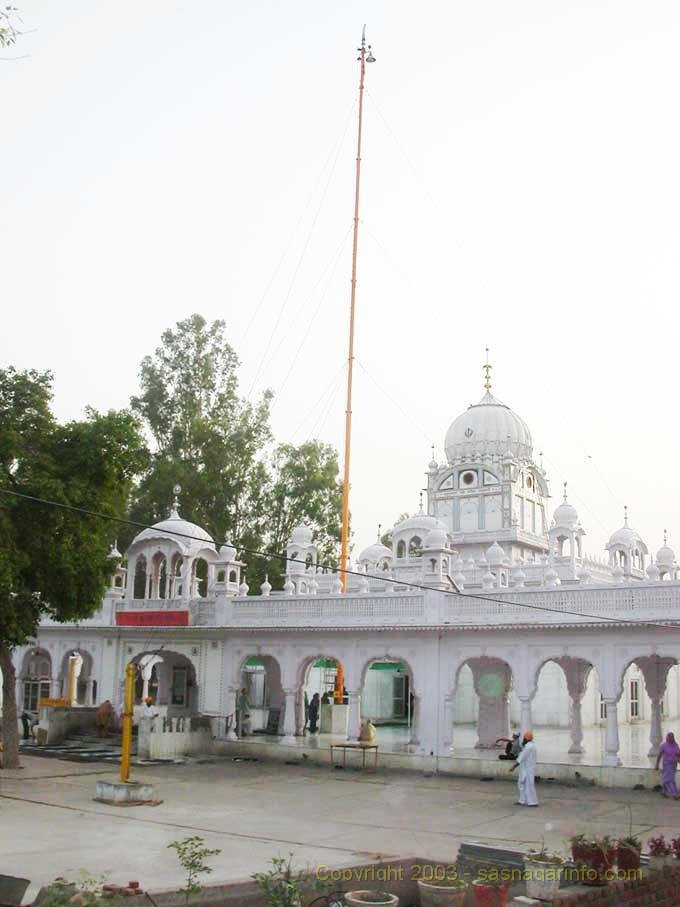 Bhai Kuram Singh, a Labana by caste, was a resident of village Lambian. He was a Sikh during the times of Guru Arjun and Guru Har Rai. Bhai Kuram came to Amritsar to respect and have a glimpse of Guru Arjan. During his visit, mangoes were in season. Many visitors were coming to attend the darbar of the now famous Sikh Guru, the great Guru Arjan. The place was heaving with devotees. Many followers were presenting their gifts and offerings to the Guru. Followers from Kabul had brought with them large sumptuous ripe mangoes. In those days Kabul was famous for its mangoes. Bhai Kuram Singh felt sorry that he had come from the land of mangoes but had not brought with him any mangoes while many others from his region were carrying large loads of these delicious fruits. When the darbar concluded that night, the ripe mangoes were distributed as Parshad (blessed food). After receiving their parshad, the followers retired to their deras (sleeping quarters) for the night. Bhai Kuram Singh did not eat the mango given to him as parshad. Next day he got up in the morning, took bath and took the mango received as parshad and offered the same back in darbar that morning. The great Guru Arjan called Bhai Kuram and said "This mango was given to you as parshad but you have offered the same here". Bhai Kuram Singh very humbly bowed before the Guru and requested "Your Highness, I have come from the land of mangoes but had not brought any for offering to you, so I retained this for offering to you today." Guru Ji ordered him to eat the fruit and promised him that his offerings will be accepted by the Guru one day. .....More Contents: Top 100. 110. 120. 130. 140. 150. 160. 170. 180. 190. 136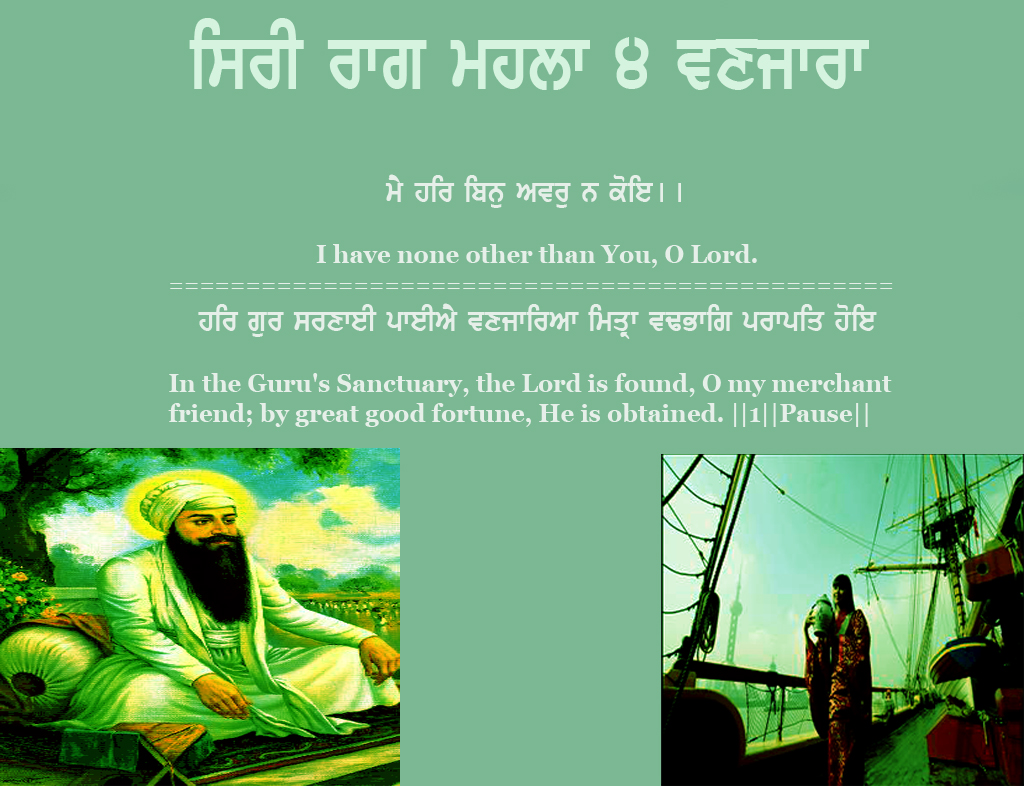 Vanjara is poetry in the form of Gurbani in the Guru Granth Sahib. It was composed by Guru Ram Das in Sri Raag. In this poetry, the Guru is giving advise and pointing the "Vanjara" (the merchant or trader), in the correct spiritual direction. He is calling him a friend and telling him how to find the Lord. The Guru says that the trader or merchant who remembers God's name will always be blessed just like Baba Makhan Shah Labana, who was a trader who was blessed by Guru Tegh Bahadur as he performed Ardas before the Guru to help save his doomed ship. The trader who remembers the Lord at all times, the Guru says moves away from ego. The ones who remain attached to Maya and are egoistic are called "prostitute's son" as they do not recognise God as their father. Ego comes from wealth and it is common that traders are money minded and attached to their wealth. So the Guru gives traders clear advise not to be attached emotionally to Maya or money because money will never go with you in the end - those attached to money will "depart crying". When you are young and in good health, recite the Lord's Naam because soon the youth and good health will leave and you will have no support. .....More Contents: Top 100. 110. 120. 130. 140. 150. 160. 170. 180. 190. 137This wonderful historical Gurudwara is situated in Chungthang, which is a town in North Sikkim, an Indian state. Sikkim is a small but beautiful landlocked state nestled in the Himalayas in northern India. It is situated at the confluence of two rivers: River Lachen and Lachung Chu, both tributaries of the "most scenic" River Teesta. The thumb-shaped state borders Nepal in the west, the Chinese Tibet Autonomous Region to the north and east, Bhutan in the south-east and the Indian state of West Bengal to its south. Chungthang is located in this state at a distance of 95 kilometres from the capital Gangtok, at an elevation of 1,700 metres (5,600 ft). Guru Dongmar is a lake at a height of 18,000 feet alongside a glacial peak known by the same name. The lake remains frozen most of the year due to heavy snowfall for almost six months each year. .....More Contents: Top 100. 110. 120. 130. 140. 150. 160. 170. 180. 190. 138On August 8 every year, the global Sikh community remember the sacrifice made by thousands of their brethren in respect of "Guru ka Bagh Gurdwaras". This article outlines the struggle by the Sikhs to see justice in respect religious freedom, their right to determine their religion and the management of their Gurdwaras - places of worship. Below is an account of a major campaign in the Sikh agitation that took place in early 1920's. This resistance was for the reformation of their Gurdwaras (holy places). Many Gurdwaras had been freed without much problem but they faced a serious hurdle here. Guru ka Bagh in Ghukkevali village is located about 20 km from Amritsar. It has two historic Gurdwaras close to each other, commemorating the visits respectively of Guru Arjan in 1585 and Guru Tegh Bahadur in 1664. .....More Contents: Top 100. 110. 120. 130. 140. 150. 160. 170. 180. 190. 139Dasam Granth contains 1428 pages and is the collection of the writings by the 10th "Patshah", Sri Guru Gobind Singh ji. It starts with his Jaap Sahib, the Akal Ustat or praise of the Creator and the Bachitar Natak or "Wonderful Drama", which gives an account of the Guru's parentage, his divine mission, the battles fought, etc. Then come three abridged translations of the Devi Mahatamya, an episode in the Markandeya Puran, in praise of Durga the Goddess of war (Chandi Chritras: Chandi Chritra I, Chandi Chritra II, Chandi Ki Var). Then follows the Gyan Parbodh, or awakening of knowledge; Chobis Avatar - accounts of twenty-four incarnations of the Vishnu, according to the Hindus, and Brahmavatar and Rudravtar, selected because of their warlike character; the Shabad Hazare; quatrains called Sawaiyas, which are religious hymns in praise of God and reprobation of idolatry and hypocrisy; the Khalsa Mahima, or words in praise of the Khalsa. The final section contains, Shastar Nam Mala, a list of offensive and defensive weapons used in the Guru's time, with special reference to the attributes of the Creator; the Charitropakhyan, or tales illustrating the qualities of people, but principally the deceit and tricks of women; the Kabiovach Bainti Chaupai will "absolve the suffering, pain or fear of the person, who will even once recite this Bani"; the Zafarnama, containing the tenth Guru's epistle to the Emperor Aurangzeb; and Hikayats, several metrical tales in the Persian language. .....More Contents: Top 100. 110. 120. 130. 140. 150. 160. 170. 180. 190. 140Sikh Temple Makindu is located about 100 miles (160km) from Nairobi on the main Nairobi to Mombasa Road. It was built in 1926 by the Sikhs who were working on the construction of the railway line from the coast (Mombasa) inland to Lake Victoria and beyond to Uganda. The official opening ceremony of the Makindu Gurdwara is recorded to have taken place on Sunday 27th April, 1930. Today, all types of people visit this Gurdwara everyday and it is a 'must-see' Gurdwara for any Sikh travelling to Kenya and East Africa. It provides a peaceful atmosphere where one can meditate and calm ones mind before proceeding to join the "rat-race" again. The Gurdwara complex is very large and has facilities for langar around the clock and living accommodation for travellers. Set in the forest off the main road, the Makindu Gurdwara is the only convenient rest stop for weary motorists on this busy and long road to and from Mombasa. So the Sikh community of Kenya have done something special. They have built a beautiful edifice and campus where anyone of any religion or of no religion can withdraw from the mundane and reflect on the spiritual. This large complex houses a huge dining facility which provides free langar 24 hours a day as determined by their founder Guru, Guru Nanak Dev. .....More Contents: Top 100. 110. 120. 130. 140. 150. 160. 170. 180. 190. 141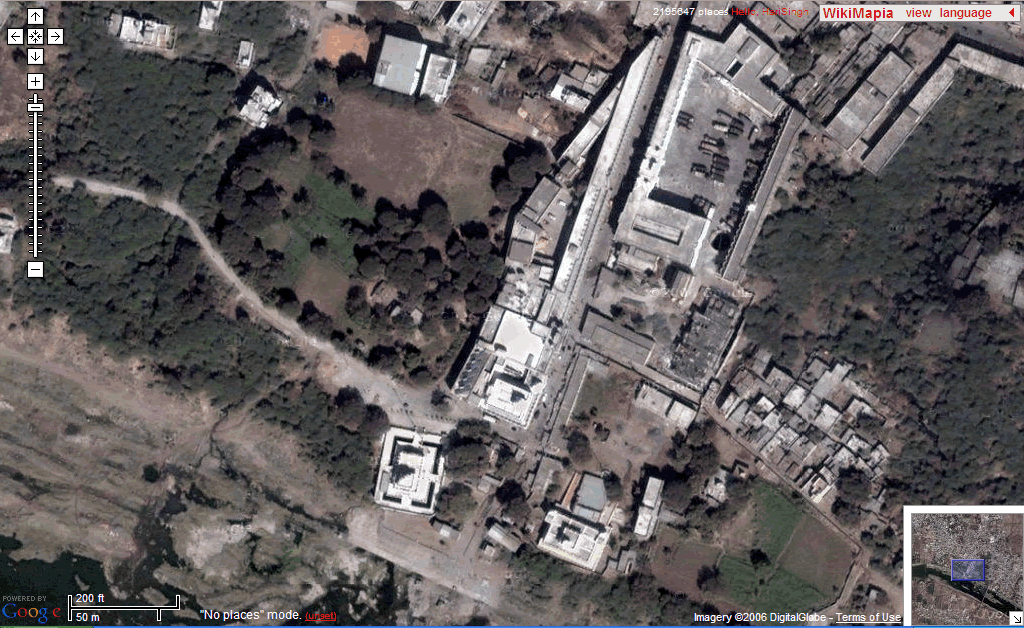 Aerial view of Sach Khand, Sri Hazur Sahib, Nanded Explore at Wikimapia Takhat Sachkhand Sri Hazoor Sahib is the principal Sikh shrine at Nanded in the Indian state of Maharashtra. It marks the site where Guru Gobind Singh had his camp in 1708 after the departure of the emperor Bahadur Shah and where in October 2008, the 300th anniversary celebration of the Guruship of Guru Granth Sahib took place. The tenth Guru held his court and congregation here. It is the site of his own tent where he was convalescing after he was attacked by assassins and the place at which Guru Gobind Singh ji 's light rose to rejoin the light of the Creator. This site is now one of the five Takhats which are places of primary historical importance to the Sikhs. The other four takhats are: Akal Takhat at Amritsar, Takhat Keshgarh Sahib at Anandpur, Takhat Patna Sahib in Bihar District and Takhat Damdama Sahib in Talwandi Sabo, Bhatinda, Punjab. In 1708 being prescient of the end of his earthly role, the Guru had dispatched five of his Sikhs under the command of his newly appointed Jathedar Banda Singh to Punjab and Mata Sahib Devan under a separate escort to Delhi before the stabbing incident. He told the rest of his retinue to retire to their homes if they so wished, but he bade one Bhai Santokh Singh to stay on here and keep Guru ka Langar going. .....More Contents: Top 100. 110. 120. 130. 140. 150. 160. 170. 180. 190. 142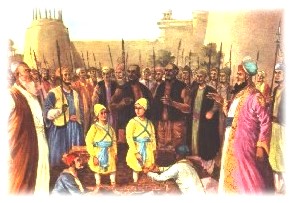 On December 12 every year, the global world Sikh community celebrate the birthday of their youngest hero and a brave comrade of Sikhism. Sahibzada Fateh Singh (1699-1705) was the youngest of Guru Gobind Singh's four sons or sahibzade and was born to Mata Jito at Anandpur on 12 December 1699. After the death of his mother, on 5 December 1700, he was brought up under the care of his grandmother, Mata Gujari Kaur, with whom he remained until his last breath. He with his elder brother, Sahibzada Zorawar Singh have become an unbelievable and most unfortunate precedence in Sikh history (and perhaps also in world history) by becoming the youngest known martyrs to sacrifice their lives for their principles and the right to practice their religion and their faith without coercion or the threat of terror. Even at such a tender age of 6 years, Baba Fateh Singh showed courage, determination and free-will not to be intimidated by the cruel, barbaric .....More Contents: Top 100. 110. 120. 130. 140. 150. 160. 170. 180. 190. 143Mr. Vasu Bhardwaj was a Special Correspondent of Gujarati "Mitr", a daily newspaper published from Surat, India. This science researcher with American educational background was working in India when in 2001, he was diagnosed suffering from bone cancer and doctors soon pronounced defeat at finding a cure for him. The story below is written by Mr Bhardwaj: When recitation of Gurbani cured me of deadly cancer, I experienced God. "When You are on my side, Lord, why should I worry?" and "If God is with me, who can harm me?" Not even the deadliest disease of cancer can take my life away and that is exactly the divinely inspiring message of the truly miraculous story of my victorious battle against bone cancer which was medically diagnosed to be multiple melanomas. It was the Akhand Paath (continuous recitation of Gurbani) that not only cured me of bone cancer that had already destroyed most of my bones in my skeleton, but also shattered my will to live. The blessings of Guru Granth Sahib not only triggered and accelerated the processes of complete and total cure in my body, but the Guru also enabled me to experience God. This also inspired me to pursue Naam therapy to totally and permanently get rid of otherwise fatal bone cancer. .....More Contents: Top 100. 110. 120. 130. 140. 150. 160. 170. 180. 190. 144 Anand Karaj (Punjabi: ਅਨੰਦ ਕਾਰਜ, anand kāraj) is the name given to the Sikh wedding ceremony, literally translated as "Blissful Event". Sikhs regard marriage as a sacred bond of mutual dependence between a man and a woman; a true partnership of equals in marriage is made between those who are united in spirit as well as in mind and body. Marriage is regarded as a strong lifetime bond between the bride and groom and and a union between both the families of the bride and groom. Based on the concept depicted in Laava, the Sikh marriage is not merely a physical and legal contract but is intended to be a fusion of the souls; a holy union between two souls, where physically they appear as two individual bodies but in fact are united as one both spiritually and in thinking. The couple must feel and think alike and both must identify with the other, i.e. they need to become "Ek Jot Doe Murti" meaning "one spirit in two bodies". The Laava, or four stanzas, are read and then sung during the ceremony to formalize and sanctify the marriage. .....More Contents: Top 100. 110. 120. 130. 140. 150. 160. 170. 180. 190. 145From August 30 to September 1 this year (2011), the Sikhs will celebrate 407 years since the completion and first installation of their "Holy Book" called the Adi Granth. This is the only holy scripture in the world which was written by the founders of the religion during their lifetime. This Granth (book) was compiled and then installed for the first time at Harimandir Sahib in Amritsar in 1604. In the beginning, it was simply called the Adi Granth which literally means "the first book". The holy scripture contains hymns written by the Sikh Gurus, saints and scholars of different religions and was finally completed on 30 August 1604. On September 1, 1604 it was installed for the first time at the Golden Temple in Amritsar, Punjab, India. Ever since then it has been showering important messages and valuable guidance for the benefit of the whole of humanity. This initial compilation of the main Sikh Scripture by Guru Arjan, the fifth Sikh Guru was performed with much love, labour and dedication. The tenth Sikh Guru, Guru Gobind Singh added further holy Shabads (hymns) to this Granth during the period around 1705. .....More Contents: Top 100. 110. 120. 130. 140. 150. 160. 170. 180. 190. 146Maharaja Ranjit Singh (13th November 1780 - 27 June 1839) also called "Sher-e-Punjab" ("The Lion of Punjab") was the Sikh ruler of the sovereign country of Punjab and the Sikh Empire from about 1799. Maharaja was born on November 13, 1780 in Gujranwala in modern day Pakistan, into the Sansi-Sandhawalia family. At the time, much of Punjab was ruled by the Sikhs, who had divided the territory among factions known as Misls. Ranjit Singh's father Maha Singh was the commander of the Sukerchakia misl and controlled a territory in west Punjab based around his headquarters at Gujranwala. Ranjit Singh succeeded his father at the young age of 12. After several campaigns, his rivals accepted him as their leader, and he united the Sikh factions into one state and he took the title of Maharaja on April 12, 1801 .....More Contents: Top 100. 110. 120. 130. 140. 150. 160. 170. 180. 190. 147Gurudwara Nangali Sahib is situated in the lap of a picturesque hill and on the bank of Drungali Nallah. It is about 4 kms from Poonch town in Poonch district, which is the smallest of the 14 districts of Jammu & Kashmir state. It is one of the oldest shrine of the Sikhs in Northern India. Presently the Gurudwara complex consists of the main Gurdwara building, a Langar Hall and about 70 living rooms. Large number of devotees belonging to all faiths visit this shrine from all over the country every year. This holy Sikh shrine is approximately 240 Kms from Jammu city by road (but only about 150km as the crow flies)which in turn is connected to rest of the world via road, rail and airline network. Pilgrims outside the state may use railways or air services up to Jammu and then travel by road to Poonch. The Gurdwara was established by Thakur Bhai Mela Singh ji (Fourth successor of Sant Bhai Feru Singh ji) in 1803 AD. Maharaja Ranjit Singh visited Gurdwara Nangali Sahib in 1814 and was very much impressed by it. .....More Contents: Top 100. 110. 120. 130. 140. 150. 160. 170. 180. 190. 148On October 9 every year, the worldwide Sikh community celebrates the birth of their fourth master, Guru Ram Das. Guru ji was born at Chuna Mandi Bazaar, Lahore at the site of the present holy shrine on 9 October, 1534 where he spent his first seven years of life. Soon after birth, he was given the name "Jetha", meaning the "first born". His simple and God-fearing parents, Hari Das and Anup Devi of Lahore were delighted at this precious gift from Waheguru. As he was growing up and in his teens, he would be found in the company of religious men. Jetha became a handsome young man. One day he came across a party of Sikhs who were on their way to Goindwal to pay homage to Guru Amar Das ji, the third Sikh Guru. He decided to join them and also travel to Goindwal. Upon their arrival and meeting, Guru Amar Das, the third Sikh Guru at once noticed the young Jetha with his pleasant manner and sense of devotion. While his fellow travellers returned to Lahore, Jetha decided to stay and become a disciple of Guru Amar Das ji. .....More Contents: Top 100. 110. 120. 130. 140. 150. 160. 170. 180. 190. 149Every year on 16 April, the Sikhs commemorate the passing away of their eighth Guru, Guru Har Krishan - also fondly called "Bal Guru" ("Child Guru") as Guru ji attained Guruship at a young age of just over 5 years old. Each year during late July, huge celebrations are held at Gurdwara Bangla Sahib in Delhi, India to celebrate the birth of Guru ji on 23rd July. It was at this location that Guru ji stayed at Raja Jai Singh's bungalow when visiting Delhi during the reign of Mughal Emperor Aurangzeb. Guru Har Krishan was born on 23 July, 1656 at Kiratpur Sahib, Punjab, India and was the second son of Guru Har Rai (seventh Sikh Guru) and Mata Krishan Kaur. When the Guru came to Delhi, he stayed at the bungalow of Raja Jai Singh; there was a severe smallpox epidemic and many thousands of people were dying. By Guru's blessing, the pool at Bangla Sahib, which is built at the site of Raja Jai Singh's bungalow provided cure for thousands of suffering people. Gurdwara Bangla Sahib is thus blessed by the healing powers of this eighth Sikh Guru. The tenth Sikh Guru, Guru Gobind Singh wrote in his famous "Vaar Sri Bhagauti Ji Ki" – "Remember Sri Harkrishan, whose vision dispels all pains". Gurdwara Bangla Sahib is not only visited by thousands of Sikhs but also by people of other faiths. .....More Contents: Top 100. 110. 120. 130. 140. 150. 160. 170. 180. 190. 150Guru Nanak Medical Centre is a charitable hospital based at Secunderabad in Andhra Pradesh, India. The Gurdwara Sahib, Secunderabad, and Guru Nanak Charitable Trust opened this medical centre on the premises of Gurdwara sahib on Sunday, October 07, 2007. According to the Prabhandak Committee president, S. Baldev Singh Bagga and convener R.S. Saluja, this state-of-the-art polyclinic and diagnostic centre will provide free and low-cost medical treatment for the poor and needy of all religions and communities. Shiromani Gurdwara Prabhandak Committee president S. Avtar Singh Makwar, who was visiting the state of Andhra Pradesh for the first time, inaugurated the centre. It was said by the local people that this day care medical centre had become necessary to meet the demand of people in Secunderabad and surrounding localities when the Gandhi General Hospital moved to Musheerabad. .....More Contents: Top 100. 110. 120. 130. 140. 150. 160. 170. 180. 190. 151 SikhiWiki is now available translated into 13 different languages. Thanks to Google's new automatic translation service, SikhiWiki has been able to provide this facility. It is hoped that many millions who were unable to read about Sikhism before, will now be able to do so using this new feature. Sikhi, an incredibly valuable addition to human knowledge and wisdom will now be available to be read by many millions who previous weren't in this position before the advent of this new technology. Now people in many foreign and distant lands will be able to know and learn about the beautiful and unique message of the Sikh Gurus. Five of the most widely spoken languages are available by using a single click to an option in the sidebar marked "translate into" on the left sidebar of the SikhiWiki screen. Below is a full list of all the languages available through this Google service. Click on the link below to start reading in any of the languages shown: (1) Arabic (2) Chinese (Simplified) (3) Chinese (Traditional) (4) Dutch (5) French (6) German (7) Greek (8) Italian (9) Korean (10) Japanese (11) Russian (12) Spanish (13) Portuguese .....More Contents: Top 100. 110. 120. 130. 140. 150. 160. 170. 180. 190. 152Sikhcess, a community-service organization dedicated to promoting the basic Sikh principles of public service (Seva) and equality, announced on March 9, 2008 that their volunteers around the world had successfully surpassed internal estimates and distributed more than 42,000 meals to the homeless and needy last Saturday, March 1st, the largest-ever initiative undertaken by the non-profit organization. The principle of selfless service called Seva and the distribution of free food called Langar are a gift to the world from the founder prophet of the Sikhs, Guru Nanak. The first Sikh Guru was born in 1469 in Punjab (in the north of the sub-continent of India) and was the first of the ten Gurus of the Sikhs. All Sikhs are encouraged by their Gurus to perform Seva or selfless community service. This is not only important for community relations but is also invaluable for the moral uplifting of the person. Langar or "free kitchen open to all" was started by Guru Nanak and is designed to uphold the principle of equality between all people of the world regardless of religion, caste, colour, creed, age, gender or social status. In addition to the ideals of equality, the tradition of langar expresses the ethics of sharing, sense of community, inclusiveness and the oneness of all humankind. The Guru Granth Sahib confirms that "..the Light of God is in all hearts." (sggs 282) .....More Contents: Top 100. 110. 120. 130. 140. 150. 160. 170. 180. 190. 153Guru Angad Dev (1504 - 1552) was the second of the ten Gurus of Sikhism. Guru ji's original name was Bhai Lehna. Bhai sahib following in the footsteps of Guru Nanak, who was the first Sikh Guru and founder of the Sikh religion became the second Sikh spiritual master on September 18 1539. Guru Angad Dev was born on April 18, 1504 and this auspicious day is doubly celebrated by the Sikhs every year together with the birthday of their ninth master, Guru Tegh Bahadur born on April 18 1621. The institution of langar was given prominence and further maintained and developed during the Guruship of the second master. The Guru's wife, Mata Khivi personally worked in the kitchen to prepare the food and guide others in managing this important function. She also served food to the members of the community and visitors. Her devotion to this institution finds mention in Guru Granth Sahib, the holy book of the Sikhs. Guru Angad also invented the present form of the Gurmukhi script. It became the medium of writing the Punjabi language in which the hymns of the Gurus are expressed. .....More Contents: Top 100. 110. 120. 130. 140. 150. 160. 170. 180. 190. 154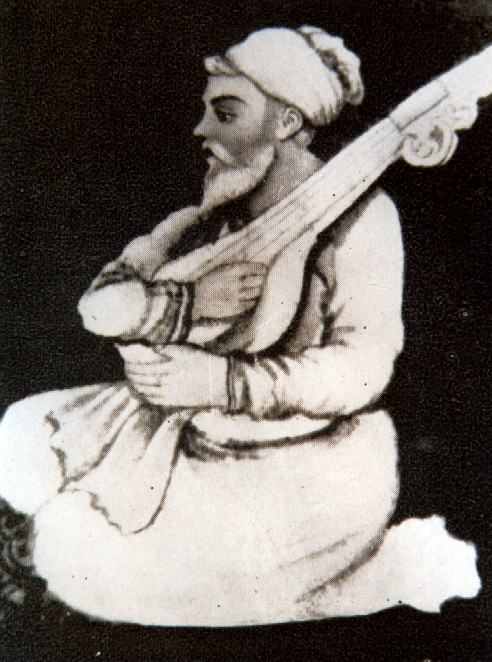 Bhai Mardana, for forty-seven years, travelled with Guru Nanak wherever the Guru went. Whether it was in the bitter cold of the hills or the heat of the deserts, he was never far away from the Guru's side. The fear of wild animals, hunger, thirst or even the warm thoughts of a loving, comfortable home never brought the five vices - lust, anger, greed, attachment and pride to his mind for he had replaced them with the five virtues - truth, contentment, patience, humility, compassion and love. He was given the honor by the Guru of being a saint and a brother to all. The Guru also included his Bani (verses) in the Sri Guru Granth Sahib. Mardana who was nine years older than Guru Nanak and was the son of a "mirasi" Muslim. The Mirasis were men who earned their living by entertaining others. They were known as "Bhand" (bards) or "Naqqal" (actors or jesters); they were the great story tellers of Punjab. Often very poor, some were lucky enough to find jobs in the darbars of the feudal rulers and provisional leaders to supplement their incomes. In the days before established postal services, they often did odd jobs in the villages of Punjab. .....More Contents: Top 100. 110. 120. 130. 140. 150. 160. 170. 180. 190. 155Diwan Todar Mall was a wealthy merchant of Sirhind, who on the 13 December 1705 performed the cremation of the three martyred bodies of the family members of the tenth Sikh Guru. These included the two younger sons of Guru Gobind Singh, Zorawar Singh aged about 6, Fateh Singh aged about 9 and their grandmother, Mata Gujari - the mother of the tenth Guru. This incident occurred after the Sahibzade had been executed by the Mughal authorities on the 12 December 1705 for not renouncing their faith. Subsequently, their grandmother died from shock at the news of the sudden and despicable execution of the innocent youngsters. To get the release of the three bodies of the Guru's household, this wealthy merchant had to cover the required ground for cremation with gold coins. The compassionate Sikh trader of Sirhind, according to tradition, performed the last rites for the two younger sons of Guru Gobind Singh martyred on the orders of Wazir Khan, faujdar of Sirhind, and of Mata Gujari, the Guru's mother. It is said that landowners around the Sirhind Fort would not permit him to hold the cremation in their fields, until one Chaudhari Atta agreed to sell him a plot. .....More Contents: Top 100. 110. 120. 130. 140. 150. 160. 170. 180. 190. 156The Sukhmani sahib is probably the greatest composition of the fifth Sikh Guru, Guru Arjan. This Gurbani in raga Gauri Sukhmani in the Guru Granth Sahib is a lengthy composition which spans a total of 35 pages from page 262 to page 296 of the sacred Granth. Its lyrical beauty apart, Sukhmani is a profoundly significant scriptural text for all devotees of the Sikh faith and indeed for all of humanity. It is said that the Guru wrote it in response to request from a devotee who was suffering from physical pain and mental anguish; the recital of Sukhmani restored him to good health and a calm and peaceful state of mind. The word 'Sukhmani' means the "psalm of equipoise" (balanced state) or "jewel of bliss". This holy bani (hymn) is a treasure of the rarest kind and will bring pure happiness and true bliss for whoever recites it with dedication. This unique prayer which, not only can be read just as any other bani but can also be sung with music accompaniment has only one focus - to bring "Sukh" or peace to the person’s mind. .....More Contents: Top 100. 110. 120. 130. 140. 150. 160. 170. 180. 190. 157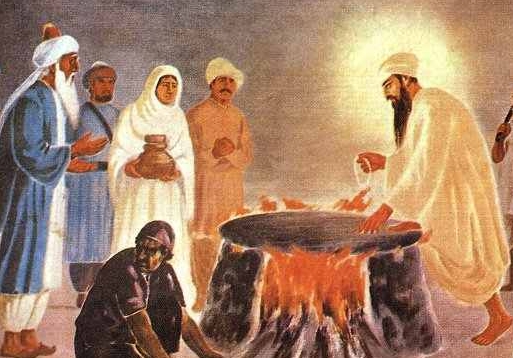 May your doings appear sweet to me" A Sikh is a person who accepts Gurbani (the Guru's words) as his or her spiritual guide and who adheres to the message contained within its holy pages. Sikhi is the message of the holy Granth and the code or policy (rehat) by which the person has to live their life. It is fascinating how the underlying message of the Sikh Holy Scripture is a message of pure love. This love and longing is evident on all the pages of the Sikh scriptures; the Lord is referred to as "Husband Lord", "Beloved", "Immaculate", "Great", "Merciful", etc. all affectionate words for a tender, caring and powerful being. However, God is not an external entity; God is said to be in all places; in every living things; literally everywhere. Gurbani tells us, "The Lord Himself is within the self, and outside as well...; the Lord Himself is fully pervading everywhere" and also "You are the Great Giver of all souls; You are the Life within all living beings." The ten Sikh Gurus and the other bhagats of the Sikhs in their compositions in Gurbani, explain over and over again their dedication and their love for the Almighty Lord. Guru Ram Das, the fourth Sikh Guru explains his love for the Lord thus "Without the Lord, I cannot live for a moment, even an instant; I love Him, like the camel loves the vine." (GGS 369). .....More Contents: Top 100. 110. 120. 130. 140. 150. 160. 170. 180. 190. 158Although the Indian film industry is the largest in the world in terms of ticket sales and number of films produced annually [1] (877 feature films and 1177 short films were released in the year 2003 alone), Sikhs, especially "Sabat Soorat Sikhs" ("fully fledged" Sikhs with unshorn Kesh) have not had any significant impact in this business arena. Hence, the Sikh community has been waiting to see a "Sabat Soorat Sikh" on cinema and television screens for a very long time. Also, the image of the Sikhs in Bollywood has mainly been shown in derogatory light and their reputation has taken a severe beating for a long time now. Perhaps this is going to change. No more! The Sikh community now has Manpreet Singh from Mumbai the hero of 'Sat Sri Akal (Bollywood Movie)', who is leading the wave of turbaned and bearded Sikh role models now appearing in cinema, television and the advertisement world. Leading from the front, they have taken upon themselves the mantle of the battle of respect for the turban and the Sikh image in the world of acting. With a graduate degree in mass media and a post-graduate degree in management studies from Bombay University, Manpreet Singh has had a chequered and versatile career so far. .....More Contents: Top 100. 110. 120. 130. 140. 150. 160. 170. 180. 190. 159The Sikhs started to search for Hemkunt sahib, the “Tap Asthan” (the place of meditation) of their tenth Guru, in the late nineteenth century, even though the shrine is mentioned in the Dasam Granth which was finalised in the 1730’s. The first Sikh to trace the geographical location of Hemkunt was Pandit Tara Singh Narotam in 1884. He was a nineteenth century Nirmila scholar. His findings were published by the renowned exponent of Sikh history and scholar, Bhai Vir Singh in 1929 in his book called “Sri Kalgidhar Chamatkar”. This book was then read by Sant Sohan Singh, who was a retired Granthi (priest) from the Indian army working voluntarily at a gurdwara in Tehri Garhwal. Having read the description of where the "Tap Asthan" was, he set out to find the physical spot in 1933. Unfortunately he had no luck that year and so he attempted his search again the following year. His enquiries led him to the place known as Lokpal to the local folk. The description matched that of the place described by the Guru as "Sapat Shring" and the place where King Pandu was believed to have meditated. Sohan Singh believed that Hemkunt had been found. .....More Contents: Top 100. 110. 120. 130. 140. 150. 160. 170. 180. 190. 160Suchajee and Kuchajee are the names given by Guru Nanak to two types of "women". These names appear in the raga banis (the raga section) of the main Sikh scripture called the Guru Granth Sahib. The word "Suchajee" means a capable and skilful woman or bride while "kuchajee" is the opposite. This composition is in Raga Suhi. In this sacred script the Guru tells the world the difference between a noble and good women and a bad and ignoble women. In these banis "woman" is a reference to the soul of all human beings not just that of a woman! These banis which start at page 762 tell us how to become noble brides of God and not to fall into the trap of worldly entanglements and waste this marriage (life). First the Guru wrote kuchajee bani and then suchajee bani so as to tell how an ignoble soul can become a noble soul. The noble soul is always honoured in God's house. The ignoble soul and noble soul both are provided every happiness in life but the noble soul never forgets the true Lord and the ignoble soul will fall into the well of attachment with worldly things. .....More Contents: Top 100. 110. 120. 130. 140. 150. 160. 170. 180. 190. 161Bhai Jivan Singh (1649-1705) was the name given to Bhai Jaita after he had received the rites of initiation at the hands of Guru Gobind Singh on the day - 30 March 1699 when the Khalsa was inaugurated. He was a Sikh who had belonged to the Majhabi (scavenger) caste who was given by Guru Gobind Singh the special epithet of 'Ranghareta Guru Ka Beta ("the young man of the Ranghar caste is the Guru's own son"). The Ranghar caste was a caste created for those born of a union between a Hindu and a Muslim. Both the children and their descendants were considered outcasts by the Hindus. It was Bhai Jaita who had risked his life to recover and return the severed head of Guru Tegh Bahadur to his family for cremation. He had been sent to Delhi where he witnessed Guru Tegh Bahadur's beheading in Chandni Chowk on 11 November 1675. He succeeded in evading the guards and escaping with the severed head to Anandpur where he was received with much honour by Guru Gobind Singh. In the ensuing storm others were able to secure and cremate the Guru's body, though it took burning down their own home to accomplish this. Bhai Jaita was born on 30 November 1649 to mother Kanno and father Sada Chand. At the time of his birth, he was named Jag Chand, shortened to Jagu or Jota . He and his younger brother Bhag Chand, also called Bhagu, were disciples of Guru Har Rai, Nanak VII from Kiratpur, in the Sivalik hills, Where the Guru then resided. They shifted along with their parents, to the village of Jhanda Ramdas where they stayed with Bhai Gurditta (1625-1675), the great-great-grandson of Bhai Buddha .....More Contents: Top 100. 110. 120. 130. 140. 150. 160. 170. 180. 190. 162The Sarbloh Granth (Punjabi: ਸਰਬਲੋਹ ਗ੍ਰੰਥ, sarablŝha granth) is a collection of poems (shabads) that recites the story of gods and demons, and is said to be the work of Guru Gobind Singh. Sarbloh Granth literally means "the Granth or Scripture of all-steel (or iron)". However, many scholars and researchers question the authenticity of the Granth and its credibility remains in doubt. According to Pandit Tara Singh Narotam, a nineteenth century Sikh scholar and researcher, the Sarbloh Granth is the work of Bhai Sukha Singh, a granthi (priest) at Takht Sri Patna Sahib. Bhai Sukha Singh, however claimed that he had acquired its manuscript from an Udasi recluse living in a forest near Jagannath Puri (Orissa). The Akali Nihang tradition who make use of the Granth holds that whereas the Guru Granth Sahib is the embodiment of "Shaant Ras" (essence of peace), the Dasam Granth and the Sarbloh Granth are the embodiments of "Bir Ras" (essence of war). They believe that the difference between the Dasam Granth and the Sarbloh Granth is that although "Bir Ras" is born in the Dasam Granth, it is in the Sarbloh Granth where the individual warrior achieves an everlasting, final and complete lethal cutting edge advantage in this sphere of "Bir Ras". This Nihang belief is not accepted by the majority of the rest of the Sikh community.----> .....More Contents: Top 100. 110. 120. 130. 140. 150. 160. 170. 180. 190. 163Gurdwara Sri Guru Tegh Bahadur Sahib - This famous Gurudwara is situated in the heart of the Dhubri town on the bank of the mighty Brahmaputra river in far north-east India. Guru Nanak the first Sikh Guru visited this place in 1505 and met Srimanta Sankardeva (the founder of the Mahapuruxiya Dharma) as the Guru travelled from Dhaka to Assam. This historic shrine, Sri Gurdwara Guru Tegh Bahadur or Damdama Sahib at Dhubri in Assam was built in memory of the visit of Guru Nanak. Hence it has great importance for Sikh community. Guru Tegh Bahadur established this Gurdwara during his 17th century visit to the area. Sikh devotees from all over India and the world assemble in this Gurdwara every year in the month of December to mark the martyrdom of Guru Tegh Bahadur with due solemnity and ceremony. Sikh devotees call this festival Sahidee Guru Parav. .....More Contents: Top 100. 110. 120. 130. 140. 150. 160. 170. 180. 190. 164Tarna Dal, the army of the youth, was one of the two main divisions of Dal Khalsa, the confederated army of the Sikhs during the eighteenth century, the other one being the Buddha Dal (army of the elders). These Dals came into existence in 1734 when, during a truce with Zakariya Khan, the Mughal governor of the Punjab, different roving bands of the Sikhs were concentrated in Amritsar. The Tarna Dal was subdivided into five Jathas or fighting groups of approximately 1300 to 2,000 men each, mostly mounted. The first was commanded by Baba Deep Singh. Commonly known, after he met with a martyr's death, the Jatha began to be called the Shahidanwala Jatha (meaning: group of the martyrs). The second, commanded by Bhai Karam Singh and Dharam Singh of Amritsar, came to be known as Amritsarian da Jatha (meaning: group of the Amritsarias). .....More Contents: Top 100. 110. 120. 130. 140. 150. 160. 170. 180. 190. 165Gurdwara Sher Shikar, (Gurdwara of the Tiger Hunt) is situated in Machkund, in Dhaulpur, Rajasthan, northern India. This Gurdwara is connected to the sixth Guru, Shri Guru Hargobind's visit to the area and his part in the fabled hunt. While travelling towards Gwalior with Emperor Jahangir, Guru Hargobind arrived at Machkund on 4th March, 1612 and stayed in Bhamtipura village. The head of that area informed Jahangir of a deadly lion stalking the local villagers and asked the Emperor to save them from the lion. (The story is told by some with a Tiger and by others with a Lion. 'Shere' can be taken for either animal in Persian or Panjabi.) It is said that Jahangir had quickly thought to use the lion hunt as an opportunity to bring about Guru Hargobind's death. However, history records that a very different result took place as a result of this fabled hunt. While the Emperor's hunting party was in the forest searching for the lion, the lion suddenly charged from nowhere in the direction of Jahangir. Jahangir and his soldiers quickly fired their guns and arrows missing the great beast. .....More Contents: Top 100. 110. 120. 130. 140. 150. 160. 170. 180. 190. 166Ninda ( ਨਿੰਦਾ ) or Nindeya are words in Punjabi which mean to slander, slur, backbite or smear and are words used to describe a defamatory or negative statement made about someone. The derogatory account is usually made when the person about whom the venom is being spat is not present or is not within ear-shot of the conversation. This type of harmful speech (called "Nindeya") is usually carried out to cause harm to the other person, to ruin the other person's reputation or generally to denigrate the other person's status. The main reason and motivation for slandering is that it gives the maker of the slander "satisfaction" as it makes them feel important and they feel they are "better" and more "righteous" than the person being slandered. The Sikh Gurus condemn this action and write against this ugly habit. "ਪਰ ਨਿੰਦਾ ਕਰੇ ਅੰਤਰਿ ਮਲੁ ਲਾਏ ॥ ਬਾਹਰਿ ਮਲੁ ਧੋਵੈ ਮਨ ਕੀ ਜੂਠਿ ਨ ਜਾਏ ॥" " Par ninḏā kare anṯar mal lā▫e. Bāhar mal ḏẖovai man kī jūṯẖ na jā▫e." "He slanders others, and pollutes himself with his own filth. Outwardly, he washes off the filth, but the impurity of his mind does not go away." (SGGS p 88) .....More Contents: Top 100. 110. 120. 130. 140. 150. 160. 170. 180. 190. 167Gurdwara Toka Sahib is a wonderful gurdwara which has been established in honour of Guru Gobind Singh, who stayed here for a few days in 1685 and again in 1688. This Gurdwara Sahib is situated in the peaceful area of village Toka in Sirmaur district of Himachal Pradesh, at the border of Himachal Pradesh and Haryana in India. The following story has been recorded about this holy shrine: The majority of residents of village Toka were ‘Rangharhs’ or thieves. They got an opportunity to enter the camp of Guru Gobind Rai’s army and steal two camels. When the Sikh soldiers failed to find the two camels, they informed Guru Gobind Rai. The Guru called the ‘Rangharhs’ of the village and enquired about the camels. The ‘Rangharhs’ said they did not take any camel. They said, “Other thieves must have stolen your camels. We have not seen your camels”. They then went back to their village. There was (and still is) another village, named ‘Laaha’ at some distance from village Toka. Majority of its residents were poor people. The Guru called them to his camp and asked them if they would go to the Rangharhs’ village disguised as beggars to check if the Guru's camels were in the village. .....More Contents: Top 100. 110. 120. 130. 140. 150. 160. 170. 180. 190. 168One of Guru Gobind Singh’s main gifts to the world was the message of unity and equality of all the peoples of the world. The Guru was responsible for creating unity among the peoples of Punjab and for the spreading of the message of the universal brotherhood of the human race. The Hindus, Muslim, Sikhs and others felt that they were treated fairly and equally within the domain of the Guru. The Guru’s mission was centred on Anandpur Sahib, which became the main centre of development during the time of the tenth master. Prior to the arrival of the Guru, this region was predominately an area occupied by Hindus, where the Brahmanic brand of caste distinction was rigidly observed. Fellow human beings within the same religion worked against each other and against other religious groups. Wars and skirmishes were a common occurrence. However, slowly and steadily this mood of agitation was changed with the introduction of a recognition of the unity of man. .....More Contents: Top 100. 110. 120. 130. 140. 150. 160. 170. 180. 190. 169Mata Sunder Kaur (Mata Sundri) was the wife of Guru Gobind Singh (1666-1708). She was the daughter of Bhai Ram Saran, a Kumarav Khatri of Bajwara, in present-day Hoshiarpur district of the Punjab. She was married to the tenth Sikh Guru at Anandpur on 4 April 1684. The father-in-law had desired that the bridegroom should come at the head of a marriage party to Lahore where the ceremony should be performed with due dignity. The fateful events leading to the martyrdom of Guru Tegh Bahadur intervened, and in the changed circumstances it was not possible for the young Guru to go to Lahore. Therefore a temporary encampment was raised near the village of Basantgarh, 10 km north of Anandpur, and named Guru ka Lahore where the nuptials were held on 23 Har 1734 Bk/21 June 1684. Mata Jito ji became Mata Sundari ji after marriage as was the custom in Punjabi families. Four sons were born to Mata Jito/Sundar - Baba Ajit Singh (b:11 February 1687), Baba Jujhar Singh (9 April 1691), Baba Zorawar Singh (28 November 1696) and Baba Fateh Singh (12 December 1699). Mata ji received Amrit at the 1699 Vaisakhi Amrit Sanchaar ceremony and adopted the name 'Sunder Kaur'. Mata Sundari raised her four sons on the martyrdom tales of their grandfather Guru Tegh Bahadur and great great grandfather Guru Arjan Dev. .....More Contents: Top 100. 110. 120. 130. 140. 150. 160. 170. 180. 190. 170Guru Gobind Singh was famous for his blue coloured horse. In fact Guru Sahib is sometimes known as "Neelay ghoray whalla" or "one with the blue horse" and many a folk songs and vars sing the exploits of "Neelay ghoray they swaar" or "the rider of the blue horse". Just as his grandfather Guru Hargobind sahib had done, Guru Gobind Singh instructed his Sikhs to make offerings of arms and horses in readiness for the turbulent times ahead. In anticipation of this Guru Gobind Singh learnt the art of horsemanship from an early age under the guidance of his maternal uncle, Bhai Kirpal Chand. As Guru Sahib grew older, he became an accomplished horseman and would spend time travelling the country-side on horseback blessing his people who would inevitably gather wherever he went. It is not clear where the blue horse, affectionately known as Neela (meaning "blue"), was acquired from. It may have been a gift from a royal dignitary or from a devotee. Even today the lineage of the stallions continues at Hazoor Sahib, Nanded. The horses are kept in stables and are descendants of the original stallion of Guru Gobind Singh, although over time the blue colour has been diluted down to a grey white. No one is allowed to ride the horses as a mark of respect and they are brought out on the festival of Holla Mahalla or gurpurbs when they are beautifully decorated with tassels and riding gear. On occasions, especially on the festival of Holla Mahalla, it has been said that the horse will get extremely sweaty and agitated, as if it is being ridden. It is difficult to get information about Guru Sahib’s horse, even more so about a blue horse. These horses are very rare and many people are sceptical that such horses exist. .....More Contents: Top 100. 110. 120. 130. 140. 150. 160. 170. 180. 190. 171In the 239 years of leadership provided by the Sikh Gurus in human form, many powerful lessons have been left for the Sikhs and for other people of the world to learn from. Beginning in 1469, with the birth of their founder, Guru Nanak until the demise of the tenth master Guru Gobind Singh in 1708, the history of the Sikh Gurus is packed full of numerous events, incidents, occurrences, celebrations, confrontations, unions, etc some of which give a clear and unique message and direction to the interested reader. These events in history are an example for the followers of the Gurus to learn from; to gain spiritual guidance and insight from; and to mould ones life to the path of dharma or righteousness. The Sikh religion appears to be somewhat unusual in the way that it was created. Most other world religions have had a short span of birth of perhaps 40 to 70 years. But Sikhi took a much longer period in its creation phase. .....More Contents: Top 100. 110. 120. 130. 140. 150. 160. 170. 180. 190. 172 Greed is a dog; falsehood is a scavenger; Cheating is...Guru Nanak Lobh is a Gurmukhi and Punjabi word which translates into English as greed, temptation or avarice. Sikhi tells us that it is one of five evils found within most human beings. The five evils or five thieves or panch doot (five demons) or panj vikar (five sins) as they are referred to in the Sikh Scripture, Guru Granth Sahib, are according to Sikhi, the five major weaknesses of the human personality at variance with its spiritual essence. The other four evils in the group of five are:
According to Sikhi, Lobh or greed is the intense desire to possess material items like money, goods, gadgets, properties, cars, jewellery, etc to an extent that is far beyond ones real needs and requirements. A Loby (a person subject to lobh) is the result of a foolish and feeble mind; is happy just thinking about his or her wealth; will continuously be occupied in this desire to possess material items. .....More Contents: Top 100. 110. 120. 130. 140. 150. 160. 170. 180. 190. 173ASA KI VAR, is the term recorded in the index to the Guru Granth Sahib but this Gurbani is commonly called "Asa di Var". It is found in the Sikh scripture from page 462 line 17 to page 475 line 10. The composition is by Guru Nanak, the founder of Sikhi and is usually sung by kirtania (religious musicians) at Sikh congregations or gatherings as part of the early morning service. This Var is a heroic ode which describes the brave deeds of a hero. It is generally sung to inspire armies going to battle or to inspire people with martial spirit. The tempo of this bani when sung is very measured and positive inspiring a spirit of chardikala in the congregation. The kirtan is very melodious and the style as mentioned by Guru Arjan is called "Tunde Asraje ki Dhuni" after the name of the contemporary brave and pious Indian king Asraj. One of the hands of the king was amputated, so he was called 'Tunda' meaning crippled. .....More Contents: Top 100. 110. 120. 130. 140. 150. 160. 170. 180. 190. 174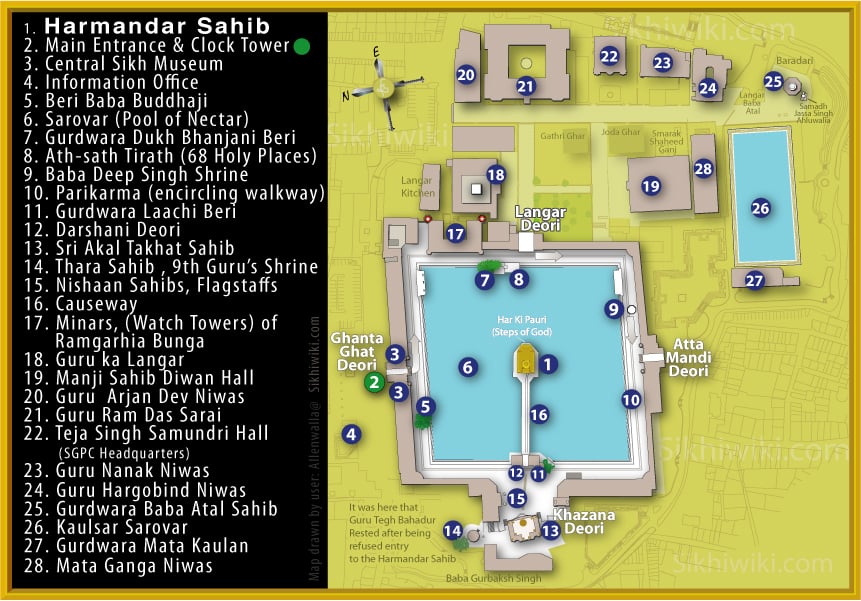 click on the plan to enlarge (by user:allenwalla) The Golden Temple or Sri Harmandar Sahib is the most popular of all Sikh shrines. Sikh places of worship or Sikh shrines are called Gurdwaras. The Sri Harmandar Sahib is located in Amritsar in Punjab, North India. Over the years the city has come to be known by the name of the Holy pool in which the Harmandar Sahib stands. Located in the center of the huge "Amritsar" (the pool of nectar) the Harmandar (sanctum sanctorum) symbolizes the synthesis of nirgun and sargun (the spiritual and temporal realms of human existence) for the Sikhs. The "Mandar" is reached by a causeway from the `swarg dwarn' or Darshini Deori (gateway). .....More Contents: Top 100. 110. 120. 130. 140. 150. 160. 170. 180. 190. 175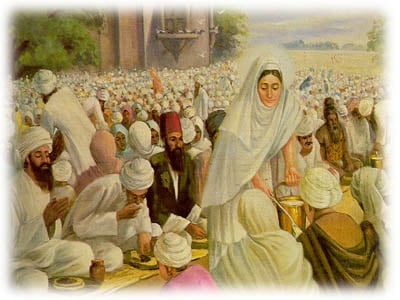 Mata Khivi (1506 - 1582) was born in 1506 to Karan Devi and Bhai Devi Chand Khatri in a small town called Sanghar which is now located in the province of Sindh in Pakistan. Her father was a shopkeeper and trader, and was a popular man in the neighbourhood. His daughter inherited all his finest attributes of generosity and congenial spirit. She was married in 1519, when she was 13 years old. Khivi was married to Lahina for 20 years before he became the second Guru of the Sikhs. There is historical evidence that she had 4 children. Dasu, the eldest was born in 1524. Bibi Amro was born in 1532, followed by Bibi Anokhi in 1535 and son Datu in 1537. The family was content and doing well. As the wife of one of the town's richest men, Khivi must have enjoyed a great deal of respect. Her life was one of luxury and pleasure. .....More Contents: Top 100. 110. 120. 130. 140. 150. 160. 170. 180. 190. 176"Without compassion there is no religion" is a central belief of the Sikhs. The sanctity of this world is held in place by dharam (path of righteousness) which in turn is a product of compassion or daya. Without compassion, this world would turn into hell and neither justice nor righteousness could be found anywhere. The Sikhs consider the Guru a divine spirit which can guide and provide instructions on how to become a better person and a useful member of the sane and saintly society. In the Guru Granth Sahib, the "holy book" of Sikhism, is found the following Shabad or sacred verse:
Contents: Top 100. 110. 120. 130. 140. 150. 160. 170. 180. 190. 177Sheikh Fariduddin ‘Shakar ganj’ (1173 to 1265) popularly known as Baba Farid, or Baba Sheikh Farid Ganj-i-Shakar is regarded as the prime mystic–poet of the Punjabi language. "Baba Sheikh Farid Ganj-i-Shakar" is not a ‘baptised’ name, but a galaxy of venerable modes of address with which Farid-ud-Din; who used Masud as his pen-name, began to be adored after his death by his devotees. With Baba Farid a new star blazed on the horizon of greater Punjab. By his mellifluous poetry he conferred an independent status upon Punjabi, especially in his doha format. Baba Farid’s dohas in inspiringly sweet poetry are highly revered and forever enshrined in the Guru Granth Sahib. Khaliq Ahmad Nizami, Professor of History, Muslim University, Aligarh, in his well documented book, The Life and Times of Slwikh Farid-ud-Din Ganj-i-Shakar (1955) provides comprehensive-information about Shaikh Farid. Farid-ud-Din’s grandfather was a part of the exodus, of scholars, artisans and of other such careerists who ‘considered it expedient to migrate to Northern India from Kabul when Afghanistan was trampled by hordes of Mughals during the eleventh century. The Mughals were given to mass plunder, carnage and arson leading to vandalism. .....More Contents: Top 100. 110. 120. 130. 140. 150. 160. 170. 180. 190. 178The tercentenary celebration of the Guruship of Sri Guru Granth Sahib is to be undertaken on a massive scale in October 2008 at Takhat Sachkhand Shri Hazur Abchalnagar Sahib in Nanded, Maharashtra, India. The historic town of Nanded is an important place in Sikhi because it is where in October 1708, Guru Gobind Singh ended the chain of human Guruship and endowed the spiritual throne to the Holy Granth. The town is also important as Takht Sri Hazur Sahib, one of the five temporal thrones or seats of authority is located here. This is where Guru Gobind Singh, the Tenth Teacher, is known to have meditated on the banks of river Godavari and where he spent his final days. Many other Gurdwaras worldwide will also be celebrating this important milestone in Sikh history with their own special events and festivities. The main Sikh Gurdwara situated in Nanded where the tenth Guru handed over the Guruship to the Guru Granth Sahib is undergoing a huge rebuilding exercise to facilitate the large inflow of pilgrims for this rare, hugely important and once-in-a-lifetime occasion for the Sikhs and also for the whole of the world. Many new facilities are being created to cater for this unprecedented occasion. This event is of great relevance to the worldwide Sikh Community and will involve the remembrance of the 300th years of consecration of Guru Granth Sahib as the final and perpetual Guru of Sikhs as ordained by Guru Gobind Singh in 1708. .....More Contents: Top 100. 110. 120. 130. 140. 150. 160. 170. 180. 190. 179The history of the Sikhs in East Africa begins with the building of the railways in about 1890. The pioneers who were brought over from India to build the old Uganda Railways were skilled workmen - carpenters, blacksmiths and masons. They were quick to adept to the specialised requirements of their new surroundings and many became fitters, turners and boiler-makers. These early Sikhs were soon joined by their educated brothers. Eventually, there was no department within the pioneering Railway industry without Sikhs. A number of policemen, ranging from inspectors to constables, were also sent from India to become the vital instrument of maintaining law and order. They remained in the country for several years. Many, but not all, of the original Sikh pioneers returned to India to be replaced and augmented by others who came of their own choice. Their skills and industry were always in great demand. As Sikhs began to settle in their adopted country a sense of community was imbued by the building of Gurdwaras in all areas of the country where there was a significant number of Sikhs. .....More Contents: Top 100. 110. 120. 130. 140. 150. 160. 170. 180. 190. 180Bhai Himmat Singh (18 January 1661- 7 December 1705), was one of the original Panj Piare (the Five Beloved) the first five Singhs to be initiated into the Khalsa way of life. He was born on 18 January 1661 at Jagannath in a "low-caste" family of water suppliers. He came to Anandpur at the young age of 17, and attached himself to the service of Guru Gobind Singh. Before initiation, he was called 'Bhai Himmat'. He was one of the initial five Sikhs who one by one offered to lay down their heads in response to the Guru's successive calls made at an assembly of the Sikhs especially summoned on the occasion of Baisakhi of 1756 Bk corresponding to 14 April, 1699. He along with the other four received the vows of the Khalsa at Guru Gobind Singh's hands and was given the name Himmat Singh. Bhai Himmat Singh proved himself to be a brave warrior and while at Anandpur, he took part in battles with the surrounding hill chiefs and imperial commanders. He died in the battle of Chamkaur on 7 December 1705 together with Bhai Sahib Singh and Bhai Mukham Singh also members of the historic Panj Pyares. .....More Contents: Top 100. 110. 120. 130. 140. 150. 160. 170. 180. 190. 181I am President and Vice-Chancellor, Thompson Rivers University, Kamloops, British Columbia, Canada. In December 2004 my wife and I visited India for the first time. During that trip, most of which was in Punjab, I noticed that almost everyone wore bangles. I asked my host, Mr. Ron Mundi, about his bangle and he told me the religious reason that Sikhs wore the kara. He also mentioned that he attributed his recent good fortune and good luck to wearing it. Several days later, our group travelled to Amritsar to visit the Golden Temple. While there, I purchased a simple kara for my right wrist. It was my intention to wear it for awhile and then take it off when I returned to Canada several weeks later. On December 24, 2004 my wife and I flew from Delhi to Krabi, Thailand. We spent Christmas Day snorkelling offshore on an island in the Andaman Sea. .....More Contents: Top 100. 110. 120. 130. 140. 150. 160. 170. 180. 190. 182Salok Mahala 9 are the saloks (type of Gurbani composition) by the ninth Sikh Guru, Guru Tegh Bahadur which form the concluding portion of the Guru Granth Sahib. They precede Guru Arjan's Mundavani and appear from page 1426 to 1429 of the Sikh holy Granth. This composition consists of 57 (fifty seven) saloks and spans just 4 pages of the holy Granth. Each salok is a couplet consisting of 2 lines. This Bani was incorporated into the Guru Granth Sahib by Guru Gobind Singh, the last human Guru of the Sikhs. As is commonly believed, they were composed by Guru Teg Bahadur while in the 'Kotwali' (prison) at Chandni Chowk, Delhi, before he achieved martyrdom. These saloks form an important part of the epilogue when bringing to a close the reading of the Guru Granth Sahib (Bhog) on a religious or social occasion and should thus be the most familiar fragment of it, after the Japji Sahib, the Sikhs' morning prayer. Salok, in Sanskrit, signifies a verse of laudation or praise. In Hindi and Punjabi, it has come to imply a couplet with a moral or devotional content. .....More Contents: Top 100. 110. 120. 130. 140. 150. 160. 170. 180. 190. 183Meditation is any practice whose goal is attaining a state of higher consciousness. It is the process of retraining our awareness to operate not from the conscious or subconscious level, but from the level of the super-conscious. Guru Amar Das warns us about our attachment to material things thus: "The three qualities hold people in attachment to Maya. The Gurmukh attains the fourth state of higher consciousness." (SGGS p30). To attain this higher level of consciousness, one has to disengage the mind away from mundane interactions and join it to a much higher level of awareness. When considering awareness, it is clear that man is more aware of his surrounding than animals. Man is conscious of his parents, grand-parents and other relatives while animals in general may not be so conscious about some of the complex relations that they may have. Most animals’ behaviour is driven by their immediate sensory needs while most human behaviour is driven by etiquette and social norms rather than sensory demands. The concept of correctness and fairness has crept in - this can be termed 'consciousness'. .....More Contents: Top 100. 110. 120. 130. 140. 150. 160. 170. 180. 190. 184There are 134 Shabads (hymns) of Sheikh Farid incorporated in the Guru Granth Sahib. Many Sikh scholars ascribe them to Farid Shakarganj (1173 – 1265) of Pak Pattan, a disciple of the Sufi Qutbuddin Bakhtiyar Kaki. The tenth in succession to his post was Shaikh Brahm (Ibrahim), also known as Farid Sani or Farid the 2nd, and it is this Farid who Guru Nanak Dev met on two occasions. Baba Farid is recognised as the first major poet of the Punjabi language and in recognition of his exalted status, the district of Faridkot in Punjab, northern India is named after him. Baba ji was a Muslim with a predominantly Sufi background. Farid ji has been honoured by the Gurus of Sikhism and his verses were collected and subsequently compiled into the Sikh holy book, Guru Granth Sahib (normally referred to as Gurbani) under three different sections as detailed below:- First section: The first section consists of two shabads in Raag Asa at page 488 in the Guru Granth Sahib. The Bani starts " Aasaa, The Word Of Shaykh Fareed Jee:" "They alone are true, whose love for God is deep and heart-felt." .....More Contents: Top 100. 110. 120. 130. 140. 150. 160. 170. 180. 190. 185
The Sikh scriptures have said great many things about the Universe. However, although Gurbani has been in existence since about 1499 and the Guru Granth Sahib has been the Guru of the Sikh since 1708, the world has not been listening. It is clear that there is very little that the world has learnt from the important points mentioned in the Sikh holy text regarding the cosmos. Carl Sagan (1934 – 1996) was an American astronomer, astrochemist, author, and highly successful popularizer of astronomy, astrophysics and other natural sciences. He was the David Duncan Professor of Astronomy and Space Sciences and Director of the Laboratory for Planetary Studies at Cornell University. He was a consultant and adviser to NASA since the 1950's and briefed the Apollo astronauts before their flights to the Moon. .....More Contents: Top 100. 110. 120. 130. 140. 150. 160. 170. 180. 190. 186The Sikh holy scriptures are perhaps the most recent historic religious text that can be rightly categorised as having 'inter-faith' and 'multi-faith' dimensions from inception. The Sikh scriptures are unique among the religious "Holy Books" of the world in that they don't just offer spiritual guidance for their own adherents alone but impart guidance and assistance for all the peoples and religious factions of the world. Many world renowned scholars have recognised the Siri Guru Granth as a supreme treasure for all of mankind. It is accepted by all that the Granth is the true and permanent spiritual guide of the Sikhs; but it has not as yet been generally recognised that it is also a true spiritual guide for all of humanity. Guru Granth Sahib transcends creed and caste, cant and convention. It does not belong to the Sikhs alone. Considering Islam in particular, perhaps no other historical Islamic verse holds such strong contempt for Muslims who fail to carry out the daily Nimaz as can be attributed to Hazrat Baba Sheikh Farid as recorded in the Shri Guru Granth Sahib. Baba Farid ji was a Muslim whose many verses are preserved only in the holy Granth and cannot be found elsewhere. He was an enlightened soul from the Almighty Lord who left a common message for everyone to learn from. .....More Contents: Top 100. 110. 120. 130. 140. 150. 160. 170. 180. 190. 187Originality and clarity of the Sikh faith was instrumental in promoting it from its inception in about 1499 and the voluntary adoption by the masses with eagerness and whole-heartedness. Equality, non-discrimination, true justice, and worship of only One God, are basic values that are well-known and gave the world a simple and universal faith. Today, some 540 years after the birth of the founder of Sikhi, Guru Nanak, it has more than twenty two million followers, and is the fifth largest faith in the world. Sikhi is respected world over and is known as a religion of peace and unity of mankind. The Sikhs have only fought wars to defend themselves or others but are probably the only section of society that have never fought wars as aggressors. For the Gurus promoted all human beings as one and the same, and they are all above discrimination. The Gurus showed real love for all of humanity. Muslims were equally dear to them as Hindus, or any others. It is well known that Bhai Mardana a Muslim, spent his whole adult life with Guru Nanak, accompanying Guru with his Rabab as a musician and the Guru's closest companion everywhere that the Guru went. .....More Contents: Top 100. 110. 120. 130. 140. 150. 160. 170. 180. 190. 188
We find today the whole world burning in the fire of greed and hatred. Everyday we read the reports of bloodshed and the loss of innocent lives. There are some people in the world committing suicide to kill their opponents. So the cycle of revenge escalating evermore on a daily basis. The circle of casualty is increasing daily and it is coming in our direction. One day, it will hit us! What then? Knowing this, still most people are too involved in their own everyday little problems and daily struggles to even take a few minutes to stop and think. You probably are thinking right now to stop reading this article. You are thinking I have many other things to do. I need to do X then Y then Z; I will read this later when I have finished X, Y and Z. Right! Well, that is how the world has got into this diabolical state. .....More Contents: Top 100. 110. 120. 130. 140. 150. 160. 170. 180. 190. 189Gurdwara Pathar Sahib, is a beautiful Gurudwara sahib constructed in the memory of Guru Nanak, about 25 miles away from Leh, on the Leh-Kargil road, 12000 ft above sea level. The Gurdwara was built in 1517 to commemorate the visit to the Ladakh region of Guru Nanak Dev, the founder Guru of the Sikh faith. During his lifetime Guru Nanak travelled to many distant places and one such place was Tibet. Guru Nanak is well respected by Tibetan Buddhists who consider him a saint; The Dalai Lama, spiritual leader of Buddhists in Tibet, has confirmed this in his discussions with some Sikh leaders saying that Tibetans revere Guru Nanak as a Buddhist saint under the name of Guru Gompka Maharaj. Discovery: In the late 1970s, during the construction of the Leh-Nimu road, a large boulder was found by Lamas in the middle of the road bed covered with Buddhists prayer flags. .....More Contents: Top 100. 110. 120. 130. 140. 150. 160. 170. 180. 190. 190
In this Shabad on page 1075 of the Sikh holy Granth, the fifth Sikh master, Guru Arjan Dev tells how important it is to sing Kirtan in this age of Kaljug. Kirtan is the singing of the Lord's praises with the accompaniment of musical instruments. The Sikhs regard the Guru Granth Sahib as their perpetual spiritual guide. At the same time, it is a holy Scripture for all mankind that embodies the revealed truth applicable to all the human race. The holy Granth enshrines the wisdom of many spiritual masters of the East and is the most recent endeavour to allow us to experience the Divine. Although Kirtan refers to any singing of the Lord's praise, for the Sikhs, it is the singing of hymns (Shabads) from their holy Scriptures. .....More Contents: Top 100. 110. 120. 130. 140. 150. 160. 170. 180. 190. 191A close friend of mine, Professor Jap Singh, a professor at a Ludhiana university, narrated this episode to me about two decades ago. I repeat below what my friend described to me: Professor: "You know, I contribute regularly for gurdwara (Sikh temple) functions. One year, special Gurpurb celebrations were arranged by the campus residents of the Panjab Agriculture University, Ludhiana. The organisers as usual visited me for my contribution. I usually gave 25 rupees every time they came for collection. They told me, “This will be a special function, we want a bigger contributions from you this time, Professor. Mr. ABC (a clerk) paid 20 rupees.” I took this as a signal for me to double my contribution. However, keeping my recent promotion and position at the University in mind, I contributed one hundred rupees. The members were very pleased since they expected only 50 rupees. When the organisers left, my ego overtook me, “Look! I am a great Sikh. This contribution will draw God’s attention and He will give me special rewards for this donation.” On the day of the special Gurpurb, I deeply regret and am embarrassed to tell you (I know you won’t reveal my name to others) what went through my mind. When I went through the aisle to pay my respect to the Guru Granth Sahib, I could not help looking at the Sangat already sitting there. Drenched in my ego, I said to myself, “This person would have paid only five rupees; this teacher might have given ten rupees; .....More Contents: Top 100. 110. 120. 130. 140. 150. 160. 170. 180. 190. 192The Komagata Maru was a Japanese steam liner, that was chartered by an affluent businessman, Gurdit Singh, to bring Indian immigrants to Canada in 1914. It began its journey from Hong Kong, sailed to Shanghai, China, then to Yokohama, Japan, and then on to Vancouver, British Columbia Canada where it arrived in Burrard Inlet, near Vancouver, on May 23. This journey took place in 1914, carrying 376 passengers from Punjab, India. During the period before 1920's the whole of North America has a policy of discrimination against coloured races which was thinly disguised to appear as something else. The dominate white governments of USA and Canada were determined not to allow the flow of Asians, whether so called 'yellow', 'brown' or 'black' immigrants. In the year 1900 the census reported 2050 people from India on the North American continent. The majority of these Indians were Punjabis who had settled in Canada in the hope of finding work so that they could improve their economic situation from what it had been in the Punjab. .....More Contents: Top 100. 110. 120. 130. 140. 150. 160. 170. 180. 190. 193Harshdeep Kaur (born December 16, 1986) is a popular playback singer in India. Harshdeep was born in a Sikh family in Delhi and inherited her music from her father, Savinder Singh, who owns a factory which makes musical instruments. Apart from studying, she started learning music at the tender age of six. She and her family are committed Sikhs and her presence on the Lux Junoon show in 2008 wearing a turban which is an important symbol of Sikhism was appreciated by millions of people across the globe. Also she was faithfully support throughout the many shows in the contest by both her parents; her father wearing the customary turban and long kesh as ordained by the tenth Sikh master, Guru Gobind Singh. She learnt Indian Classical Music from Shri Tejpal Singh, popularly known as the Singh Brothers, and western Classical Music from George Pullinkala at the Delhi Music Theatre. Contents: Top 100. 110. 120. 130. 140. 150. 160. 170. 180. 190. 194The Sikh organisation, UNITED SIKHS launched the "Feed the Hungry" campaign back in February 2009. This campaign brought winter solace to many homeless in Toronto, Canada. Like other Sikh bodies, this step follows the tradition of Langar (serving of free food) which was first introduced by the founder of Sikhism, Guru Nanak during the late 1400's. "Under the "Feed the Hungry" campaign, UNITED SIKHS will work with locally based Gurdwaras (Sikh place of worship), to feed and clothe the needy from all communities around the world. To date 10 Gurdwaras in Ontario have agreed to participate in this campaign," said Charankamal Singh, Sikh Aid Director of UNITED SIKHS (Canada). This is just the beginning. It is hoped that many such hundreds of projects will be initiated all over the world with the many thousands of Gurdwaras around the world taking part. On the crisp cold morning of 20th February, 2009 the Parkdale Recreation Centre of downtown Toronto was filled with sewadars (volunteers) wearing a dastaar (a Sikh turban), who were serving hot-meals, beverages and distributing warm clothes. .....More Contents: Top 100. 110. 120. 130. 140. 150. 160. 170. 180. 190. 195Guru Tegh Bahadur Ji (Gurmukhi: ਗੁਰੂ ਤੇਗ ਬਹਾਦੁਰ) (April 18, 1621 - November 24, 1675) was the ninth of the Ten Gurus of Sikhism and became Guru on September 16, 1665 following in the footsteps of his grand-nephew, Guru Har Krishan. Before Guru ji left his body, he nominated his son, Gobind Rai – who later in 1699 was given the name - Guru Gobind Singh, as the next and as he turned out the last Guru of the Sikhs – in human form. The following is a summary of the main highlights of Guru Tegh Bahadur's life:
Contents: Top 100. 110. 120. 130. 140. 150. 160. 170. 180. 190. 196Guru Nanak (1469-1539) promulgated a unique and universal philosophy of humanism in the Indian sub-continent as the renaissance was taking place in Europe (14th to 16th centuries) and scientists were challenging illogical religious concepts and beliefs. The Guru carried his message far and wide to South Asia and the Middle East. He held discussions with religious leaders: Hindus—(Brahmans, Sidhs and Jogis), Muslims—(Sufis, mullahs and Qazis), Jains and Buddhists in India, the Middle East, Tibet and Ceylon (Sri Lanka), etc During his travels (odysseys, Udasis) Guru Nanak challenged the ancient mythology, wrong religious concepts and rituals with which the peoples of South Asia and Middle East were shackled for centuries. People were unable to express their freewill in any aspect of their lives because their lives were controlled by their religious and political authorities. Guru Nanak launched his movement to liberate the masses form ignorance and religious and political tyranny. His philosophy, termed as ”Nanakian Philosophy‘, is embodied in his Bani (Word), which has been incorporated in the Aad Guru Granth Sahib (AGGS). .....More Contents: Top 100. 110. 120. 130. 140. 150. 160. 170. 180. 190. 197Guru Nanak, the founder of the Sikh religion, like the Buddha earlier, sowed the seeds of spiritual democracy. The process of its germination and growth is still in progress and continues to flourish due to the Guru's message for the world at large, conveyed through his writings and personal visits to the then known countries of the Asian sub-continent. This article examine the historical facts relating to Guru Nanak's visit to Sri Lanka. The Guru, possessing neither territory, nor wealth, nor aided by the forces of arms, preached his doctrine of peace in the countries during the course of his travels including Sri Lanka. It is clear from recent research to conclude that much evidence, in both written and oral traditions, is available with regard to Guru Nanak's travels, beyond the limits of Hindustan (India), including Sri Lanka, then known as Simhal Dweepa, to spread his message of virtues and righteousness. Matiakullam, a town in Sri Lanka, visited by Guru Nanak sahib and Bhai Mardana; at the time of the visit of the Guru, present-day Baticulla was known as Matiakullam. Raja Shiv Nabh ruled this area. .....More Contents: Top 100. 110. 120. 130. 140. 150. 160. 170. 180. 190. 198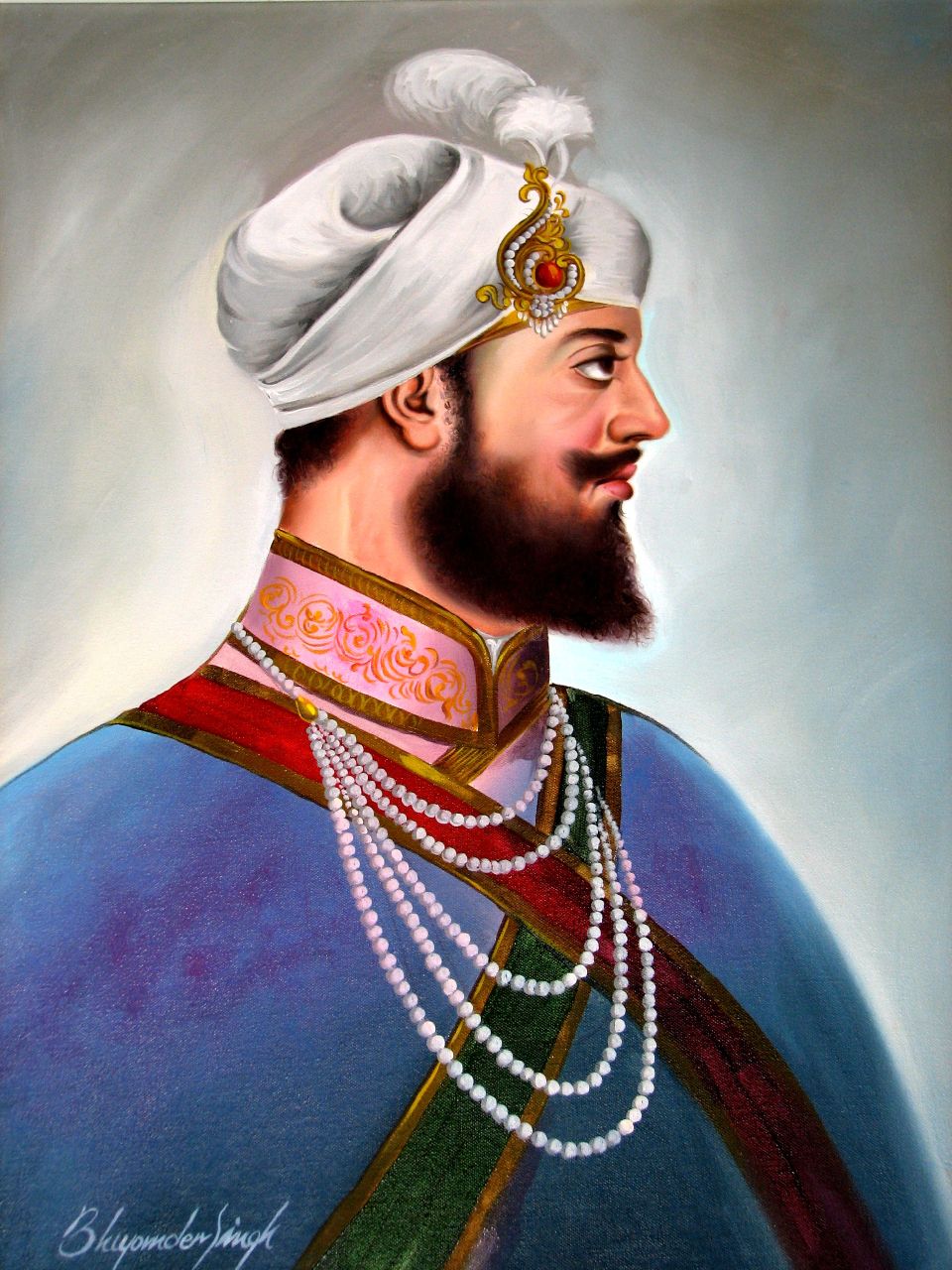 For many years now, the Sikh community worldwide has honoured the sixth Guru's vision of Miri and Piri, celebrating this vision on 21 July every year by calling this day, Miri Piri Divas. Miri: This word has been derived from the Persian word - “miri”, which itself comes from the Arabic “amir” which literary means commander, governor, lord, prince, etc, and signifies temporal power, "political" or "material" power. Piri: This word has also been derived from the Persian word - “pir” literary meaning saint, holy man, spiritual guide, senior person, head of a religious order and stands for spiritual power or moral authority. In Sikhi, the words miri and piri are frequently used together. Miri Piri: The adoption of the term “miri piri” in the Sikh tradition has been made to connote the temporal and spiritual components of life; the materialist concept of human existence and the spiritual aspect of human life. .....More Contents: Top 100. 110. 120. 130. 140. 150. 160. 170. 180. 190. 199International Turban Day is celebrated on April 13th every year. This event was started in 2004 to bring awareness of the strict requirement on Sikhs to don the turban as a mandatory part of their religion. In the West since 9/11 in 2001, the turban, has attracted negative attention due to the wrongful linking of this garment with Osama bin Laden, the Muslim leader of al Qaeda who has often been pictured wearing a turban. Due to the vast news and media coverage of Osama bin Laden following 9/11, many men wearing a turban and beard and Punjabi styled clothing articles (long vest or longer shirt) have been looked upon with suspicion, with some innocent people even being killed or wounded by uninformed and even deranged westerners bent on revenge, who just assumed that any bearded man, wearing a turban and beard was a Muslim. However, this perception is wrong, as the vast majority of people in Western countries who wear turbans are actually Sikhs. Given that many thousands of Sikhs died fighting against the same sort of Muslim fundamentalist terrorists that bin Laden's group al Qaeda and the Taleban espouse today, the irony of such an uninformed assumption is tragic, especially since most Muslims living in the West do not wear turbans. .....More Contents: Top 100. 110. 120. 130. 140. 150. 160. 170. 180. 190. | ||||||||||||||

